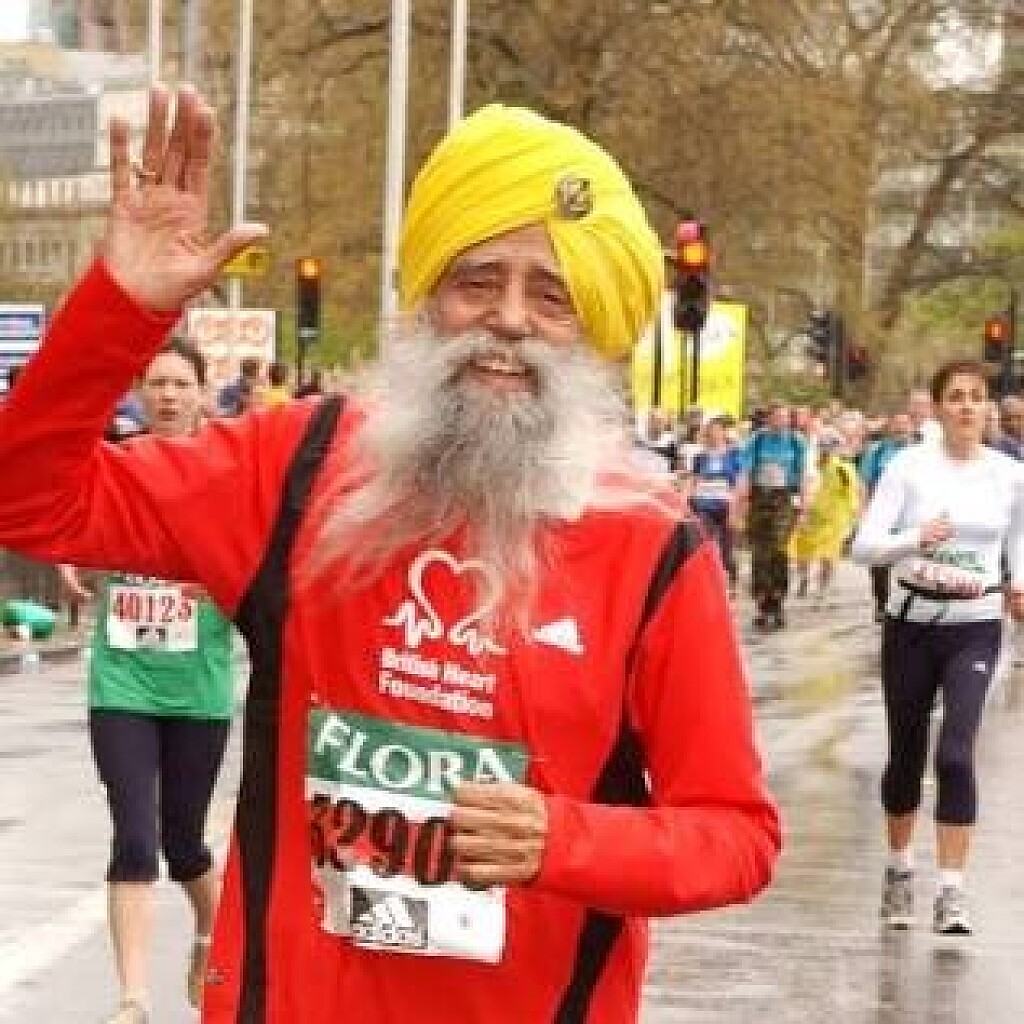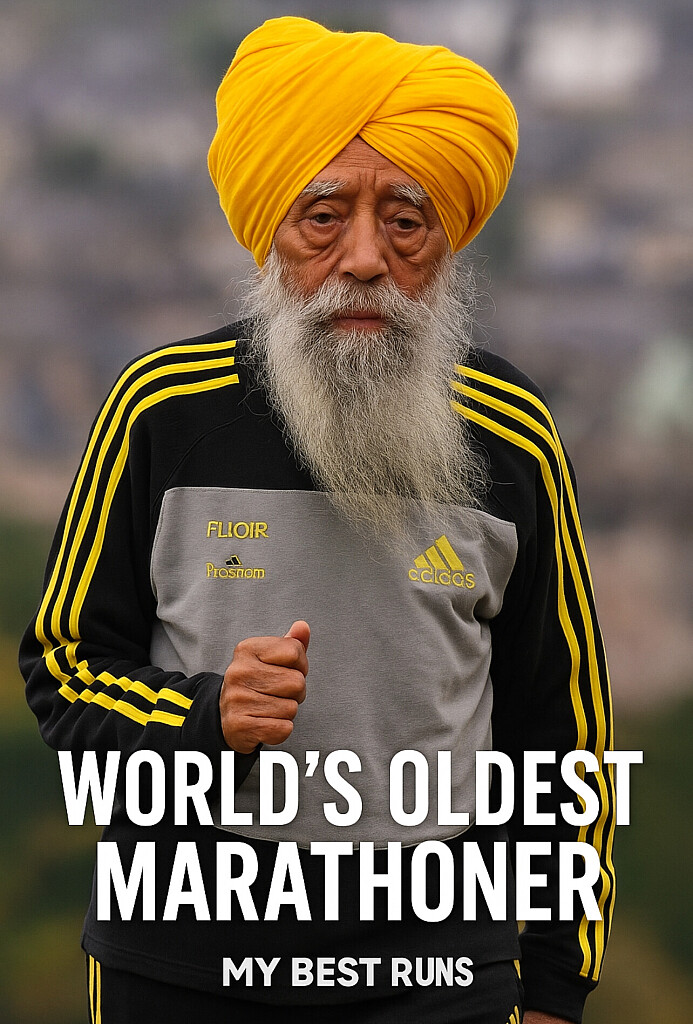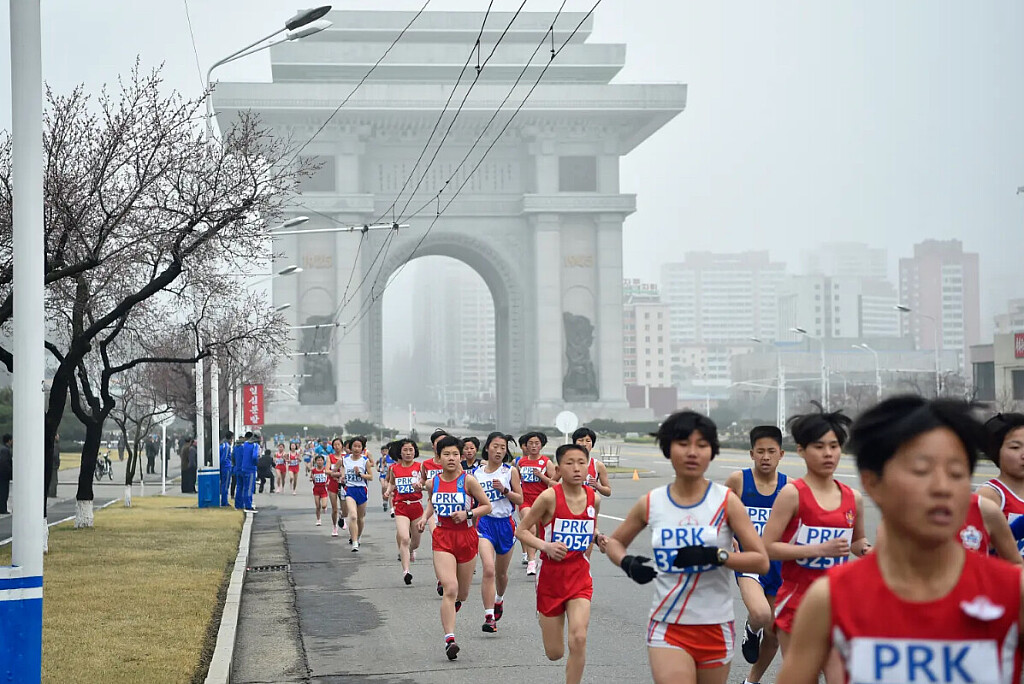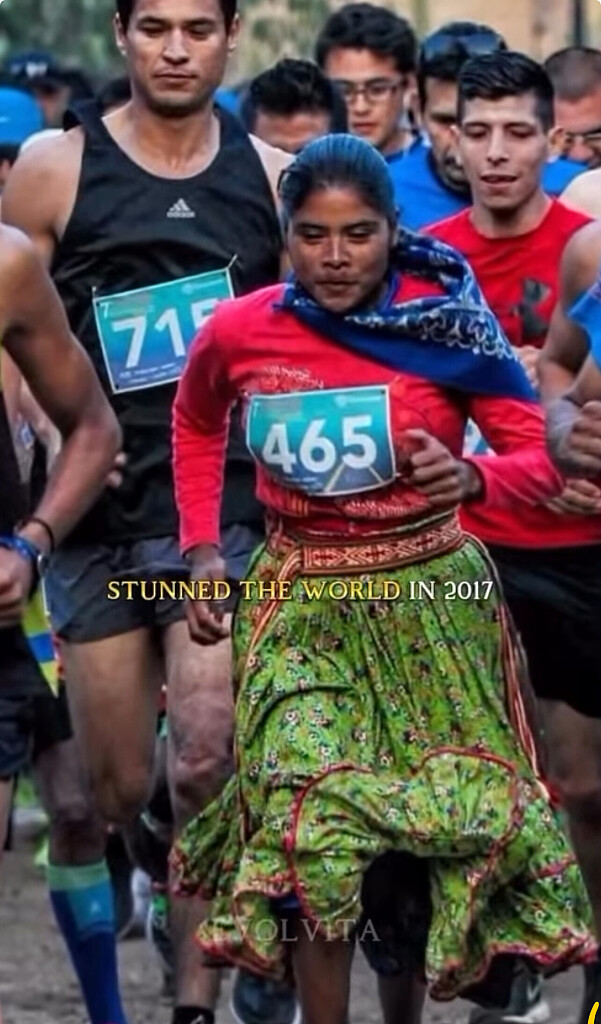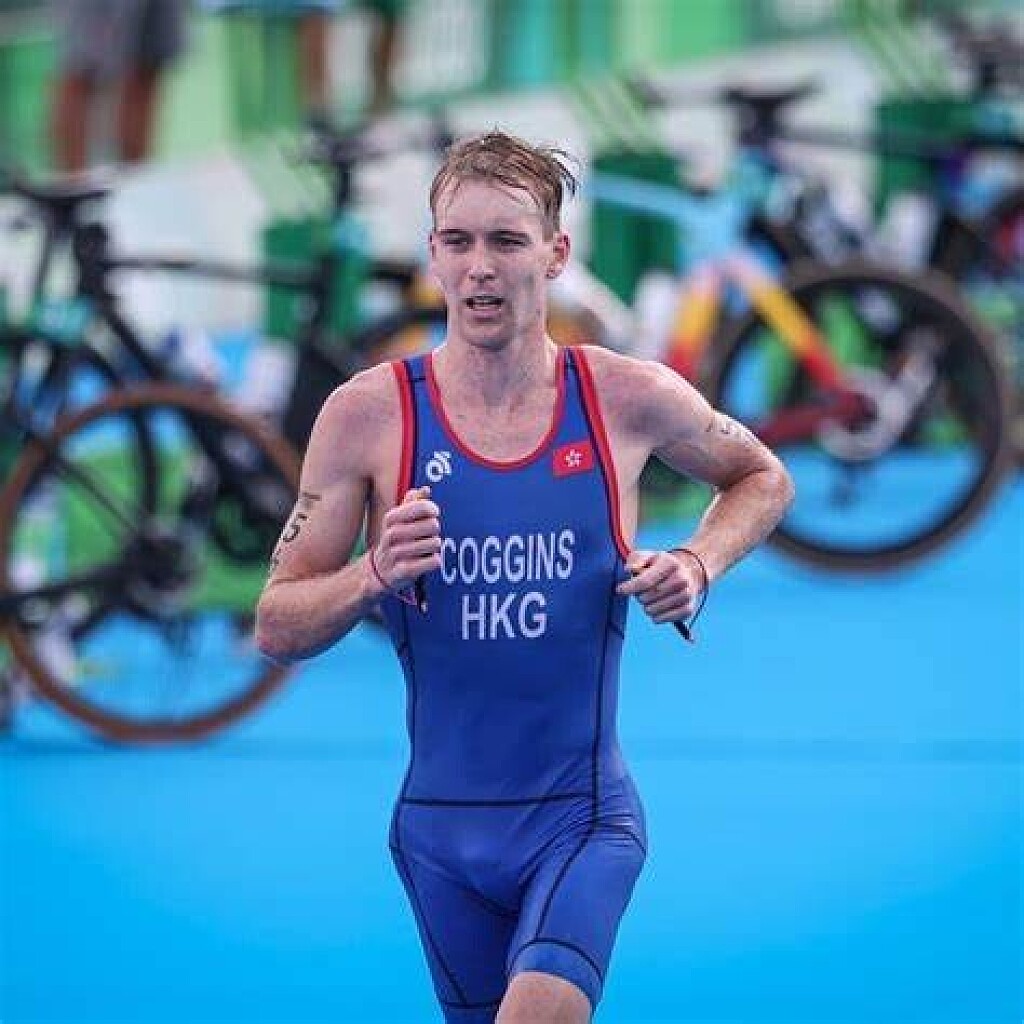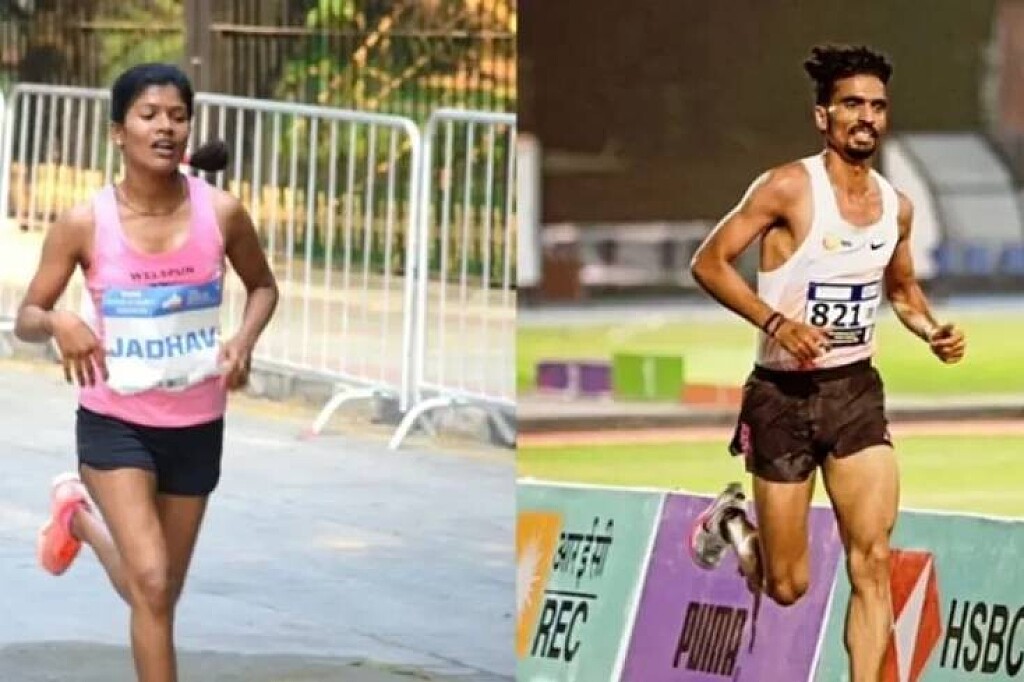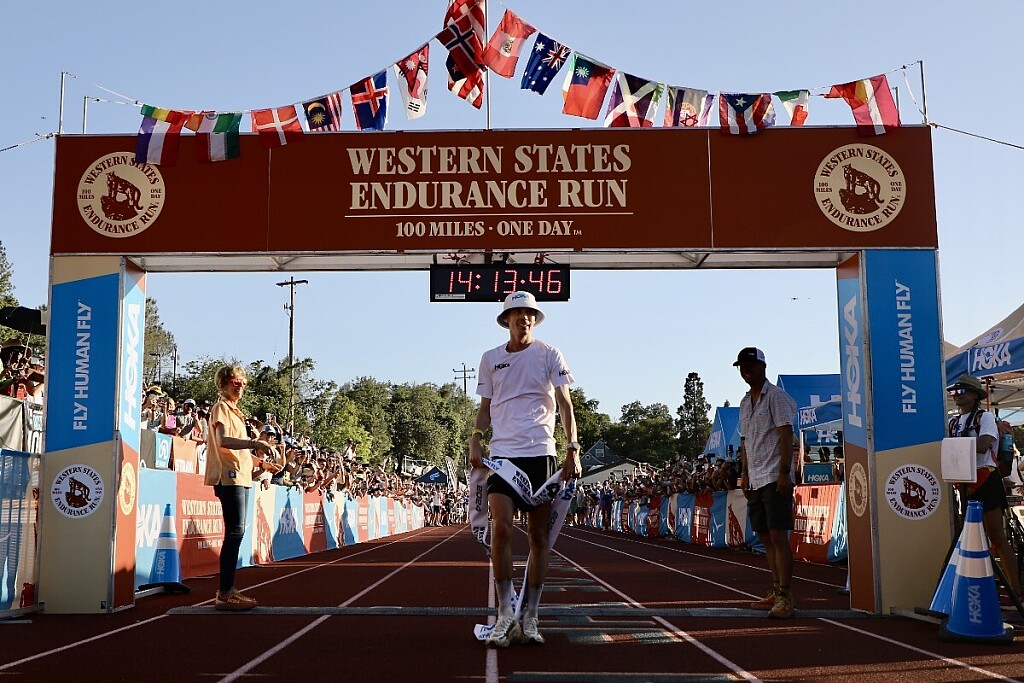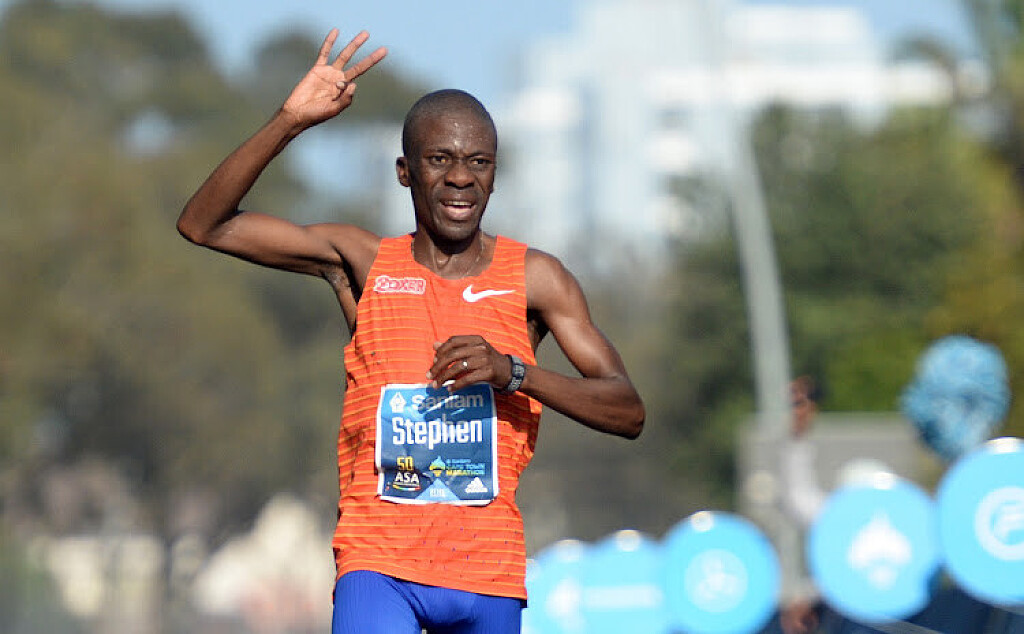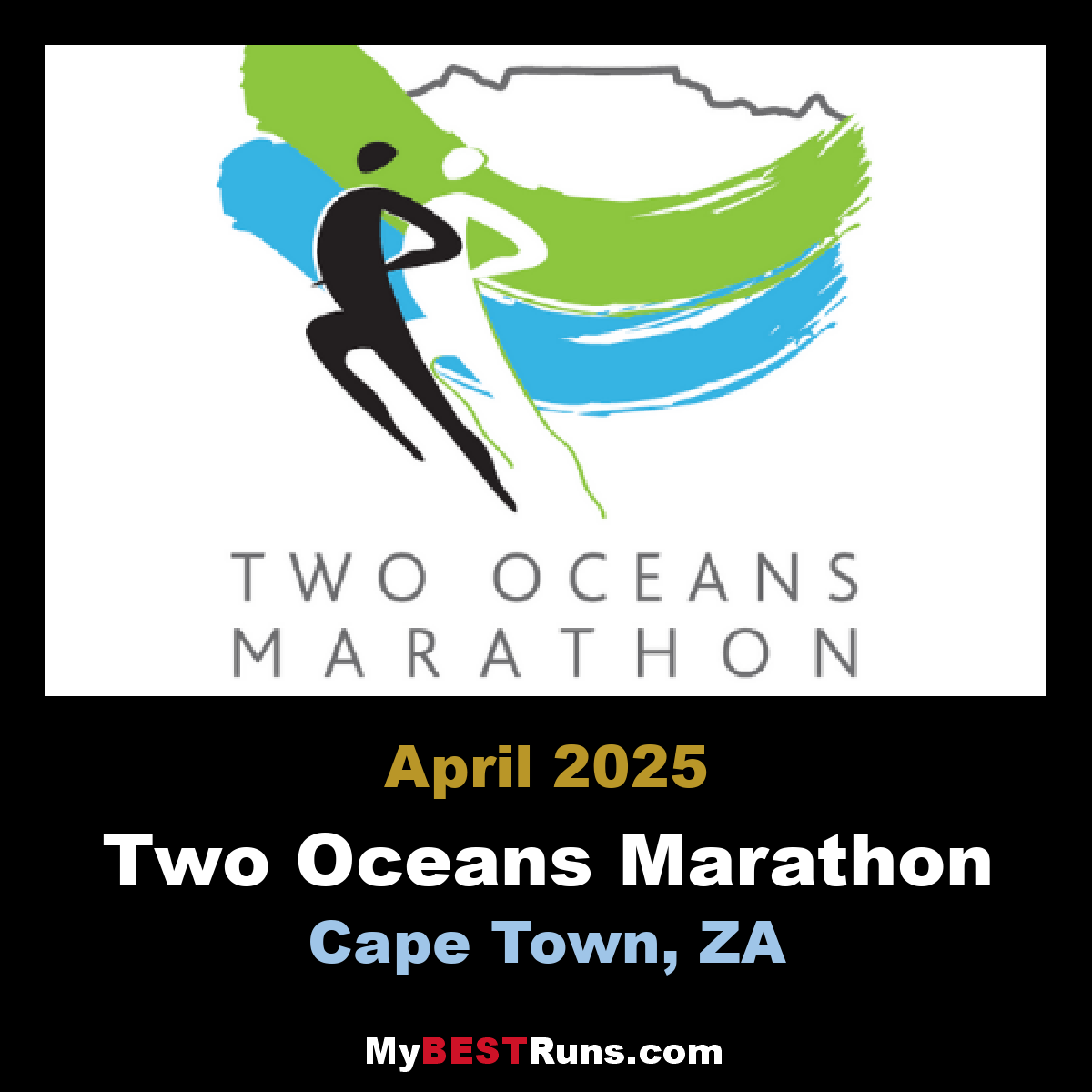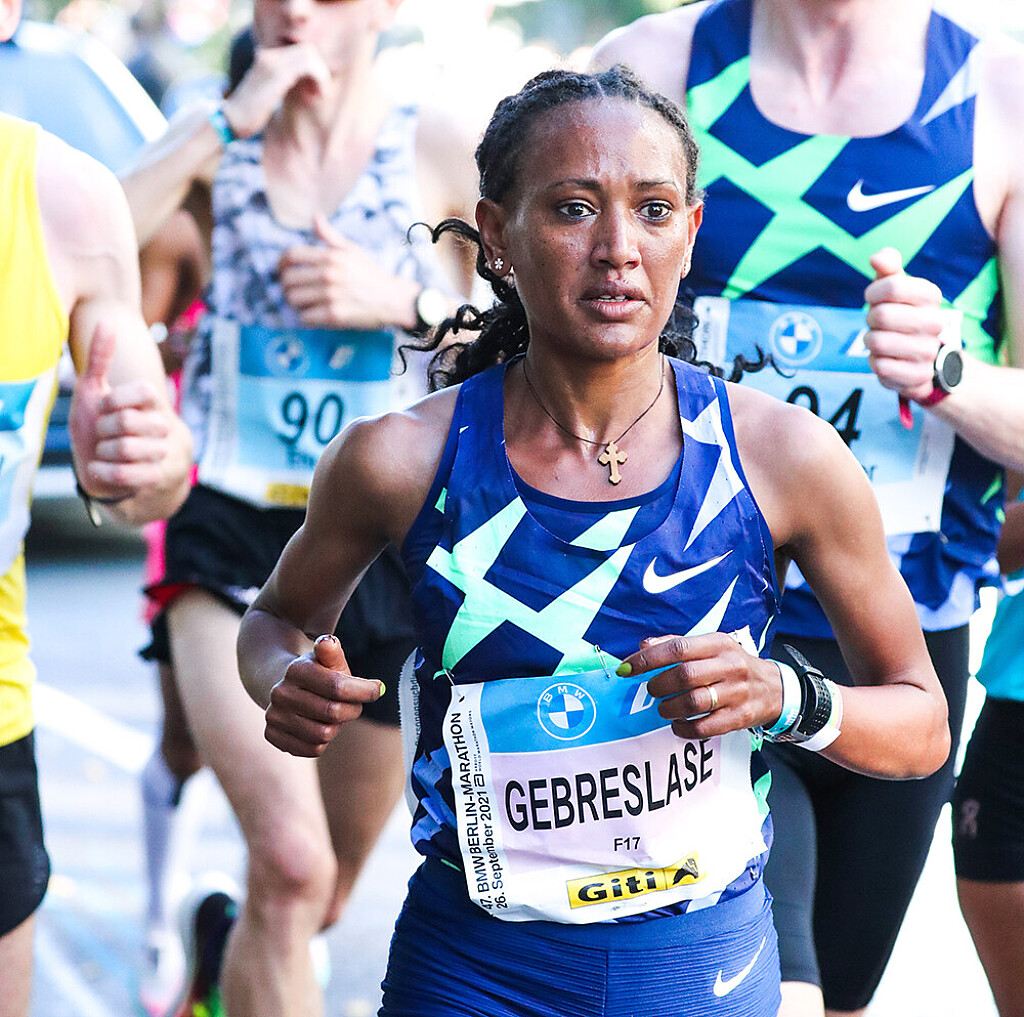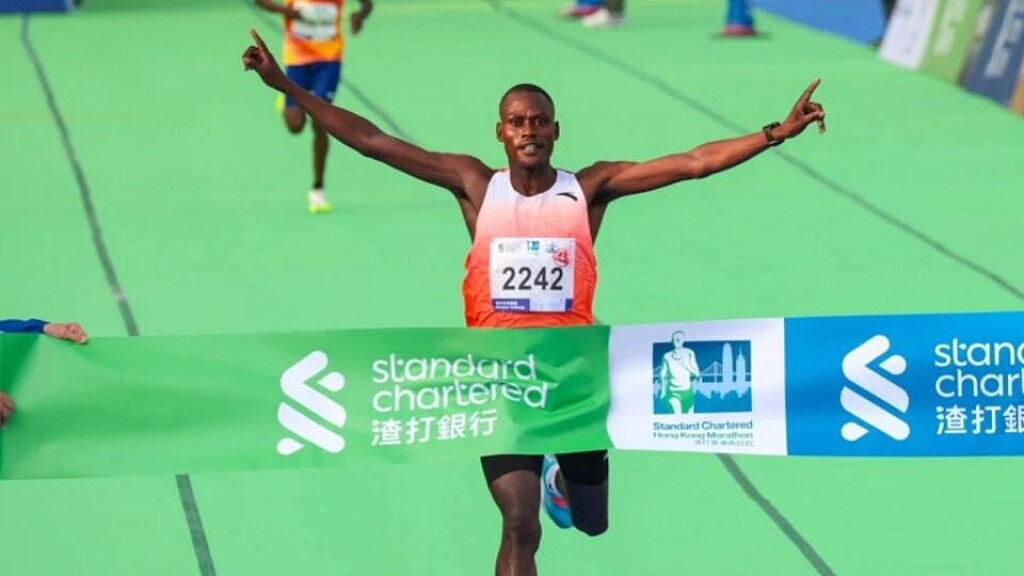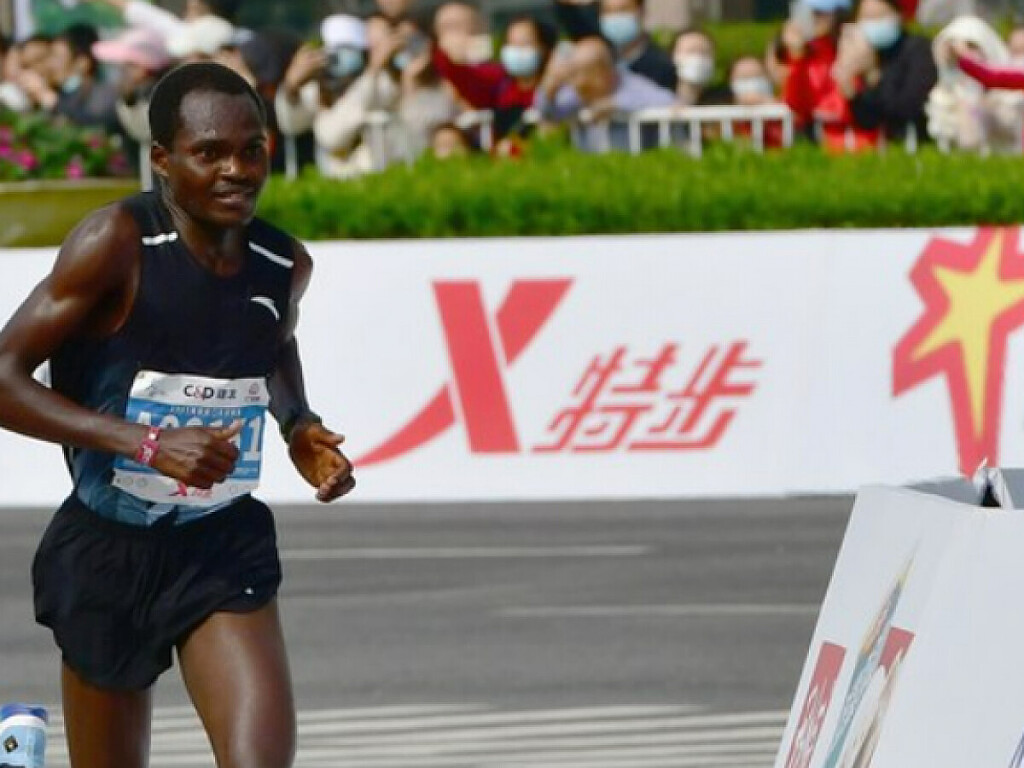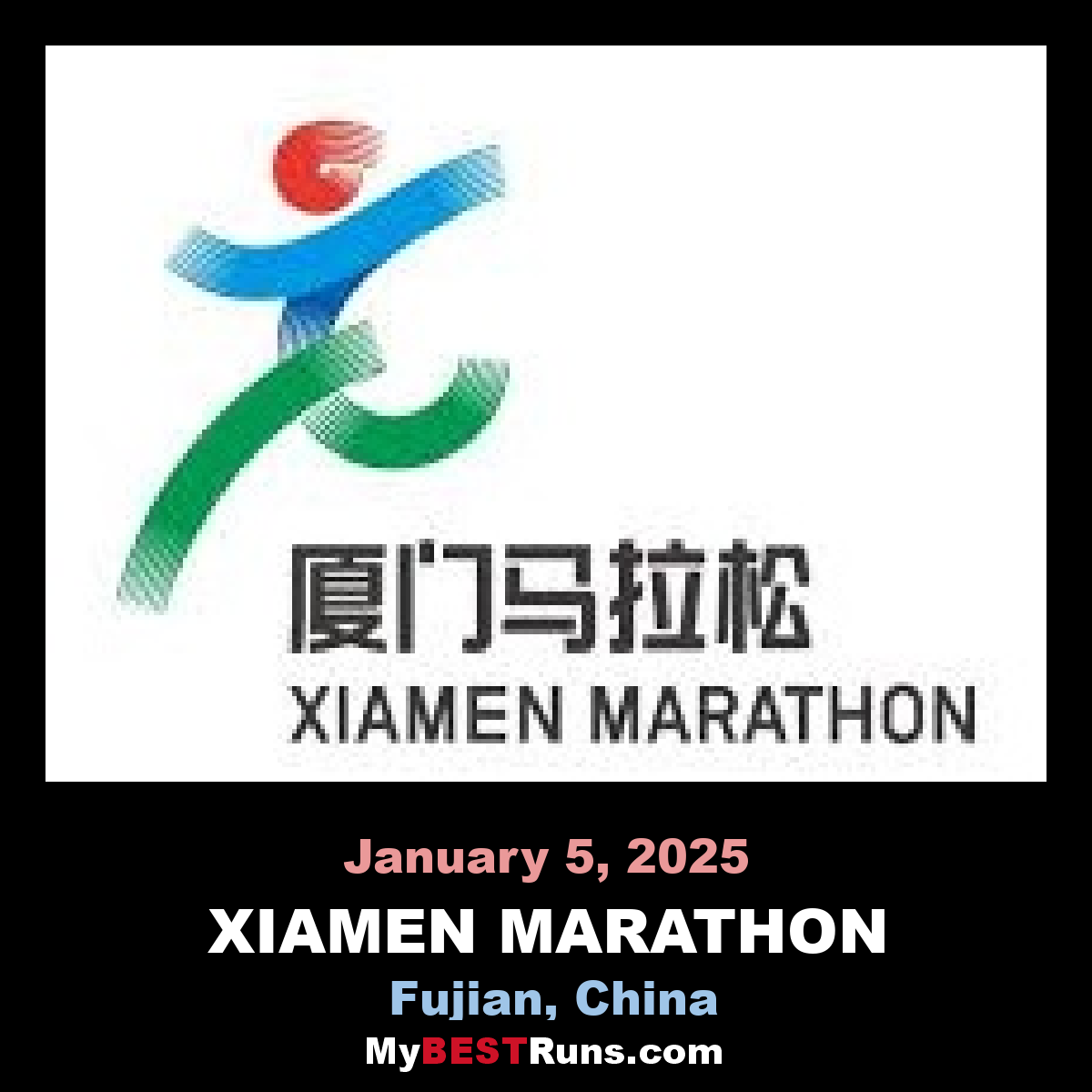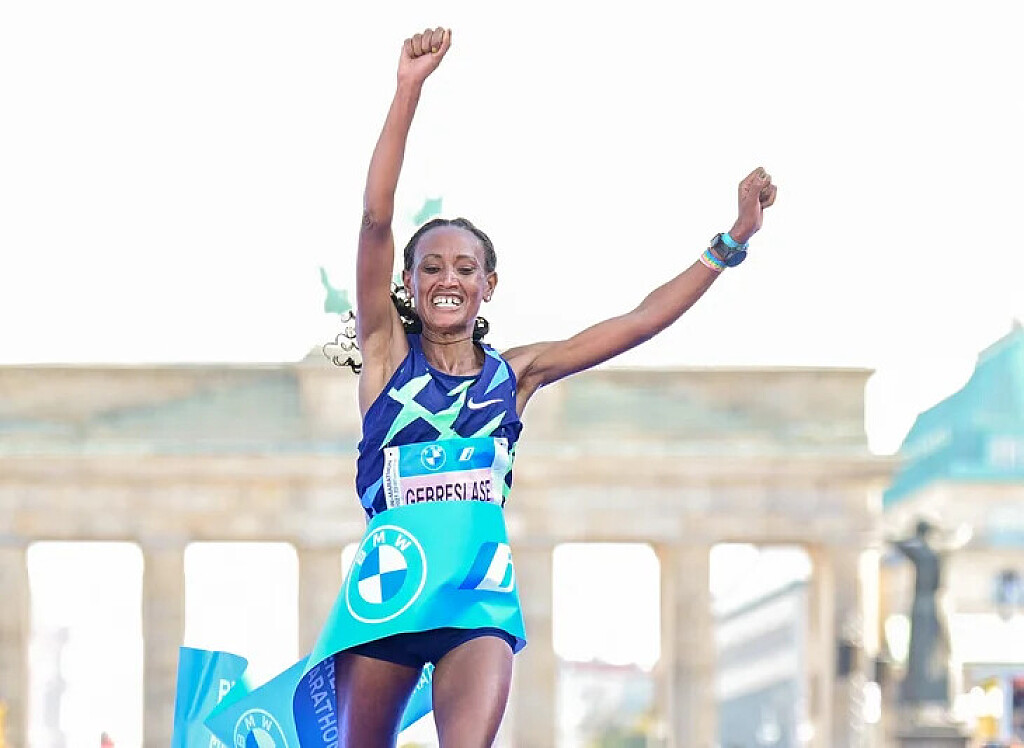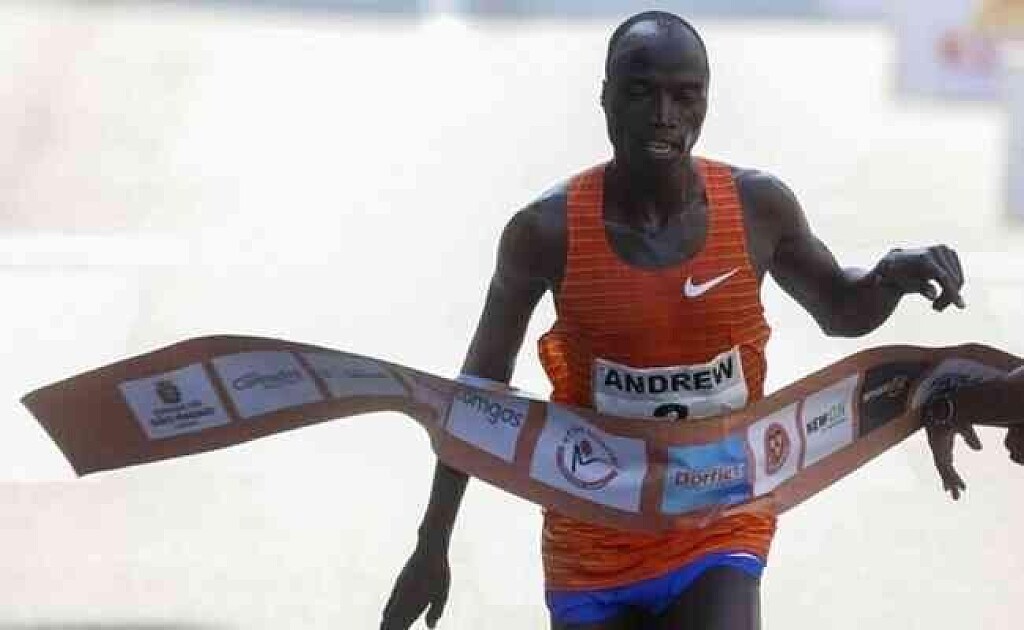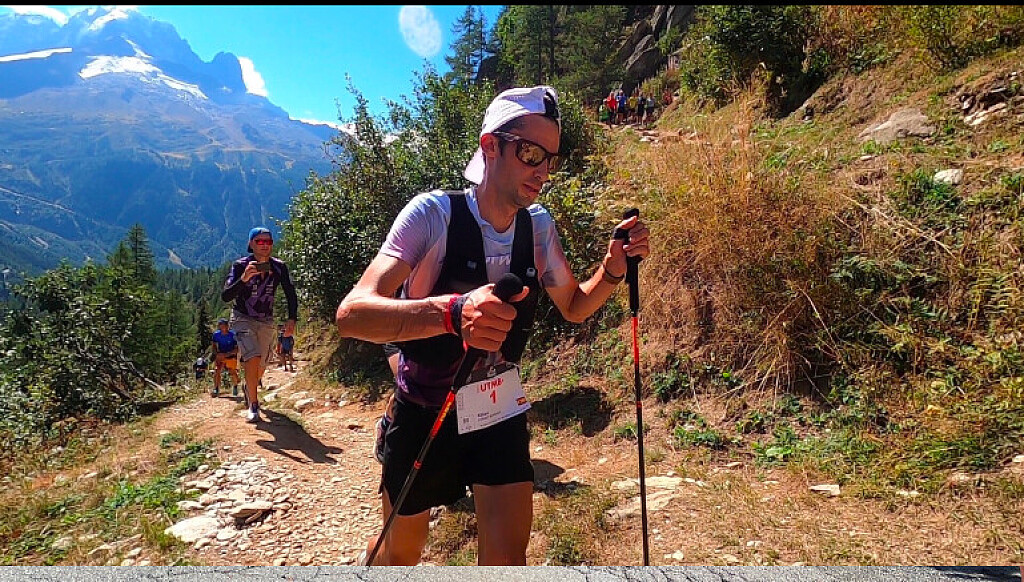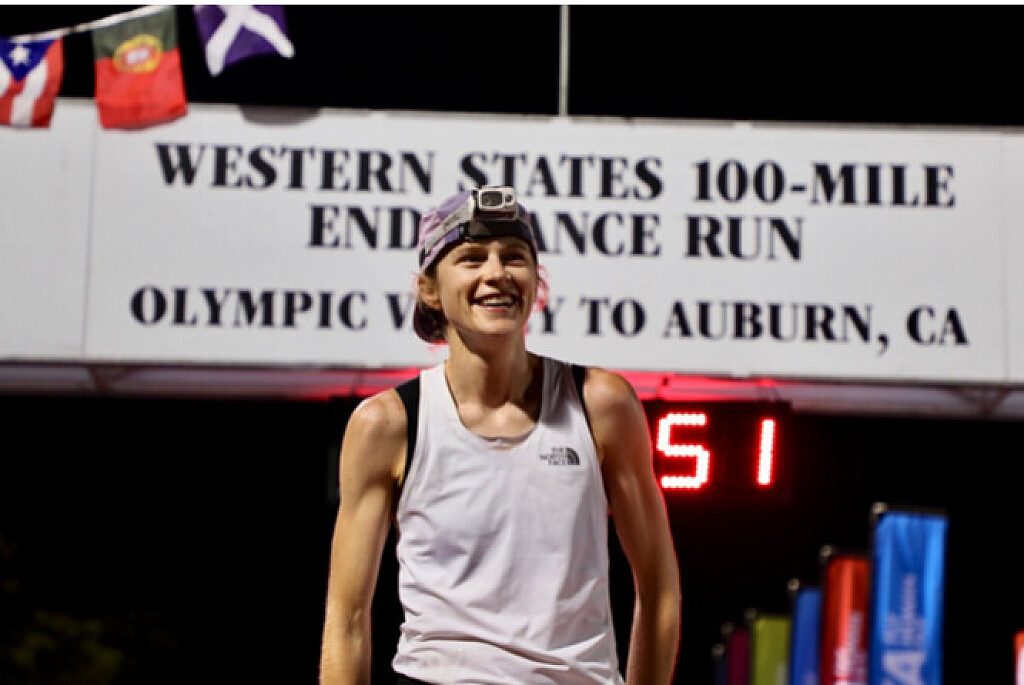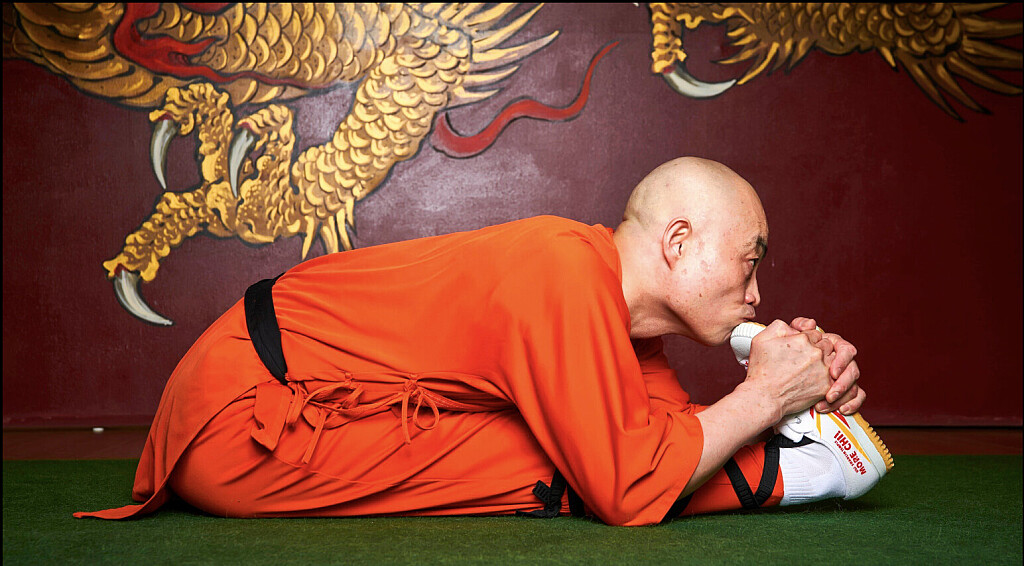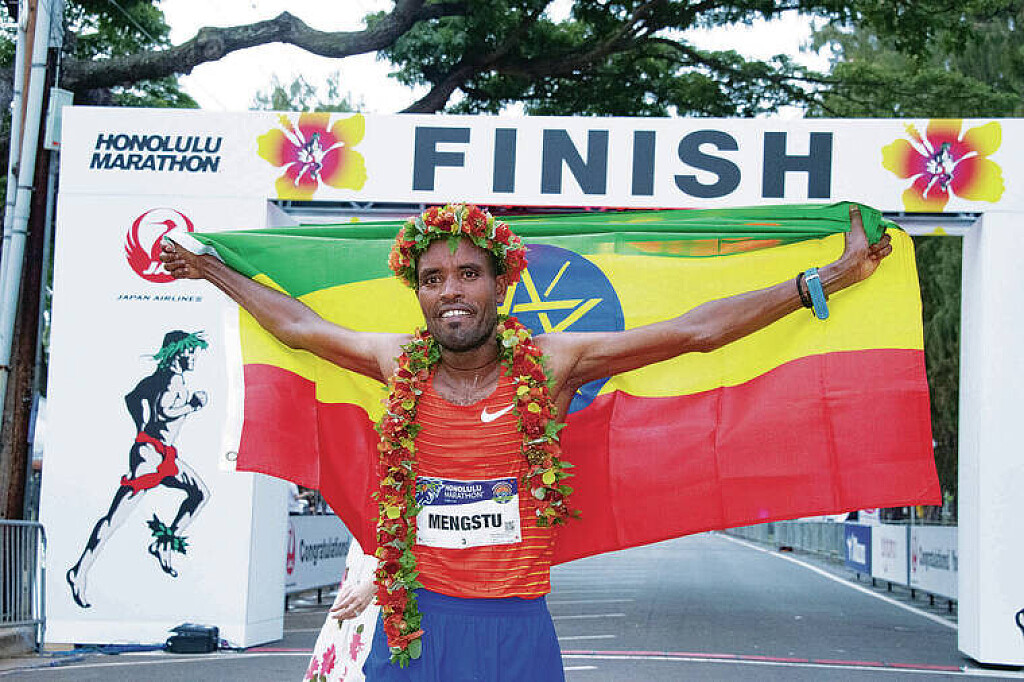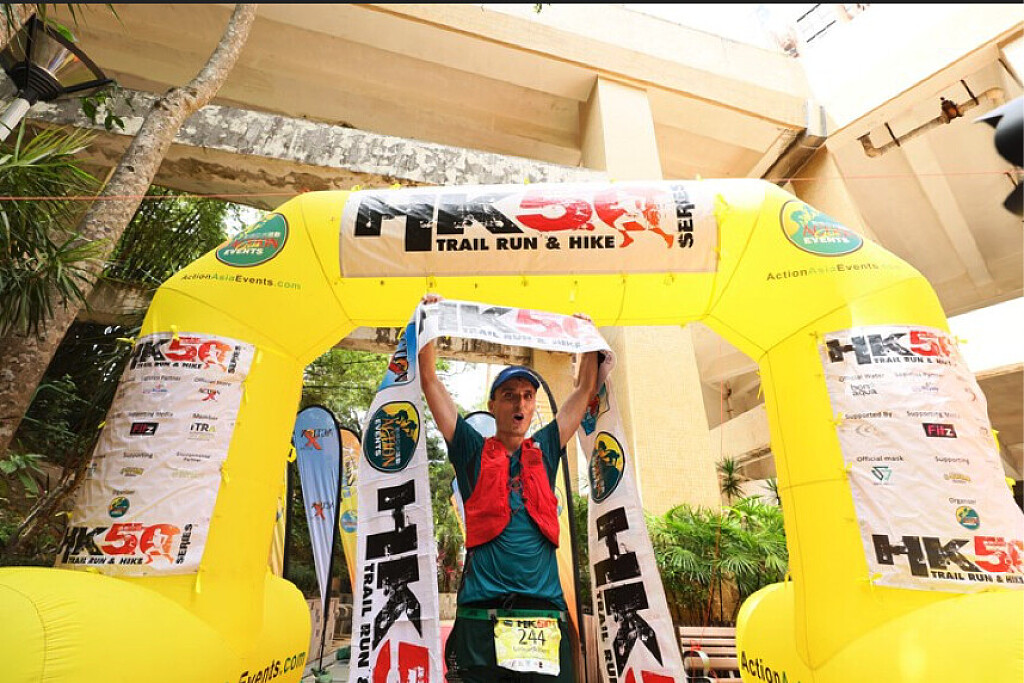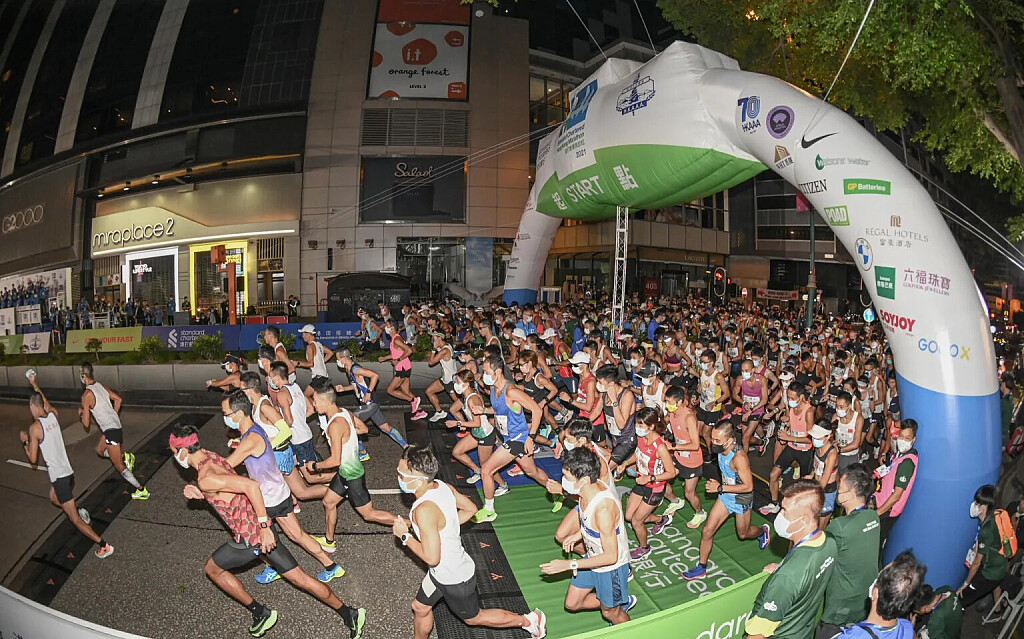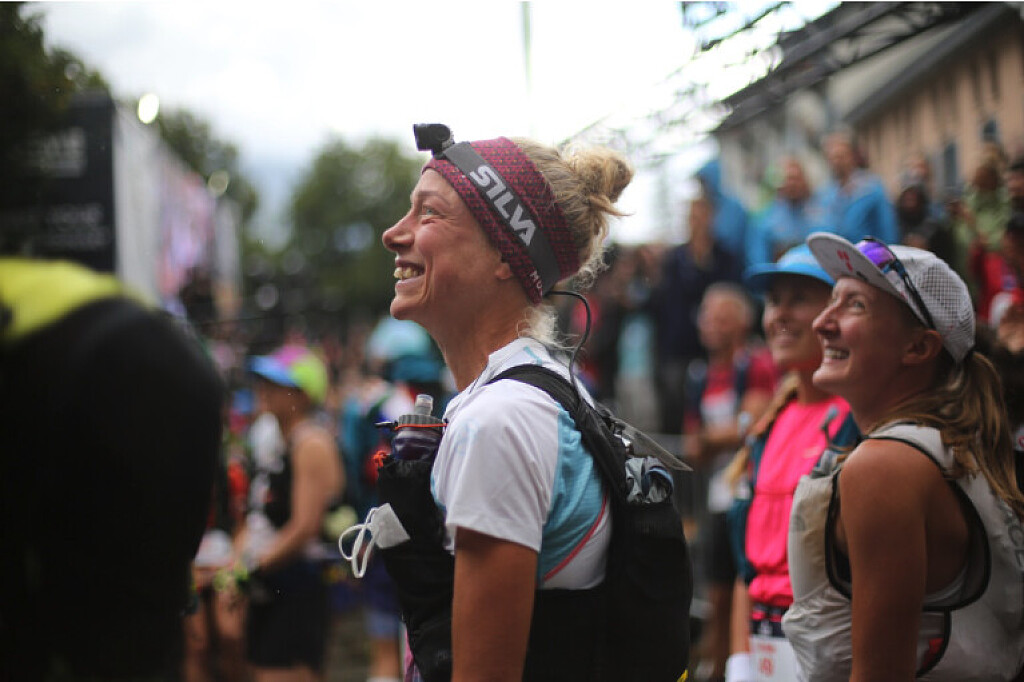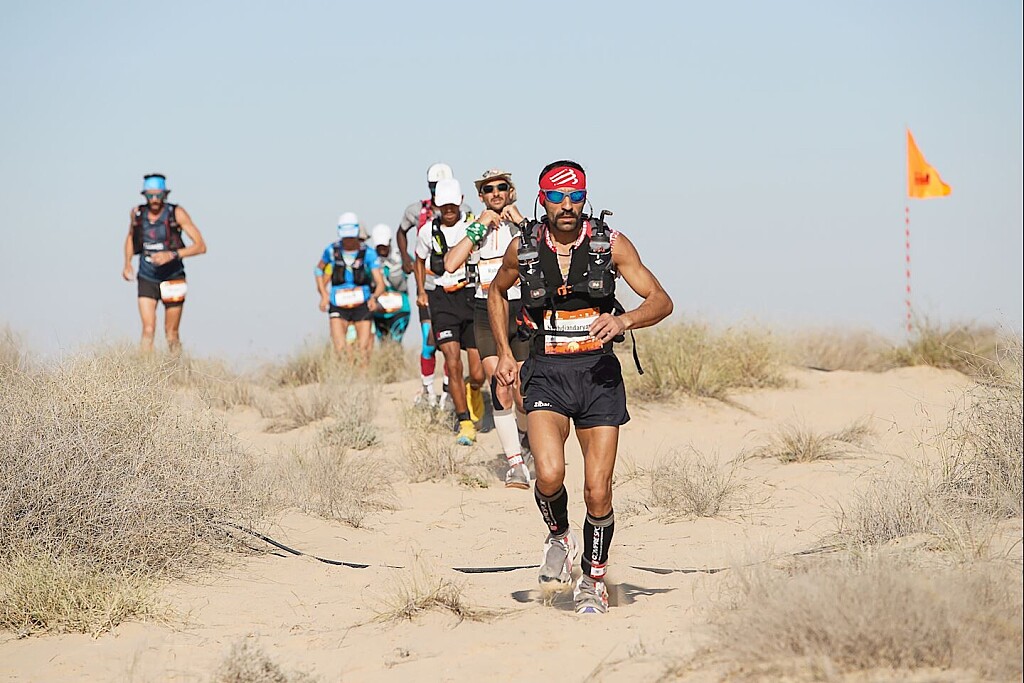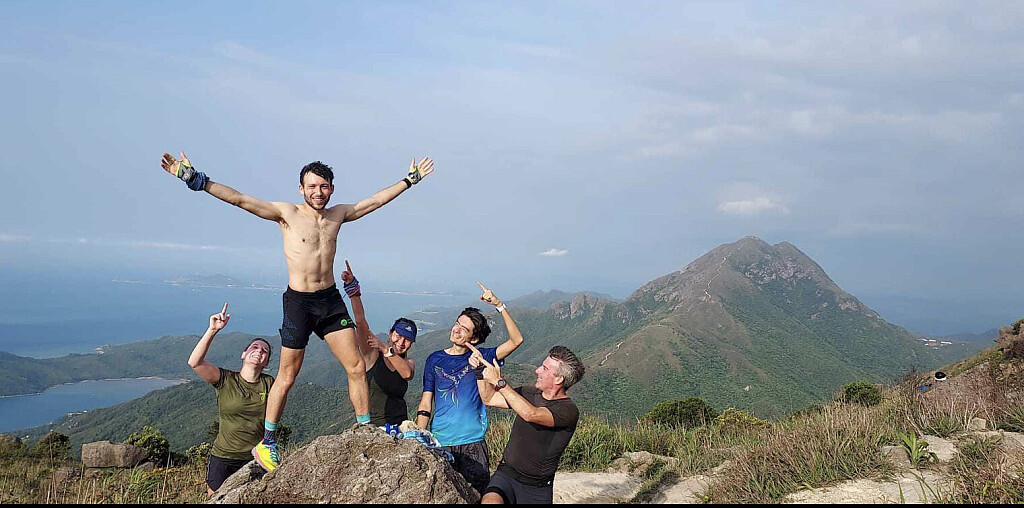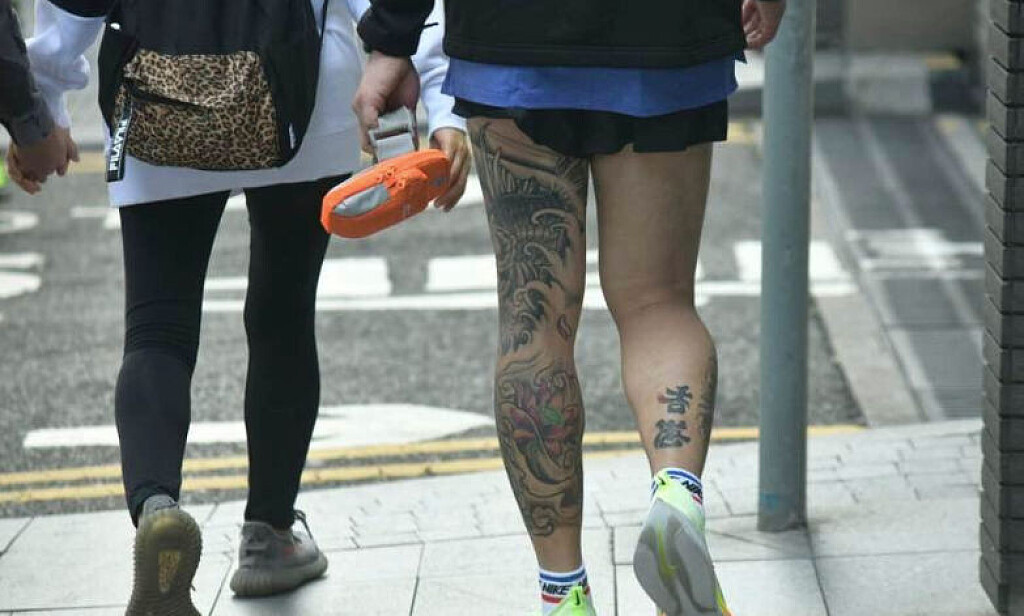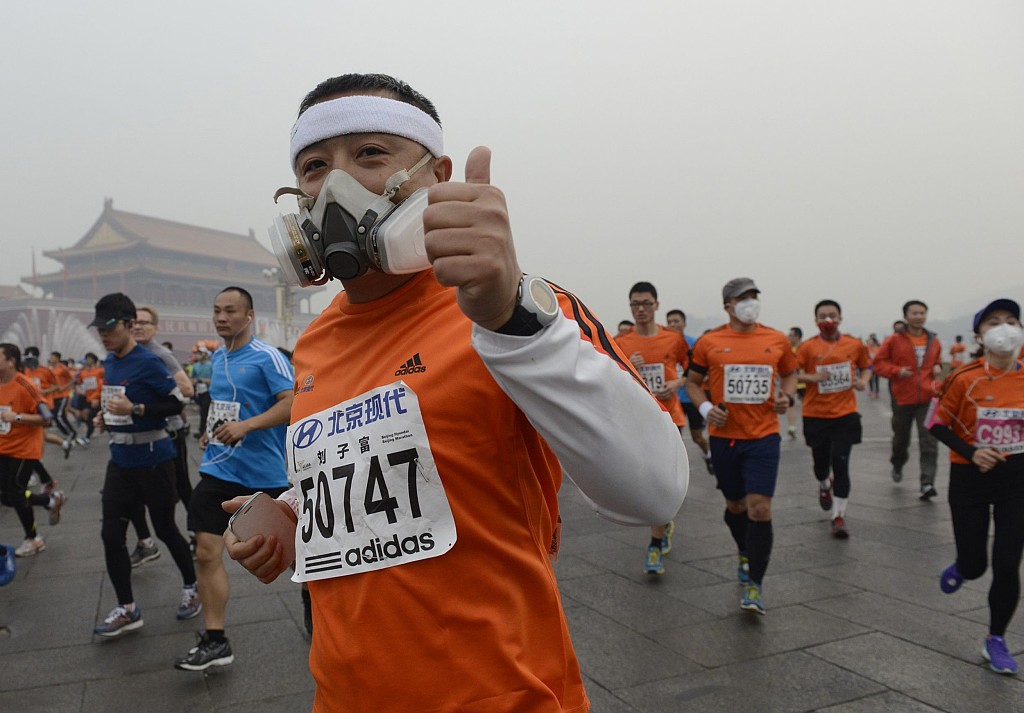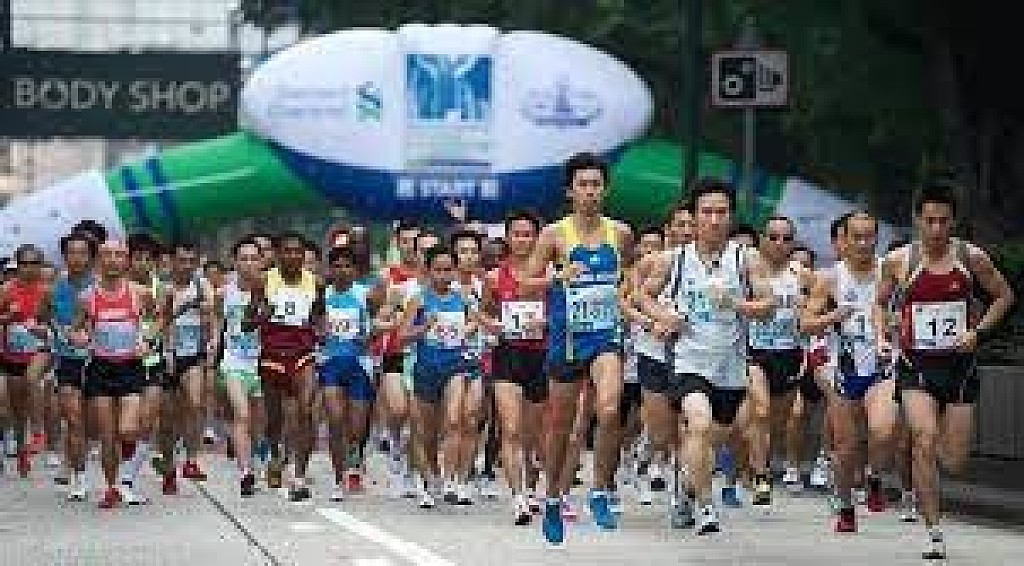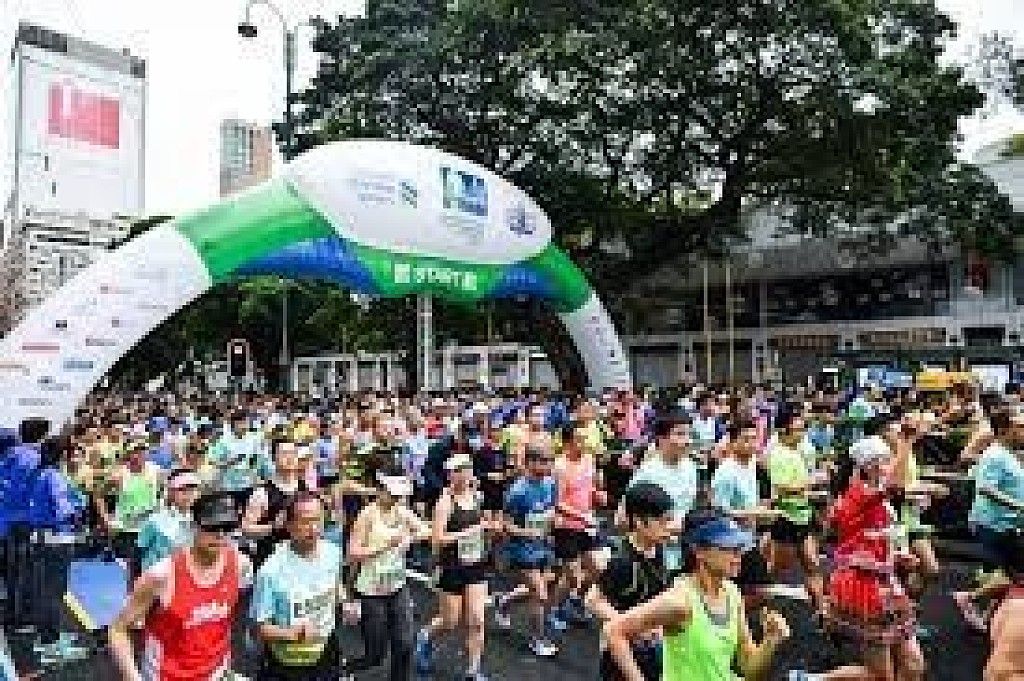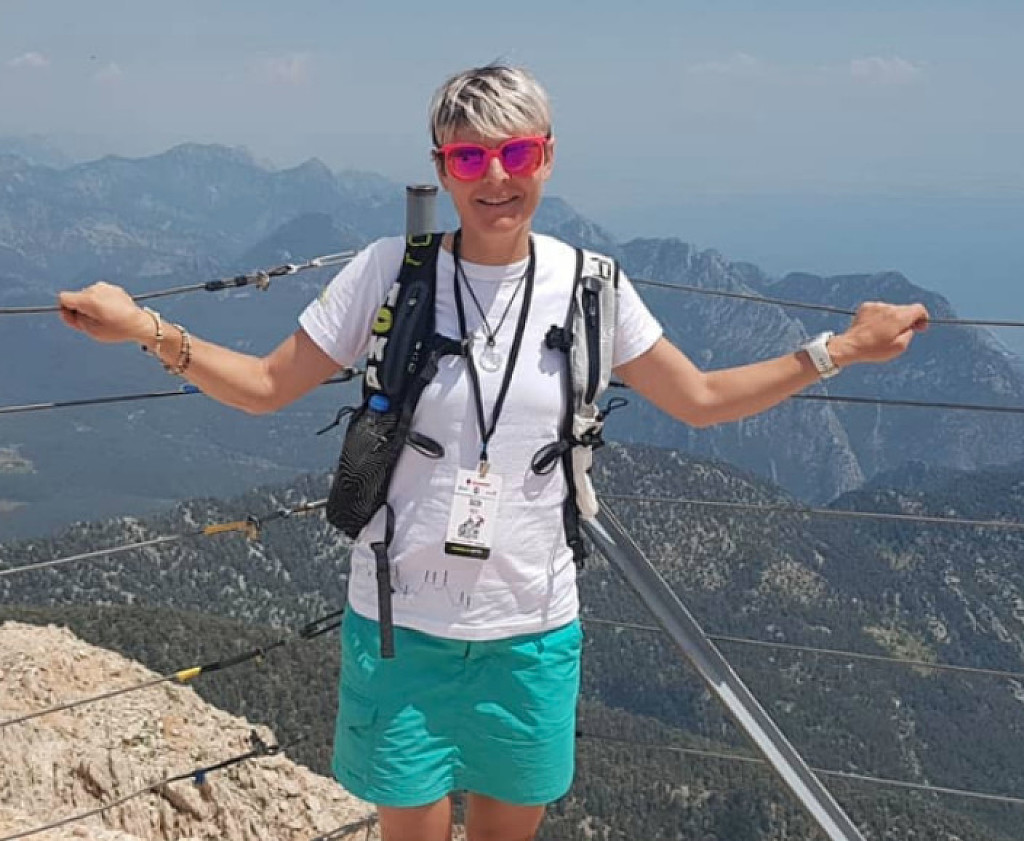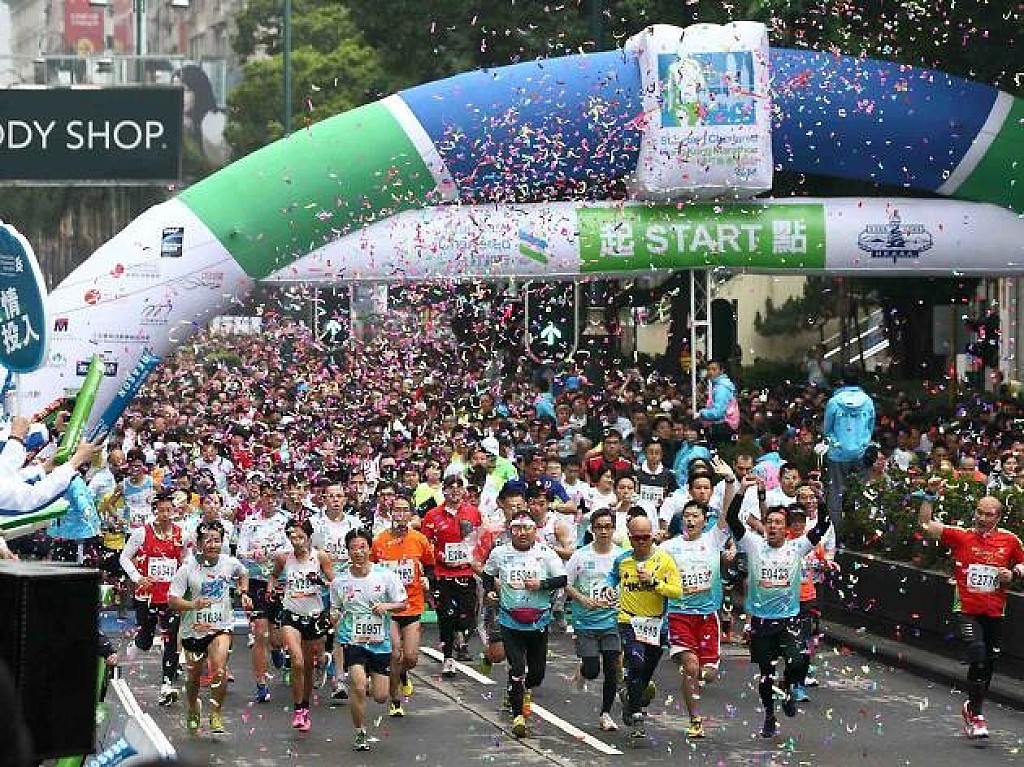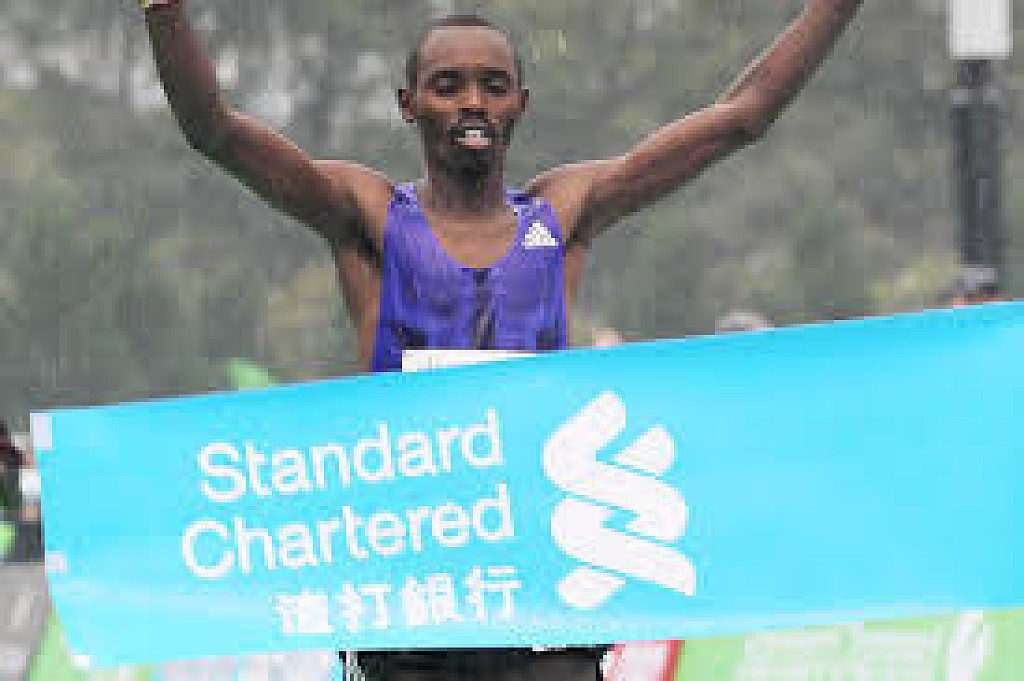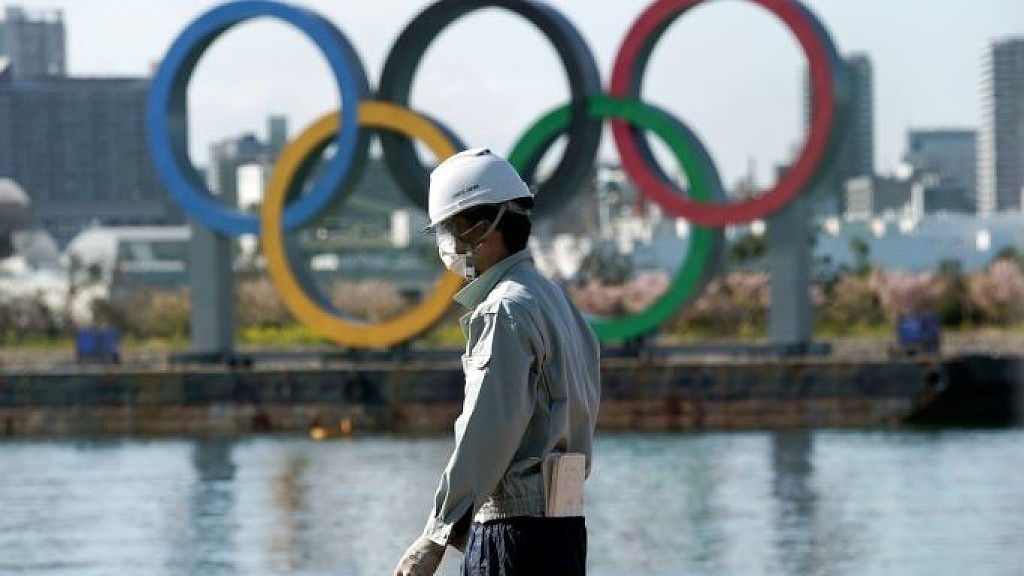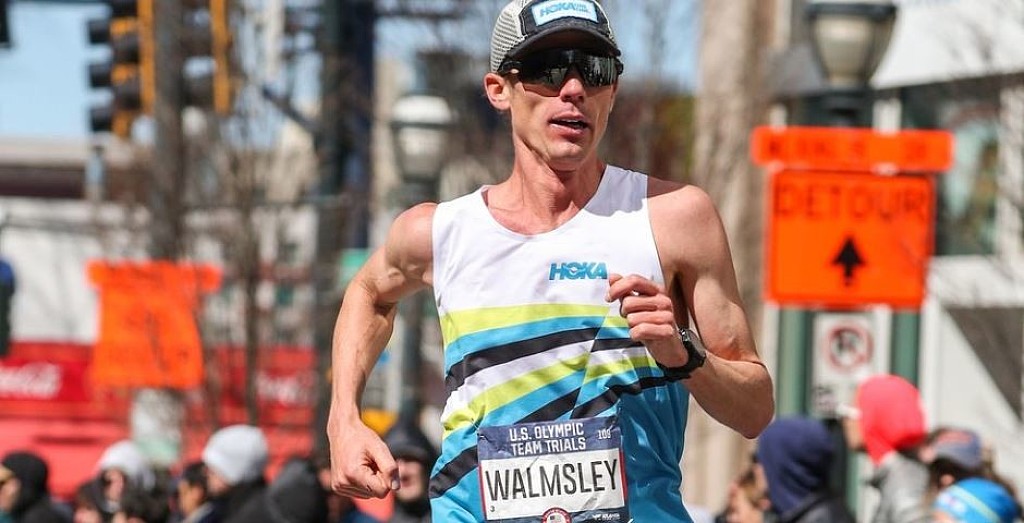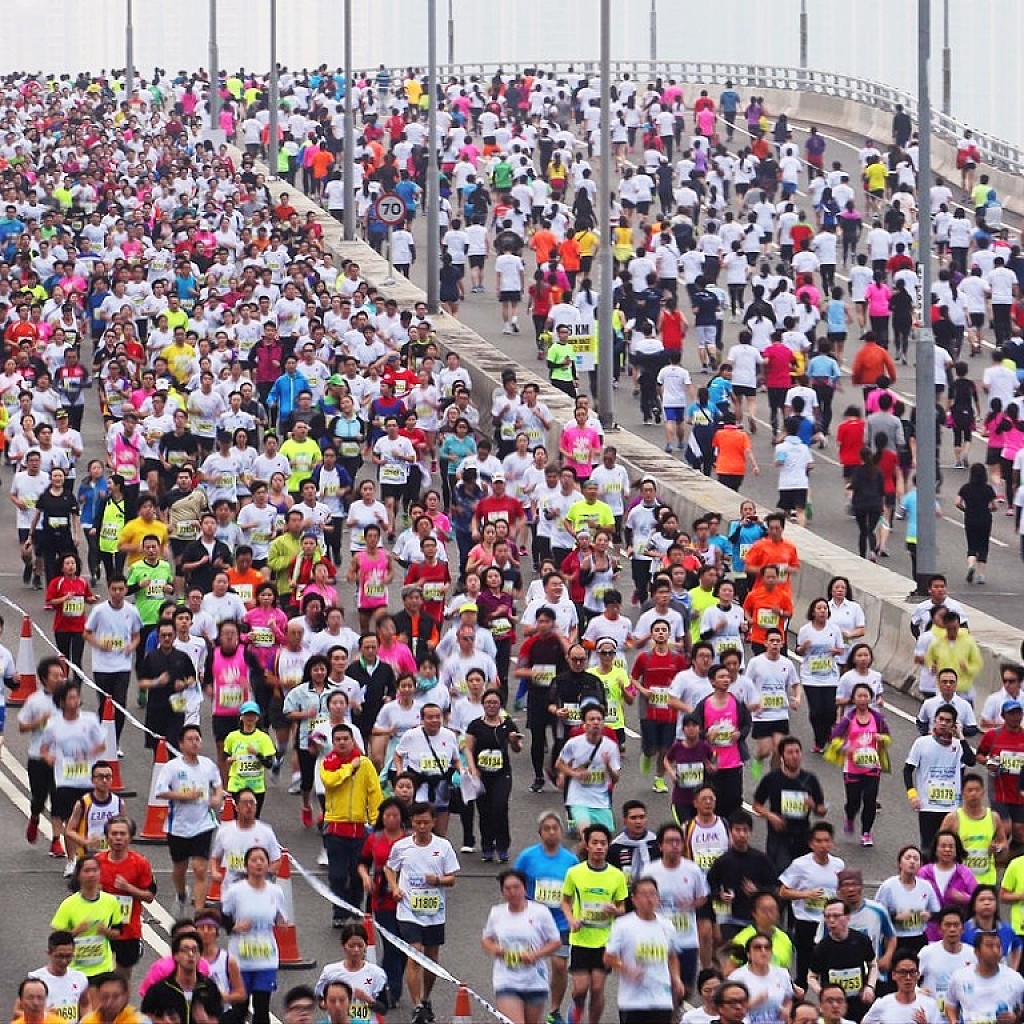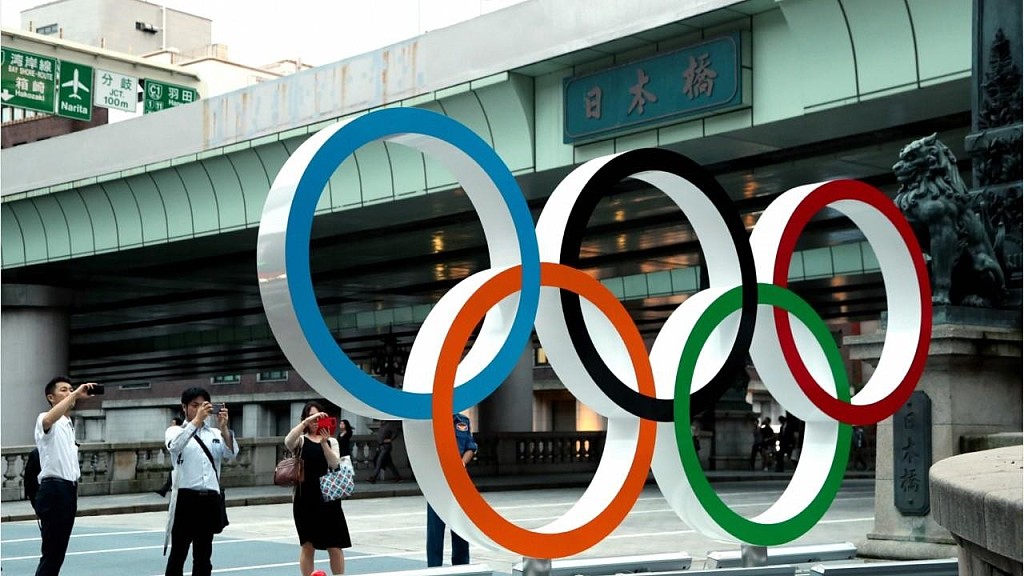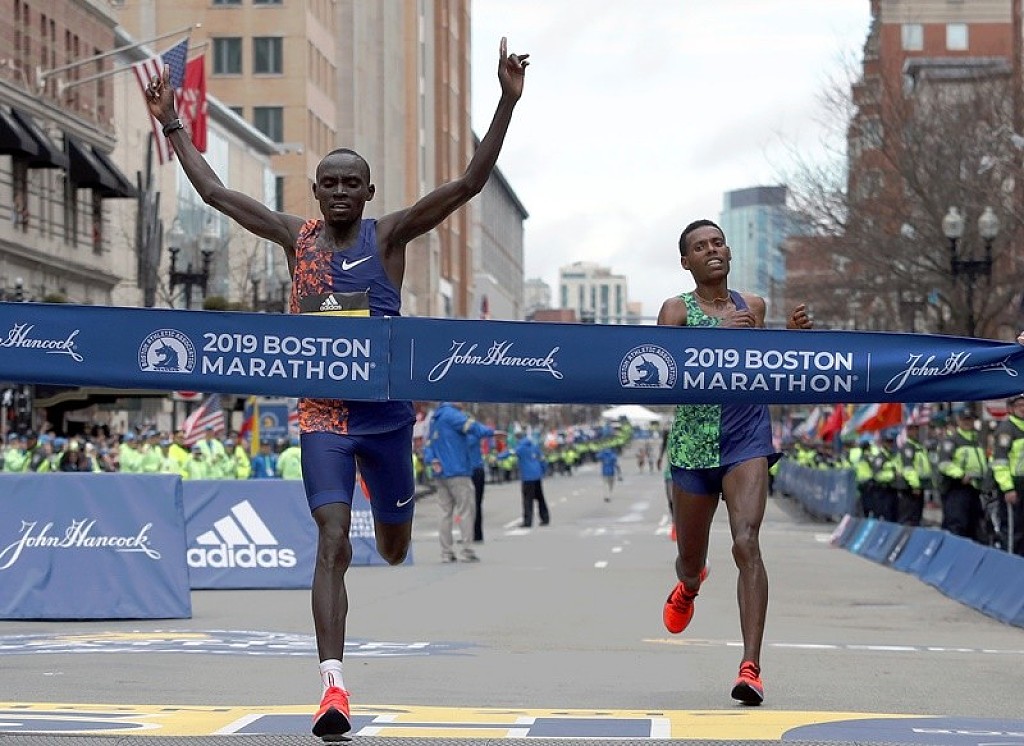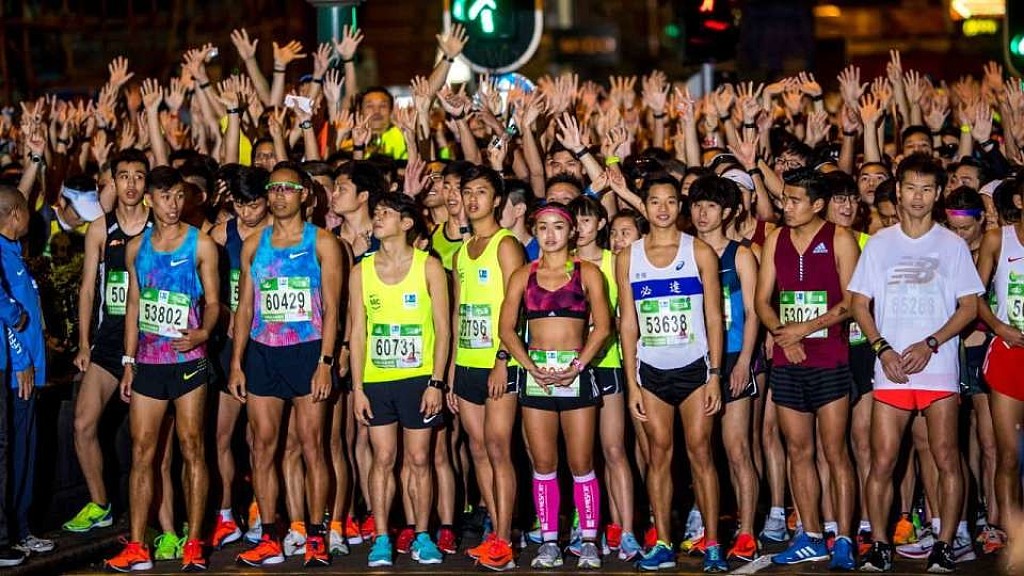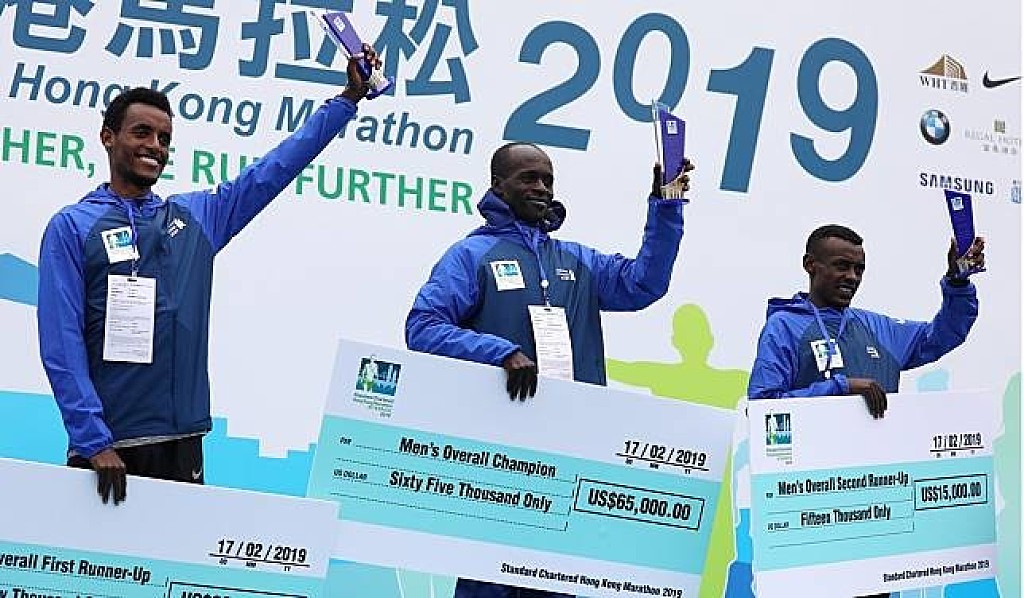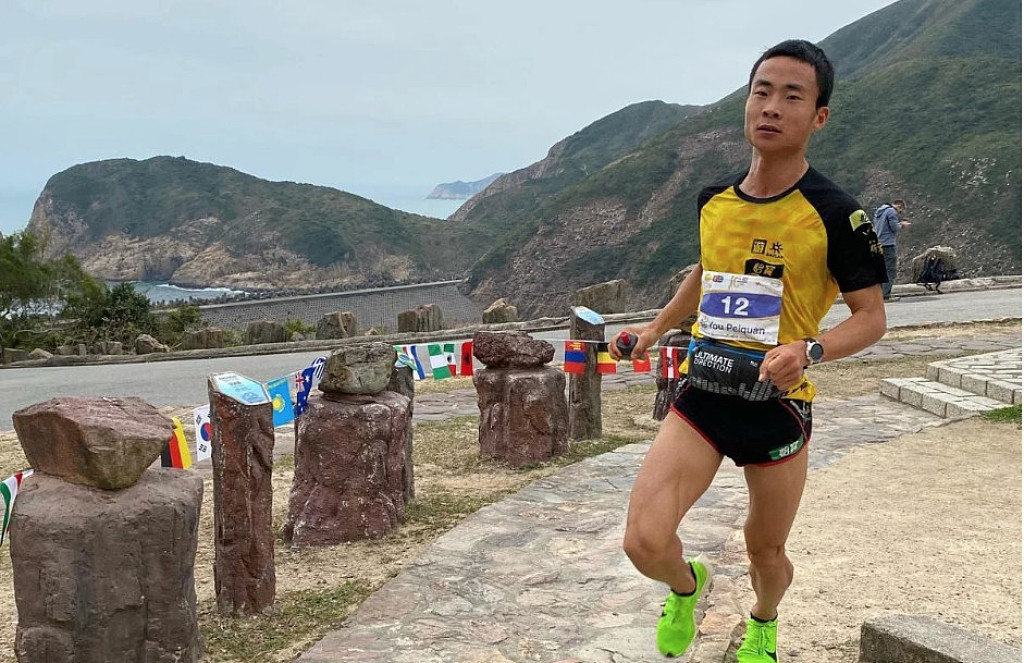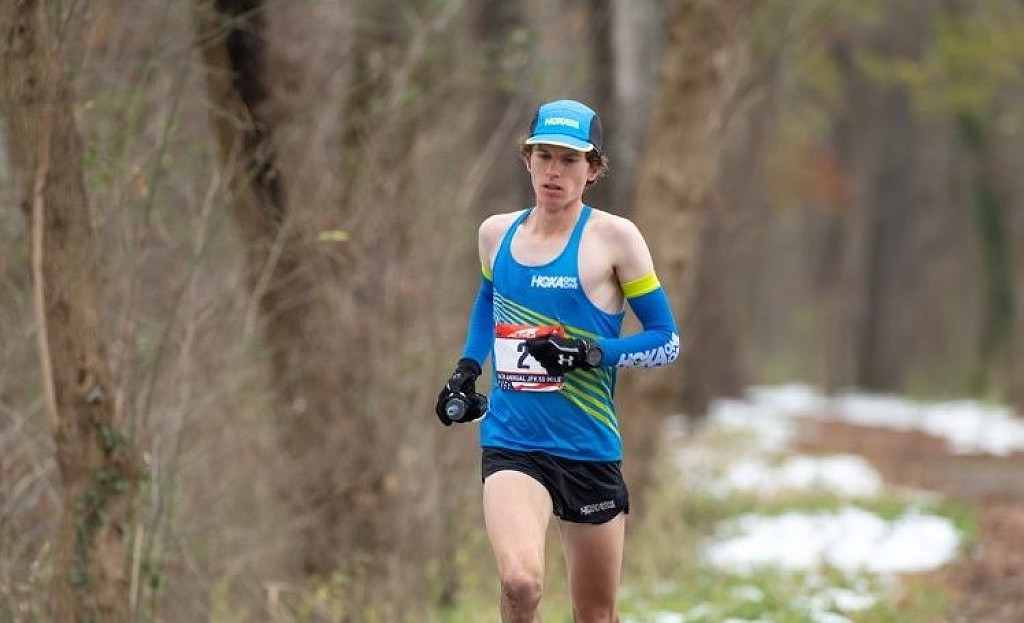Running News Daily
Running News Daily is edited by Bob Anderson. Send your news items to bob@mybestruns.com Advertising opportunities available. Train the Kenyan Way at KATA Kenya and Portugal owned and operated by Bob Anderson. Be sure to catch our movie A Long Run the movie KATA Running Camps and KATA Potato Farms - 31 now open in Kenya! https://kata.ke/
Index to Daily Posts · Sign Up For Updates · Run The World Feed
Articles tagged #Hong Kong
Today's Running News
The world’s oldest marathon runner, Fauja Singh, who was still competing after turning 100, died in a hit-and-run on Monday. He was 114.
“Can you imagine living this long and dying in this fashion?” said Bob Anderson, founder of My Best Runs. “I’m deeply saddened by the tragic loss Shri Fauja Singh ji. He was the embodiment of endurance and spirit.”
The Turbaned Tornado Who Defied Time
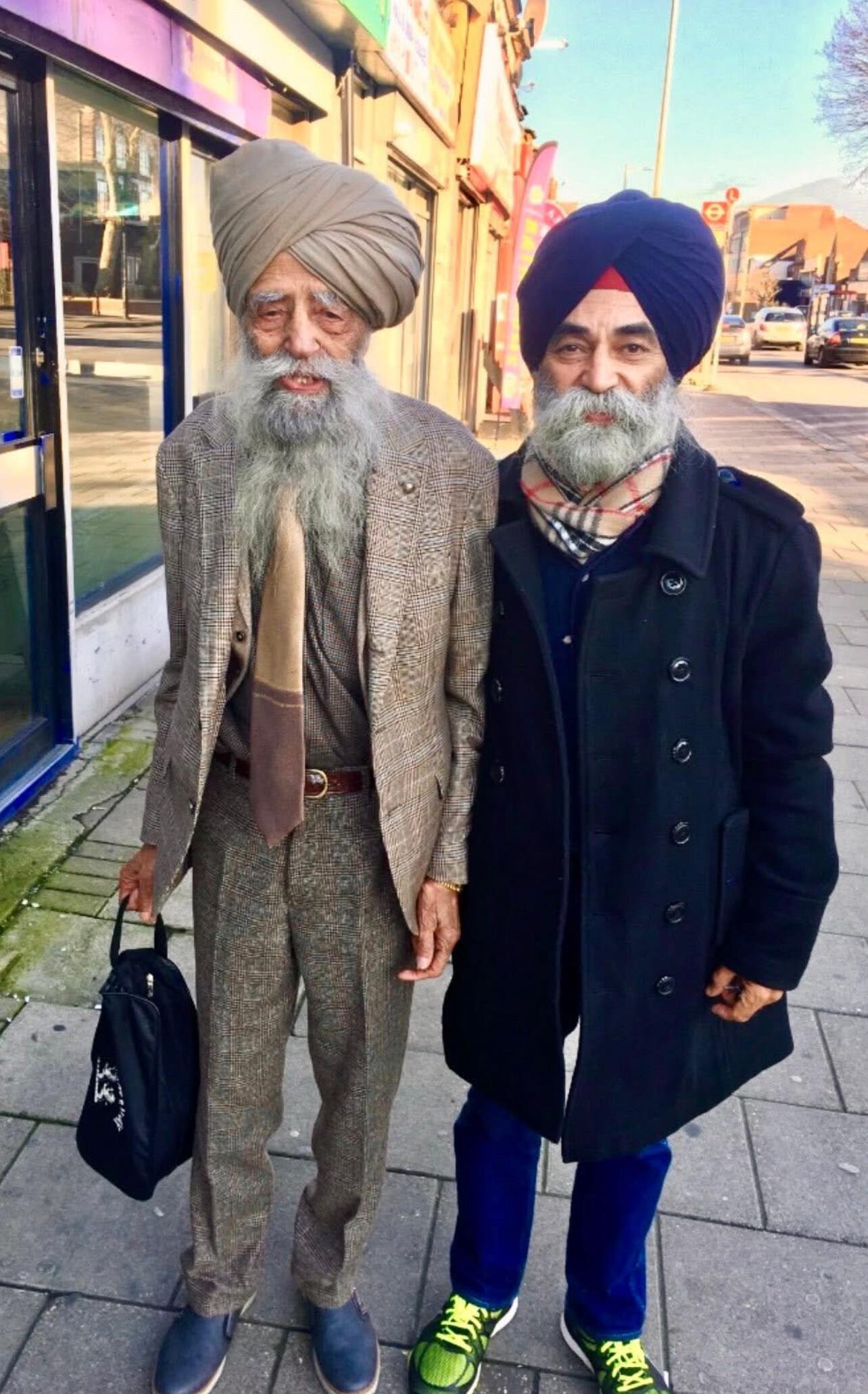
Born on April 1, 1911, in Beas Pind, Punjab, Fauja Singh didn’t learn to walk until he was five due to childhood weakness. No one could have predicted he would go on to become one of the most iconic figures in distance running history.
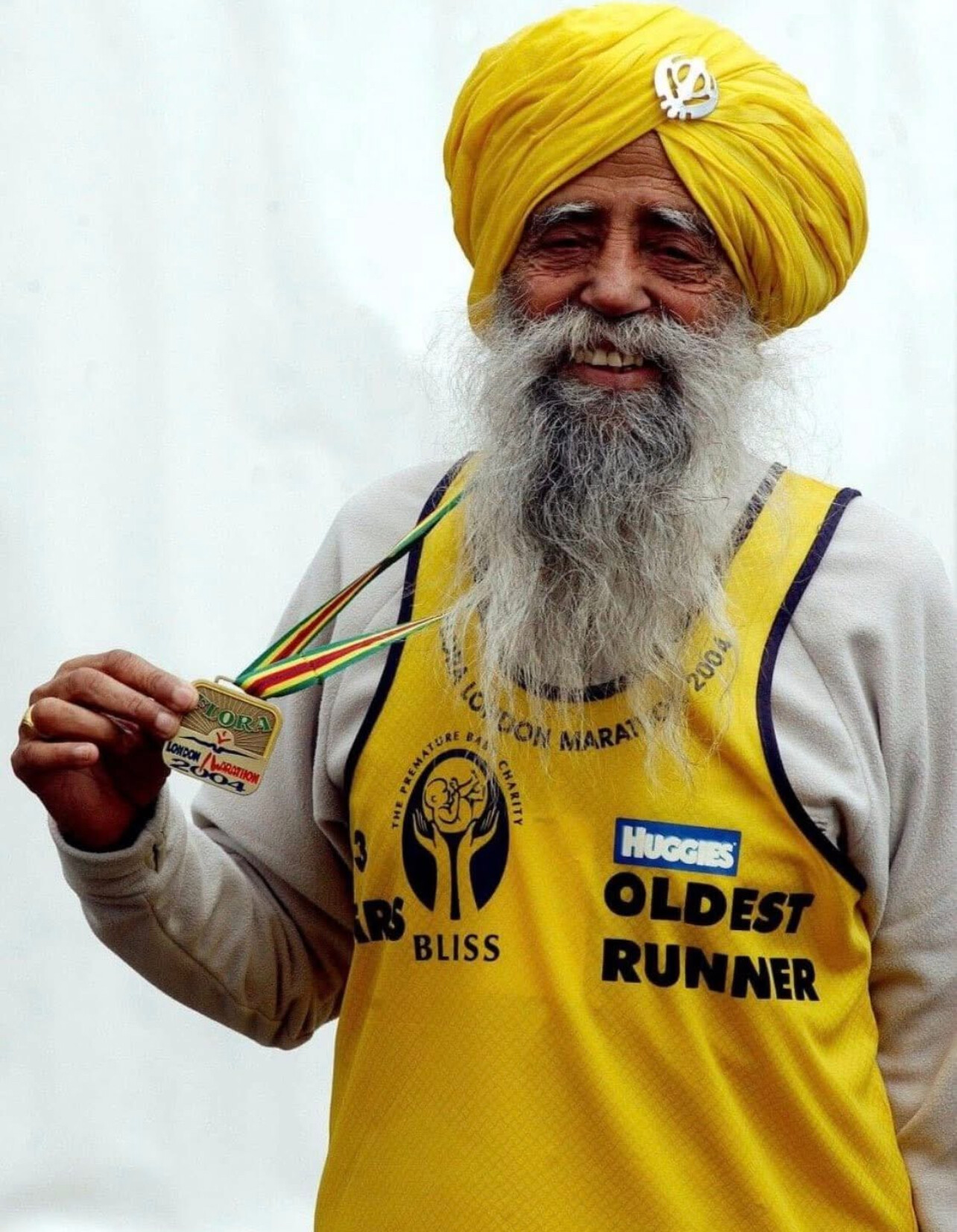
He took up running in his late 80s to cope with the grief of losing his wife and son. What began as a form of healing turned into a second life as a marathoner. At age 89, Singh ran his first marathon—the 2000 London Marathon—finishing in 6 hours and 54 minutes.
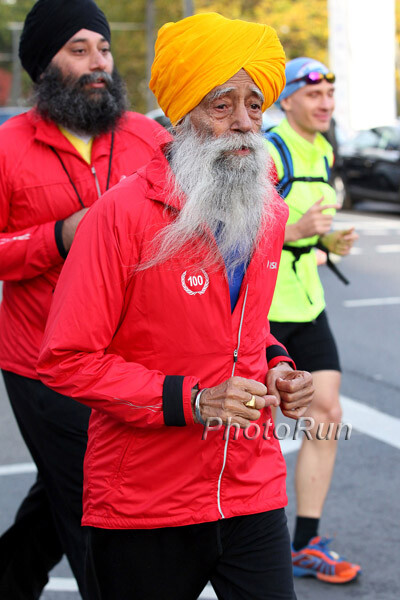
A Record-Breaking Journey
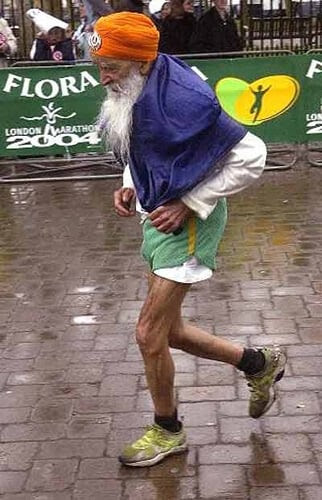
Over the next decade, Singh became a global sensation:
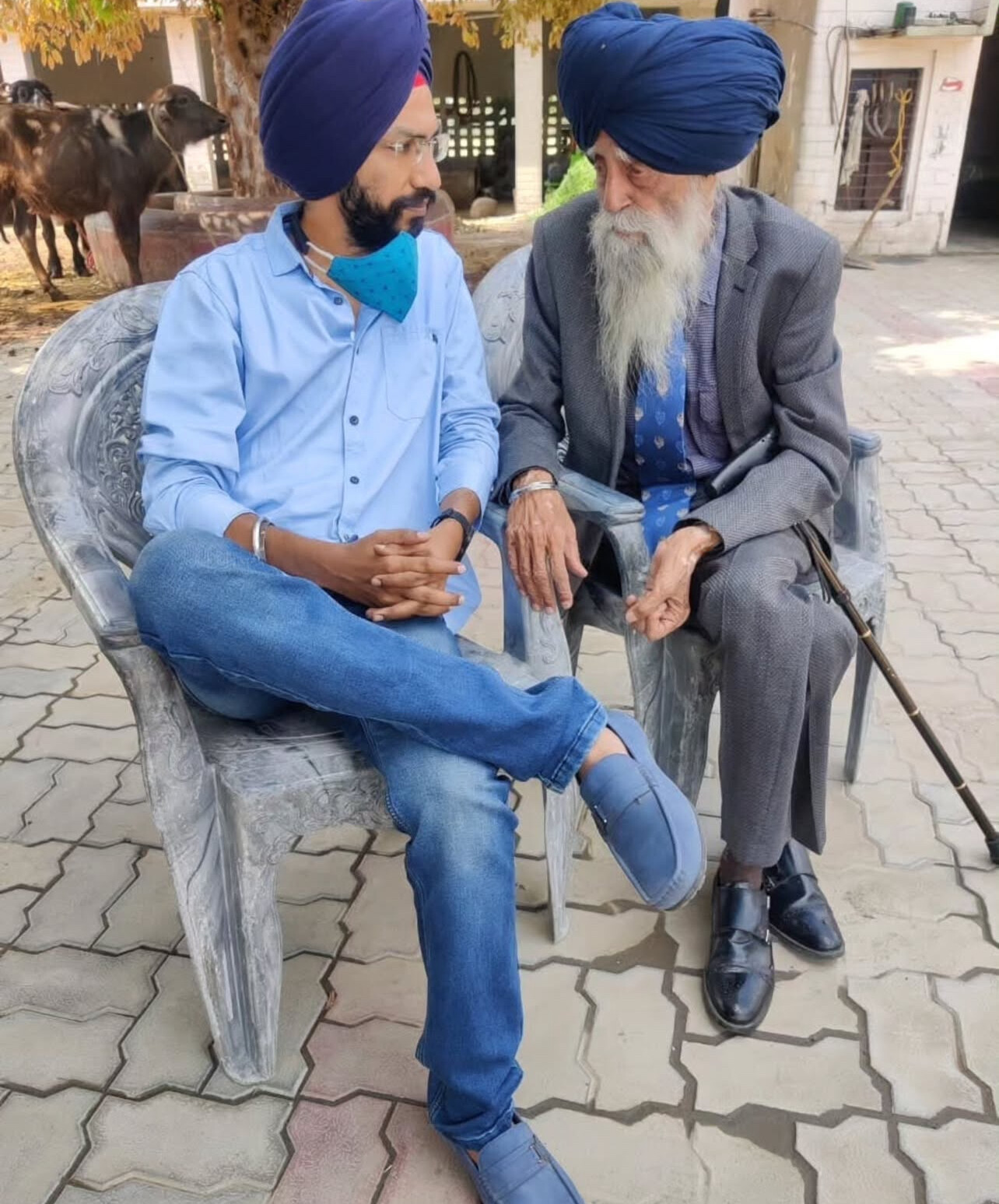
• He set multiple age-group world records from 100m to the marathon in the 90+ and 100+ categories.
• In 2011, at age 100, he became the first centenarian to complete a marathon (Toronto Waterfront) in 8 hours 11 minutes.
• He carried the Olympic torch in both the 2004 Athens and 2012 London Games.
• Singh completed his final race—a 10K in Hong Kong—in 2013 at the age of 101.
Though Guinness did not certify his 100+ age records due to lack of birth documentation, the running world recognized him for what he was: the oldest marathoner to ever cross the finish line.
A Global Inspiration
Fauja Singh became more than a runner—he became a symbol. With his flowing white beard, bright smile, and signature turban, he challenged perceptions of aging and inspired generations.
“He was a powerhouse of positivity,” Anderson said. “He showed the world what’s possible, regardless of age.”
Not just admired by runners, Singh was revered across cultures and nations. Tributes have poured in from athletes, politicians, and fans across the globe.
A Tragic End
On July 14, 2025, Fauja Singh was struck and killed by a speeding vehicle in his hometown of Jalandhar, Punjab, while on his way to his evening walk. He was 114 years old.
The hit-and-run incident occurred just 400 meters from his home. Despite being rushed to the hospital, he succumbed to his injuries hours later.
Local authorities are actively investigating the incident, but no arrest has been made at the time of publication.
A Final Salute
Fauja Singh lived every one of his 114 years with purpose. He ran with passion, smiled through hardship, and inspired millions.
“This was the only way death could conquer him—doing what he loved the most,” said Bob Anderson. “We salute him. May his soul rest in peace."
Fauja Singh will not be remembered for the way he died, but for the way he lived—and ran.
"I just can not believe he is gone," says Bob " but his spirt will live forever."
by Boris Baron
Login to leave a comment
Fauja Singh: The World’s Oldest Marathoner Who Redefined Human Potential Part One
Fauja Singh, born on April 1, 1911, in Beas Pind, Punjab, British India, is widely celebrated as the world’s oldest marathon runner. His remarkable journey from a quiet farming life to global athletic acclaim has inspired millions, proving that age is no barrier to endurance, purpose, or reinvention.
From Tragedy to Triumph
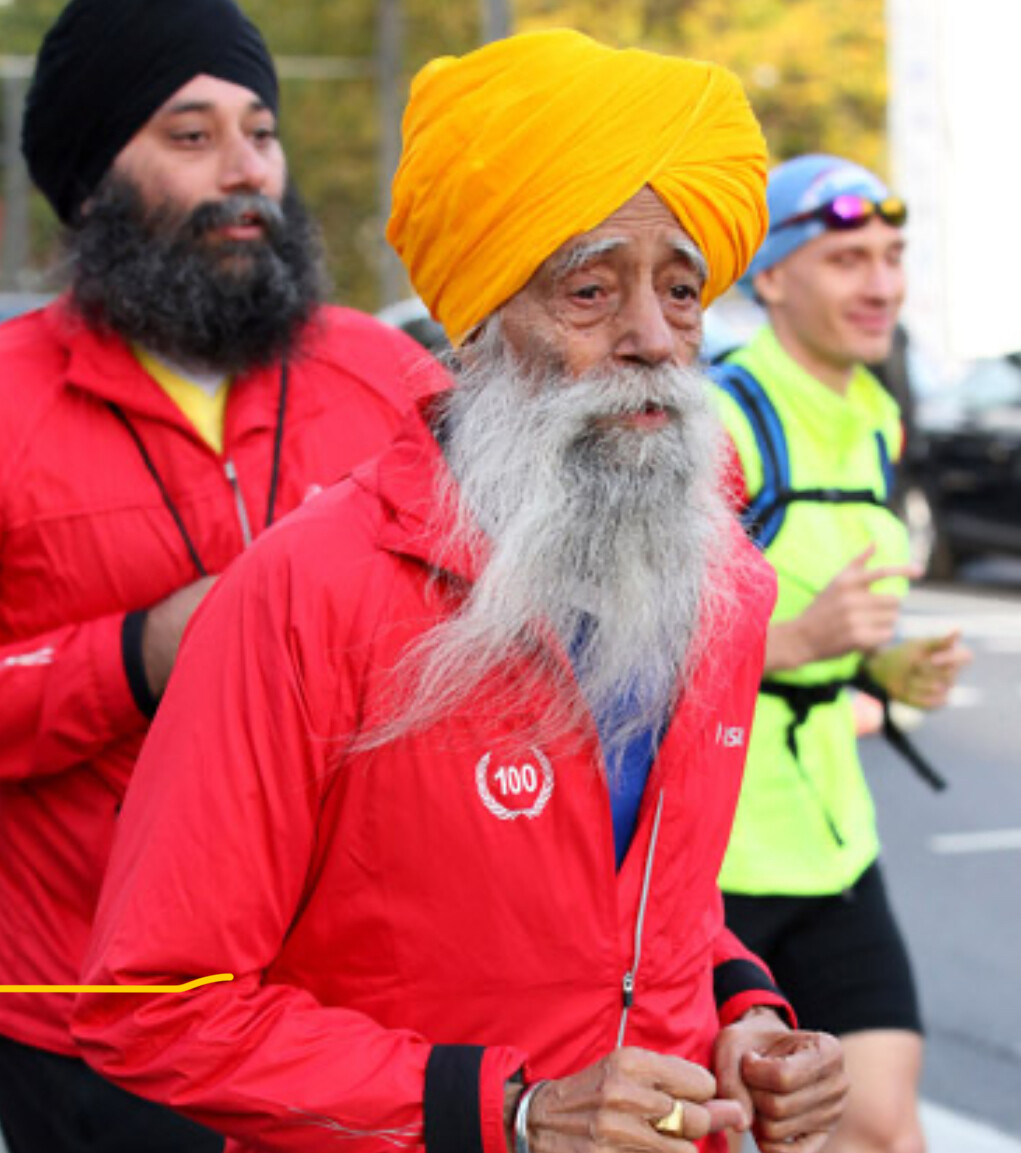
Singh’s path to running began in the wake of personal tragedy. After losing his wife in 1992 and witnessing the death of his son in 1994, he moved to London in the late 1990s. At 89, he took up running as a way to cope with grief and rediscover purpose. In 2000, he completed his first marathon in London, launching a career that would span over a decade.
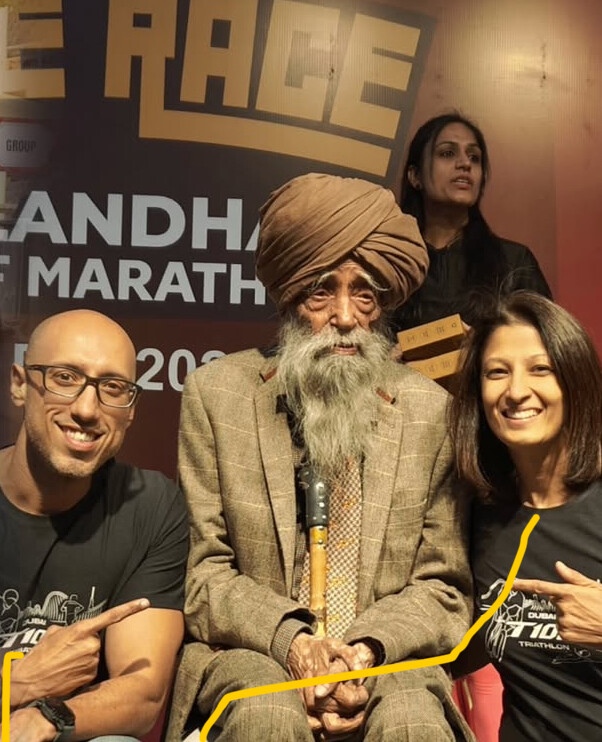
A Record-Breaking Career
Singh completed nine full marathons between 2000 and 2011, including events in London, Toronto, and New York. His personal best was 5:40 at the 2003 Toronto Waterfront Marathon, setting a world record for the 90+ age group. At 100, he became the first centenarian to complete a marathon, finishing the 2011 Toronto Waterfront Marathon in 8:11:06. Though Guinness World Records did not certify the feat due to the absence of a birth certificate, Singh’s accomplishment remains a historic milestone.
Final Race and Continued Inspiration
Singh ran his final competitive race on February 24, 2013, completing a 10km event at the Hong Kong Marathon in 1:32:28, just weeks before his 102nd birthday. Though retired from competition, he continued to jog daily and participate in community events, promoting health and fitness.
Legacy Beyond the Finish Line
Singh’s influence extends beyond his athletic achievements. He was featured in Adidas’ “Impossible is Nothing” campaign alongside icons like Muhammad Ali and David Beckham. In 2015, he was awarded the British Empire Medal for services to sport and charity. His life story has been chronicled in the biography Turbaned Tornado and the children’s book Fauja Singh Keeps Going.
A Life of Simplicity and Purpose
Singh attributes his longevity and vitality to a simple vegetarian diet, abstaining from smoking and alcohol, and maintaining a positive outlook. He once said, “The first 20 miles are not difficult. As for the last six miles, I run while talking to God.”
Fauja Singh’s journey exemplifies the boundless potential of the human spirit. His legacy continues to inspire individuals worldwide to pursue their passions, regardless of age.
by Boris Baron
Login to leave a comment
Why Running Shoes Are Getting More Expensive in 2025
American-Made Running Shoes Aren’t Coming Anytime Soon says Bob Anderson and here's why.
“It’s just not realistic to imagine an American company finding enough labor in the U.S. to make running shoes,” says lifetime runner Bob Anderson. “Even in states where companies might pay $10 an hour—half the rate in California—it would be difficult to find many Americans with the necessary skills.”
That reality helps explain why nearly all running shoes are made in Asia—and why prices are climbing. A combination of new tariffs, shifting global supply chains, and rising production costs is pushing the cost of your favorite shoes higher than ever across the United States.

The Impact of ‘Liberation Day’ Tariffs
On April 2, 2025, President Donald Trump announced a sweeping set of tariffs under the banner of “Liberation Day,” aiming to address what he described as unfair trade practices and to bolster domestic manufacturing. These tariffs include:
• A universal 10% tariff on all imported goods, effective April 5, 2025.
• Additional country-specific tariffs, ranging from 11% to 50%, on imports from 86 countries, effective April 9, 2025.
For the footwear industry, these tariffs have significant implications. For example, imports from major manufacturing hubs now face the following cumulative tariffs:
• China: 54%
• Vietnam: 46%
• Cambodia: 49%
• Bangladesh: 37%
• Indonesia: 32%
These increased costs are often passed on to consumers, leading to higher retail prices for running shoes.
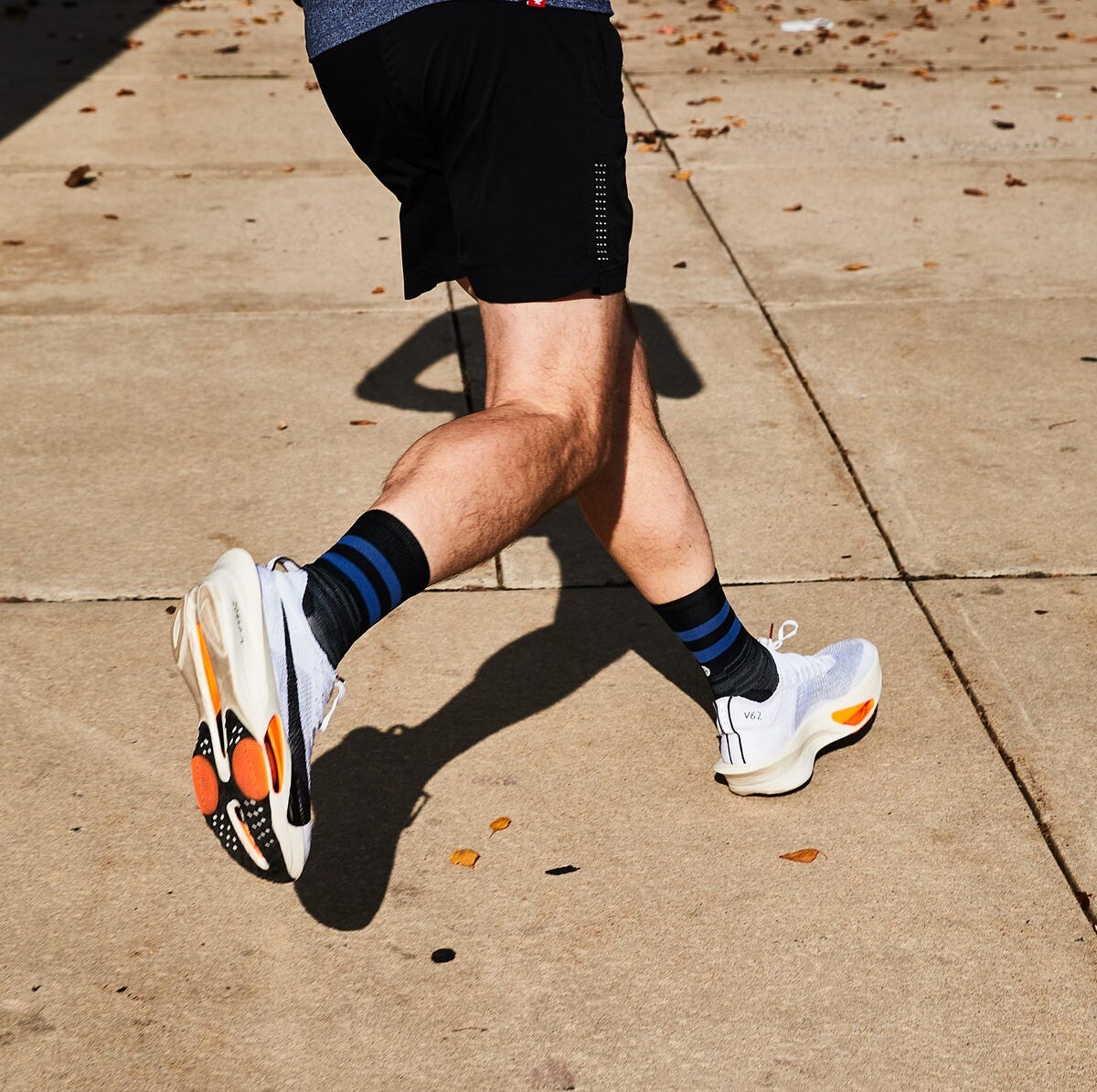
Upcoming Changes: June 1, 2025
Further changes are scheduled to take effect on June 1, 2025:
• Increased Flat Fees on Small Parcels: For small parcels shipped from China and Hong Kong, the flat fee per item will increase from $25 to $50.
• Higher Tariffs on Low-Value Shipments: All goods made in China, regardless of order value, are now subject to a 30% tariff or a $25 per-item fee, which will increase to $50 per item after June 1, 2025.
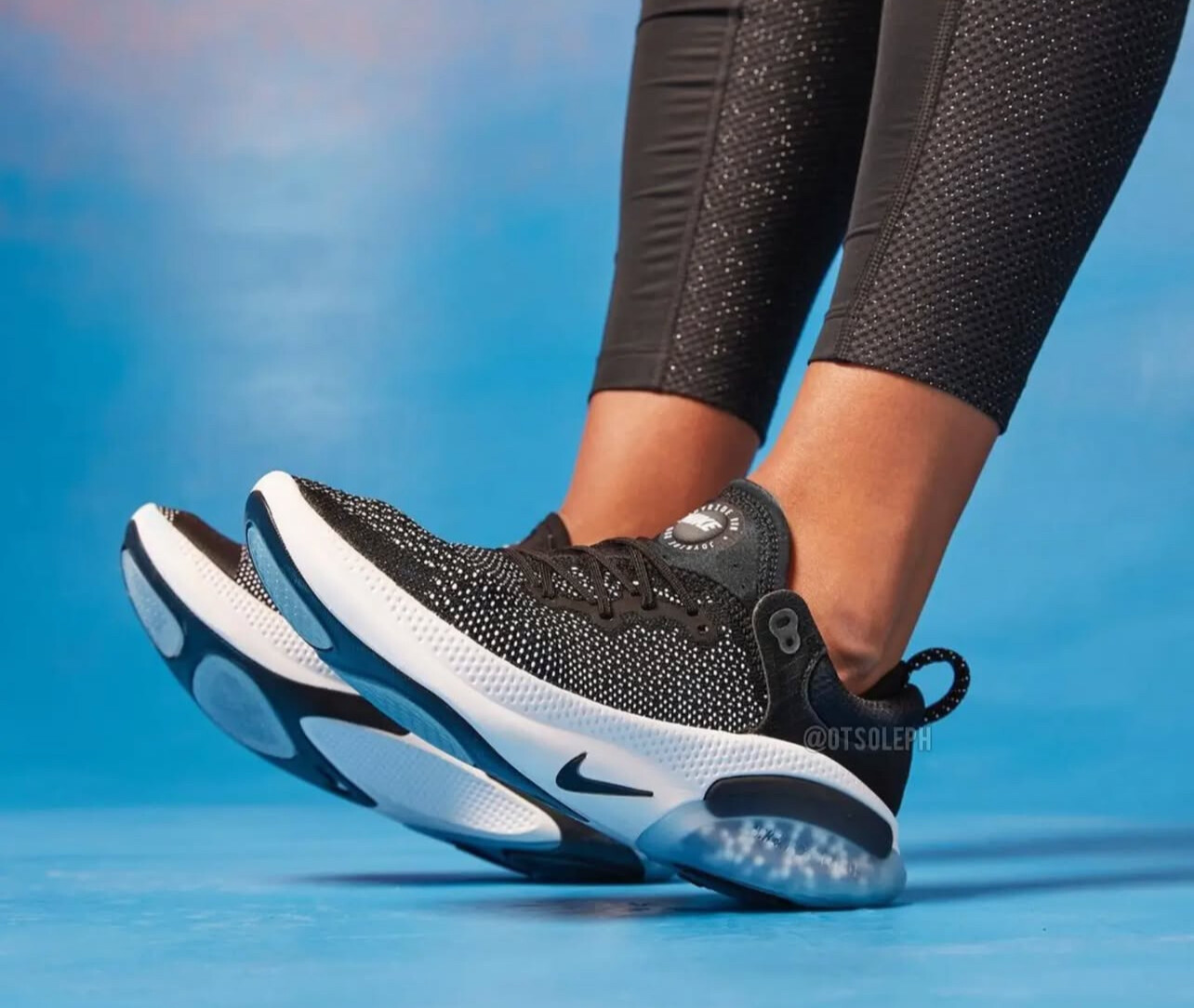
These measures are expected to further impact the cost of imported footwear, potentially leading to higher retail prices for consumers. Brands and retailers may need to adjust their sourcing strategies and pricing models in response to these changes.
Global Manufacturing Landscape
Most major running shoe brands manufacture their products overseas, primarily in Asia. For instance:
• Nike: Primarily manufactures in Vietnam, Indonesia, and China.
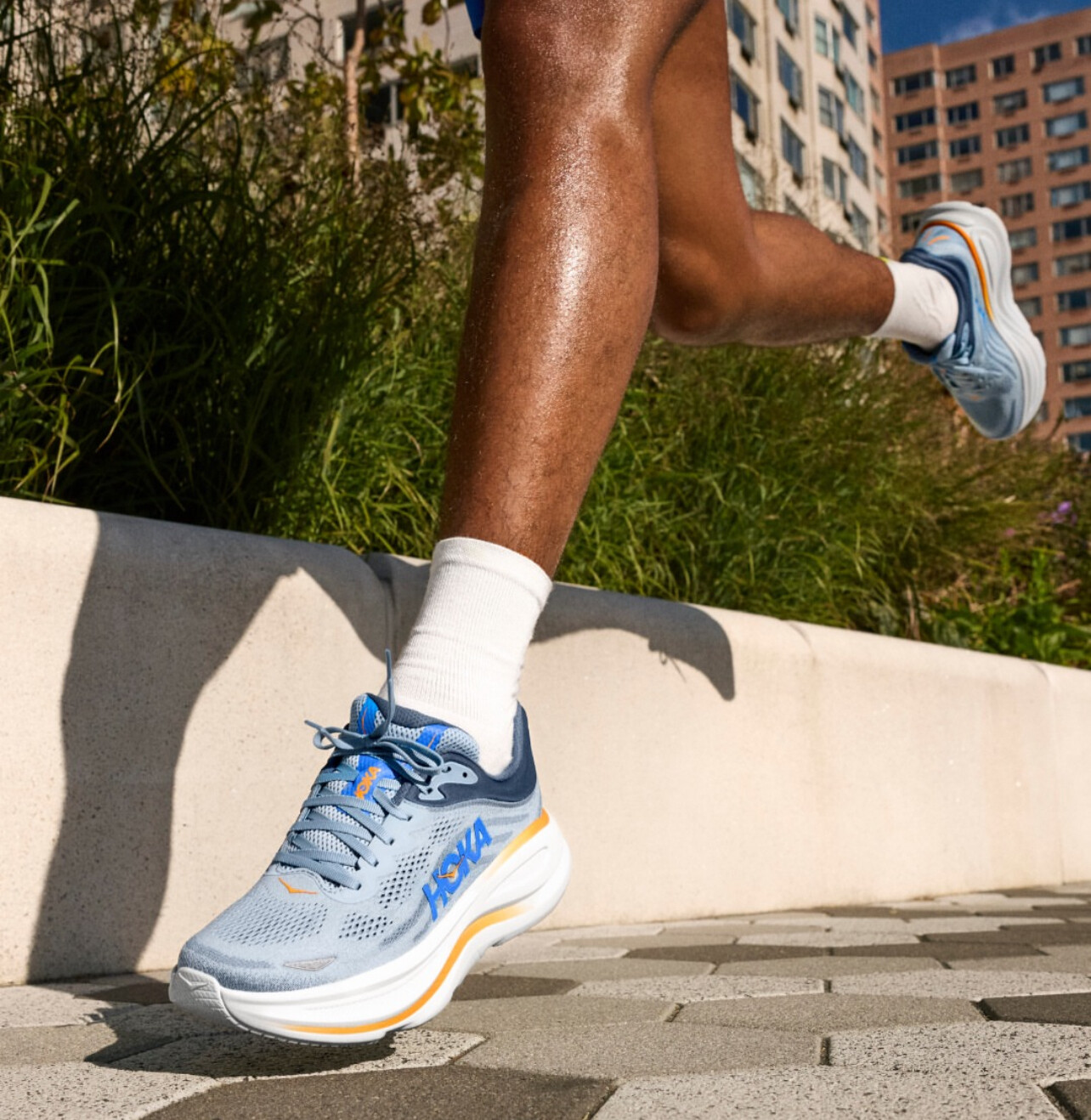
• Adidas: Relies heavily on Vietnam, Indonesia, and China for production.
• New Balance: Assembles some models in the U.S., but many are produced in Vietnam and Indonesia.
• Brooks: Manufactures most of its running shoes in Vietnam and China.
• ASICS: Produces mainly in Vietnam and Indonesia.

Given the new tariffs, these companies face increased costs, which may be reflected in higher prices for consumers.
Challenges of U.S. Manufacturing
Producing running shoes domestically presents several challenges:
• Labor Costs: U.S. labor is significantly more expensive than in countries like Vietnam or Indonesia.
• Infrastructure: The U.S. lacks the large-scale infrastructure and trained workforce needed for mass shoe production.
• Supply Chain: Many components used in shoe manufacturing are produced overseas, making domestic production more complex and costly.
While some companies, like New Balance, have U.S.-based production, it’s limited and often involves imported components.
The Labor Cost Gap Behind Your Running Shoes
One of the main reasons running shoes are rarely made in the United States is the vast difference in labor costs. In Vietnam—currently the leading producer of running shoes for brands like Nike, Adidas, and New Balance—the average factory worker earns between $200 and $300 USD per month. In Indonesia and Cambodia, wages can be even lower. By contrast, U.S. manufacturing workers typically earn $3,000 to $4,000 per month, not including benefits.
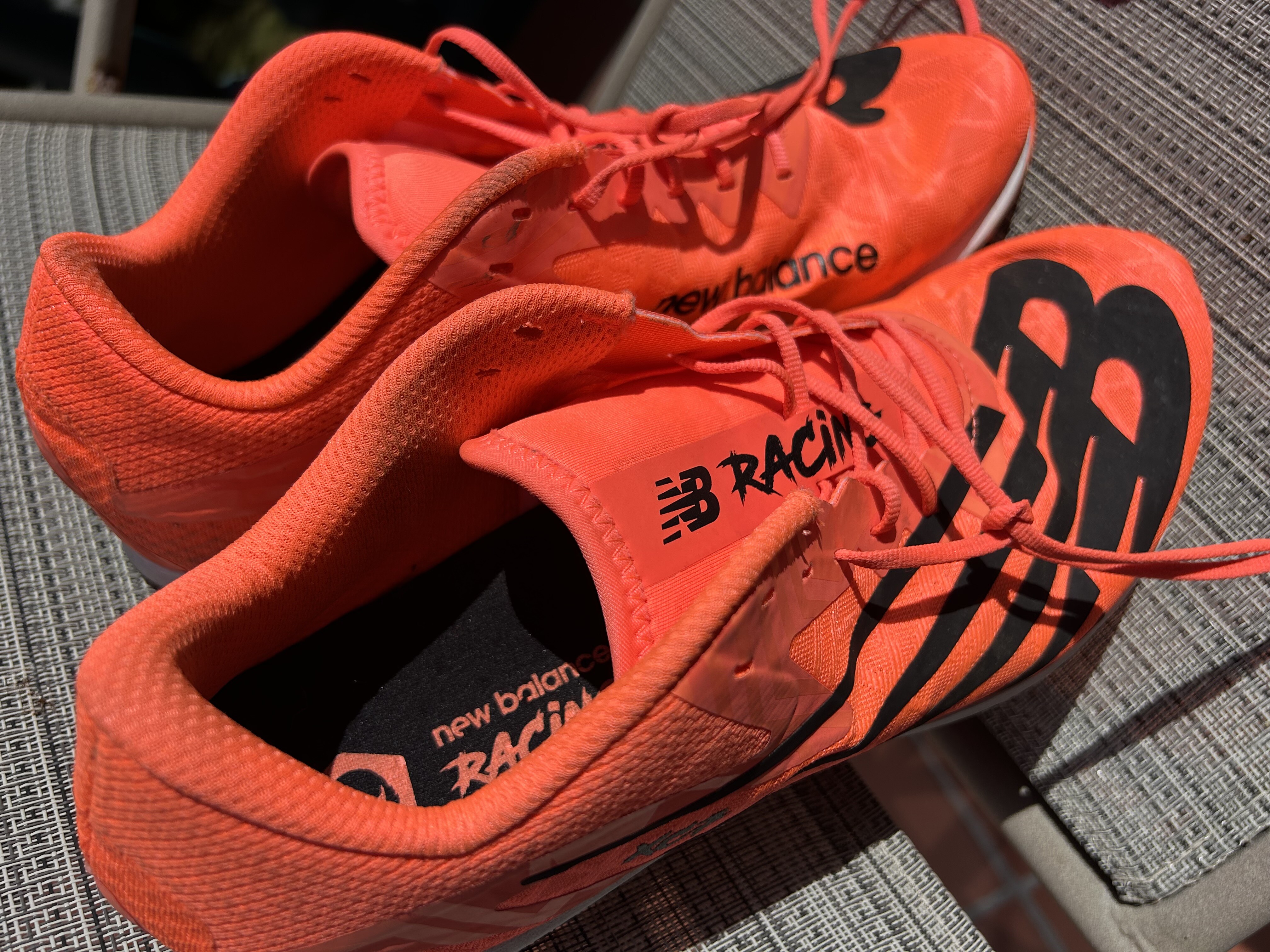
Since running shoes are labor-intensive to make—often requiring 70 to 100 steps in the assembly process—these wage disparities drastically affect the cost of production. That’s why even with new tariffs, it’s still cheaper for most brands to produce shoes overseas than to bring operations back home.
Looking Ahead
The full impact of these tariffs will unfold over time. Consumers may see continued price increases and reduced availability of certain models. Brands may explore alternative manufacturing locations or adjust their product lines to mitigate costs.
As the situation evolves, staying informed will help consumers make educated decisions about their purchases.
by Boris Baron
Login to leave a comment
Pyongyang International Marathon Returns After Six-Year Hiatus
On April 6, 2025, North Korea hosted the Pyongyang International Marathon for the first time since 2019, marking a significant step in the country’s reopening following pandemic-induced isolation. The event attracted over 500 participants, including more than 200 international runners from over 40 countries. However, athletes from the United States, South Korea, and Malaysia were reportedly barred from participating due to ongoing political tensions.
The marathon commenced at Kim Il Sung Stadium, where a crowd of over 50,000 spectators cheered on the runners. The course took participants through central Pyongyang, showcasing the city’s landmarks, before extending into the surrounding countryside and returning to the stadium.
Elite Marathon Results
Men’s Division:
1. Pak Kum Dong (DPR Korea) – 2:12:08
2. Bekele Girma Metaferia (Ethiopia) – 2:12:27
3. Jon Kwang Myong (DPR Korea) – 2:13:29
Women’s Division:
1. Jon Su Gyong (DPR Korea) – 2:25:48
2. Choe Il Gyong (DPR Korea) – 2:26:05
3. Cha Kwon Ju (DPR Korea) – 2:26:24
In the amateur category, Wojciech Kopec from Poland led the men’s marathon with a time of 2:30:39, while Ho Oi Yung from Hong Kong topped the women’s amateur division, finishing in 3:48:05.
The event also featured half-marathon, 10K, and 5K races. In the elite half-marathon, Ryang Choe Guk (DPR Korea) won the men’s race in 1:12:19, and Kan Ryon Hui (DPR Korea) secured the women’s title with a time of 1:16:32.
The Pyongyang International Marathon serves as a significant cultural event, coinciding with celebrations for the April 15 birthday of North Korea’s founding leader, Kim Il Sung. The successful hosting of the marathon indicates a gradual reopening of the country to international events and visitors.
by Boris Baron
Login to leave a comment
María Lorena Ramírez Running Beyond Boundaries
In a world obsessed with cutting-edge gear and high-tech performance, María Lorena Ramírez is rewriting the rules. She runs some of the toughest ultramarathons in the world, not in carbon-fiber shoes or compression gear, but in a traditional skirt and sandals made from old tires. At 30 years old, this indigenous Rarámuri athlete from Mexico’s Copper Canyon continues to defy expectations, proving that true endurance comes from within, not from what’s on your feet.
Winning on Her Own Terms
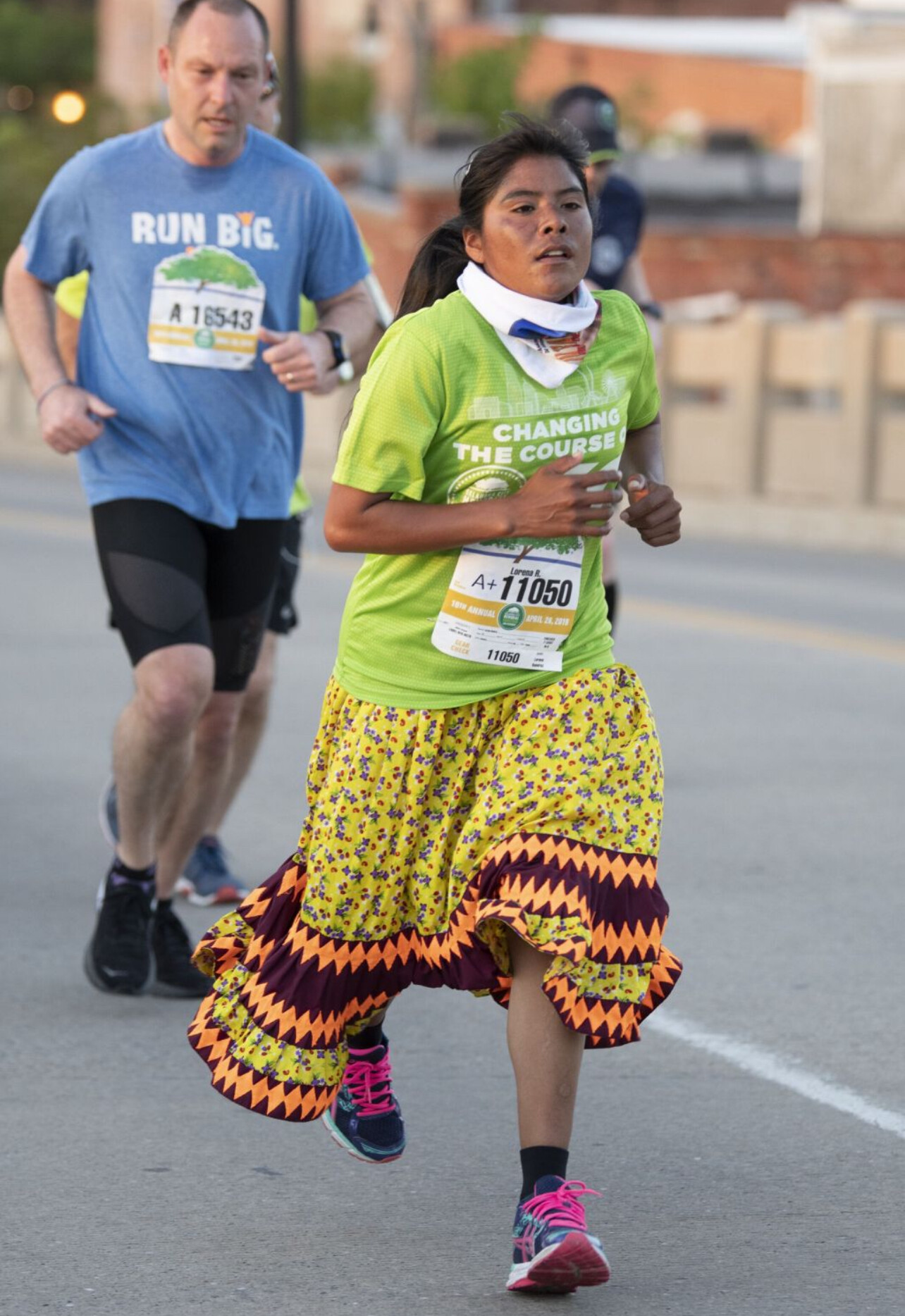
Ramírez first stunned the world in 2017 when she outran 500 competitors from 12 countries to win the UltraTrail Cerro Rojo, a brutal 50K mountain race in Mexico. She didn’t have a sports drink belt, a GPS watch, or cushioned running shoes—just a bottle of water, raw endurance, and the spirit of her ancestors.
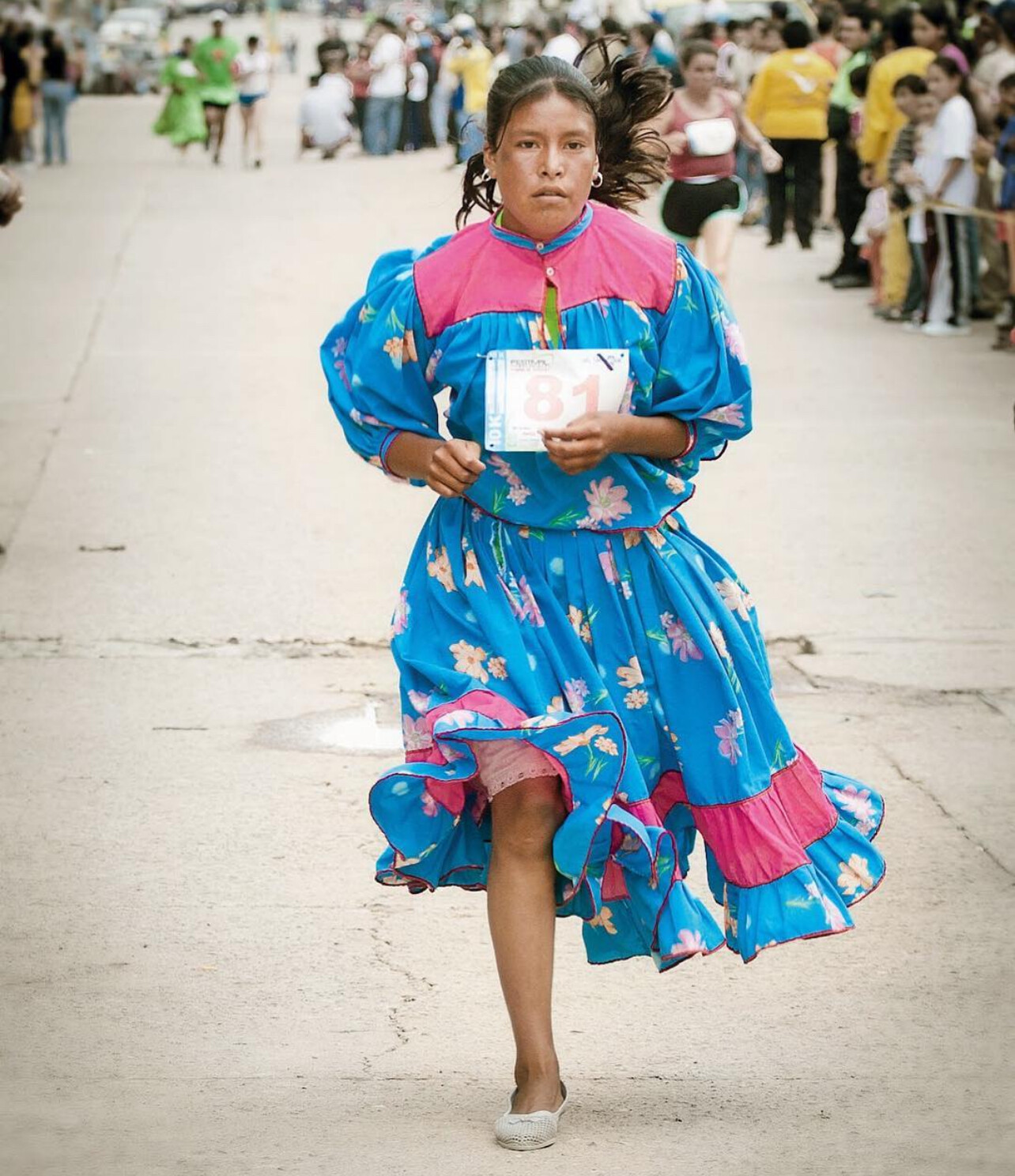
Her success didn’t stop there. Later that year, she competed in the 102K Cajamar Tenerife Bluetrailin Spain, one of the most grueling high-altitude races in Europe. Despite going up against seasoned ultrarunners with professional coaches and sponsorships, Ramírez held her own, reinforcing her status as one of the world’s most remarkable endurance athletes.
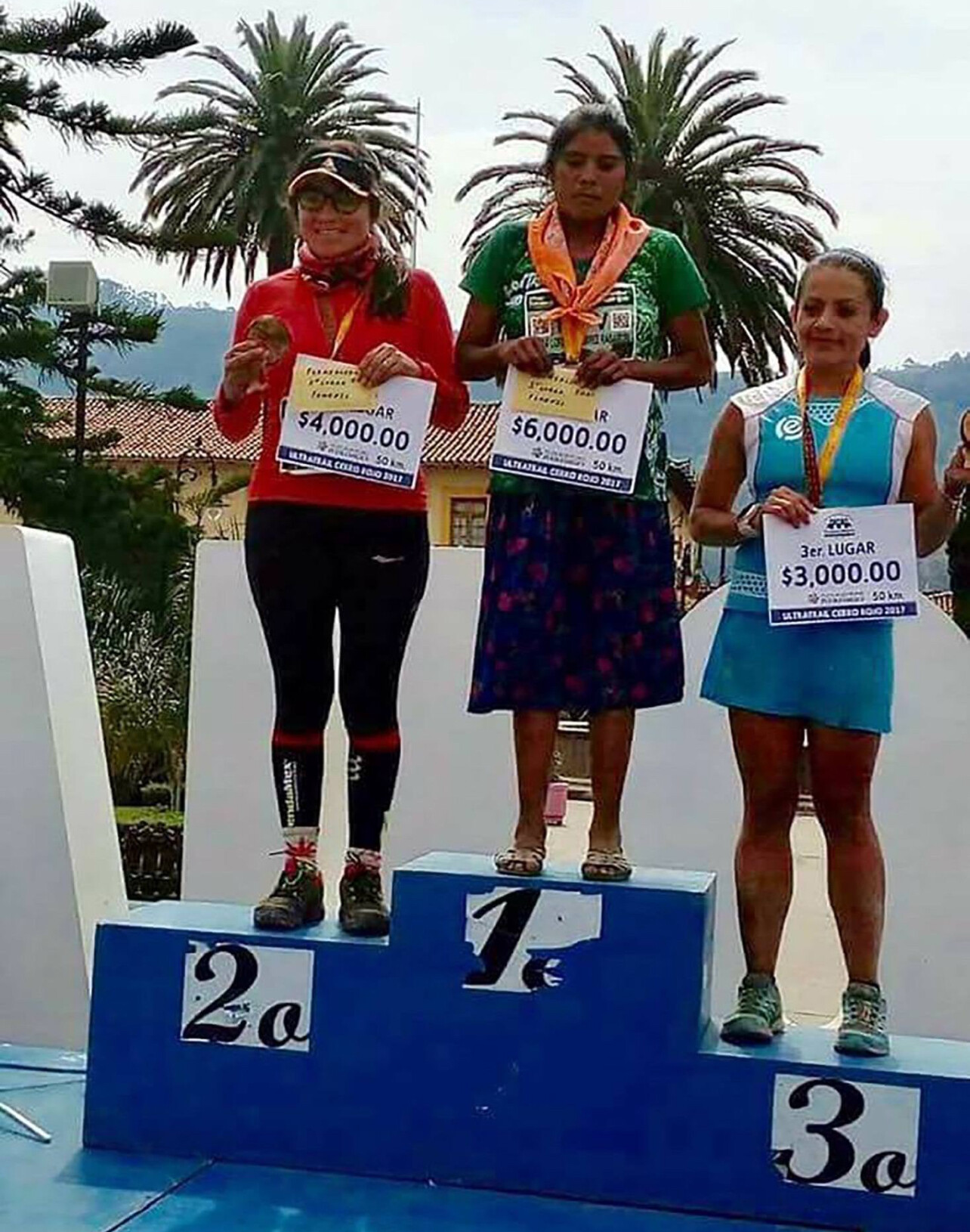
In 2025, she continued her dominance, finishing the Hong Kong Ultramarathon, a 100-kilometer race where she once again ran in her signature traditional attire and huarache sandals.
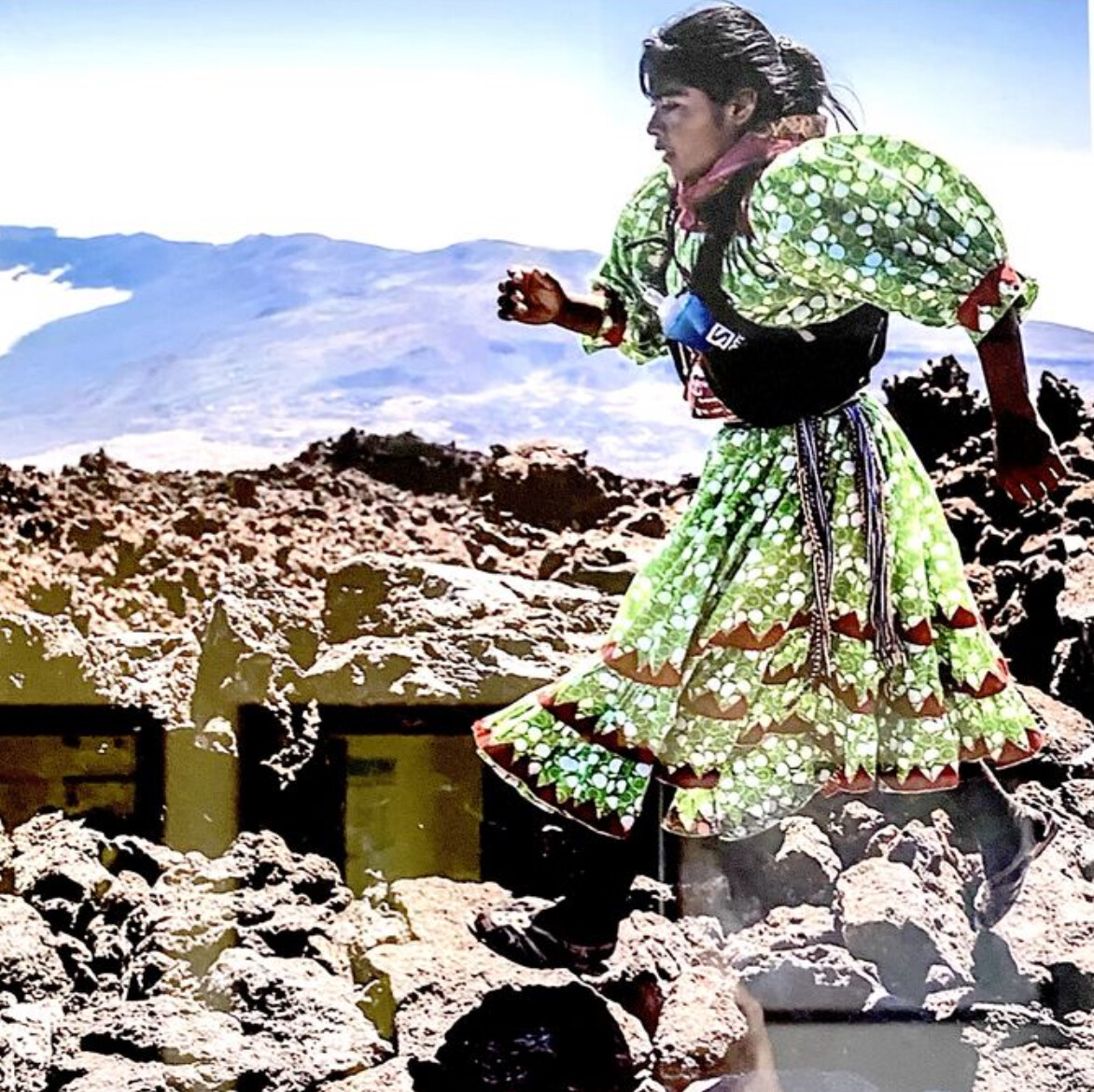
Training Through Life, Not Workouts

Unlike most elite runners, Ramírez doesn’t follow structured training plans. Her daily life is her training.
She spends her days in the mountains of Chihuahua, running 10–15 kilometers as she herds goats and cattle across steep, rocky terrain. Carrying water, climbing canyons, and trekking for hours are just part of her routine—without even realizing it, she has been building the stamina and strength of a world-class ultramarathoner her entire life.
For the Rarámuri (also known as Tarahumara) people, running isn’t just sport—it’s a way of life. Their name means “those who run fast,” and for centuries, they have run long distances for survival, hunting, and spiritual ceremonies. María Lorena Ramírez is simply continuing a tradition passed down through generations.
Rejecting Modern Running Shoes
Despite international fame, Ramírez refuses to abandon her roots.
When offered modern running shoes, she turned them down, saying:
“The people wearing them were always behind me.”
She has tried sneakers but prefers her handmade huarache sandals because they feel natural and keep her grounded. While others rely on energy-return soles and high-tech support, Ramírez relies on instinct, balance, and the resilience of her people.
A Champion on Her Own Path
María Lorena Ramírez is a reminder that greatness doesn’t come from expensive gear or specialized training—it comes from heart, resilience, and an unbreakable connection to one’s heritage.
She doesn’t run for fame or fortune—she runs because it’s part of who she is. And in doing so, she has redefined what it means to be a runner.
Her story is a testament to the power of the human spirit—a force stronger than any shoe, training program, or sponsorship. Sometimes, the purest strength comes from within—from those who trust their fire, run their own race, and, like Ramírez, leave everyone else in their dust.
Her journey is more than just running—it’s a movement that proves endurance is built on tradition, determination, and the will to keep moving forward.
by Boris Baron
Login to leave a comment
Ethiopia’s Mengesha wins Hong Kong-Zhuhai-Macau Bridge race
The Bank of China Hong Kong-Zuhai-Macau Bridge Half Marathon made a considerable improvement on its flawed previous edition as it was praised by elite and amateur runners on Sunday.
After criticism following the inaugural race 14 months ago, the logistical aspects were as important as the identities of the winners at this second event.
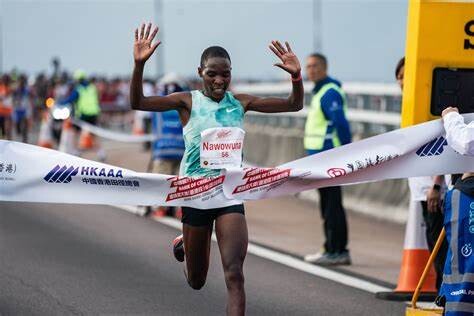
Handily for organizers, the first man and woman over the line, Milkesa Mengesha and Grace Nawowuna, were gushing in their assessments of the race, which is staged inside a border checkpoint at the Hong Kong end of the world’s longest sea-crossing bridge.
Ethiopian Mengesha, winner of last year’s Berlin Marathon, completed the 13.1 miles (21km) in one hour, one minute and 27 seconds, three seconds ahead of Patrick Mosin, from Kenya, who finished in 1:01.30.
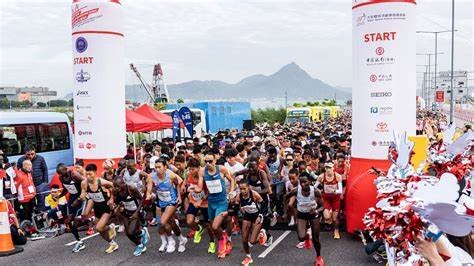
“I am so happy to win here, the level of everything has been perfect, even above my expectations,” Mengesha said.
The 21-year-old Kenyan Nawowuna clocked 1:07.56, ahead of compatriot Sheila Chelangat in 1:08.06. She said the mixed reviews of November 2023 had not been a factor when deciding whether to compete.
“The organisation was everything we could have asked for and Hong Kong is beautiful,” Nawowuna said.
Complaints following the debut race focused on a scarcity of toilets, delays transporting runners between their AsiaWorld-Expo assembly point and the course, an absence of food and shortage of drink, and a pre-race drop-off about a 1.5km walk from the start line.
Simon Yeung Sai-mo, chairman of the organising committee, said a backlash from “runners and the media” had prompted a host of changes.
“There were more than 70 toilets in the starting and finishing areas,” Yeung said. “The drop-off point was fewer than 500 metres from the start line and we provided food and drinks for runners.”
As they walked to the start, flanked by rows of portable toilets, some of the 8,000 runners were heard saying lessons had been learned. Out on the course, there were six water stations, with food available from those on the homeward straight.
The start was watched by government officials including Secretary for Culture, Sports and Tourism Rosanna Law Shuk-pui.
Fleets of buses were waiting to take runners back to AsiaWorld-Expo, where they were greeted with gift bags containing a banana, crackers, water and a towel, before collecting their bags.
Amateur runner Rick Yam said: “I heard a lot about last year, but there isn’t anything I can say that needs improving.
“We could see the start line when we got off the bus and the transport was good. It can’t be as easy as some other races, because we’re in an area where there is usually restricted access. Overall, it was pretty good.”
Fellow runner Alan Zagury said the toilets and shuttle bus service were faultless, but he would not be back for future editions “because it is a huge logistical headache”. “I left home at 4.30am, it’s now past 9.30am, which is far too much for a half-marathon,” he said.
Zagury also said the 45-minute wait in a confined area before starting was “too long and meant we could not warm-up”.
Given the race’s location, however, hanging around before starting was the nature of the beast.
Virginia Lo Ying-chiu, the first Hong Kong woman home in 1:16.45, said it had been a “privilege to be involved”. “I think the problems were solved,” she said. “We didn’t need to wait for toilets, or walk to the start line. The arrangement is much better.”
Japan’s 2018 Boston Marathon winner, Yuki Kawauchi, finished seventh in 1:07.52 before being mobbed for autographs and selfies. He said it had been a “good decision” to compete and rated the event above his own country’s Chiba Aqualine Marathon, where runners race on the bridge section of the Tokyo Bay Aqua-Line.
Yeung said the race would return next year, on condition of government support, but the plan was to make it “better rather than bigger”.
“If we increased numbers, it would not be a good experience for runners,” he said. “We can’t have any more, because we have to give the bridge back to the government as soon as possible.”
After assembling a strong international field, organisers were rewarded when World Athletics designated the event a Gold Label Road Race, one rung beneath its top-tier Platinum Label races.
by Paul McNamara
Login to leave a comment
Oscar Coggins returns to competition with LA28 in mind
The Hong Kong triathlete, who participated in the Tokyo 2020 Olympic Games, has overcome a stage of physical and mental challenges that temporarily took him away from competition last year. Now, with renewed passion, he plans a future full of great goals in which Los Angeles shines with intensity.
In statements to the South China Morning Post, Oscar Coggins reflected on his evolution following a self-imposed pause in his career. "I didn't feel bitterness or sadness watching the Paris Games on television. I accepted that my performance level wasn't there," he explained this week. Although he returned to competition this summer after eight months of inactivity, the triathlete did not take part in the Paris event, as it coincided with the early stages of his comeback.
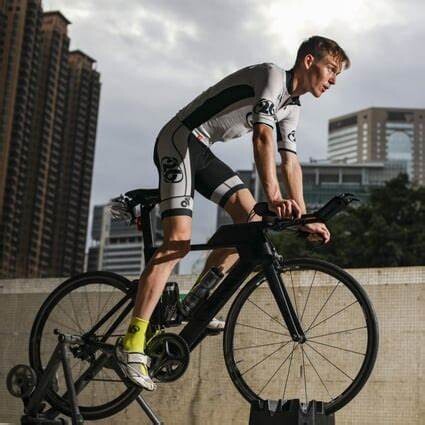
Coggins' return began in May, but it was in September, during his participation in the World Triathlon Championship Series (WTS) in Weihai, that he demonstrated he had completed his recovery process. This achievement marked the start of his comeback to the highest competitive level. "I would have done anything to compete in a WTS again, a year later, against all the best," he admitted, recalling his withdrawal during the 2023 Asian Games.
The athlete also shared how the pause helped him understand the impact of external factors on his performance. As he commented to the South China Morning Post in April, he acknowledged that stress had gone unnoticed for a long time. "If my training had been too intense, the cracks would have shown within weeks, but what I hadn't accounted for was the stress coming from external sources that I was enduring," he explained.
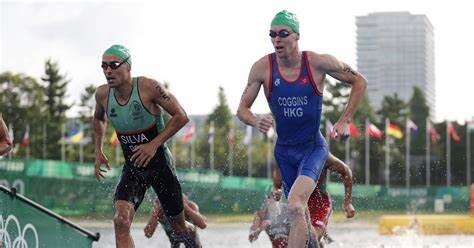
Coggins recounted that reaching this turning point was not easy. During the Asian Games, he abandoned the competition during the swimming stage, realising that his body "just wasn’t there." This episode led him to question his relationship with triathlon. "I thought: 'I hate this sport right now.' But I knew it wasn’t triathlon I hated; it was the negative emotions associated with my recent experiences," he remarked.
The change came alongside seeking professional help, as he turned to a clinical psychologist to manage the expectations he placed on himself and to rediscover his passion for the sport. "Making peace with my failures and mistakes is an ongoing process, but I’m getting better every day," he affirmed.
With a renewed perspective, Coggins is optimistic about both his immediate and long-term goals. Among his aims are participating in next year's National Games and pursuing medals at the 2026 Asian Games. However, his primary focus is on the Los Angeles 2028 Olympics, where he aspires to secure a top-10 finish.
"I'm still in this sport, enjoying it and excited about the competitions, which shows, to some extent, that the process is working," he stated. "I have many years ahead of me and am definitely aiming for Los Angeles 2028."
Coggins' story highlights not only the pressure faced by high-performance athletes but also the importance of addressing mental health. "I recognised there was a problem, and I couldn’t ignore it; I was adding an extra burden that I couldn't bear," he shared.
by Javier Carro
Login to leave a comment
LA 2028 Summer Olympics Games
Discover how the Los Angeles Candidature Committee describes their vision for the Games and the legacy they plan to leave behind: For centuries, people have been following the sun to California – to a coastal paradise of beautiful weather, inspiring landscapes and an ocean of possibilities. Since it was first settled, LA – the City of Angels – has built...
more...Gulveer Singh, Sanjeevani Jadhav headline Indian elite field at World 25K Kolkata
With World 25K Kolkata becoming the world’s first Athletic Gold Label race at this distance, the Indian elite field has swelled with 27 men and 13 women vying for the honours along the picturesque setting of the Red Road on December 15.
The USD 142,214 prize money race will witness some of India’s best athletes take centerstage. With equal prize money for the Indian elite men and women winners, the first three in each race stand to win Rs 3,00,000, 2,50,000, and Rs 2,00,000 respectively. The Indian elite men and women runners will also be further incentivised by an event record bonus of Rs 1,00,000 each.
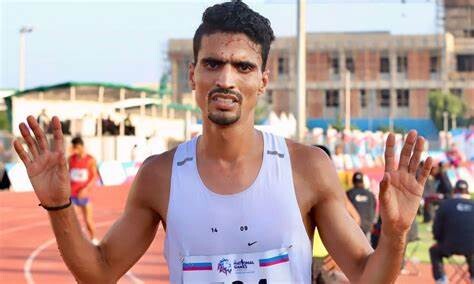
Avinash Sable holds the current event record in the Indian elite men’s category, with a time of 1:15:17, and L Suriya holds the women’s record, with a time of 1:26:53.
The well-stocked men’s field will be led by the current sensation Gulveer Singh, who is in the midst of a purple patch. He is the current 5000 m (13:11:82) and 10,000 m (27:14:88) national record holder, and has also won a gold medal at the 17th Asian Cross-Country Championship 2024 held in Hong Kong recently. He is also the Asian Games 2022 bronze medallist in the 10,000 m.
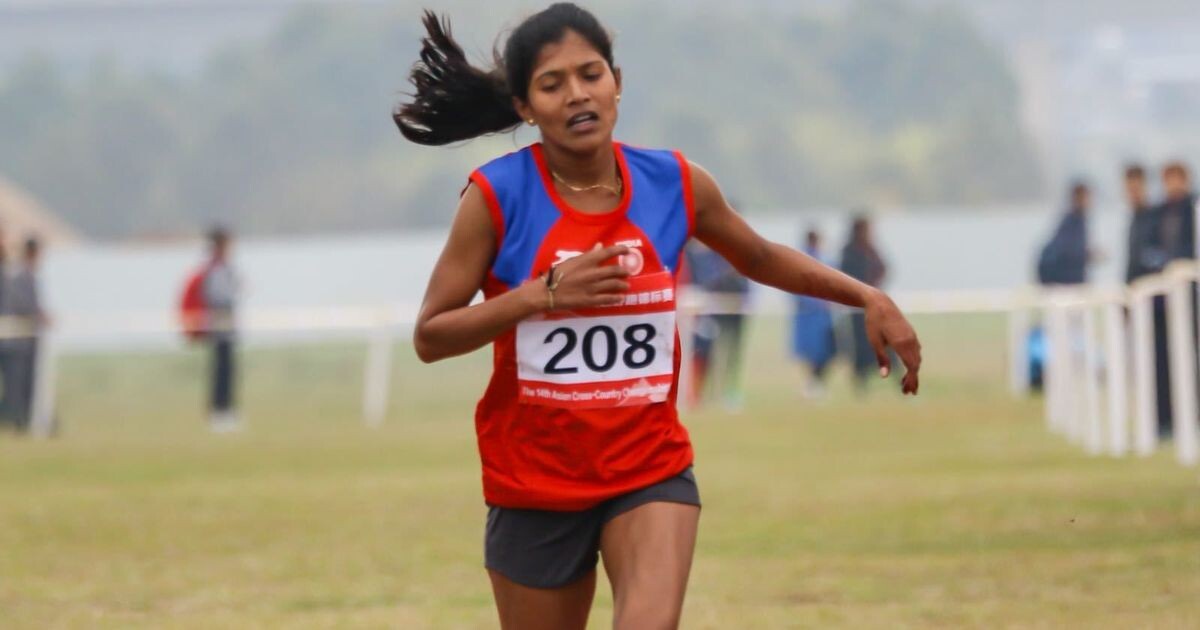
Sawan Barwal, the defending champion (1:17:49), returns to Kolkata after winning Delhi Half Marathon 2024 along with Abhishek Pal, the winner of the 2022 edition of TSK 25K. He also won a silver medal at the recently concluded Asian Cross-Country Championship and DHM 2023. The men’s challenge will also see Kiran Matre looking to be a dark horse with a top-of-the-podium finish in World 10K Bengaluru 2024 with a new Indian Course Record. He came third at DHM 2024.
While recounting his recent exploits Gulveer Singh said, “The 2024 session was very good for me. I set four national records in this session, and I’m so motivated. International standards are very high as compared to India. We got a pacer there to do our best. This is my first time in World 25K and I will try to finish in the top three.”
Sanjeevani Jadhav will be the pre-race favourite in the women’s field. She recently won the World 10K Bengaluru 2024 and also earned a silver medal at the Asian Cross-Country Championship. She was also the winner of the 2022 edition (1:34:23) of TSK 25K. She is in red hot form, but she will get tough competition from Lilli Das, who won the DHM 2024. Kavita Yadav, winner of DHM 2023 and second at DHM 2024, will be no pushover either.
“I am well prepared for the World 25K Race. The 2024 year was good for me individually, but I am more focused on 2025 because I am preparing for the Asian and World Championships, and I want to do my best in these championships.
“TSW 25K is more important because we get a chance to compete with the world’s best athletes, and it’s a great opportunity to give our best performance individually and do my personal best in the race. This year, I will try to break the course record my senior colleague L Suriya made earlier,” Sanjeevani said.
With a bright line-up of athletes only one can imagine the competition in store when the flag waves on Sunday.
by Statesman News Service
Login to leave a comment
Kolkata 25k
In Kolkata, a city rich in history, culture and custom, the third Sunday in December is a date that is eagerly anticipated. The Tata Steel Kolkata 25K (TSK 25K) has become synonymous with running in eastern India since it began in 2014. India’s first AIMS-certified race in the unique 25 km distance, the TSK 25K went global in its fourth...
more...Western States 100: Walmsley Wins a Fourth Time While Schide Rocks the Women’s Field
For hours, Katie Schide (pre-race and post-race interviews) chased ghosts. For hours, Jim Walmsley (pre-race and post-race interviews) and Rod Farvard (post-race interview) chased each other. And in the end, after 100 courageous, gutsy miles at one of the world’s most iconic ultramarathons, it was Schide and Walmsley who won a fast, dramatic 2024 Western States 100.
Schide, an American who lives in France, was on pace to break the course record until late in the race, while Americans Walmsley and Farvard battled throughout most of the second half of the race, alternating the lead as late as mile 85.
Schide’s winning time was 15:46:57, just over 17 minutes behind Courtney Dauwalter’s 2023 course record, almost an hour faster than her own time last year, and the second fastest women’s time ever. Walmsley, meanwhile, won his fourth Western States in 14:13:45, the second fastest time ever — only behind his own record of 14:09:28 that he set in 2019.
Second and third in the men’s race came down to an epic sprint finish on the track between Farvard and Hayden Hawks (pre-race and post-race interviews), who finished in 14:24:15 and 14:24:31, respectively.
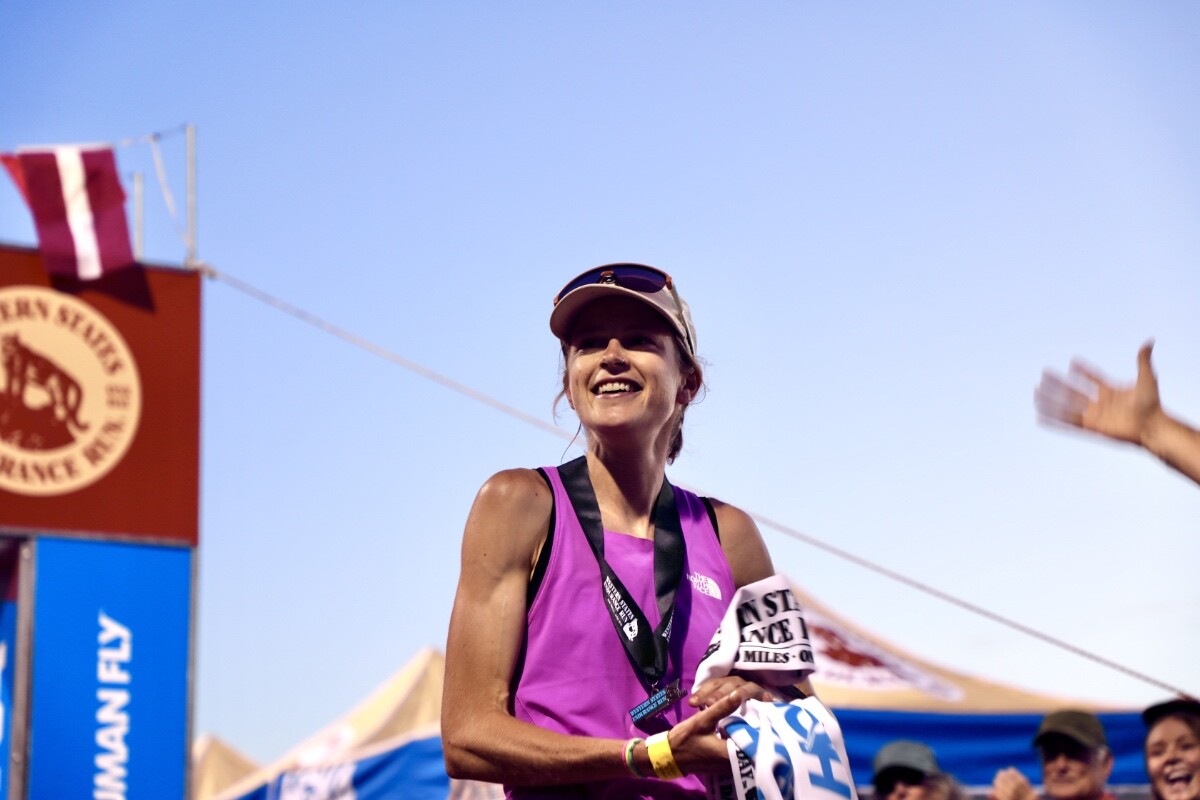
In the women’s race for the podium, Fu-Zhao Xiang (pre-race and post-race interviews) finished second in 16:20:03, and Eszter Csillag (pre-race and post-race interviews) took third for the second time in a row, in 16:42:17.
Both races featured one of the deepest and most competitive fields in race history, with the men’s top five all coming in faster than last year’s winning time, and the women’s top 10 finishing just under 40 minutes faster than last year’s incredibly competitive top 10.

At 5 a.m. on Saturday, June 29, they were all among the 375 runners who began the historic route from Olympic Valley to Auburn, California, traversing 100.2 miles of trail with 18,000 feet of elevation gain and 22,000 feet of loss. After last year’s cool temperatures, the weather at this year’s race was a bit warmer, albeit with a notable lack of snow in the high country. The high temperature in Auburn was in the low 90s Fahrenheit.
A special thanks to HOKA for making our coverage of the Western States 100 possible!
2024 Western States 100 Men’s Race
In his return to the race that propelled him to the heights of global trail running and his first ultra on American soil in three years, Jim Walmsley (pre-race interview) demonstrated why he is, once again, the king of Western States. Before the race, Walmsley exuded a calmness that perhaps eluded him during his first attempts, when he attacked it with an obsessive intensity that led him to famously take a wrong turn and then dropping out in back-to-back years.
“We’ll just roll with what plays out and just kind of see what happens in the race,” he said in his pre-race interview. There’s a marked difference when compared to his remarks from his interview before the 2016 race.
What happened in the race was this: In his fourth Western States, Rod Farvard (post-race interview) had the race of his life to push Walmsley like he’d never been pushed before in his long history with the event.
Farvard — a 28-year-old from Mammoth Lakes, California, who has improved his finish each year at the race, from a DNF in 2021 to 41st place in 2022 to 11th place last year — put himself in a strong position from the start, leading a large pack of runners that included Walmsley at the top of the Escarpment, the 2,500-foot climb in the first four miles of the race. For the next 45-plus miles, Farvard remained in the top 10, part of a chase pack of American Hayden Hawks (pre-race and post-race interviews), Kiwi Dan Jones (pre-race interview), and Chinese runner Guo-Min Deng, among others.
At the Robinson Flat aid station at mile 30 — the symbolic end of the runners’ time in the high country, which features an average elevation of around 7,000 feet — Walmsley, who started the race conspicuously wearing all black, came through in 4:24 looking fast and smooth, now wearing an ice-soaked white shirt. Jones, the 2024 Tarawera 102k champion and fifth-place finisher in his Western States debut last year, and Hawks, who set the course record at February’s Black Canyons 100k after dropping out of last year’s Western States, followed about 90 seconds later. The two runners, frequent training partners, ran together frequently throughout the day, with Hawks often foregoing ice at aid stations.
After the trio of Walmsley, Hawks, and Jones went through Last Chance at mile 43 together, Walmsley put nearly two minutes on them up the climb to Devil’s Thumb. “I was with everybody at the bottom,” he said, according to the race’s official livestream.
About halfway through, at mile 49.5, the order remained the same: Walmsley in the lead with an elapsed time of 6:58, followed by Jones one minute back, Hawks two minutes back, and Farvard just over two and a half minutes back. The rest of the top 10 were last year’s 17th-place finisher Dakota Jones; 2024 Transvulcania Ultramarathon champion Jon Albon (pre-race interview), who is from the U.K. but lives in Norway; 2023 fourth-place finisher Jia-Sheng Shen (China) (pre-race interview); 2023 Canyons 100k champion Cole Watson; Western States specialist Tyler Green (pre-race interview); and Jupiter Carera (Mexico).
Then began a thrilling, chaotic second half of the race — featuring a gripping back-and-forth between Walmsley and Farvard, a wildfire near the course, a two-man river crossing, and a sprint finish on the track.
It all started when Walmsley entered Michigan Bluff at mile 55, again looking calm and in control, changing shirts and getting doused with ice. Farvard came in just behind him and left the aid station first, leading the race for the first time since the first climb up the Escarpment. The same routine took place seven miles later at Foresthill: Walmsley entering first, Farvard leaving first.
For the next 18 miles, the two runners alternated in the lead. By mile 78, they were so close that they were crossing the American River at the same time. Their battle underscored the overall depth of the field at this year’s race: At mile 80, the top five men were within 16 minutes of one another.
Around then, the 15-acre Creek Fire, which started not long before, was visible from the final quarter of the course and crews were temporarily not permitted to travel to the Green Gate aid station at mile 80 because the route to it passed close to the fire. Eventually, a reroute was established for crews to get to Green Gate and, later, after the wildfire was controlled, the regular route was reopened.
At Green Gate, Farvard came through in the lead, with Walmsley four minutes back and looking like he was hurting. It was then, perhaps, that the thought entered people’s minds: Could Farvard really take down the champ?
But Jim Walmsley is Jim Walmsley for a reason, and he again proved why he is among the world’s best. Against the ropes, facing one of his first real challenges in the race that shaped him, he delivered, entering the next aid station, Auburn Lake Trails at mile 85, more than a minute earlier than Farvard. He had made up five minutes in five miles.
Walmsley never trailed again, increasing his lead to 11 minutes by the Pointed Rocks aid station at mile 94 and then picking up his crew, including his wife, Jess Brazeau, at Robie Point to run the final mile with him. He entered the track at Placer High School to loud cheers, his loping stride still looking smooth, stopping a few steps short of the tape to wave to the crowd and raise his arms in triumph. He had done it again.
Behind him, Farvard was fading but determined to cap an extraordinary race with a second-place finish. Hawks, who had made up five minutes on Farvard in the couple miles between Pointed Rocks and Robie Point, was on the hunt, and by the time he stepped on the track, Farvard was within sight.
It was then that fans were treated to one of the most unique sights in all of ultrarunning: After 100 miles of racing, two men were sprinting against each other on a track. In the end, Farvard’s lead held, and he finished 16 seconds ahead of Hawks. He collapsed at the finish line — a fitting end to an epic performance.
Dan Jones ended a strong race with a fourth-place finish in 14:32:29, with Caleb Olson capping an impressive second half of the race — from 11th at mile 53 to fifth in 14:40:12 at the finish. All five men ran a time that would have won the race last year.
Behind Olson came Jon Albon, running 14:57:01 in his 100-mile running-race debut, followed by the surgical Tyler Green, who finished in seventh for his fourth straight top 10 finish at the race. Green’s time of 15:05:39 also marked a new men’s masters course record, breaking the 2013 Mike Morton record of 15:45:21.
Rounding out the top 10 were Jia-Sheng Shen in eighth with a time of 15:09:49, Jonathan Rea in ninth who methodically moved his way up during the last 60 miles to finish in 15:13:10; and Chris Myers in 10th in 15:18:25.
2024 Western States 100 Women’s Race
Through the high country, into and out of the canyons, and along the river of the world’s oldest 100-mile trail race, Katie Schide (pre-race and post-race interviews) raced only the ghosts of the clock and history. Smiling throughout, she seemed unaffected by the solitude and the enormity of the possibility that lay before her: to attempt to break the course record of one of the world’s most iconic trail races.
Schide, an American who lives in France, came into the race as the clear favorite, and for good reason: She finished second last year, breaking Ellie Greenwood’s previously untouchable 2012 course record by more than three minutes and losing to only Courtney Dauwalter, who broke Greenwood’s record by an astounding 78 minutes on her way to a historic Western States-Hardrock 100-UTMB triple win. Schide, winner of the 2022 UTMB and 2023 Diagonale des Fous 100 Mile, spent the last two-and-a-half months in Flagstaff, Arizona, training for Western States, winning this year’s Canyons 100k in an impressive tune-up and putting in a monster training block.
In her pre-race interview, Schide said that she had thought about ways to improve her race from last year, which perhaps should have been the first warning to her competition. The second, then, was her immediate separation from the women’s chase pack: She summited the Escarpment, a 2,500-foot climb during the first four miles, in first place and never looked back. By the first aid station — Lyon Ridge at 10 miles — she was already 12 minutes under course record pace, and by Robinson Flat at mile 30, she was 21 minutes ahead of second-place Emily Hawgood (pre-race interview), from Zimbabwe but living in the U.S.
The lead only ballooned from there. By Dusty Corners at mile 38, Schide was an incredible 26 minutes under course record pace, and though she lost a few minutes from that pace by the time she climbed up to Michigan Bluff at mile 55, her smile had not waned even slightly. She smoothly entered the iconic aid station, doused herself with ice, changed shirts, and was soon on her way. She never sat down.
Twenty-seven minutes behind her was Hawgood, looking to build on back-to-back fifth-place finishes. Eszter Csillag (pre-race and post-race interviews), a Hungarian who lives in Hong Kong, followed soon after, in the same third spot she finished in last year.
After them ran a dense pack of women: Only 16 minutes separated Hawgood in second from Lotti Brinks in 11th.
At the halfway point, the top 10 were Schide, 33 minutes up in an elapsed time of 7:26; Csillag; Hawgood; Chinese runner Fu-Zhao Xiang (pre-race and post-race interviews), the fourth-place finisher at last year’s UTMB; Lin Chen (China); American Heather Jackson, a versatile former triathlete who recently finished fifth at a competitive 200-mile gravel bike race; ultrarunning veteran Ida Nilsson (pre-race interview), a Swede living in Norway; Becca Windell, second in this year’s Black Canyon 100k; 2023 CCC winner Yngvild Kaspersen (Norway); and Rachel Drake, running her 100-mile debut.
Schide, easily identifiable in her pink shirt, maintained her large lead throughout the second half of the race, remaining calm, controlled, and upbeat throughout the tough canyon miles. By Foresthill at mile 62, she was 19 minutes ahead of course record pace and 48 minutes ahead of the second-place Xiang. Schide’s stride still looked smooth as she waved to fans and even high-fived a cameraman.
Schide’s aggressive pace eventually slowed — by Green Gate at mile 80, her lead on the course record had dissipated — but her spirits did not. After a quick sponge bath at Auburn Lake Trails aid station at mile 85, she fell behind course-record pace for the first time all day, only 15 miles remained until the finish.
Schide entered the track a couple of hours later, running with her crew and no headlamp. She would finish before dark. She stopped for a hug on the final straightaway and lifted the tape with, of course, a smile.
Xiang had methodically pulled away from Hawgood and Csillag during an incredibly strong second half to win the battle for second. Fu-Zhao Xiang finished in 16:20:03 for the third fastest time in race history. Chen, who dropped out at mile 78, was one of the few elite runners who had a DNF on this day, which was categorized by a lack of attrition in both the women’s and men’s elite races.
Eszter Csillag came in about 22 minutes behind Xiang in 16:42:17 for her second consecutive third-place finish, a 30-minute improvement from last year — a statistic that perhaps exemplifies the speed of this year’s race better than any other.
The battle for fourth and fifth was nearly as close as Farvard and Hawks’s race for second in the men’s race a couple of hours earlier.
At Pointed Rocks at mile 94, Hawgood led by barely two minutes, running hard and straight through the aid station. Kaspersen, meanwhile, was drinking Coke and made up almost a minute by Robie Point.
Emily Hawgood’s lead ultimately held, and she finished fourth in 16:48:43 to improve her finish from prior years by one spot. Yngvild Kaspersen was less than two minutes back in 16:50:39. Ida Nilsson capped a strong day to finish sixth in 16:56:52 and break Ragna Debats’s masters course record by almost 45 minutes. That means the top six women all finished in under 17 hours in a race that had only ever had three women finish under that mark — and two of them, Dauwalter and Schide, were last year.
The rest of the top 10 were Heather Jackson in seventh in 17:16:43, and, in close succession, Rachel Drake in 17:28:35, Priscilla Forgie (Canada) in 17:30:24, and Leah Yingling in 17:33:54.
The top 10 women were all faster than the 12th-fastest time in race history going into the day.
by Robbie Harms
Login to leave a comment
Hardrock 100
100-mile run with 33,050 feet of climb and 33,050 feet of descent for a total elevation change of 66,100 feet with an average elevation of 11,186 feet - low point 7,680 feet (Ouray) and high point 14,048 feet (Handies Peak). The run starts and ends in Silverton, Colorado and travels through the towns of Telluride, Ouray, and the ghost town...
more...Stephen Mokoka — Ready to tackle the Two Oceans Marathon
Stephen Mokoka is arguably South Africa’s best all-round road athlete and one of the most consistent marathoners. He already boasts a proud Totalsports Two Oceans record – five gold medals out of five starts, including four wins, in the competitive Two Oceans Half Marathon.
But this year he steps up to the ‘big daddy’ in his first race in excess of 50km.If there had ever been any doubt about Mokoka’s ability to stay the pace beyond the standard marathon 42km, his world record win at the Runified 50km in Gqeberha in March 2022, which he won in 2:40:13, would have dispelled them. Had there been suspicions that the 39-year-old, Mokoka might have slowed in recent years, his 2:06:42 marathon PB in Japan last February – just 9 seconds outside Gert Thys’ national record – would have shushed the nay-sayers in no uncertain terms.
Mokoka has chosen to race the 2024 Totalsports Two Oceans 56km as part of his build-up to the Olympic Marathon in Paris in August and while Magawana’s mark may not be in Mokoka’s sights this year, there is little doubt that Mokoka’s stepping up to the 56km race has placed it in mortal danger in the not-too-distant future.
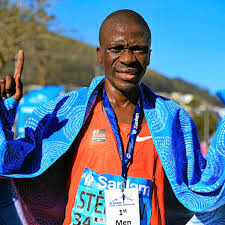
“I never met Thompson Magawana,” Mokoka admitted from Taipei on the weekend, where he competed in the New Taipei City Marathon. “But his time in the Two Oceans is impressive. From my side, I feel I need to learn the distance first. Before Gerda broke the women’s record, she had run it twice before.
“I don’t have the record in mind this year. My goal is to get strength and use the hills in preparation for the Olympic Marathon, which has an elevation gain of over 430 metres. I’ve seldom run a hilly marathon, only Cape Town Marathon in 2022 (which had a 380m elevation gain), so that’s why I chose to run the Hong Kong and Taipei Marathons (both incorporate testing climbs) this year in preparation for Two Oceans.
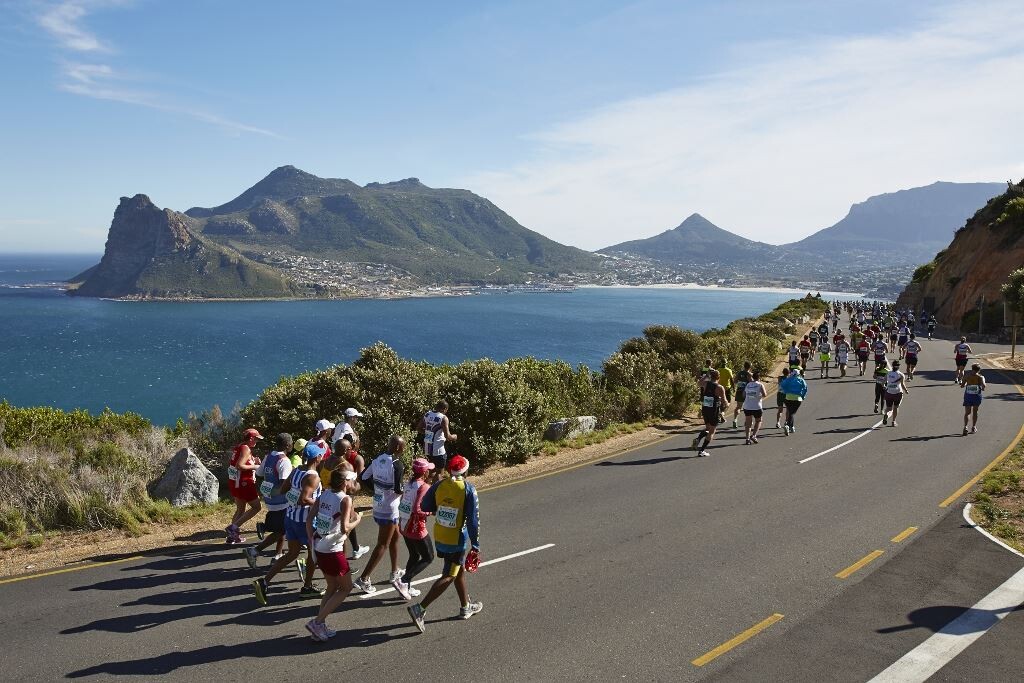
“As I’m new at the distance, my goal for this year is to have fun, enjoy and learn. I will need to build more strength and endurance to have a go at the record. Maybe in the next year or two.”
Unlike at the testing Hong Kong Marathon, where Mokoka raced to a competitive second in 2:12:58 in January this year, just 8 seconds behind Kenyan Anderson Seroi, Mokoka’s approach to the New Taipei City Marathon, just four weeks before the Two Oceans, was to use the hilly marathon as a training run, which he completed in a comfortable 2:24:20.
“The Taipei Marathon didn’t really disrupt my training.” Mokoka explained. “I arrived just three days before the race and travelled back home soon after. My target was to run 2:15 through 40km and I went through in 2:16. I plan to take off three days, just running easily, before my last block of training for Two Oceans. There is still much hard work ahead as we move into a speed cycle.”
Mokoka enjoys racing in Cape Town, the scene of multiple racing titles on road and track, and is excited about incorporating new elements to his training for the Two Oceans with his long-time coach, Michael ‘Sponge’ Seme.
“Much has changed in my training programme for the Oceans with longer runs incorporating longer hills,” Mokoka continued. “I’m no longer doing the sessions I did in my preparation for the 50km. Everything is new – I enjoy that.
“Taipei was my last longer run and from now I’m back to normal marathon preparation – the toughest part is behind me and now I’m back to something which I’m familiar with.”
Mokoka recently moved from the red-vested Boxer Club to Hollywood Athletics Club’s distinctive purple, saying the club has given him a new lease of life. “Hollywood’s priorities are different and I’m glad they are on board with all the things I mentioned before signing with them.
“They’re happy with my limited and focused schedule – Hong Kong Marathon, Totalsports Two Oceans then Olympics. They have made it possible for me to train at high altitude in Kenya for a solid block prior to the Olympics. I’ll be training with Kenyan athletes such as Cyrus Mutai, who won the New Taipei Marathon.”
Training with the Kenyans could take Mokoka to new heights, but before that is a date with ‘The World’s Most Beautiful Marathon’ and Two Oceans Marathon destiny. And in time, Magawana’s history.
Login to leave a comment
Two Oceans Marathon
Cape Town’s most prestigious race, the 56km Old Mutual Two Oceans Ultra Marathon, takes athletes on a spectacular course around the Cape Peninsula. It is often voted the most breathtaking course in the world. The event is run under the auspices of the IAAF, Athletics South Africa (ASA) and Western Province Athletics (WPA). ...
more...Gotytom Gebreslase hopes to break Nahoya course record
In advance of the highly anticipated race scheduled for this Sunday, March 10, 2024, the Nagoya Women’s Marathon held a pre-race press conference for the invited elite athletes today in Nagoya, Japan.
Gotytom Gebreslase (ETH), 2022 Oregon World Champion and 2023 Budapest World Championships silver medalist said, “My goal for Sunday is to run under two hours 18 minutes, and if the weather and pacemakers are good, I will try to break the course record of 2:17:18.” Her competitor Eunice Chebichii Chumba of Bahrain, 2023 Asian Games Champion said, “My preparation has been going well, and my focus will be to improve my personal best of 2:20:02.”
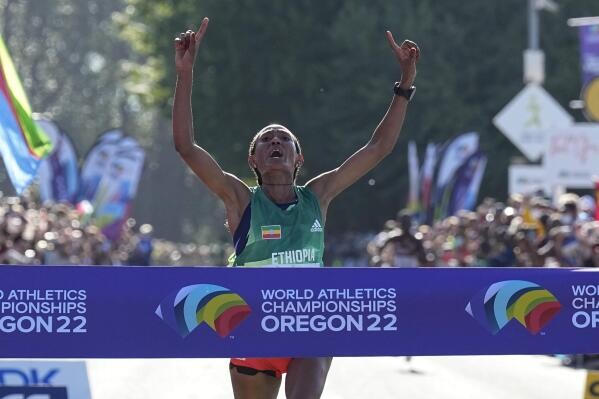
For Japanese athletes, the Nagoya Women’s Marathon 2024 will be the last chance to win a place in the Paris Olympics team by beating the new national record of 2:18:59 just set by Honami Maeda this January.
The 2020 Tokyo Olympians Ayuko Suzuki will aim to break the target of 2:18:59 so she can compete in the Olympics again to show what she really can do, adding that she was ready to turn the support of the local spectators of her hometown Aichi into strength. Sharing the same goal with Ayuko, Rika Kaseda commented that she had prepared for a high-speed race and would challenge herself to keep up with the pace of other fast athletes to grab the last ticket for Paris 2024.
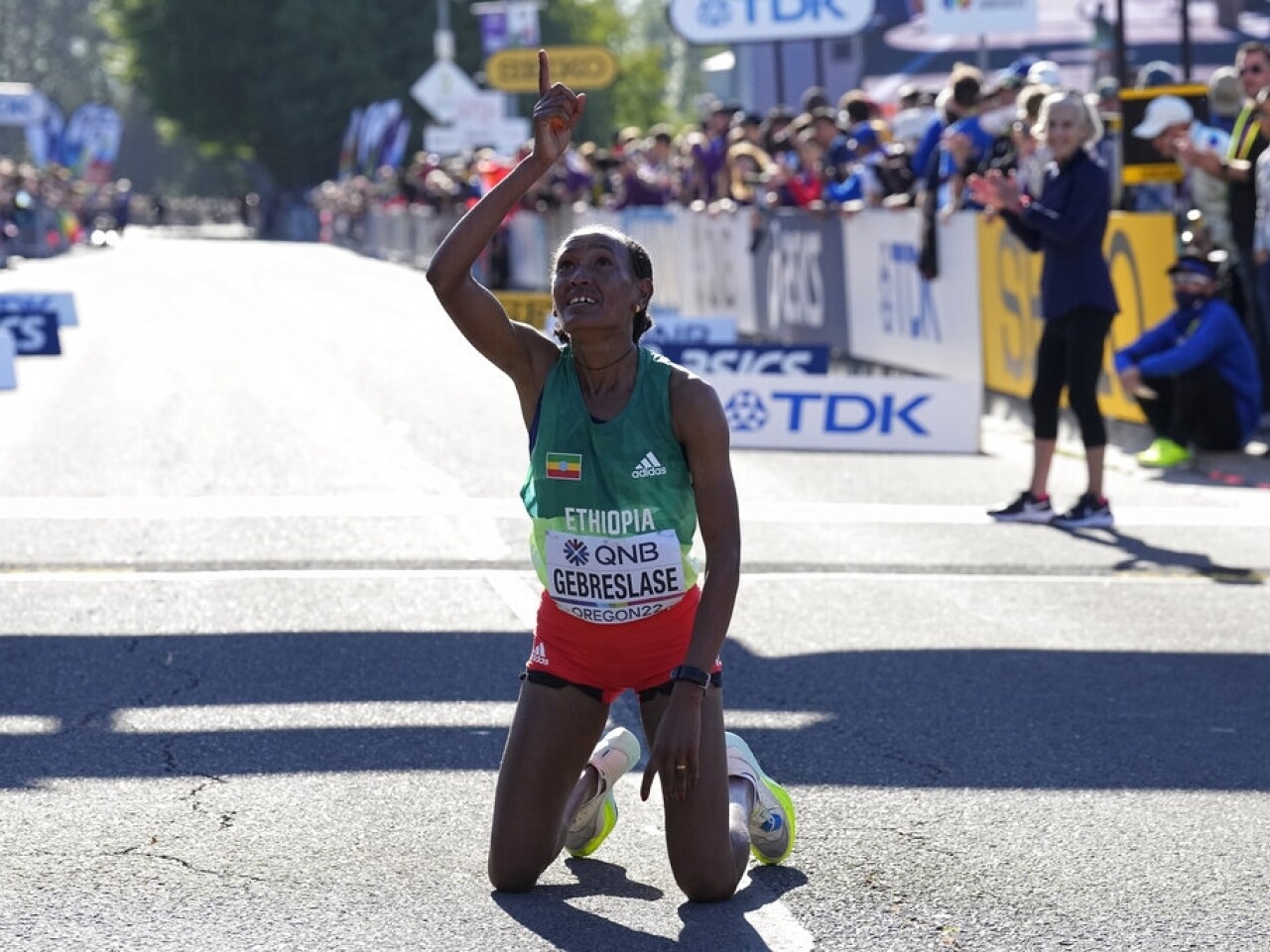
In addition to these top elite athletes, many recreational runners will join the Nagoya Women’s Marathon 2024 from home and abroad, making it an exciting race with 18,000 participants. All finishers will be presented with an event’s exclusively designed Tiffany & Co. pendant and a New Balance T-shirt as the finisher prize.
Sunday’s race will be streamed live free of charge to 37 countries and regions (Argentina, Australia, Bahrain, Brazil, Brunei, Cambodia, Chile, Colombia, Egypt, Ethiopia, France, Germany, Hong Kong, Indonesia, Israel, Italy, Kenya, Macau, Malaysia, Mexico, Monaco, Myanmar, Namibia, Netherlands, New Zealand, Papua New Guinea, Philippines, Puerto Rico, Romania, Singapore, South Africa, South Korea, Spain, Taiwan, Thailand, United Kingdom, and United States of America) on the race’s official website at https://womens-marathon.nagoya/en/broadcast.php. Stay tuned for the race to start at 9:10 a.m. on Sunday, March 10, 2024, Japan time.
by AIMS
Login to leave a comment
Nagoya Women's Marathon
The Nagoya Women's Marathon named Nagoya International Women's Marathon until the 2010 race, is an annual marathon race for female runners over the classic distance of 42 km and 195 metres, held in Nagoya, Japan in early March every year. It holds IAAF Gold Label road race status. It began in 1980 as an annual 20-kilometre road race held in...
more...Kenyan Anderson Seroi conquers Hong Kong Marathon
Kenya's Anderson Seroi wins Hong Kong Marathon, vows to return for a faster finish amid strong international competition.
Kenya’s Anderson Saitoti Seroi triumphed in the Hong Kong Marathon completing the grueling course in an impressive time of two hours, 12 minutes, and 50 seconds.
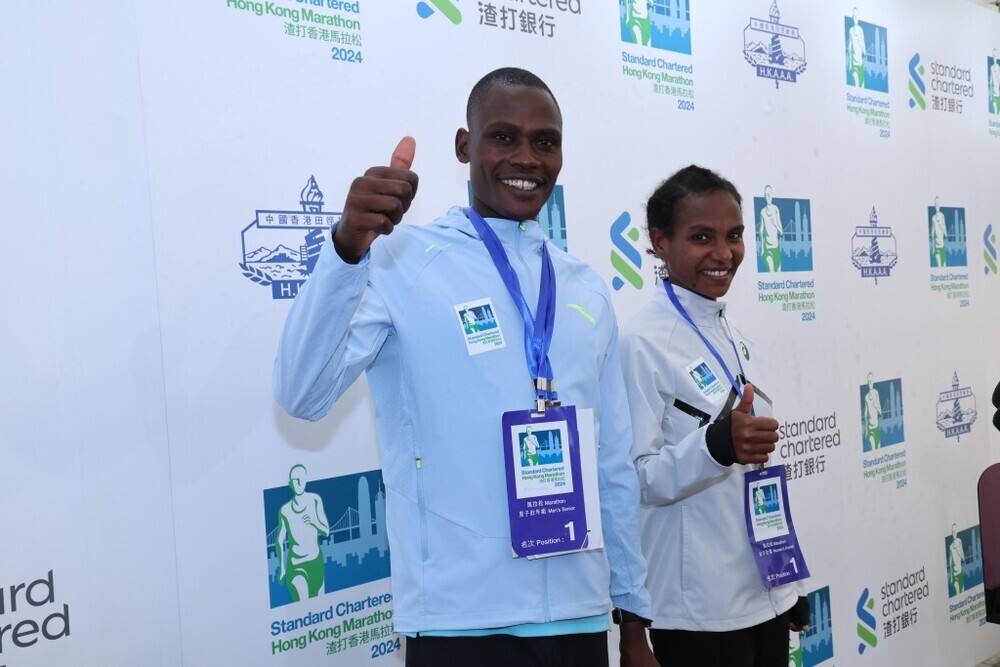
Seroi's victory came amidst challenging conditions, yet his resolve remained unshaken as he immediately set his sights on returning next year for an even swifter conquest.
The race, held on Sunday, saw Seroi narrowly outpace South Africa’s seasoned runner Stephen Mokoka, who secured the second spot with a time of 2:12:58.
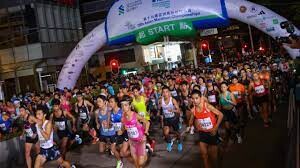
Mekuant Ayenew from Ethiopia rounded out the top three, finishing in 2:13:09.
This year's marathon was marked by a moderate temperature of around 15 degrees Celsius (59 degrees Fahrenheit) at the start, providing somewhat ideal conditions for the runners.
In the women’s category, Ethiopia’s Medina Armino emerged victorious, clocking in at 2:28:47.
She was closely followed by Beatrice Cheptoo and Gadise Mulu, who completed the race in 2:29:30 and 2:29:46, respectively.
Despite the physical toll of the race, Seroi's spirit remained high.
Post-race, he expressed his gratitude and affection for the city of Hong Kong.
“First of all, I want to thank God for the win, but also Hong Kong, it’s a beautiful city,” Seroi said.
“I feel really good, the course is tough but I enjoy running it.” His determination was evident, as he pushed himself to the brink of exhaustion, even experiencing sickness after crossing the finish line.
Seroi, 30, is already planning his return, aiming to shatter his current record.
"I ran two hours 12 this year, so next year I’ll aim for two hours 10," he stated, showcasing his relentless ambition.
His 2024 goal is a testament to his unwavering commitment to excellence in the sport.
In a historical context, Seroi's time this year marks a significant achievement, but it also serves as a reminder of the fiercely competitive nature of the marathon.
In 2023, a time of 2:12:00, achieved by Senbeta Geza Tadease, was only good enough for third place, highlighting the continually evolving standards in marathon running.
The event also doubled as the Asian Marathon Championships, where India’s Man Singh claimed gold with a time of 2:14:19.
He was followed by China’s Huang Yongzheng and Kyrgyzstan’s Ilya Tiapkin, who finished in 2:15:24 and 2:18:17, respectively.
by Festus Chuma
Login to leave a comment
HONG KONG MARATHON
The Hong Kong Marathon, sponsored by Standard Chartered Bank, is an annual marathon race held in January or February in Hong Kong. In addition to the full marathon, a 10 km run and a half marathon are also held. Around 70,000 runners take part each year across all events. High levels of humidity and a difficult course make finishing times...
more...Defending champion Philimon Kipchumba faces stern test at Xiamen Marathon
Defending champion Philimon Kiptoo Kipchumba will be out to defend his Xiamen Marathon title as he is up against a strong field.
Defending champion Philimon Kiptoo Kipchumba will be hoping to defend his title as he gears up to face tough opponents at the Xiamen Marathon on Sunday, January 7.
Kipchumba will face a stern test since 12 men, including the Kenyan, have personal best times faster than the course record of 2:06:19 set by Moses Mosop in 2015.

The 25-year-old Kenyan will arrive in Xiamen with high spirits since he remained unbeaten last year, winning all three of his marathon races and he will keenly be hoping to maintain the same momentum this season.
After a 2:10:47 victory in Hong Kong last February, he clocked 2:08:04 to win in Xiamen and continued his winning streak in Shanghai in November with a winning mark of 2:05:35, beating Mosop’s course record in Xiamen to become the Chinese all-comers’ record-holder.
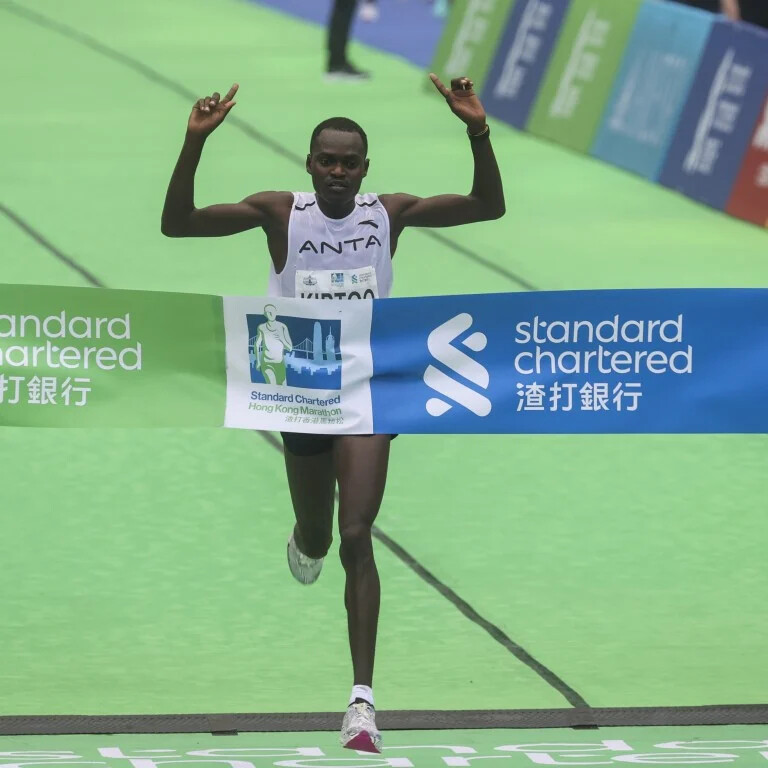
Former world half marathon record-holder Kibiwott Kandie will also be pursuing his first-ever marathon title in Xiamen.
Chalu Deso of Ethiopia is also a formidable competitor after finishing seventh behind Kandie in Valencia last month in 2:05:14 and his career best of 2:04:53 was also achieved in the Spanish city in 2020.
Last year, Deso claimed the Tokyo Marathon title in 2:05:22 and he also owns marathon titles in Paris and Porto to his name. After outings in Nanjing and Dalian in 2018, the Xiamen Marathon will be Deso’s third race in China.
Philemon Kiplimo of Kenya is another sub-2:05 runner in the field and unlike Kandie and Deso, Kiplimo will arrive in the Chinese coastal city on fresh legs. His last marathon race was contested more than three months ago when he clocked a PB of 2:04:56 to finish eighth in Berlin.
Also toeing the line are several sub-2:06 runners, including Moroccan record-holder Othmane El Goumri, who set a PB of 2:05:12 to finish second in Barcelona last March and went on to win the Sydney Marathon in 2:08:20 six months later.
Meanwhile, the women’s race will see Ethiopia’s Gotytom Gebreslase also take on a tough field. The Ethiopian clocked a Personal Best time of 2:18:11 when claiming the world title in Oregon in July 2022.
She also registered another sub-2:20 mark when finishing third at the 2022 Tokyo Marathon in 2:18:18 and took a 2:20:09 victory at the Berlin Marathon in 2021.
Fellow Ethiopian Megertu Alemu is the fastest woman on paper with a career-best of 2:17:09 and will be joined by Ruti Aga, also from Ethiopia.
Other women to watch in the field include Tanzanian marathon and half marathon record-holder Magdalena Shauri, whose PB of 2:18:41 was set last September when finishing third at the Berlin Marathon, as well as Fatima Ezzahra Gardadi of Morocco, a 2:25:03 performer who claimed the marathon bronze medal at last year’s World Championships in Budapest.
by Abigael Wuafula
Login to leave a comment
CD XIAMEN INTERNATIONAL MARATHON
The C&D Xiamen International Marathon is an annual marathon race held in January in the coastal city of Xiamen in Fujian province, People’s Republic of China. Every January, the first medal of marathon race around the world is awarded here. The race has become a golden name card of Xiamen, showing its splendor to the whole world.It is one of...
more...Ethiopians Gebreslase, Alemu and Aga set to race in Xiamen
The Xiamen Marathon, a World Athletics Platinum Label road race, on Sunday (7) will witness the fastest marathon pack ever assembled in China, with 2022 world champion Gotytom Gebreslase heading a stacked field in the women’s race.
The 28-year-old Gebreslase of Ethiopia clocked her personal best of 2:18:11 when claiming the world title in Oregon in July 2022. She also registered another sub-2:20 mark when finishing third at the 2022 Tokyo Marathon in 2:18:18 and took a 2:20:09 victory at the Berlin Marathon in 2021.
Last year, Gebreslase clocked 2:24:34 to grab a silver medal at the World Athletics Championships Budapest 23, which remains her last outing over the classic distance.
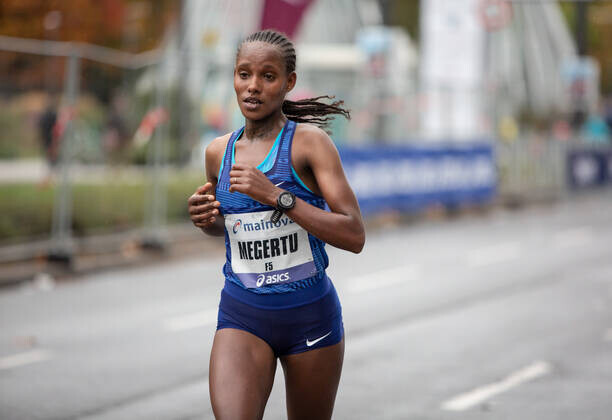
It will be the first time for Gebreslase to compete in Xiamen, a southeastern Chinese city, and she will be targeting not only the title, but also the course record of 2:19:52 set by her compatriot Mare Dibaba back in 2015.
Fellow Ethiopian Megertu Alemu is the fastest woman on paper with a career best of 2:17:09 achieved last October when finishing third at the Chicago Marathon.
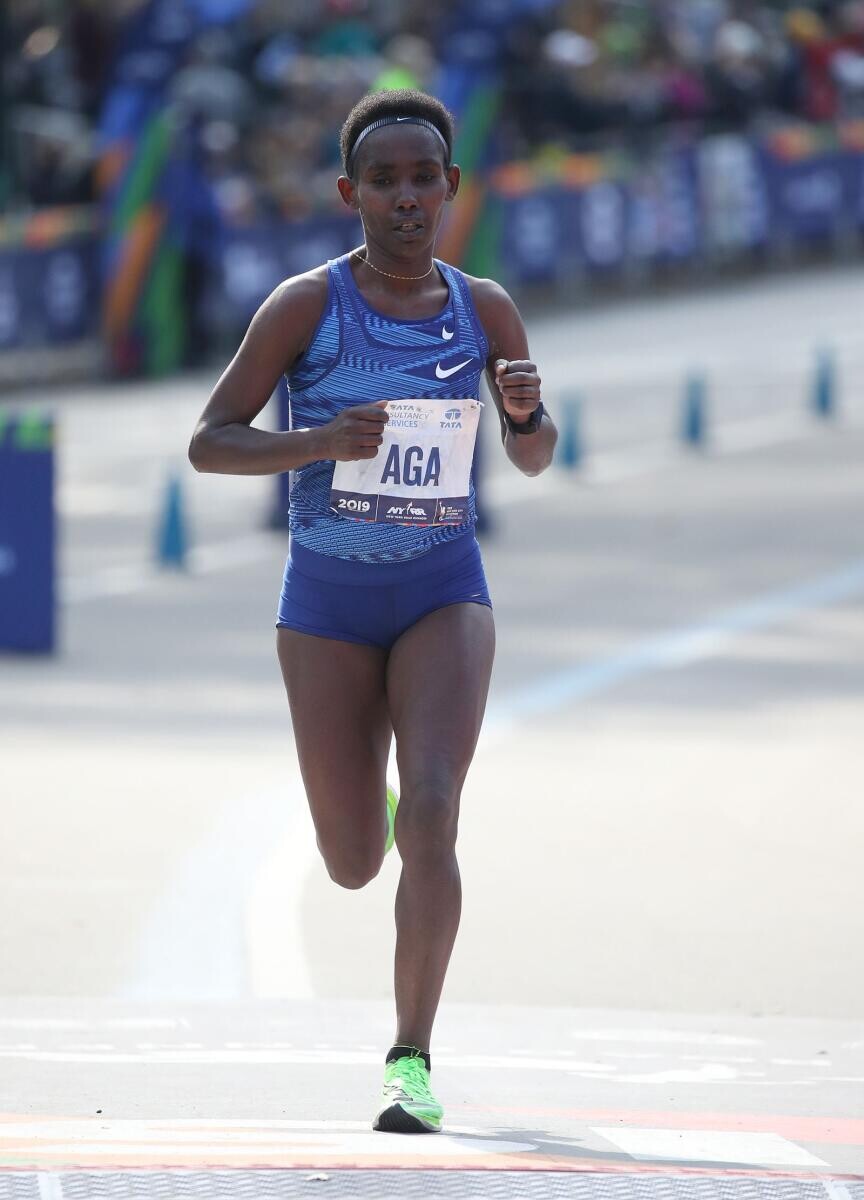
Aside from having the fastest PB of the field, the 26-year-old has shown great consistency in the past two years, registering sub-2:19 marks in all her four races including notching a 2:18:51 victory at the 2022 Seville Marathon and finishing second and third respectively in the 2022 and 2023 London Marathon races.
Ruti Aga, also from Ethiopia, is another serious title contender. The 29-year-old clocked a PB of 2:18:09 to win the Yellow River Estuary Marathon in Dongying, China, last October, improving the Chinese all-comers’ record.
Aga also won the Tokyo Marathon in 2:20:40 in 2019 and has earned three runner-up finishes in major marathon races, including a 2:18:34 second place in the 2018 Berlin Marathon.
Other women to watch in the field include Tanzanian marathon and half marathon record-holder Magdalena Shauri, whose PB of 2:18:41 was set last September when finishing third at the Berlin Marathon, as well as Fatima Ezzahra Gardadi of Morocco, a 2:25:03 performer who claimed the marathon bronze medal at last year’s World Championships in Budapest.
Kipchumba defends title
Defending champion Philimon Kiptoo Kipchumba will face a tough contest in the men’s race, as a total of 12 runners in the field own a career best time faster than the course record of 2:06:19 set by Moses Mosop of Kenya in 2015.
The 25-year-old Kipchumba will arrive in Xiamen with high spirits. He remained unbeaten last year, winning all three of his marathon races. After a 2:10:47 victory in Hong Kong last February, he clocked 2:08:04 to win in Xiamen and continued his winning streak in Shanghai in November with a winning mark of 2:05:35, beating Mosop’s course record in Xiamen to become the Chinese all-comers’ record-holder.
Kenyan half marathon record-holder Kibiwott Kandie is also on the rise. The 27-year-old registered a PB of 2:04:48 to finish sixth in Valencia one month ago and will be pursuing his first ever marathon title in Xiamen.
Ethiopia’s Chalu Deso, 26, is also a formidable competitor. He finished seventh behind Kandie in Valencia last month in 2:05:14 and his career best of 2:04:53 was also achieved in the Spanish city in 2020.
Last year, Deso claimed the Tokyo Marathon title in 2:05:22. He also has marathon titles in Paris and Porto to his name. After outings in Nanjing and Dalian in 2018, the Xiamen Marathon will be Deso’s third race in China.
Philemon Kiplimo of Kenya is another sub-2:05 runner in the field and unlike Kandie and Deso, Kiplimo will arrive in the Chinese coastal city on fresh legs. His last marathon race was contested more than three months ago when he clocked a PB of 2:04:56 to finish eighth in Berlin.
Also toeing the line are several sub-2:06 runners, including Moroccan record-holder Othmane El Goumri, who set a PB of 2:05:12 to finish second in Barcelona last March and went on to win the Sydney Marathon in 2:08:20 six months later.
by World Athletics
Login to leave a comment
CD XIAMEN INTERNATIONAL MARATHON
The C&D Xiamen International Marathon is an annual marathon race held in January in the coastal city of Xiamen in Fujian province, People’s Republic of China. Every January, the first medal of marathon race around the world is awarded here. The race has become a golden name card of Xiamen, showing its splendor to the whole world.It is one of...
more...Elite runners confirmed for 5th Abu Dhabi Marathon
Abu Dhabi: Abu Dhabi Sports Council has announced the star-studded line-up of international runners for the fifth ADNOC Abu Dhabi Marathon 2023.
An estimated 23,000 runners are expected to take part in the Dec. 16 event competing in the marathon (42.195 km), marathon relay, 10 km, 5 km, and 2.5 km races.
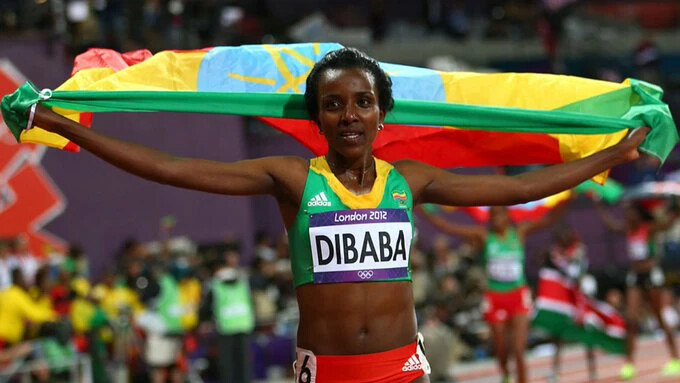
All races will commence at different locations near the ADNOC headquarters on Corniche Road and finish at the ADNOC Campus, near Bainuna public park.
Uganda’s Andrew Kwemoi, winner of the 2023 Milano Marathon — where he hit a personal best of 2:07:14 — will be joined by Kenya’s Kiptum Barnabas, who finished first in both the 2019 Hong Kong Marathon and the Buenos Aires Marathon in 2017. Barnabas’ compatriot, Leonard Barsoton, will also be competing in this year’s race, having set his own personal best of 2:09:06 in 2023.
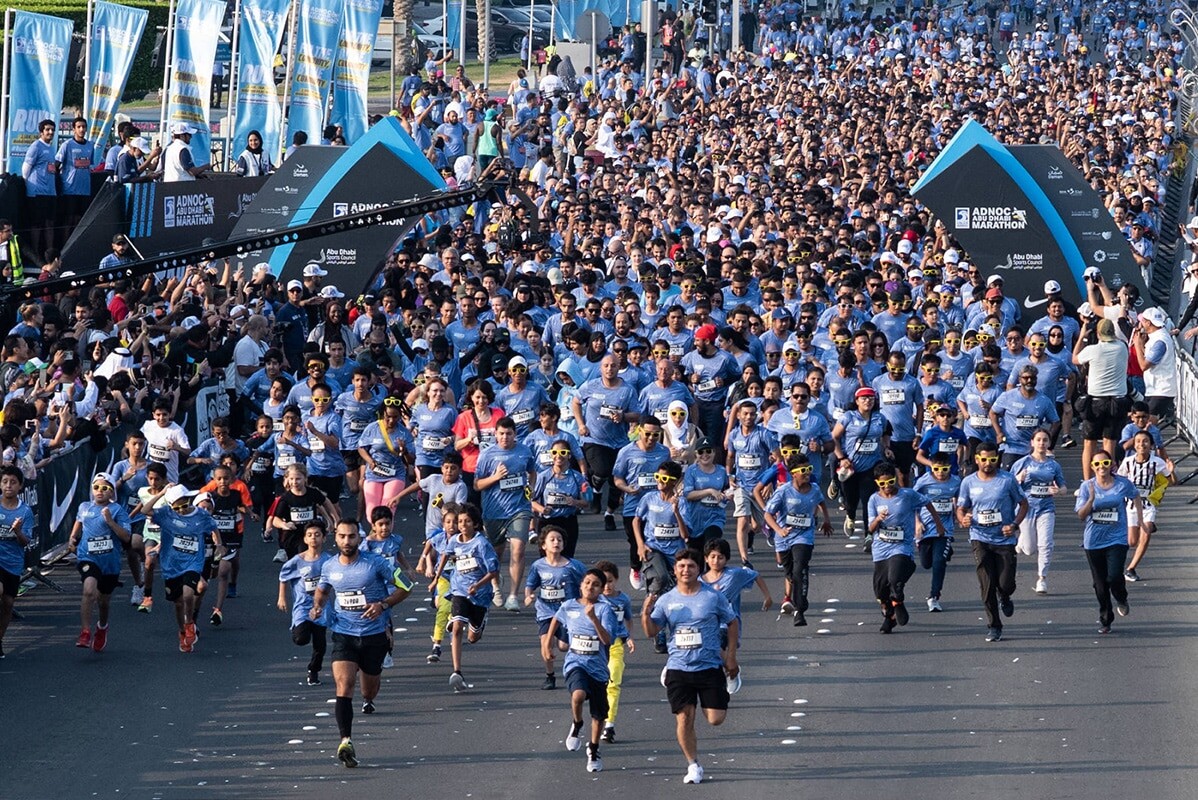
The women’s race will feature Ethopia’s Tirunesh Dibaba, the 10 km Olympic champion 2017 Chicago Marathon winner. Joining her in the strong elite female line-up, also from Ethiopia, will be Hawi Feysa (2:23:38), and Maurine Chepkemoi from Kenya, the 2022 Enschede Marathon winner.
Suhail Al-Arifi, executive director of the events sector at Abu Dhabi Sports Council, said: “We are thrilled to welcome a group of top international runners for the upcoming fifth edition of the ADNOC Abu Dhabi Marathon next month.
“Their participation highlights the event’s significance locally and globally. The presence of well-known runners in this year’s line-up reaffirms Abu Dhabi’s and the ADNOC Abu Dhabi Marathon’s success in gaining international recognition in long-distance running.
“We’re delighted to invite people from all walks of life and diverse backgrounds to join us in celebrating physical fitness.
“Regardless of your fitness level, there’s a distance tailored just for you. We encourage everyone to be part of this enriching sports day on the streets of Abu Dhabi, the global capital of sports,” Al-Arifi added.
This year’s Marathon Village will again be located at ADNOC headquarters and will be accessible from Dec. 12 up until race day on Dec. 16.
Login to leave a comment
ADNOC Abu Dhabi Marathon
The Abu Dhabi Marathon is shaping up to being first class marathon for both elite runners and average runners as well. Take in the finest aspects of Abu Dhabi's heritage, modern landmarks and the waters of the Arabian Gulf, at this world-class athletics event, set against the backdrop of the Capital's stunning architecture.The race offered runners of all abilities the...
more...What is the UTMB? Meet trail running’s most difficult race
We answer all of your questions about this hellacious footsport event
If you’re starting to dip your toes into the crazy sport of ultrarunning, a couple of things will happen. First, you’re going to need several pairs of the best trail running shoes in rotation at any given time to put up with all those miles pounding rocky trails, and second, it won’t be long before you hear mention of the UTMB.
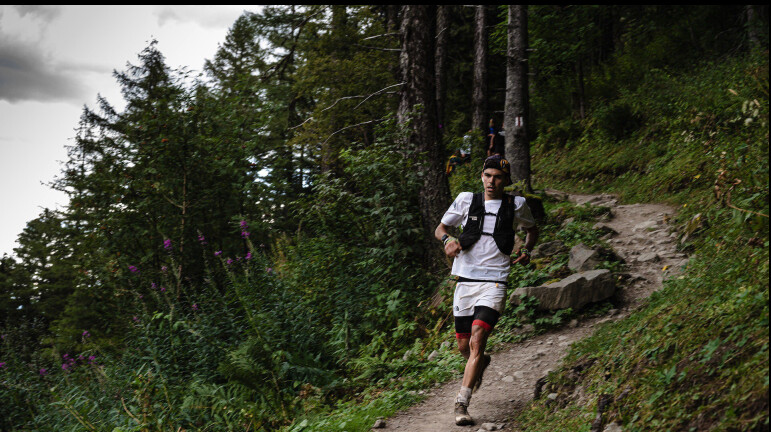
In fact, I recently attended the Arc’teryx Alpine Academy in Chamonix which holds a number of trail running clinics, and over the course of four days it was rare to have a conversation where the UTMB didn’t come up. Other participants in the academy wanted to know if our mountain guides had run it, how many times and whether they liked it (they don’t, considering it a tourist event) and mountain guides were keen to complain about how busy it made their favorite running trail.

But what is the UTMB exactly? Is it the ultimate goal for all trail runners? Why is it so hard? Here, we answer all of your questions about this hellacious footsport event.
What is the UTMB race?
UTMB stands for Ultra-Trail du Mont Blanc and is considered one of the world's premier trail ultra marathons. This demanding annual event follows the route of the Tour du Mont Blanc, a classic long distance hiking trail which circles the Mont Blanc Massif over 106 miles and passes through France, Switzerland and Italy. The UTMB begins and ends in Chamonix and is regarded as one of the most difficult races in the world.
The race takes place on the last weekend of August or first weekend of September and is today the ultimate in a series of events that take place around the world. Runners from all over the world aspire to compete in the UTMB. In the first year of the race, there were 700 participants, but these days, participation is capped at around 2,300 runners and other events have been created to allow for more participation.
The maximum cutoff for the race is 46.5 hours. In 2022, Kilian Jornet became the first to complete the UTMB in less than 20 hours (check out his race data to find out how he managed it) but most mere mortals can expect to have to run for two days and two nights to complete the race. Better bring some running gels then!
How does the UTMB race work?
Due to the event’s extreme popularity, you need to qualify to run the UTMB. That involves accumulating points through qualifying trail races over a two-year period. Qualifying races take place all over the world, from elsewhere in the Alps to Snowdonia, California, Mexico, Hong Kong and Australia. So if you’re serious about participating, you’ll have lots of time to train.
For each event you participate in and complete you’ll receive one running stone, which you can then enter into the lottery to be selected. You can enter the lottery at the UTMB website.
Why is UTMB so hard?
Besides the fact that at over 100 miles, it’s very long, competitors in the UTMB are also looking at 32,940 feet of elevation gain. In comparison, over roughly the same distance you could run the Leadville 100 in Colorado and gain only 11,000 feet (though at much higher altitude) or the West Highland Way in Scotland where you’d gain 10,300 feet.
The highest point of the route is 8,743 feet, which you’ll reach twice, in both Switzerland and France. That’s not extremely high altitude and it’s unlikely you’d experience altitude sickness at that height, but you’ll definitely notice shortness of breath and more challenging conditions, especially if you’re not already used to this altitude.
What you can also expect is more extreme conditions that come with trail running in the Alps. The altitude combined with the season means that the days might be swelteringly hot, while the temperatures at night could drop down around freezing at night.
How much does it cost to enter UTMB?
In 2023, the UTMB itself cost €335 to enter, plus administration fees. Of course, you’ll also have to pay registration fees for your qualifying events too. Your race will also include the cost of traveling to and from Chamonix, and accommodation while you’re there, but on the plus side the aid stations will be on hand to feed you during the race so you can save a little on those pricey Chamonix restaurants.
How many people have died in UTMB?
Sadly, deaths do occur in ultrarunning events and it’s perhaps more remarkable that for 17 years, no fatalities occurred during the UTMB, which not only places runners’ under extreme physical stress but entails a lot of night running. There have now been two deaths of runners in the UTMB, occurring in 2021 and 2022, both as the result of falls.
Do people sleep during UTMB?
Some runners somehow manage to do the UTMB without sleeping at all while others do sleep, but they’re not carrying a bivy sack and grabbing eight hours if that’s what you’re wondering. Sleeping during the UTMB looks like cat napping, and according to a 2015 study of 17 UTMB runners, the average time spent resting was between 12 and 17 minutes in total, and hallucinations were a common complaint, understandably.
Can you walk the UTMB?
Can you walk the UTMB? Well, yeah you could. Since the race is 106 miles and you have 46.5 hours to complete it, you technically could walk at a 2.3 mile per hour pace without any breaks and make the cutoff. Obviously though, you could just walk it at a time when the race isn't going on, save yourself €335 and enjoy far fewer people on the trail.
In all seriousness though, if you don’t already know, ultrarunning is actually hiking, and you’re not going to be running at the same pace you do on the tarmac back home. Even Jornet ran at an adjusted pace of around five miles per hour which isn’t exactly turbo speed (though it is if you maintain that for 20 hours). You’ll most likely walk the uphills and slow down or walk for rest periods, making up time on the downhills. And sorry, there aren’t many flats to speak of.
Login to leave a comment
2023 Western States 100 Women’s Race
None of the first four women from last year’s race — Ruth Croft, Ailsa MacDonald, Marianne Hogan, Luzia Buehler — returned. That made Zimbabwe’s Emily Hawgood (pre-race interview) the highest returning finisher from 2022. Hawgood’s pretty much a race local now too, living in nearby Roseville, California. But it was 38-year-old Courtney Dauwalter (pre-race interview) that came into the race as a favorite. She won here in 2018 in 17:27 and was looking to avenge a late drop at the 2019 race.
Dauwalter was first up the Escarpment. At 2,500 feet, it’s the race’s biggest climb and it happens right away in the first three miles. But 2022 UTMB winner Katie Schide (pre-race interview) was right there too. Schide, an American who’s lived in France for the past seven years, hit the top in 46 minutes with Dauwalter and the two dropped into the Granite Chief Wilderness together. Already Dauwalter and Schide, age 31, had a three-minute lead on third-place Ida Nilsson (pre-race interview) from Sweden.
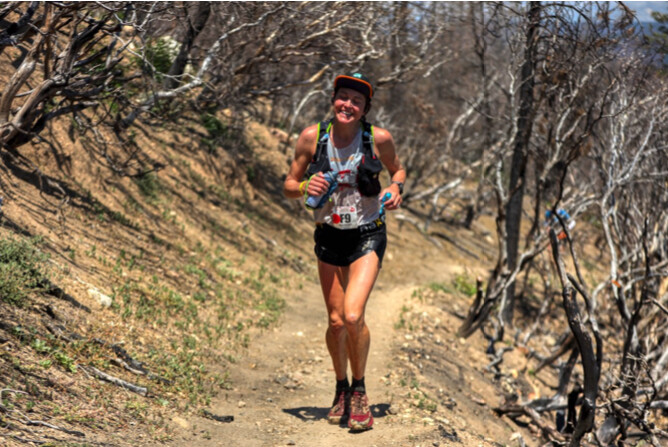
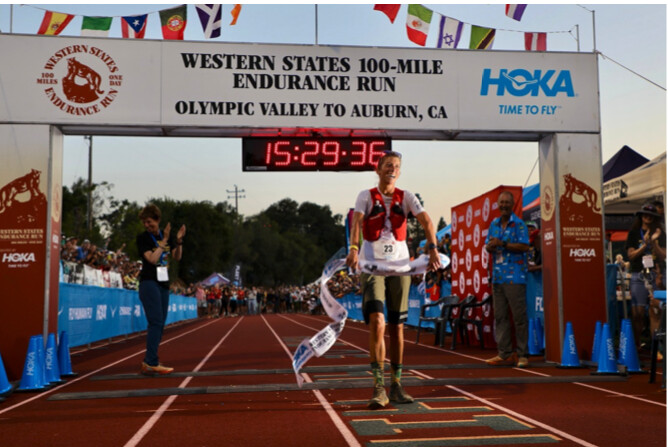
By mile 11, Lyon Ridge, Dauwalter and Schide’s lead on third-place Nilsson had ballooned to eight minutes. And then it got even bigger as the two completely broke away from everyone else. At mile 16, Red Star Ridge, no one was within 14 minutes of the front two. Nilsson, Hawgood, 2023 Black Canyon 100k winner Keely Henninger (pre-race interview), Taylor Nowlin, professional triathlete-turned-ultrarunner Heather Jackson, Canada’s Priscilla Forgie and Jenny Quilty, and 2022 sixth-place finisher Leah Yingling (pre-race interview) all ran inside the early top 10.
The Mosquito Fire limited crew access this year and everyone met their crews for the first time at mile 30, Robinson Flat. Dauwalter was in at 5:07 and out within a minute, and still on her 2019 splits. Schide took a longer break and changed shoes, exiting the aid station three minutes behind the leader. The two had completely broken open the women’s race. Nilsson, in her 100-mile debut, had been alone in third to this point, but was now joined by Henninger, Hawgood, and Nowlin.
At mile 34, Miller’s Defeat, the course record watch started. Dauwalter and Schide were under Dauwalter’s own 2019 splits and Ellie Greenwood’s 2012 course record pace. Dauwalter was five minutes up on Greenwood’s splits, and Schide was three minutes faster. Even more, the two were over 30 minutes in front of third-place Hawgood at mile 38. Dauwalter and Schide were out front for the win and the course record, and the other contenders grouped behind them.
Dauwalter was red hot up the Devil’s Thumb climb at mile 48, but Schide hadn’t given up much time. She took longer in aid and left six minutes after Dauwalter. Hawgood, Nowlin, and Henninger came in together next, now 40 minutes behind second-place Schide.
At Foresthill, Dauwalter was 25 minutes up on record pace. Schide conceded only another two minutes over the last stretch and was 11 minutes behind Dauwalter. While Dauwalter and Schide were still off the front, the race dynamic was heating up behind. The third- through eighth-place women were all in Foresthill together with only three minutes separation. Hawgood was there first among the chase group, but Hungarian living in Hong Kong Eszter Csillag quickly jumped from eighth at mile 52 to fourth at mile 62. Nilsson was fifth, and Henninger, Katie Asmuth, and Nowlin were all there too.
Dauwalter ran 2:10 from mile 62 Foresthill to mile 78 at the American River. Only the men’s winner would run a quicker split on this day, and only eight men have ever run a faster split in the race. Dauwalter was five levels better than everyone else, and she was boldly racing without a pacer too. Schide stayed comfortably in second, but fell further behind Dauwalter’s quickening pace and river conditions necessitated that everyone cross the American River in a boat this year.
From Foresthill to the river, Katie Asmuth vaulted into third, past Eszter Csillag and Ida Nilsson. Asmuth was seventh at Foresthill and picked up four spots on the downhill Cal Street stretch, outrunning common expectations in coming back from injury. All three women split faster from Foresthill to the river than Schide did and even if the front two were gone, the women in general were running really fast. There’s bound to be some bad luck in a 100 miler though, and Henninger fell just before the river and dislocated her shoulder. She would then drop from the race at mile 80, Green Gate, due to that injury.
Dauwalter’s incredible second half and incredible race brought her to the Placer High School track finish in 15:29. Dauwalter completely shattered the record books and set a new standard that is likely to last for a lifetime. Ellie Greenwood’s 16:47 course record had stood since 2012. Dauwalter will next race the high altitude 2023 Hardrock 100 in Silverton, Colorado, on July 14. Dauwalter is the Hardrock course record holder, too, but Western States plus Hardrock will certainly be a challenging double.
Schide challenged Dauwalter early, and outpaced the rest of the women’s field in doing so. Schide was in second for much of the day, ultimately finishing as runner up in 16:43. That was also under the old course record.
Csillag, who was fifth at the 2022 UTMB, had a remarkable second half to finish third in 17:09. It is the race’s fourth-fastest run ever. And she just edged out Asmuth, who moved up from last year’s ninth-place run to finish fourth in 17:21. Asmuth’s time was just inside of Ruth Croft’s winning time from last year, and is the race’s fifth-fastest ever.
Hawgood earned a second straight fifth-place finish. In 2022 she was able to finish fifth in 18:16 and in this year’s faster race Hawgood was fifth in 17:26. That time ranks eighth-best ever and is just faster than what Dauwalter ran to win in 2018.
Taylor Nowlin improved her finish place by one from prior year, but like Hawgood greatly improved her finish time. Nowlin was sixth in 17:40. One-hundred-mile debutante Ida Nilsson was seventh in 17:43, and Priscilla Forgie was just minutes back in eighth at 17:46. Leah Yingling was a repeat top-10 finisher in ninth at 17:49. For perspective, no year had seen more than three women finish under 18 hours before. But this year nine women finished under 18 hours. It is the new standard for women’s racing at Western States.
The 25-year-old Meghan Morgan took the prized 10th-place finish in 18:11, thereby guaranteeing a chance to automatically return next year.
by Justin Mock I Run Far
Login to leave a comment
Western States 100
The Western States ® 100-Mile Endurance Run is the world’s oldest and most prestigious 100-mile trail race. Starting in Squaw Valley, California near the site of the 1960 Winter Olympics and ending 100.2 miles later in Auburn, California, Western States, in the decades since its inception in 1974, has come to represent one of the ultimate endurance tests in the...
more...Celebrity Kung Fu Monk Yan Ming Can’t Stop Running
One of the world’s leading kung fu masters has trained the Wu-Tang Clan, Björk, and Wesley Snipes. Running is central to his training. Here’s whyThough Shi Yan Ming is a world-renowned kung fu master, he was lucky to survive a poverty-stricken childhood as a peasant in China.
He was born in 1964 in Henan Province, the heart-center of the country, where Chinese civilization is said to have originated, and food was scarce. Two siblings died of starvation prior to Yan Ming’s birth, and he was a very sickly child.

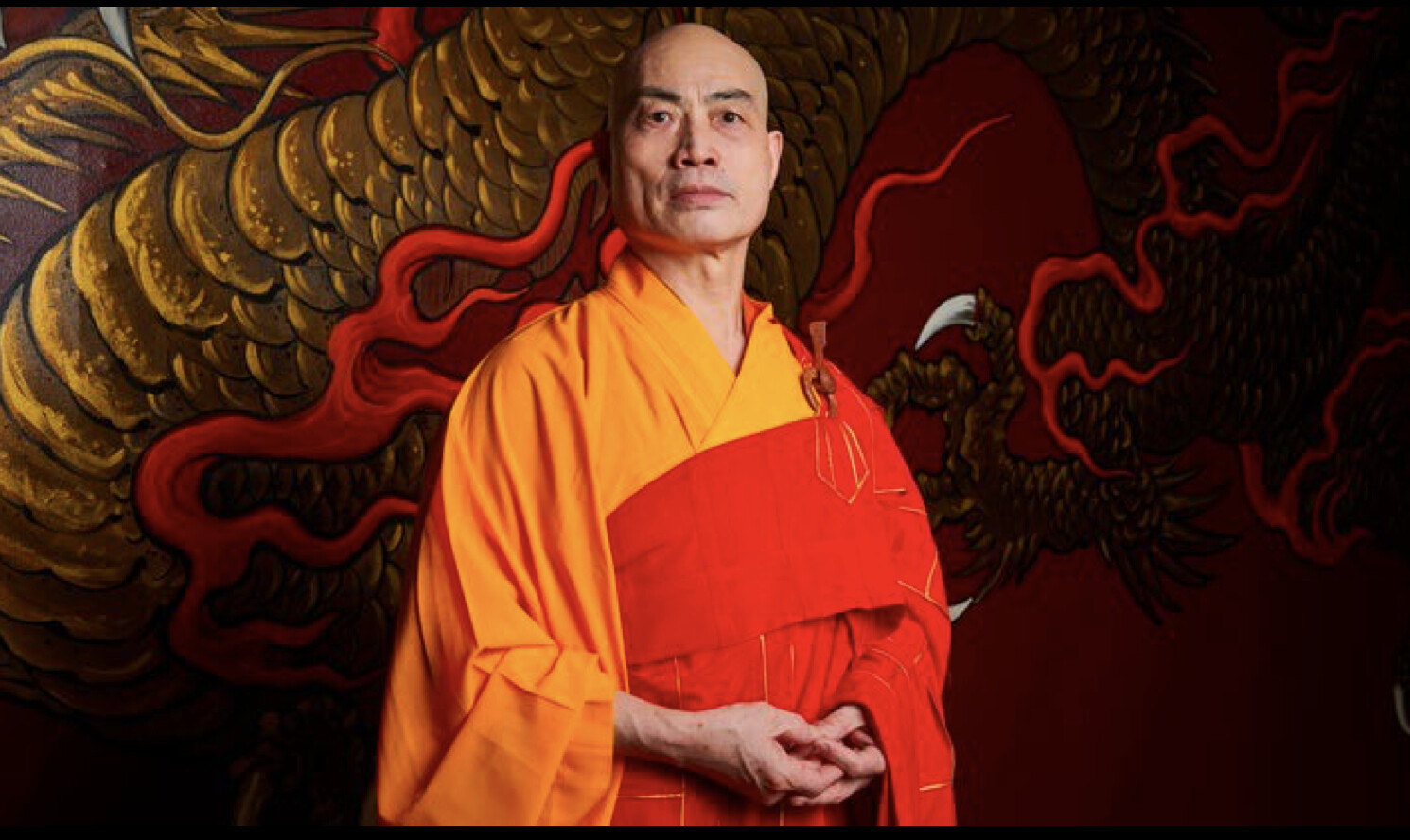
Fearing the same fate might befall him, his parents brought Yan Ming to the door of a 1,500-year-old Shaolin Temple. He was taken in by the monks there and began to live by the grueling schedule of a kung fu disciple—training, practicing, meditating, and running. His health, along with his skill, improved rapidly.
“I was running a lot in China,” recalled Shifu (an honorary title meaning “master” or “teacher”). “The temple was built in the woods, in a mountain range; I was running to build strength and endurance.”
In some ways, he has been running ever since.
In 1992, Shifu was part of a group of Shaolin monks invited to perform on a U.S. tour. The temple in which he was raised had been the original Shaolin Temple, dating back to 495 A.D., and the lineage of monks practicing kung fu and Chan Buddhism (also known as Zen) helped establish Shaolin as one of the most graceful and disciplined martial arts. Shifu, a 34th generation master, and his fellow monks gained renown for their craft and were quickly invited to display their skills on international tours.
After a show in San Francisco, California, he escaped his hotel room in the middle of the night and made his way by bus to New York City. He started the first Shaolin Temple in America in Chinatown, waking up early to go on training runs across the Brooklyn Bridge. In the intervening 30-plus years, he has taught countless others, from RZA of the Wu-Tang Clan to Björk to Wesley Snipes. He’s also appeared in several movies and helped spread the practice that has been his way of life.
Running is championed by many martial artists as a way to train both body and mind. Bruce Lee called running “the king of exercises,” and had a remarkably consistent routine to support his training. As an activity grounded in form, repetition, and discipline, it is no surprise that it is considered an essential part of training both physical and mental resilience. In recent years, Shaolin monks have even gone viral for their ability to “run” across water.
To Shifu, running is a form of “action meditation.” In kung fu, everything is an opportunity to hone one’s skill and wisdom. “Speaking is meditation,” noted Shifu. “Walking is meditation. Jogging is meditation. Everybody has different abilities. To help people individually, you can’t use one approach.”Such diversity of teachings is at the heart of the welcoming nature of the temple and Shifu’s ability to meet students where they are.
In doing so, Shifu aims to spread the Shaolin teachings of self-actualization, dignity, and compassion to as many people as possible. It is this spirit of inclusivity and access to a life-changing practice that has drawn so many to the temple.
Kirby Koo, a disciple of Shifu’s and the manager of the USA Shaolin Temple, stumbled into Shifu’s orbit seven years ago with the vague idea of getting in touch with her roots (she was raised partly in Hong Kong). After moving to New York, a childhood friend had told her that if she ever wanted to do kung fu, the best master on the planet was right there in Chinatown. She checked it out and hasn’t looked back.
“When you come from the depths of extreme poverty to training celebrities and being in Hollywood, you understand that everyone’s going through a journey and that we’re all the same,” Koo said, referring to Shifu’s ability to connect with people from all walks of life. “In the temple, everyone’s wearing the same uniform, everyone’s doing the same moves, and it doesn’t matter where you come from or what your bank account is.”Still, embracing running was not something Koo envisioned when starting kung fu.
“I used to be the type of person to be like, ‘When I run…I’m only running if it’s for my life,’” she said. Yet now Koo sees running as a form of meditation, a way to further the spiritual, mental, and physical training of kung fu by practicing with the whole body.
“Before training kung fu, I always understood that exercises are for different parts of your body—you do a bicep curl, you stretch your hamstring. But in order to maximize your power, speed, and endurance, in kung fu you use every part of your body for every move.”
Running is championed by many martial artists as a way to train both body and mind. Bruce Lee called running “the king of exercises.”
“Shifu says that the true gym is when you look into the jungle,” continued Koo. “Animals don’t lift weights. If you watch a cheetah, they use all their muscles to leap into the air and then they continue running, they don’t just use singular body parts.”
Look upon a trail or road and you might notice the same thing about a runner leaping and bounding with all of their muscles firing. This sense of a whole-body pursuit that is as much action as it is meditation—should one choose to perceive it that way—is perhaps where kung fu and running intersect.
At 59, Shifu doesn’t seem to be slowing down. Whenever he talks about practice, it is with language that is both nurturing and fierce, indicating the support and discipline required to inspire growth and maintain form.
“We are getting younger every day. We can work on getting younger every year,” said Shifu. “If you don’t sharpen a blade, it becomes rusty. We need to discipline ourselves to exercise. Young body, noble mind. Keep challenging yourself. Exercise your precious life.”As Koo noted, her job at the USA Shaolin Temple would be a lot easier if Shifu wasn’t committed to teaching all day, every day.
As the manager, Koo wouldn’t mind if the master slowed down once in a while and was more available for other aspects of temple administration. He has eschewed the potentially lucrative route that some masters of his renown might opt for, teaching only privately and emerging once in a while for a public showcase. But that is not Shifu; his aim is to make the temple and teachings available to all.
“If you’ve ever met anyone who knows what their life purpose is, rain or shine, that’s him,” said Koo. “That’s why he’s on Earth.”
Shifu wouldn’t disagree. “We have to take every opportunity we have to help out as many people as possible,” said Shifu, invoking the Buddhist roots at the heart of kung fu practice. “That’s why we’re here. You spread the word and help more people. That’s meditation.”
To Shifu, every moment, whether one is engaged in stillness or action, can be part of a way of life that is useful, powerful, and compassionate. And that is why, after all these years, Shifu is still running.
by Outside Online
Login to leave a comment
You Can Earn $1,250 If You Break This Time at the Hong Kong Marathon
However, the prize-earning time standards make it easier for male runners to earn cash than female runners.
Turns out, you don’t have to be a professional athlete to earn money from running. The Hong Kong Marathon on February 12 is giving out 10,000 Hong Kong dollars (about $1,277 USD) to every male finisher under 3:00 and every female finisher under 3:30 who are permanent residents of Hong Kong.

“We estimate there may be around 300 to 350 runners that can reach the standard,” Simon Yeung Sai Mo, senior vice-chairman of the Hong Kong Association of Athletics Affiliates, told South China Morning Post. That means the Hong Kong Marathon is prepared to give out nearly $400,000 in prizes to non-professional athletes.
In a email to Runner’s World, the Hong Kong Marathon shared the following statement:“The increase in prize money is a ‘one-off’ special award this year to celebrate the 25th edition of the Standard Chartered Hong Kong Marathon. Participants in the Marathon Challenge Category, who are also permanent residents of Hong Kong, finishing marathon under 3 hours (sub 3) for men and under 3 hours 30 minutes for women (sub 3:30) will be awarded with the Special Incentive Award HKD10,000, which is 10 times the amount of the same awards in previous marathons.”
According to numbers crunched by South China Morning Post, 147 participants finished below 3:00 in the men’s race in 2018. In the women’s race that year, there were only 52 runners that finished below 3:30.
The women’s time standard is more challenging than the men’s. According to World Athletics scoring tables, a 3:00 marathon by a male runner is equivalent to a 3:50:18 marathon by a female runner. The Hong Kong Marathon prize-earning standard for women is 3:30, so female runners have a harder challenge by 20 minutes—that comes out to 46 seconds per mile.
In the statement to Runner’s World, the Hong Kong Marathon clarified the reasoning for the standards: “Based on previous records, the men to women [participation] ratio is approximately 8:2.”
On the professional side, the Hong Kong Marathon offers $30,000 to the individual winners in the men’s and women’s races. Professional men who finish faster than 2:10 and women who finisher faster than 2:28 earn an additional $10,000. The course record bonus is $12,000; the men’s record stands at 2:09:20, the women’s at 2:26:13.
The Hong Kong Marathon first occurred in 1997. It has been run every year since, with the exception of 2020 and 2022 due to the coronavirus pandemic. Therefore, this year’s race is the 25th edition.
by Runner’s World
Login to leave a comment
Ethiopia’s Asefa Mengstu breaks Kenya’s Honolulu Marathon dominance
After sparring toe-to-toe for over half the race, Ethiopia’s Asefa Mengstu outpaced his cross-border Kenyan rival Barnabas Kiptum to cruise into Kapiolani Park and win the 50th anniversary Honolulu Marathon, breaking a long-standing Kenyan stranglehold of Hawaii’s flagship race.
Mengstu won in two hours, 14 minutes and 40 seconds with Kiptum second in 2:17:45, some 10 minutes ahead of third-placed Japanese Yuhi Yamashita (2:27:45) in the race run under brutally windy conditions.
Ethiopia’s Asayech Bere made it an Addis Ababa sweep taking the women’s title in 2:30:58 with her compatriot Abebech Afework Bekele (2:34:39) second and Japan’s Yuhi Yamashita third in 2:27:45.
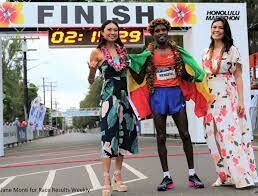
Kenyan men had been unbeaten here since 2007, Ethiopia’s Ambesse Tolossa having interrupted the clean run by winning the 2006 edition.
Prior to that, Kenyans were unbeaten since Eric Kimaiyo took over as champion from South Africa’s Josiah Thugwane in 1996.
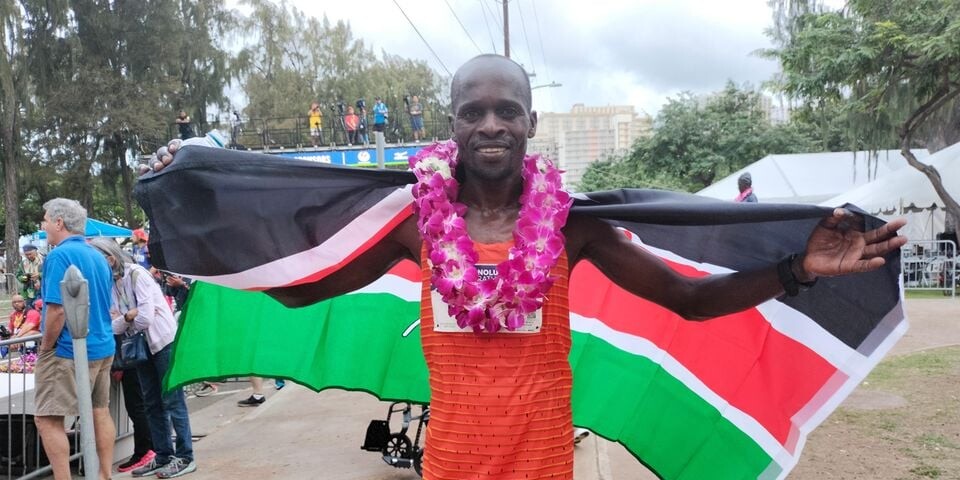
But it was Ibrahim Hussein, the legend, who made the breakthrough as the first African winner on this island city of O’ahu - birthplace of former US President Barack Obama - clinching a back-to-back hat-trick of victories from 1985 to 1987.
Sunday’s golden jubilee race started in it’s traditional night settings at 5am, local time, with spectacular fireworks and, as expected, it was the two Ethiopians, Mengstu and Shifera Tamru, who broke away together with Kiptum, crossing the 10-kilometre mark in 30 minutes and 30 seconds, paced by Kenya’s Reuben Kerio who is also preparing for next month’s Mumbai Marathon.
They then crossed the halfway mark in 1:06:38 under a slight drizzle at the Aina Haina sector after which pacemaker Kerio dropped off at the 30km mark (1:21:00).
There was drama shortly after when Kiptum and Mengstu dropped Tamru, racing on shoulder-to-shoulder as the sunrise launched in spectacular fashion at East O’ahu.
But at 33km, Mengstu broke away and ran a solo race all the way to the finish.
“It was a tough race… I’ve never competed under such tough conditions,” Mengstu said, referring to the furious headwind.
“My strategy was to attack at 35km and I was determined to win,” added Mengstu who trains under the Rosa Associati stable in Addis.
Kiptum was happy with his race, saying the atrocious winds slowed him down, but he remained confident of fighting for a place in Team Kenya to next year’s World Championships in Budapest.
“I ran in conditions similar to these in Hong Kong in 2018, but today’s wind was just too crazy,” he said.
“My body feels fine and I will now fight for a place in the team to the World Championships so that I can represent my country…
“I have what it takes, and I just have to throw in a race in spring and confirm my place in Kenya’s team to Budapest.”
Sunday’s golden Jubilee Honolulu Marathon celebrated the return of full racing and public events after two years of uncertainty occasioned by the coronavirus pandemic, much to the satisfaction of its long-standing President and CEO Jim Barahal.
After Kenya’s Titus Ekiru won back-to-back races here in 2018 and 2019, including setting a course record 2:07:59 in 2019, the race was held as a non-competitive event in 2020 due to the pandemic with Kenya’s Emmanuel Saina winning the title last year in 2:14:32.
by Elias Makori
Login to leave a comment
Honolulu Marathon
The Honolulu Marathon’s scenic course includes spectacular ocean views alongside world-famous Waikiki Beach, and Diamond Head and Koko Head volcanic craters.The terrain is level except for short uphill grades around Diamond Head. ...
more...Dutchman Lodewijk Adriaan Vriens wins first race in Hong Kong 50 ultra marathon series
Hong Kong 50 ultra marathon got off to a blistering start with Dutchman pipping local favourites in the men’s division, while Cheung dominated the women’s field
The second leg of the four race series takes place on Lantau on December 10, with HK50 West and Sai Kung 50 taking place in early 2023
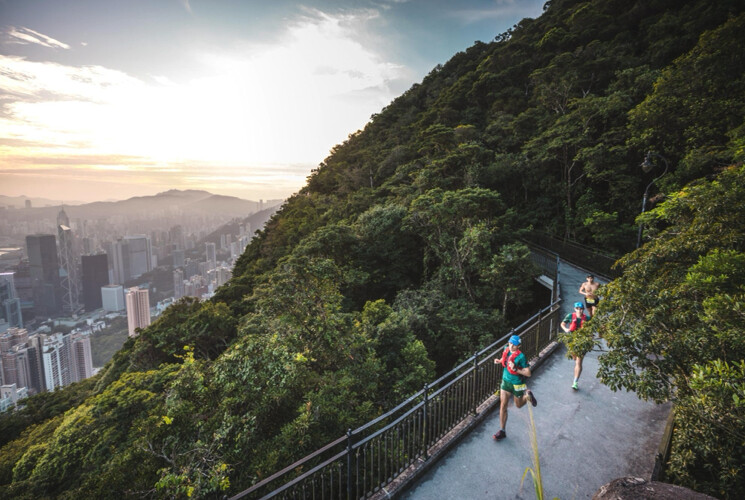

The Hong Kong 50 ultra marathon series got off to a solid start on Sunday, with Dutchman Lodewijk Adriaan Vriens storming a field of almost 500 runners to claim line honours.
While Vriens battled strong competition from Chan Ka Keung and Wong Kwok Wai – who came in second and third respectively – the Dutchman paced himself early in the race but surged in the second half to extend his lead and finish with a time of 4 hours and 47 minutes.
“Today’s race was really, really cool and a really phenomenal feeling,” Vriens said. “It’s a really tough course, but I had a lot of fun. The organisers did great, really good spirit out there and some really good competition.”
Chan, one of Hong Kong’s top up and coming runners, had a very strong finish, putting the hammer down on the final 1km to squeeze by Wong for second place with just a few hundred meters remaining.
“I was happy with a strong finish catching Wong Kwok Wai who tried very hard also at the end. The race was really exciting and the scenery on the last 20km was beautiful which made the change of scenery from my home training area in Tsuen Wan very different,” Chan said.
“Coming down Jardine’s Lookout I took a fall kicking a step, but brushed it off and kept pushing as was top three at the time.”
Crossing the finish line in 3rd overall in the Men’s 50km was Wong Kwok Wai who ran a fantastic race leading and trading places for almost half. He came within striking distance of the Dutchman and Chan, but did not have the legs in the last few hundred meters to mount a full tilt attack.
Karen Cheung Man-yee dominated the women’s field to win in a comfortable 5 hours 30 minutes 38, almost 30 minutes ahead of her nearest rival Wong Mei Ying, who took second place.
“Overall, the race was great,” Cheung said. “I thought my run was very smooth. The weather was good and I was happy with my performance. I am very happy to be able to run in a physical race like this as I enjoyed it so much being around others in competition.
Third on the women’s 50km podium was South African Deena Schwan who took up ultra running just over a year ago.
The second leg of the four race HK50 series will take place on Lantau on December 10, with HK50 West and Sai Kung 50 taking place in early 2023.
Login to leave a comment
Hong Kong Marathon rescheduled for February next year
The Standard Chartered Hong Kong Marathon has been rescheduled to February next year, the organizer announced on Tuesday, days after canceling the race amid ongoing Covid-19 restrictions in the city.
“The Hong Kong Association of Athletics Affiliates (HKAAA) announced today… that it has received the Government’s full support to actively plan the staging of the 25th Standard Chartered Hong Kong Marathon on Sunday, 12 February 2023,” a press statement by the organizer read.
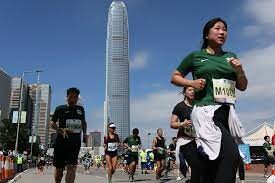
Last Friday, the HKAAA said the sporting event would not go ahead in November as planned, citing “insufficient time for runners and relevant stakeholders to adequately prepare for the race.” Organizers said they had yet to receive approval from the government with only two months remaining.
Commissioner for Sports Yeung Tak-keung questioned the group’s reason on Monday, saying the 2021 race was also approved with only two months to go.

He said the government had been in close contact with the organizer and provided help as best as it could. Yeung at that time said the HKAAA did not consider postponing the race, even there was an available slot in February.
Rescheduling
The HKAAA on Tuesday, however, reversed course, hours after Chief Executive John Lee had expressed disappointment over the axing of the popular sports event.
“Our position is very clear, we are very supportive and we want both sides to work towards the goal of making it happen,” Lee said during his weekly press briefing. “[I]t is both [in] the organiser’s interest, and Hong Kong government’s interest and the community’s interest for these things to happen. So I want that common will to be developed for the good of Hong Kong.”
Further details were yet to be announced by the HKAAA, but it promised to “strictly adhere to and implement all necessary anti-pandemic measures,” and work closely with relevant government departments.
Covid concerns
Several sporting events have been canceled or relocated due to Hong Kong’s strict Covid-19 measures, with all incoming travelers required to undergo three days of hotel quarantine and four days of “medical surveillance.” The city also maintains a four-person public gathering limit and an outdoor mask mandate.
Blaming the stringent quarantine rules, the organizers of the 2023 World Dragon Boat Racing Championships abandoned Hong Kong for Thailand on Sunday. The previous day, the Oxfam Trailwalker event was also called off.
Lee on Tuesday said the government would review the pandemic situation and make necessary adjustments to the quarantine policy, with an announcement to follow “as soon as possible.” Experts have called for measures such as mandatory hotel quarantine to be scrapped so that Hong Kong can begin to return to normalcy.
Hong Kong has reported a total of 1.71 million Covid-19 infections and 9,901 related deaths since the pandemic began.
by Almond Li
Login to leave a comment
HONG KONG MARATHON
The Hong Kong Marathon, sponsored by Standard Chartered Bank, is an annual marathon race held in January or February in Hong Kong. In addition to the full marathon, a 10 km run and a half marathon are also held. Around 70,000 runners take part each year across all events. High levels of humidity and a difficult course make finishing times...
more...2022 UTMB Women’s Race
An American living in France and eighth-place finisher at UTMB in 2021, Katie Schide set out to make her mark on the race from the beginning, leading the women’s field after seven kilometers into Les Houches while being trailed closely by the trio of Marianne Hogan from Canada, Kaytlyn Gerbinfrom the USA, and Hillary Allen from the USA.
Schide grew the gap over the next 13 kilometers into Saint-Gervais. With only one hour and 48 minutes on the race clock, a truly raw opening effort, her lead over second place Hogan was already five minutes, and she had eight minutes on third place Audrey Tanguy (pre-race interview) of France. Jocelyne Pauly and Manon Bohard, both from France also, came through in fourth and fifth with Mimmi Kotka (pre-race interview), a Swede living in Chamonix, just behind them in sixth.
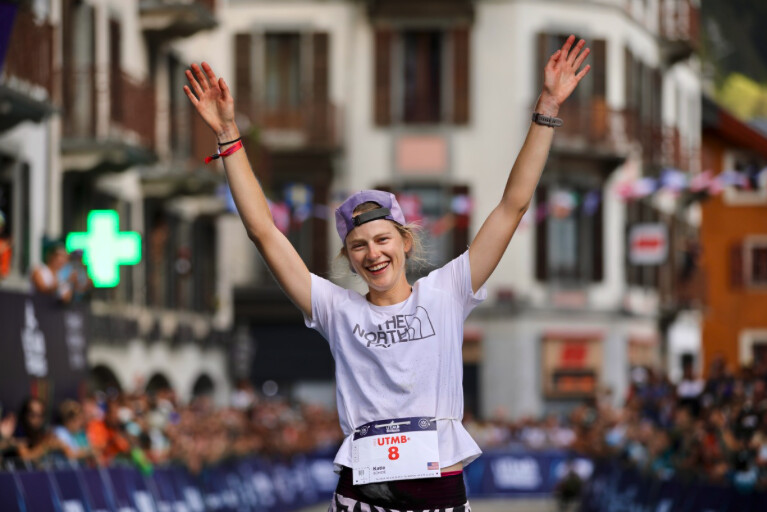
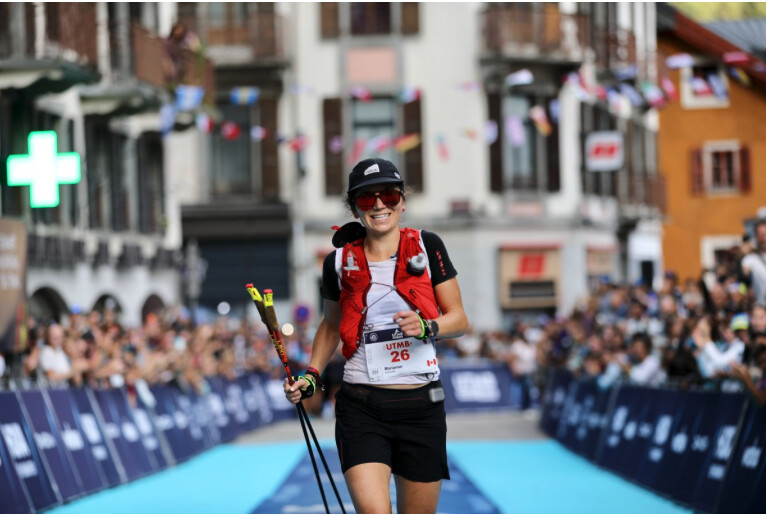
Fu-Zhao Xiang (pre-race interview) of China, Ragna Debats (pre-race interview), who is Dutch but lives in Spain, and Azara García (pre-race interview) of Spain rounded out the top 10, running together 13 minutes behind Schide.Keeping up her consistent and strong pace, Schide continued to increase her lead on the rest of the women’s field, coming into Les Contamines at 31 kilometers with 2:50 on the race clock.
By then, she’d extended her lead on Hogan to over nine minutes, Tanguy to 12 minutes, and Bohard and Pauly to 15 minutes. Tanguy was probably relieved to make it past Les Contamines where she had dropped last year from severe stomach cramps. A visibility limping Kotka, who had challenged Courtney Dauwalter during last year’s UTMB during the early miles of the race before finishing third as Dauwalter won, came into Les Contamines nearly 20 minutes off the lead in sixth and would not continue.
Schide continued to smile coming through the Col du Bonhomme, at about a marathon’s distance into the race, clearly enjoying her run through the night and appreciating the cheers of the spectators. Climbing one of the largest passes of the race only seemed to make her stronger. Her gap to Hogan and Tanguy had grown to about 20 minutes as the two chasers crested the col.
The cheers from the enthusiastic French crowd brought smiles to both women’s faces as they passed through. The cheers continued for Bohard and Pauly, who were still running together.
The crowd at Les Chapieux, 50 kilometers in, was enthused to see Schide, erupting in huge cheers as she came in. While the gaps between the women in second through 10th grew and shrunk over the kilometers, Schide’s gap on the field had only gone one direction so far: up. She was now more than 22 minutes up on second place Hogan. By the time Schide got to Lac Combal, 66 kilometers into the race, the gap was up to 25 minutes, and it would be an additional 20 minutes for Tanguy to arrive after that.With 80 kilometers run, Schide came into Courmayeur flying, spending only eight minutes at the aid station approximately halfway into the race.
The crowds were thrilled to see her, providing a warm and raucous welcome as she ran into the aid station looking smooth. But for the first time in the race thus far, Hogan had started to close the gap to the leader, whittling it down to just over 20 minutes. Smiling but with a stomach that couldn’t handle gels any more, she quickly drank a Coke and opted for pizza for fuel. The gap between the top two women and the rest of the field continued to grow, and it was over an hour before Tanguy, Pauly, and Gerbin ran through, and a few more minutes after them to the sixth woman, Emily Hawgood, of Zimbabwe, who lives in the USA.
While Schide had seemed unstoppable before Courmayeur, the tables seemed to turn over the next 17 kilometers to Arnouvaz as night turned to day. Schide came in with stomach issues, clearly in a rough spot, with Hogan hot on her heels, now only two minutes behind. Closing a gap of more than 18 minutes is a feat to be acknowledged, and a feisty and strong Hogan seemed energized by the coming of the day and the idea of leading the race for the first time.
A struggling Schide maintained her lead over the Grand Col Ferret at 102 kilometers, but it was down to a minute, and when the women’s leader arrived at La Fouly at 112 kilometers, it was Hogan instead of Schide for the first time, with a sizable six-minute gap.
By Champex-Lac at 125 kilometers, it was still Hogan in the lead and well under course record pace, now with a 10-minute gap to second. But Schide wasn’t about to give up, slowing down to let her stomach recover from its previous rough spell, and finally eating a cheese sandwich and starting to move well again.
One hundred miles is a long distance to race, long enough that runners can get through rough spells and rebound. And that’s exactly what Schide did, regaining the lead in Trient at kilometer 142, not only eliminating the 10-minute gap but putting an additional 10 minutes on Hogan. By Vallorcine at 153 kilometers, the gap between the top two was up to 41 minutes, with Hogan nursing a hurt left leg.
By the time the pair reached the finish line in Chamonix, they maintained their one-two position with Schide having extended the gap to some 75 minutes.It was another 35 minutes later that we saw the final member of the women’s podium arrive, Gerbin, who ran for much of the second half of the race in what she described as “no woman’s land,” well in front of those behind her but out of contact with the lead.
It was apparently a comfortable spot for her, though, as she held her position strongly, and crossed the finish line back in Chamonix like she could run plenty more kilometers if needed.
Pauly finished fourth, the successful conclusion of a focused day of racing. Eszter Csillag, who is from Hungary but lives in Hong Kong, moved up later on to take fifth. Emily Hawgood ran strong all day to set and maintain a very similar position of sixth place. Xiang held tight to seventh place with Spain’s Aroa Sio just behind in eighth. Italy’s Francesca Pretto and Eva-Maria Sperger of Germany moved up into the top 10 in the last 50 kilometers.
Login to leave a comment
Ultra running is exploding in popularity around the world, but what actually is an ultramarathon?
The term Ultra covers a broad range of races, from mountains to road
Ultra running is fast becoming a mainstream sport. Once, it was the realm of a few crazy runners, and not the pastime of everyone from your boss to your neighbour. But what actually is an ultramarathon?
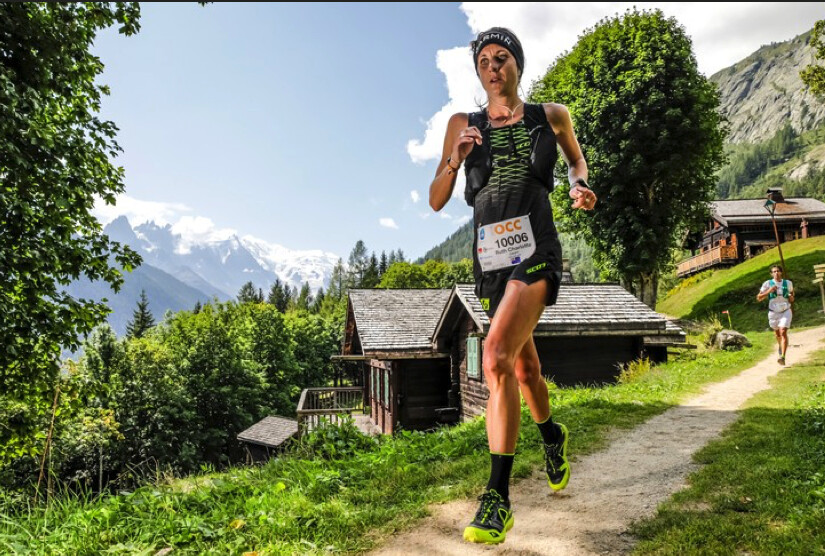
How long is an ultramarathon?
An ultramarathon is anything longer than a marathon, which is 26.2 miles (42.195km). So, you could complete a marathon and run back to your car and you’ve technically run an ultra distance.
Typically, ultramarathons start at 50km and go up from there. Standard distances are 50km, 100km and 161km (100 miles), the latter often being referred to as a “miler”.
While a marathon is never longer than 26.2 miles, ultras tend to vary a bit. For example, the Hong Kong 100 is in fact 103km. And the Ultra Marathon du Mont Blanc, a miler, is in fact 171km. Others are a bit shorter than advertised, too.
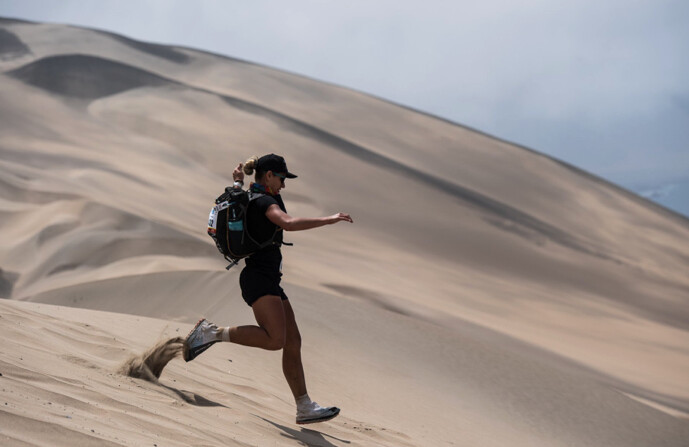
Aside from the above three types, there are ultra races of all sorts of distances and formats. As long as it’s more than a marathon, the distances and formats can be limitless.
An increasingly popular format is 250km split over stages, such as the Marathon Des Sables. Runners complete different distances each day, some less than an ultra, and sleep at night.
As the sport continues to grow, others try to push the boundaries – such as the 298km Hong Kong Four Trails Ultra Challenge, which is non-stop and has no support on the trails. Runners finish the distance in between around 48 and 70 hours.
The formats are becoming increasingly imaginative. A backyard ultra, for example, is around a 6.7km loop. The runners start on the hour every hour until there is just one runner left, so the distance is not set. It keeps going and going. Runners have gone on for more than 80 hours.
Outside organised events, runners often complete ultramarathons just for fun, to set a personal best or a Fastest Known Time (FKT), which is ultra terminology for a specific course record. This can be anything from the 44km Hong Kong Trail, which takes a few hours, to the 4,172km Pacific Crest Trail, which has an FKT of almost two months.
What terrain is an ultramarathon on?
With an infinite range of distances come infinite terrains. An ultramarathon can be road, flat, track, pavement, mountain, trail, snow and more. As long as you can run on it, you can run an ultramarathon on it.
A famous road ultramarathon is the 246km Spartathlon. It follows the legendary route run by Pheidippides, who ran from Athens to Sparta before the Battle of Marathon in Ancient Greece, thus inventing the marathon.
The most high-profile mountain ultra is the Ultra Marathon du Mont Blanc, which has a total of 10,040 metres accumulative elevation gain in the Alps.
Track ultras often take the format of a set time rather than distance. For example, how far you can travel in 24 hours, round and round the same athletics track.
When Zach Bitter set the 100-mile world record, which has since been broken again, he ran it around a 443m track by doing 363 laps.
The distances and terrains are so varied race to race they are essentially different sports. Kilian Jornet is considered one of the best ultra-mountain runners ever, but comparing him with Yiannis Kouros, considered one of the best ultra road runners ever, is like asking who is better at football: Tom Brady or Lionel Messi.
Is an ultra harder than a marathon?
The word ultra refers to the distance, not difficulty. An ultramarathon is inherently hard, but not inherently harder than a marathon or any other distance for that matter.
If you have a specific and demanding finishing time in mind for your marathon, you will have to stick to a specific split, keep your legs spinning and spinning, all the time concentrating on your pace and pushing your body.
Is that easier or harder than a 24-hour 100km over mountains, with variation in terrain and elevation, when you walk some parts and rest at check points?
What about a 5km? If you want to run a fast 5km, you will be at your absolute limit for the entire time and collapse over the finish line.
Non-runners often think an ultramarathon is the “next step” for runners looking for a new challenge. Searching for a faster time is just as challenging as searching for a longer distance.
Either can be harder than the other – it’s down to the runner.
The same is true within ultra running. Ruth Croft, one of the best runners, dominates races around 50km. She was repeatedly asked when she would do a 100 miler once she had “completed” a 50km. Croft resisted the urge to cave to the pressure to run further until she was ready, understanding that fast and far are two often incomparable metrics.
When you consider all of the above, the simple definition of “longer than a marathon” does not quite do justice to the massive range of events encapsulated by the term ultramarathon.
Login to leave a comment
SF Marathon week brings runs and new inclusive races
On Friday thousands came to pick up their race bags at Fort Mason's Festival Pavillion.
"San Francisco is special there are a lot of uphills so I think it will be a super challenge," said Pedro Morando, who came from Mexico.
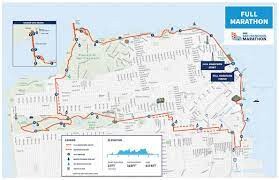

"Just glad to be back in full force on our 45th anniversary," said Christiian Abrahamsen, one of the SF Marathon organizers, "People are able to travel again or more willing to travel again so that has definitely bumped the numbers up."
New this year, the marathon will be the first in California to have male, female and non-binary gender categories.
"Just giving everybody a chance regardless of what you affiliate yourself as, just knowing it's a safe place to be and we're happy and excited to have you there," said Eileen Nichols, a San Francisco resident who plans to run.
Also, exciting for young runners, is a new 1k Family lollipop run.
"I think it's great to get the kids involved. I think physical fitness is very important," said Sharon Chang, a San Francisco mom who was registered with her husband and four-year-old daughter.
The marathon is also partnering this year with sponsor Degree to include a special team of runners with disabilities.
"I was diagnosed in 3rd grade with a degenerative eye condition...I lost my sight at 30," said Michael Zampella of Philadelphia.
Zampella is on a team with a woman from Houston who has multiple sclerosis. They plan to finish their first marathons on Sunday.
"We work so hard just to do basic things so to do something extra like a marathon is crazy difficult but so worth it," said Sagirah Ahmed Norris of Houston who struggled with MS.
Vendors say they're glad to be back. They say they have missed the marathon events which often brings new business, but they say running has become more popular than ever.
"There were more and more runners because people weren't going to gyms, so running sale shoes are booming during the pandemic," said John Zilly, co-founder of Vimazi, which was started in 2019 making special running shoes.
Some people say with the pandemic still not over, they don't want to run the risk of catching Covid. Some say they'll be bringing a mask to the starting line.
"I am a little bit worried about COVID still," said Maricar Montano, an SF Marathon pacer who came from Hong Kong to run.
"It's going to be about thirty minutes of just standing around in a big crowd," said Montano, who says she'll likely remove the mask once she starts running and the crowd thins out.
Masks are not required on the course this year.
The marathon starts at 5:30 a.m. Sunday and residents are advised to watch for road closures.
Login to leave a comment
San Francisco Marathon Weekend
The San Francisco Marathon (Full Marathon, 1st Half Marathon, 2nd Half Marathon, 5K and Ultra marathon) will fill San Francisco’s streets. The course is both challenging and rewarding. You’ll enjoy waterfront miles along the Embarcadero, Fisherman’s Wharf, and Crissy Field; feel your heart pound as you race across the Golden Gate Bridge; speed past landmarks like Coit Tower, Golden Gate...
more...Hong Kong ‘Everesting’ record set by departing Frenchman, saying farewell to trail community with magical challenge
Ferdinand Clovis Airault climbs up and down Sunset Peak 21 times to accumulate the height of Everest from sea level
The solo challenge becomes a community event and a chance to say farewell for now but not goodbye
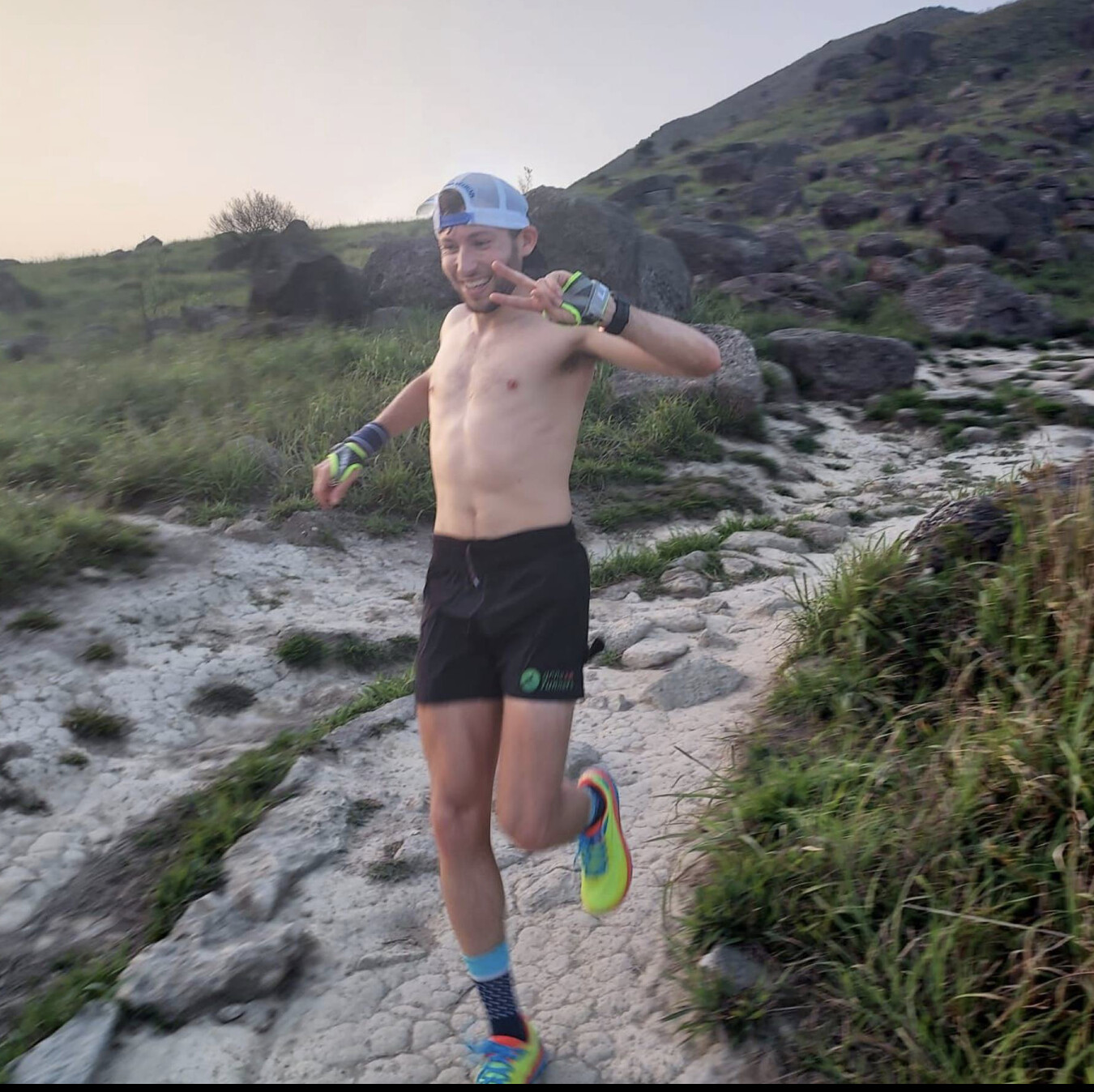
Ferdinand Clovis Airault set Hong Kong’s “Everesting” record, but the result was less important than the experience and the chance to say goodbye to friends.
The Hong Kong-based Frenchman is departing at the start of June, destined for a move to New York. As a final challenge, he ran up and down Sunset Peak 21 times, accumulating the full height of Everest from sea level.
Airault, a magician in his spare time, completed the 8,852 metres of accumulative elevation in 14 hours and 24 minutes – the fastest “Everesting” completed in Hong Kong.“There isn’t big competition for this record – I know that if Wong Ho-chung [Hong Kong’s top trail runner] comes, he will explode the record,” Airault said. “So it was not just about the record, but I felt the competition was a driver.“I came prepared, with an idea of the time I wanted and all the advice I could get. I knew all the laps would need to be 40 minutes and I couldn’t take breaks. But I would have finished it even if I was far from the record.
“The experience was the main thing – I pushed my limits, body and mind, to accomplish some kind of magic trick. The motivation was really the experience in such an iconic place like Sunset Peak. I saw the sunset and the sunrise and I was looking for the magic of the place. The competition was just a booster.”Hong Kong runner plans to shut up the sexists by ‘Everesting’ Castle Peak
The magical experience was added to by the company. Groups of trail runners came to ring cow bells and cheer Airault on at the bottom of each lap. Some joined him for a lap or two. He was joined by friends from his team at Lantau Base Camp, Hong Kong Sports Clinic and T8, and also from his rival team Gone Running Joint Dynamics.
“It’s a great way to say goodbye,” Airault said. “What is good with Covid-19 is we created these little challenges to show Hong Kong is still alive. There are still restrictions but we can make trail running evolve through these challenges and adventures.”
One of the runners who joined was Jeremy Ritcey, the former record holder.“Jeremy gave me all the tips to beat it,” Airault said. “I found that super-cool. The idea wasn’t to keep it for himself. He said we had this time as a group and we will improve it. I was just there to represent the community that day and if someone else comes along, I can help them improve the record by sharing too.”
Airault thinks he could have gone faster had he picked another mountain such as The Peak, with flat concrete roads. But he wanted to respect Covid-19 restrictions by going somewhere less busy. Besides, it was the location of the previous record, he wanted his friends on Lantau to join him and he wanted to be in a beautiful location.From around 2am to 5am he was all by himself.
“At the start, I was very enthusiastic, so even on the ferry I was full of energy,” he said. “After, when people were coming and I knew people were there to say goodbye, I began to realise that I would not see these people again, that this was my last sunset at Sunset Peak.
“At sunrise, I said, ‘This is my last sunrise, it’s time to push.’ On the last five laps, I did my fastest laps. One of my final five laps was in the 10 top fastest ever laps of Sunset Peak. I think I really had this energy of knowing it was the last time.”
Airault added that it was farewell for now but not goodbye. He hopes to return to run the TransLantau in October.
“When I arrived in Hong Kong, I knew nothing about running,” he said. “I was smoking and drinking. Hong Kong changed me and I hope the US will change me too. Trail running will stay with me, but who knows what else I will find.”
Login to leave a comment
Ruth Chepngetich and Lonah Chemtai Salpeter ready to clash at Nagoya Women’s Marathon
World marathon champion Ruth Chepngetich and Tokyo Marathon winner Lonah Chemtai Salpeter will renew their rivalry at the Nagoya Women’s Marathon – a World Athletics Elite Platinum Label road race – on Sunday (13).
Athletes in Nagoya will be racing for the largest first prize in the world of marathon running: US$250,000. Being the world’s largest women’s marathon, one of the world’s top-level races, and the only women’s race with a World Athletics Platinum Label, the Nagoya Women’s Marathon continues to be a global leader in women’s running.
To date, Chepngetich has won five of the seven marathons she has completed, and still made it on to the podium in her other two. The consistent Kenyan had her best year in 2019, starting with her 2:17:08 PB in Dubai in January, then following it eight months later by winning the world title in Doha.
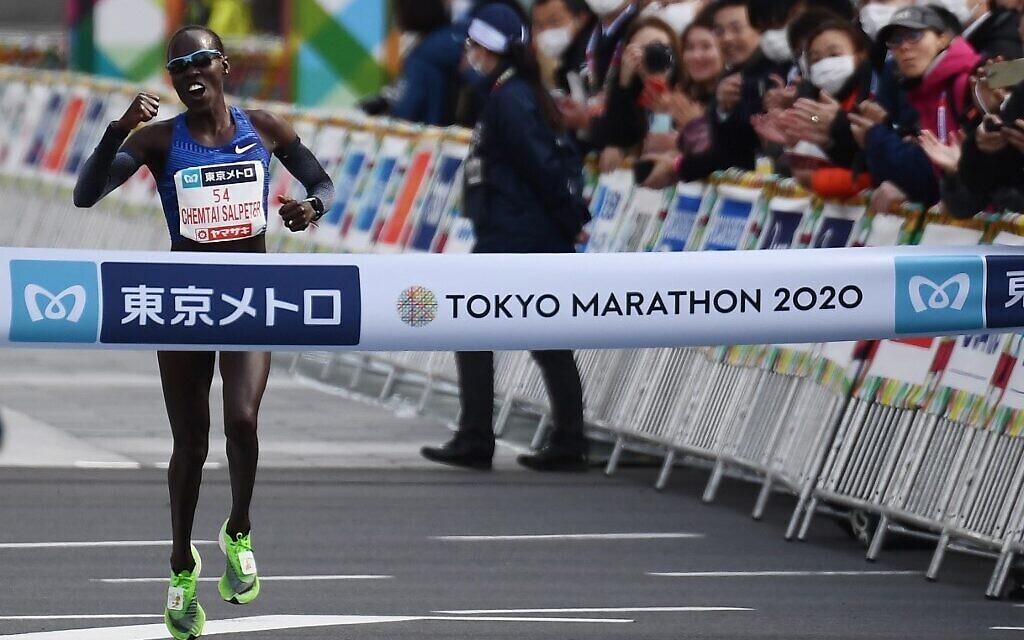
Like many athletes, she had a low-key year in 2020 but still finished third at the London Marathon in 2:22:05. Last year she failed to finish the Olympic marathon but rebounded two months later by taking victory in Chicago in 2:22:31.
While the 27-year-old appears to be more focused on victories than records, she is more than capable of producing fast times, too. In April last year she set a world half marathon record of 1:04:02 in Istanbul.
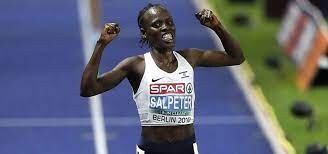
"I chose to run the Nagoya Women’s Marathon because Japan is a nice place and the environment is good," said Chepngetich. "And, as women, we have to encourage ourselves and do better. I'm looking forward to a nice race and I'd like to set a PB."
Chepngetich’s only competitive outing so far this year was at the Kenyan Cross Country Championships in Eldoret in January where she finished sixth – roughly in line with her performances at that event in previous years. She feels far more at ease racing on the roads, though.
So too does Salpeter. The Israeli distance runner won the 2020 Tokyo Marathon in a lifetime best of 2:17:45, having previously set national records when winning in Prague and Florence. Her return to Japan for the Olympics in 2021 didn’t quite go to plan as she finished down in 66th, but she bounced back in October to place fifth in London in 2:18:54.
"I’m happy to be here," said Salpeter. "It's my first time and I hope to do my best on Sunday. My training has been good. I was in Kenya for eight weeks, so I’m ready for Sunday. I’m trusting my training."
This could be the first time Chepngetich and Salpeter have a true clash over the marathon distance. In their two previous encounters over the distance, Salpeter failed to finish at the 2019 World Championships while Chepngetich did likewise at the Tokyo Olympics. Their only other duel to date was at the 2018 World Half Marathon Championships in Valencia, where Salpeter finished just one place ahead of Chepngetich.
Four years on from that, and over double the distance, this weekend’s race could be a different story.
They are among four sub-2:24 athletes entered for the event, as Japan’s Yuka Ando and Reia Iwade lead a strong Japanese contingent.
Ando ran her PB of 2:21:36 when finishing second in Nagoya in 2017 and started this year with a half marathon personal best of 1:08:13 in Yamaguchi, while Iwade ran her best marathon time of 2:23:52 in Nagoya in 2019.
Australia’s Sinead Diver will be making her third Nagoya appearance. She finished 10th in 2017 with a then PB of 2:31:37, then recorded a DNF in 2020. Now with a best of 2:24:11 and a 10th-place finish at last year’s Olympics, the 45-year-old could content for a top-five finish.
Japan’s Rie Kawauchi and marathon debutantes Kaena Takeyama and Yuka Suzuki are also athletes to look out for. Depending on their placing and position, the top Japanese finishers could earn selection for the World Athletics Championships Oregon22 or Japan’s Olympic Trials race for the 2024 Games.
Kenya’s Stellah Barsosio, Japan’s Mao Uesugi and Britain’s Charlotte Purdue will be among the pace-making team.
Last year’s edition of the Nagoya Women’s Marathon was held as a domestic race, and was won by Japan’s Mizuki Matsuda in 2:21:51.
Ten years on since the inaugural edition of the race in 2012, the Nagoya Women's Marathon continues to be the leading women-only marathon in the world. It attracted 21,915 runners in 2018 - a world record for a women-only marathon. After receiving the Japan Olympic Committee Women and Sport Award in 2017, the race was awarded the International Olympic Committee Women and Sport Achievement Diploma in 2019 for playing a significant role in the increase of women runner population in Japan.
The race, which starts at 9:10am local time on Sunday, will be streamed live to 33 countries and regions (Argentina, Australia, Brazil, Brunei, Cambodia, Chile, Colombia, Egypt, Ethiopia, France, Germany, Hong Kong, Indonesia, Italy, Kenya, Macau, Malaysia, Mexico, Monaco, Myanmar, Namibia, Netherlands, New Zealand, Papua New Guinea, Philippines, Singapore, South Africa, South Korea, Spain, Taiwan, Thailand, United Kingdom, and United States of America).
Elite field
Ruth Chepngetich (KEN) 2:17:45
Lonah Chemtai Salpeter (ISR) 2:17:45
Yuka Ando (JPN) 2:21:36
Reia Iwade (JPN) 2:23:52
Sinead Diver (AUS) 2:24:11
Rie Kawauchi (JPN) 2:25:35
Hanae Tanaka (JPN) 2:26:19
Mirai Waku (JPN) 2:26:30
Ayano Ikemitsu (JPN) 2:26:07
Ai Hosoda (JPN) 2:26:34
Chiharu Ikeda (JPN) 2:27:39
Eloise Wellings (AUS) 2:29:19.
by World Athletics
Login to leave a comment
Nagoya Women's Marathon
The Nagoya Women's Marathon named Nagoya International Women's Marathon until the 2010 race, is an annual marathon race for female runners over the classic distance of 42 km and 195 metres, held in Nagoya, Japan in early March every year. It holds IAAF Gold Label road race status. It began in 1980 as an annual 20-kilometre road race held in...
more...Hong Kong Marathon ordered that tattoos must be covered up, or would not be permitted to run
On Sunday, runners who were registered for the Standard Chartered Hong Kong Marathon were ordered to cover up political slogans and all tattoos on their bodies before being allowed to compete. Fifteen-thousand runners took part in the Hong Kong marathon, which marked the first race on the island since the start of the pandemic.
According to the South China Morning Post, the runners were told to cover up tattoos and political statements or they would not be permitted to run. This rule was created after the 2019 protests in Hong Kong as a way to discourage anti-government and pro-democracy demonstrations that have been running for the last year.

Organizers warned participants during registration to avoid wearing any items of political expression.

“Anyone who uses the Hong Kong marathon as a platform for conveying and promoting political messages will face consequences,” organizers said in a press release. “This is a zero-tolerance approach.” Law enforcement was prepared heavily for the marathon, with police deploying counter-terrorism units on the race route.
The South China Morning Post reported that one runner was escorted to a changing room by police during a security check, and was told to change her shorts because of a printed political slogan on the side. Another man with a tattoo on his calf faced being kicked out of the marathon unless he covered it with a bandage, which he did.
2021 also marked the first year that the race banned costumes that cover the face for security reasons. A runner was told that he couldn’t run in his spiderman costume for personal identification purposes.
by Marley Dickinson
Login to leave a comment
HONG KONG MARATHON
The Hong Kong Marathon, sponsored by Standard Chartered Bank, is an annual marathon race held in January or February in Hong Kong. In addition to the full marathon, a 10 km run and a half marathon are also held. Around 70,000 runners take part each year across all events. High levels of humidity and a difficult course make finishing times...
more...The benefits of your daily run outweigh the risks of the particulate matter in the air, study finds
Regular exercise, even in areas with high air pollution, can lower your risk of early death from natural causes, according to a new study published in the Canadian Medical Association Journal (CMAJ).
Though your risk of early death rises with exposure to fine particulate matter (PM2.5) in the air, you can reduce it through exercise, regardless of your levels of exposure to PM2.5.
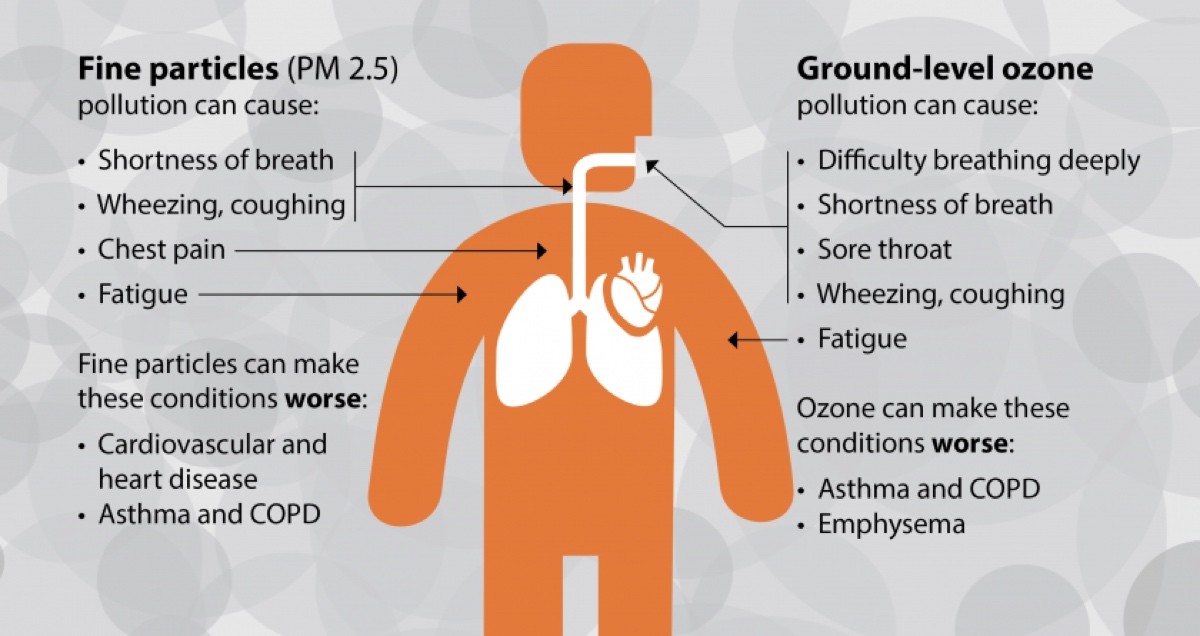
Wildfires account for half of overall hazardous air pollution in the western U.S., and up to a quarter of PM2.5 exposure in the U.S. in general.
To go out for a run or not to go out for a run? That’s a question many runners in the U.S. (and beyond) increasingly must ask as wildfires happen earlier and last longer, billowing particulate matter (PM2.5) clear across the nation. Sure, it creates a backdrop for stunning sunsets, but it also makes the air worrisome to breathe and negatively impacts health.
Though sucking in high levels of air pollution will never be good for you, new research shows that the benefits of exercising outweigh the risks of the bad air. The study, published in the Canadian Medical Association Journal (CMAJ), found that regular exercise, even when performed in areas with air pollution, can reduce the risk of early death from natural causes, compared to being sedentary.
Researchers examined the health records and activity levels of more than 384,000 adults living in Taiwan—where the annual air pollution levels of PM2.5 are 1.6 times higher than the World Health Organization-recommended limit—over a 15-year period from 2001 to 2016. The researchers looked at both levels of exposure to PM2.5, as well as the study participants’ activity levels.
In terms of pollution, exposure levels were based on the two-year average concentration in the year of a medical examination and in the previous year, and were broken into the following categories. (The concentration of an air pollutant is measured in μg/m3, or micrograms per cubic meter of air.)
Low: < 22.4 μg/m3
Moderate: 22.4–26.0 μg/m3
High: ≥ 26.0 μg/m3
PM2.5 is especially problematic for your health, according to the World Health Organization, because it can penetrate the lung barrier and enter your bloodstream. It raises the risk of developing cardiovascular and respiratory disease as well as cancer.
The participants’ activity levels were assigned to a category corresponding with their reported METs (metabolic equivalent for task):
Inactive (0 METs—the equivalent of sitting quietly)
Moderate (0 to 8.75 METs—runs at around a 12-minute mile pace or less)
High (greater than 8.75 METs—runs faster than a 12-minute mile pace)
In the end, those with both high levels of exercise and low levels of exposure to pollution fared best (no surprise there). But though risk of early death rises with pollution exposure, you can reduce it through exercise, regardless of the levels of PM2.5 exposure, says study author Xiang Qian Lao, Ph.D., an associate professor at the Jockey Club School of Public Health and Primary Care at The Chinese University of Hong Kong in Shatin, Hong Kong.
“For example, among the people with high PM2.5 exposure—compared to inactive, moderate, and high exercise—can reduce [early] death risk 16 percent and 33 percent [respectively],” Lao told Runner’s World.
Among those with moderate PM2.5 exposure, compared to inactive, those performing moderate and high exercise can reduce their early death risk 13 percent and 29 percent respectively. And among those with low PM2.5 exposure, those performing moderate and high levels of exercise can reduce their early death risk 19 percent and 41 percent respectively compared to their inactive peers.
That’s not to say you should ignore the U.S. Air Quality Index (AQI), which takes five major air pollutants—including PM2.5—into account and go bust out a long run when it’s code maroon (hazardous), but it’s reassuring to know that if you live in a place with increasingly imperfect air much of the year, your daily run still does your body good.
by Runner’s World
Login to leave a comment
Hong Kong Marathon likely to be held in October, but only some 10,000 fully vaccinated runners can join
Hong Kong Marathon is tentatively scheduled for October 24 after being suspended last year because of the pandemic, Commissioner of Sports Yeung Tak-keung said, but the number of participants will be reduced to some 10,000, while all must complete Covid-19 vaccination.
Yeung said that the race has been discussed by the Associations of Athletics Affiliates and was believed to be likely to come true. The association is expected to announce a decision within this week.
"If the marathon is held successfully, the route will be changed and the number of participants is expected to limit to some 10,000, with the requirements of completing two doses of vaccines," he said.
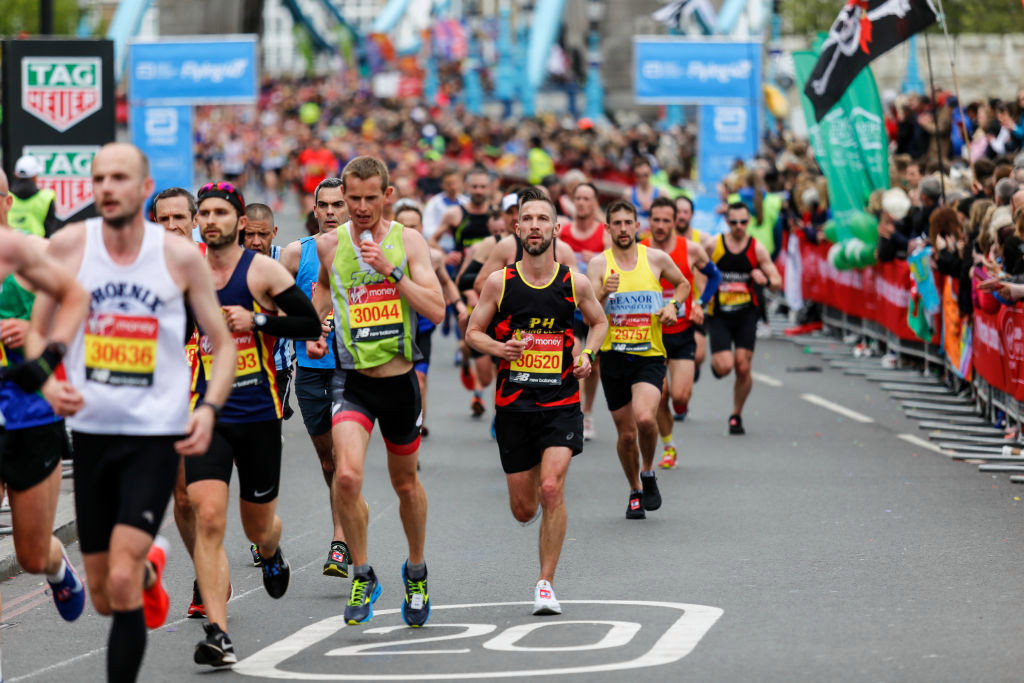
Speaking in a radio program today, Yeung said that some local television stations are negotiating with mainland authorities to purchase the broadcasting rights of the National Games of China to be held next month and that Hongkongers "will definitely be able to watch the games on TV."
But he said it is unknown how many stations can broadcast the games.
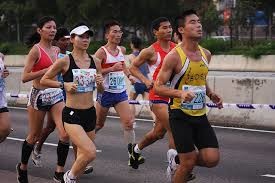
On the Tokyo Olympics which closed on August 8,Yeung said the record high six medals were out of expectation, which was very surprising.
He pointed out that the government has significantly pumped up resources allocated to sports over the past five years, from about HK$400 million in 2015 and 2016 to nearly HK$800 million this year.
Apart from increasing the number of athletes, the government has also put more resources in professional support, strengthening psychological and physiotherapy services, as well as hiring more physical trainers.
Login to leave a comment
HONG KONG MARATHON
The Hong Kong Marathon, sponsored by Standard Chartered Bank, is an annual marathon race held in January or February in Hong Kong. In addition to the full marathon, a 10 km run and a half marathon are also held. Around 70,000 runners take part each year across all events. High levels of humidity and a difficult course make finishing times...
more...Postponed 2021 Hong Kong Marathon set for October with 75 per cent cut in numbers
The twice-postponed 2021 Hong Kong Marathon, due to take place in October, will have its numbers cut by 75 per cent to 18,500, organisers have announced.
The participation numbers within the full, half marathon and 10km events has been reduced from its normal total of 74,000 as part of COVID-19 precautions.
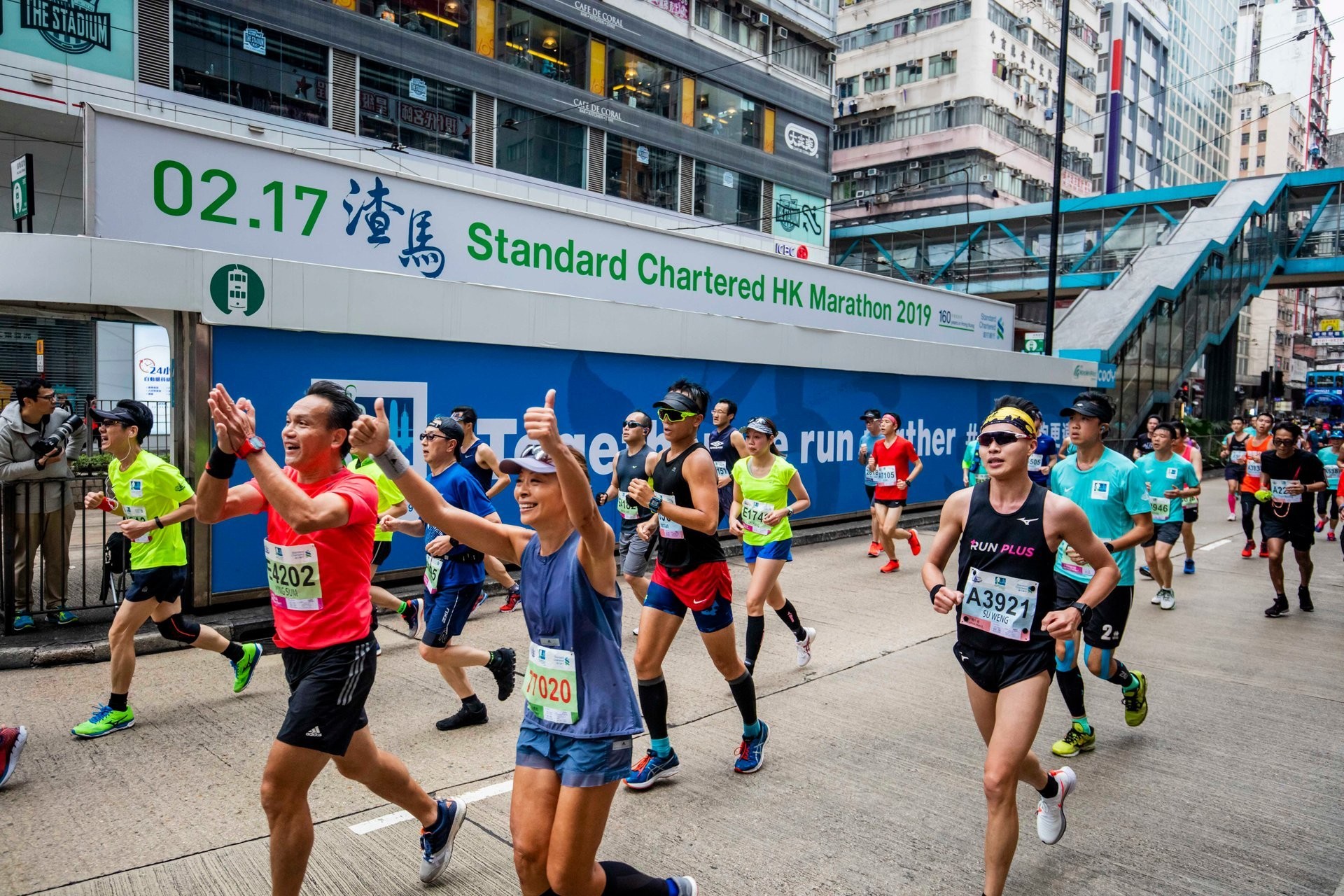
The Hong Kong Association of Athletics Affiliates (HKAAA) said the Home Affairs Bureau had agreed in principle for the postponed event to take place but it still needed a stamp of approval from the government and Centre for Health Protection.
Organisers are seeking approval for the re-shaped event from senior Government and medical experts by August to have time to prepare for the races.
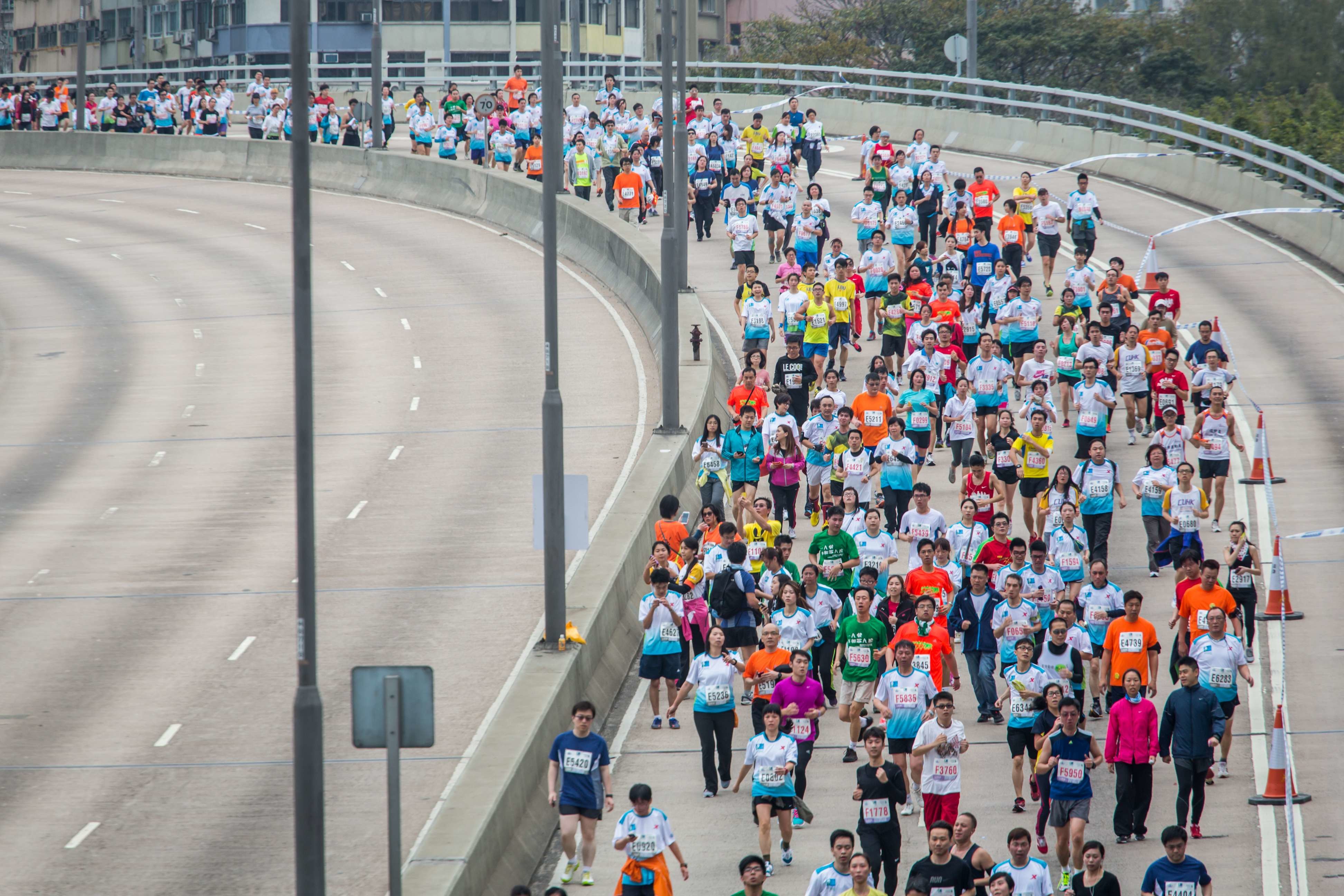
Negotiations for the latest arrangement began in March.
The 2021 race, due to take place on January 24, was postponed to April and then again to October.
The half and full marathons will accommodate 6,500 and 4,000 runners respectively, with the route largely unchanged from previous years.
The 10km race, which will involve 8,000 runners, will start at the Western Tunnel Toll Plaza as opposed to its usual location at the Island Eastern Corridor.
This is to ensure all three races share the same route to minimise the chance of COVID-19 infections.
The roll-out-style starting times remain the same despite the reduced field, with runners going off in batches of 200 to minimise contact.
All participants must be fully vaccinated at least two weeks before the race and must arrive with their masks on before the race, although they can remove them at the start line.
"The Government is eager to bring people back to normal life, and with the recent ease of the pandemic [restrictions], we are quite confident in finding a resolution to pave a way to stage the event his year," said HKAAA chairman Kwan Kee.
World governing body World Athletics said given the pandemic, there was no need to classify the event as gold-label and therefore organisers do not need to meet the "top runner" threshold.
Organisers nonetheless plan to invite elite runners from neighbouring countries who have comparatively lighter Government-imposed quarantine requirements.
They added that a bubble scenario was not feasible in terms of money and manpower.
In case the HKAAA needed to call off the event 14 days in advance, there will be a 50 per cent refund on entry fees - any later and refunds will not be offered, as is the case with many international race events this year.
Organisers have also pencilled in next year’s Standard Chartered Marathon events for February 13, 2022
by Mike Rowbottom
Login to leave a comment
HONG KONG MARATHON
The Hong Kong Marathon, sponsored by Standard Chartered Bank, is an annual marathon race held in January or February in Hong Kong. In addition to the full marathon, a 10 km run and a half marathon are also held. Around 70,000 runners take part each year across all events. High levels of humidity and a difficult course make finishing times...
more...Hong Kong’s Christy Yiu to take part in Milan Marathon hoping to achieve Olympic qualification
Hong Kong running star Christy Yiu Kit-ching has been thrown a lifeline in her stuttering Olympic qualifying campaign after being handed an invite to take part in next weekend’s Milan Marathon – her first marathon race in 22 months.
Yiu’s hopes to qualify for this summer’s Tokyo Olympics have been thrown in disarray since the pandemic threw the world sporting calendar upside down in 2020.

The 33-year-old long-distance runner needed assistance from the world governing body to save her Olympic qualification campaign after every race she wanted to compete was either cancelled or she was rejected because of Covid-19 restrictions.
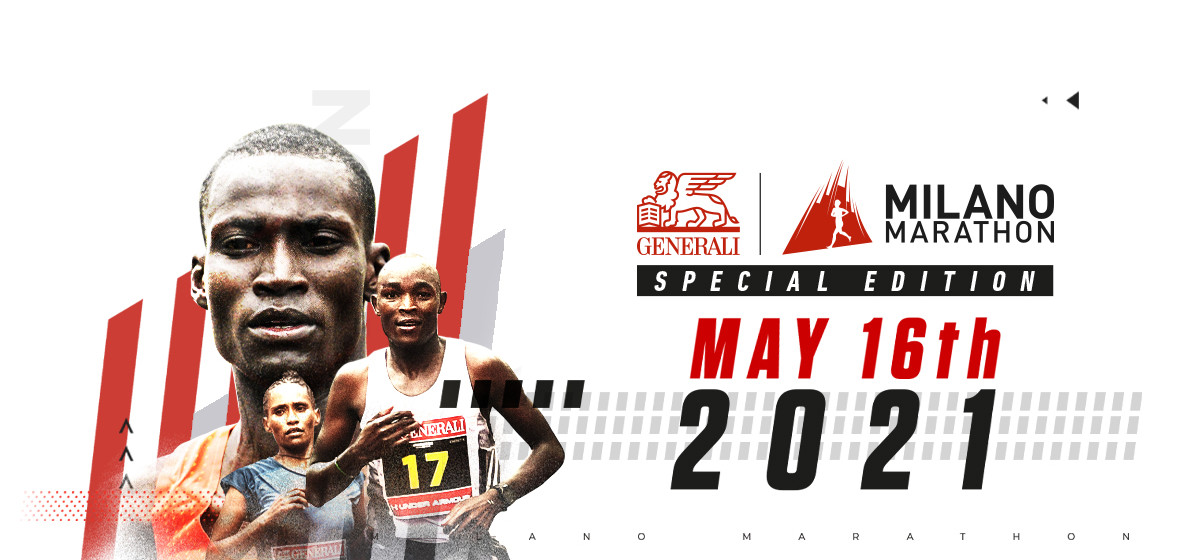
The Rio Olympian has been struggling to get a single racing opportunity after competing in the 2019 Gold Coast Marathon and she desperately wants to compete overseas in her bid to qualify for her second Olympics.
A senior local official shared Yiu’s frustrations but said she might finally get the opportunity to compete again in the marathon after months of anxiety.
“Yiu needs to reach the [Olympics] entry mark but unfortunately she has been denied the opportunity one race after another after competing in Australia and this is mainly due to the pandemic,” said Hong Kong Association of Athletics Affiliates chairman Kwan Kee. “The event she has supposed to compete was this month’s Copenhagen Marathon in Denmark but that was called off in late April due to Covid-19 safety measures in the city.
“We have found the Milan Marathon, which is opened to invited athletes and after seeking assistance from World Athletics and the local organisers for the event, we were able to obtain a spot for her. And there is no need for her to do the quarantine when she arrives in Milan.”
The Milan Marathon, which will take place in the northern Italian city on May 16, will be run on a fast circuit of 7.5 kilometres with runners running around it five times. The hub will be Piazza del Cannone, in front of Castello Sforzesco, the famous castle that was built in the 15th century by Francesco Sforza.
by Chan Kin-wa
Login to leave a comment
Milano Marathon
Passion is what allows us to go beyond our limits. It’s what makes us run when our heath is bursting in our chest, it’s whats makes our legs move even if they’re worn out. It’s passion against sacrifice, and the winner will be declared though hard training, hearth and concentration. Milano Marathon has been presented in the futuristic Generali Tower,...
more...Update on races that hopefully will be held in 2021 from David Monti
Here’s the latest news on marathons and road races which have come across my desk:
ELITE-ONLY MARATHON SCHEDULED FOR TUSCANY – Thanks in part to funding from the Xiamen Marathon, a European Olympic Marathon qualification race will take place at the Ampugnano Airport in Tuscany, Italy, on Sunday, April 11. The event is called the Xiamen Marathon & Tuscany Camp Global Elite Race and will feature some of the sport’s most recognizable marathoners, like:
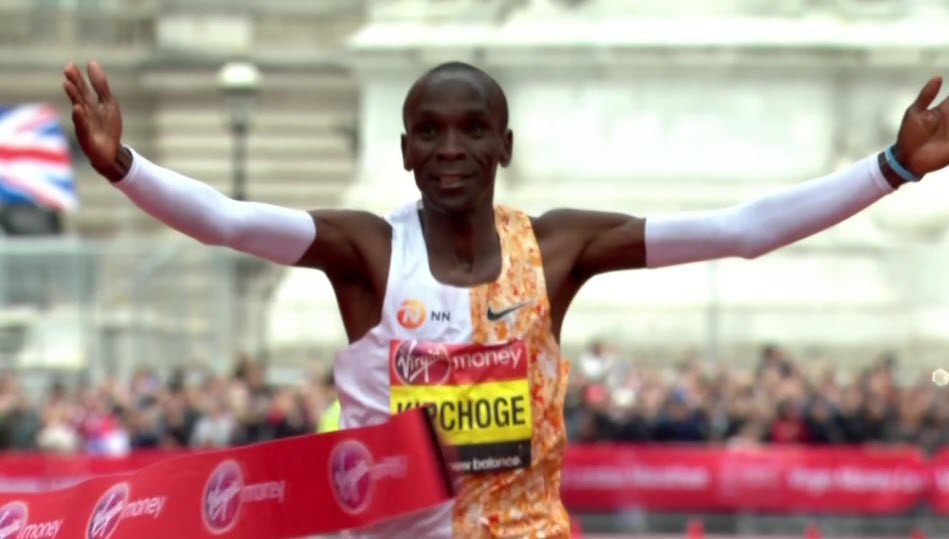
Marius Kipserum (KEN), Suguru Osako (JPN), Angela Tanui (KEN), Leul Gebresilase (ETH), Gerda Steyn (RSA), Daniele Meucci (ITA), and Valeria Straneo (ITA). The race will begin with a one-kilometer loop, followed by eight 5-kilometer loops and a short straight to the finish line to make the full 42.195-kilometer distance. The course is World Athletics-certified, so all athletes have a chance to record Olympic Games qualifying marks.
PRAGUE MARATHON MOVES TO THE FALL – RunCzech has announced that the Volkswagen Prague Marathon will be held in the fall for the first time; the event traditionally takes place on the first or second Sunday of May. The planned date is Sunday, October 10, the same day as the Bank of America Chicago Marathon. The capacity of the event will be determined later in coordination with Czech health officials.
RunCzech will also hold a virtual version of the race from May 3, through May 31. “We must never stop dreaming and believing,” said RunCzech president Carlo Capalbo through a statement. “There is light at the end of this tunnel. We’ll be there to cheer you on every step of the way, and we look forward to greeting you at the finish line with shouts of joy.”
AUSTRALIA AND ARGENTINA ALSO HOST OLYMPIC QUALIFYING MARATHONS – Elite-only marathons will be held in both Australia and Argentina in April to give athletes a chance to qualify for the Tokyo Olympics. In Australia, the race will be held in Sydney at the International Regatta Centre in Penrith on April 25, and be organized by Athletics Australia.
“In the same international calendar period, a number of our marathoners would normally be racing at the London Marathon, so this elite race in Sydney is an important opportunity,” said Athletics Australia president Mark Arbib through a statement. “By creating the course for elite athletes, we are allowing our marathoners to prepare with as much certainty as possible.” In Argentina, the race will be held in Santa Rosa, La Pampa on April 18. The Maraton Internacional A Pampa Traviesa will incorporate the Argentine national marathon championships.
SOME SPRING MARATHONS TO GO FORWARD – A few spring marathons will go forward as in-person races, despite the pandemic. Here is a summary (not a complete list):
April:
03 – Carmel Marathon (USA)
03 – Easter Marathon (AUS)
10 – Access Bank Lagos City Marathon (NGR), C&D Xiamen International Marathon (CHN)
11 – Beverly Wuxi Marathon (CHN), Canberra Times Canberra Marathon (AUS), Maratona Sao Paulo (BRA), Xuzhou Marathon (Chinese Olympic Trials)
18 – Debno Marathon (POL/elite only), Maraton Internacional A Pampa Traviesa (ARG), Zheng-Kai International Marathon (CHN)
24 – Valley O.NE Marathon Weekend (USA)
25 – Ascension Seton Austin Marathon (USA), Mercy Health Glass City Marathon (USA)
25 – Wrexham Elite Marathon & Half-Marathon (GBR)
May:
01 – Myrtle Beach Marathon (USA)
08 – Fort Worth Cowtown Marathon (USA)
16 – Belgrade Marathon (SRB), Alexander the Great Marathon (GRE), Copenhagen Marathon (DEN), Generali Milano City Marathon (ITA)
30 – Brescia Art Marathon (ITA)
MOST SPRING ROAD RACES MOVE TO THE FALL – One by one, race organizers are moving their spring road races to late summer or the fall. Here is a summary of some of those postponements:
August:
22 – Vitality Big Half (GBR), Generali Berliner Halbmarathon (GER), Kerzerslauf 15-K (SUI)
28 – Asics Sentrumsløpet 10-K (SWE)
September:
05 – Bath Half-Marathon (GBR), CSOB Bratislava City Marathon (SVK), Harmonie Mutuelle Semi-Marathon de Paris (FRA)
05 – Spar Women’s Challenge – Cape Town (RSA), Sportisimo Prague Int’l Half-Marathon (CZE)
06 – GTC Reedy River Run 10-K (USA)
11 – Göteborgsvarvet Half-Maraton (SWE)
12 – HASPA Marathon Hamburg (GER), Credit Union Cherry Blossom 10-Mile (USA), Meia-Maratona Internacional de Lisboa (POR)
12 – Brighton Marathon (GBR), Stramilano (ITA), Vienna City Marathon (AUT)
19 – Run Rome The Marathon (ITA)
25 – Cooper River Bridge Run (USA), Freihofer’s Run for Women (USA), NN City Pier City Half-Marathon (NED)
October:
02 – Azalea Trail Run 10-K (USA)
03 – Cardiff University Cardiff HM (GBR), 10-K Valencia Ibercaja (ESP), Virgin Money London Marathon (GBR)
10 – Bank of America Chicago Marathon (USA), Volkswagen Prague Marathon (CZE)
11 – Boston Marathon (USA)
17 – EDP Medio Maratón de Sevila (ESP), Schneider Electric Marathon de Paris (FRA), eDreams Mitja Marató de Barcelona (ESP), Tokyo Marathon (JPN)
24 – NN Marathon Rotterdam (NED), Standard Chartered Hong Kong Marathon (HKG), Oberbank Linz Donau Marathon (AUT)
29 – Jerusalem International Marathon (ISR)
November:
07 – Los Angeles Marathon Presented by Asics (USA), Zurich Marató de Barcelona (ESP)
14 – Movistar Medio Maratón Villa de Madrid (ESP)
21 – New Taipei City Wanjinshi Marathon (TPE)
28 – Limassol Marathon (CYP)
by David Monti Race Results Weekly
Login to leave a comment
The Cold, Hard Reality of Racing the Yukon Arctic Ultra
Temperatures were brutally low at this year’s running of the 300-mile competition, and one frostbitten competitor may lose his hands and feet. Is this just the price of playing a risky game, or does something need to change?
Roberto Zanda left the Carmacks checkpoint of the Montane Yukon Arctic Ultra just before noon on February 6. He was at least 150 miles into the 300-mile race—he’d already been slogging down a dogsled trail through the Yukon backcountry for more than five full days. Temperatures had plunged below minus 40 Fahrenheit on the first night out of Whitehorse, the small Yukon city where the race began; along the race course, temperatures consistently ranged from the minus 20s to the minus 40s.
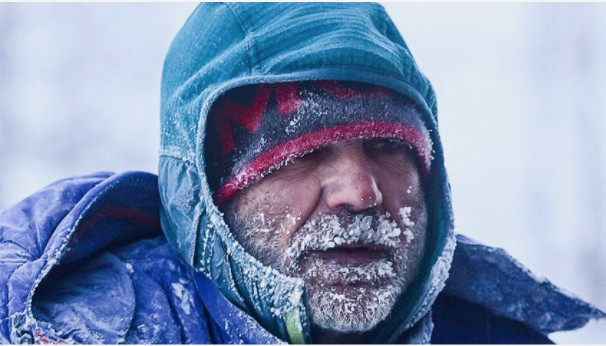
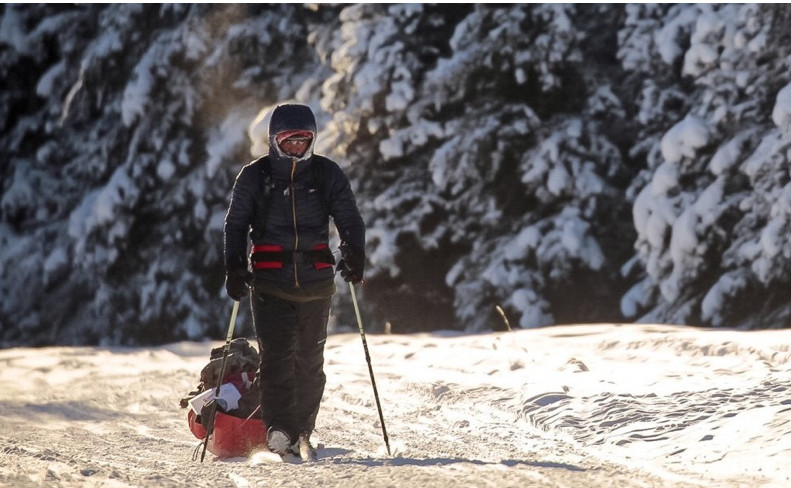
In short, conditions were brutal. Of the eight racers who’d begun the 100-mile version of the variable-length event, just four had finished. Of the 21 who’d started the 300-miler, only the 60-year-old Zanda and two others remained. Most of the rest had scratched with frostbite or hypothermia.
When Zanda left the checkpoint, hosted in a village rec center, a race medic wrote on the event’s Facebook page that the racer had paused only for “a short rest and a big meal. He was looking very strong.”
Just over 24 hours later, Zanda was in a helicopter, being rushed to Whitehorse General Hospital with hypothermia and catastrophic frostbite, lucky to be alive. He now faces the likely amputation of both hands and both feet. What went wrong?
This was the 15th running of the Yukon Arctic Ultra, an annual race in which competitors choose their distance—marathon, 100 miles, 300 miles, or, every second year, 430 miles—and their mode of transportation: a fat bike, cross-country skis, or their own booted feet. Race organizer Robert Pollhammer, 44, who runs an online gear store in his native Germany, started the event in 2003 after being involved with Iditasport, a similar event on the Alaskan side of the border.
The Yukon race takes place on part of a trail built each year by the Canadian Rangers for the Yukon Quest, a 1,000-mile dogsled race, and it’s as much a feat of logistics as it is an athletic contest. It’s continuous, not a stage race; competitors are self-sufficient, carrying all their camping and survival gear, spare layers, food, and water in sleds they pull behind them. Temperatures are cold enough to kill, and it’s dark for roughly 14 hours every day. Nonetheless, eager ultra racers travel from around the world for the event, paying anywhere from $750 to $1,750 USD to enter (depending on when they register and the distance they’re attempting), plus the cost of flights, hotel, and gear. The total can easily add up to $5,000 or more.
The entrants tend to be experienced ultra and adventure racers; many athletes have already completed events like the Gobi March or the Marathon des Sables. Most competitors come from Europe, although this year’s race also saw entrants from South Africa and Hong Kong. The race organization offers a survival course a few days beforehand—a crash education in moisture management, layering, and cold-weather injuries. Generally speaking, the racers are accomplished athletes, but they may not have extensive experience with severe cold. The challenge lies in keeping themselves safe while moving through the Yukon’s remote, frigid backcountry.
The race is billed as “the world’s coldest and toughest ultra,” and there have been plenty of serious injuries before: flesh blackened by frostbite, frozen skin peeling off racers’ faces like wax, and bits of fingers and toes lost to amputation. But what happened to Zanda is by far the worst medical outcome yet, and it has shocked former racers, event organizers, and fans. It has also led to discussions and debates, often heated, about where a race organization’s responsibilities end and a racer’s personal assumption of risk begins.
As Zanda moved out of Carmacks, his Spot tracker showed him clipping along steadily at around three miles per hour. Between 3 p.m. and 9 p.m., his beacon’s transmissions became more erratic—but that’s fairly normal in the Yukon, where satellite signals can be weak or inconsistent. Between 9 and 10 p.m., the problem cleared up and the Spot began sending signals every few minutes.
The last blip came in at 10:08 p.m., at route mile 189.7, and then the device went into sleep mode. After a strong ten-hour, 25-mile push from Carmacks, Zanda appeared to have stopped to camp for the night.
In the morning, as the sun rose, his tracker still hadn’t moved. The race crew wasn’t concerned yet—Zanda had taken a 12-hour rest once before during the race, as had some other athletes. At 9:32 a.m., Pollhammer posted on Facebook that two volunteer trail guides were headed out to check on him. “His Spot has not been sending for a long time now. Once we have news I will let you all know.”
The trail guides are the race’s safety net, patrolling hundreds of miles by snowmobile to check on the athletes and, when necessary, evacuate them from the course. They motored down the trail toward Zanda’s Spot location, but when they got there, in late morning, they found only the racer’s harness and sled, loaded with a tent and sleeping bag, a stove and fuel, and—crucially—the Spot device. Zanda was gone.
They called back to Pollhammer, who contacted the Royal Canadian Mounted Police, and then they began searching the area, looking for some sign of where the racer might have left the packed trail and wandered into the forest. The Mounties were about to launch a search of their own when the call came in: Zanda had been found. A helicopter was dispatched and landed near him. The trail guides, advised by the incoming medical team, did what they could to care for Zanda while they waited. As Pollhammer put it in an email to me: “No time was lost.”
A few days later, Zanda spoke to a Canadian television reporter from his hospital room in Whitehorse. He wore a pale-green gown, and his hands were heavily bandaged, nearly up to his elbows. His feet and shins were the same. He said he’d left his sled behind to go look for help because his feet were freezing up. He and his family members have also told race organizers that Zanda had lost the trail and went in search of the next marker, leaving the sled behind while he scouted.
Hypothermia must have already had Zanda in its grip by then, muddying his mind and compromising his decisions. His sled was his lifeline, containing everything he needed to stay alive and the only tool he had to call for help. He wandered through the cold and dark all night while the sled sat on the trail, sending out a reassuring beacon to the world that all was well.
I competed in this year’s Yukon Arctic Ultra—my first attempt—and I didn’t last long. Twenty-two hours in, suffering from frostbite on three fingertips, I scratched from the event, one of four 100-mile racers who decided to quit.
I never met Zanda, though for all I know we could have been standing side-by-side at the start line. On the afternoon of day one, he left the first checkpoint 19 minutes ahead of me. That night, I passed by as he bivied on the side of the trail. A couple hours later, I put up my own tent, crawled inside, and was trying to change into dry clothes with my hands briefly exposed. That was long enough for frostbite to set in.
Early the next morning, Zanda and two other racers passed my tent. I heard them go by but didn’t call out. I was waiting until daylight to push the help button on my Spot. I’ve thought about those encounters a lot since I learned about what happened to Zanda. It’s impossible not to hear his story and ask: Could that have been me?
Easily. I knew when I signed up for the race that amputations, or even death, were among the potential consequences. At such low temperatures, exhausting yourself to the degree required to complete an ultramarathon is a good way to erase whatever thin margin of safety you’ve managed to create. But while some of my friends had concerns, I wasn’t really worried. That disconnect is what allows many of us to put ourselves in these situations.
Zanda wasn’t the only person hospitalized. Nick Griffiths, another 300-mile racer, scratched on day two. The frostbite on his left foot had become severe by the time he was whisked from the trail to a remote checkpoint for eventual evacuation to Whitehorse. Griffiths spent five days in the hospital, and he will eventually lose his big toe and two others next to it. (To preserve as much healthy tissue as possible, doctors will allow the toes to “self-amputate,” meaning that the dead tissue will simply fall off.) Losing the big toe, in particular, could have a serious impact on Griffiths’ future ability to walk, hike, and run.
“I’m hoping I’ll be all right,” he told me from his home in England, where he’s been reading up on athletes who’ve lost toes. “I’m not expecting to be able to go and do ultras or things like that, but there’s other challenges. It’s not ideal, but there’s no point jumping up and down about it. It’s done.”
I’m not sure I could muster the same acceptance if I were in Griffiths’ position, let alone Zanda’s. Understandably, the Italian racer’s friends and family are extremely upset. In the days after his rescue, the race’s Facebook page filled up with furious comments from people demanding to know how this could have happened, why Zanda wasn’t checked on sooner, why the race hadn’t been canceled entirely when the weather refused to relent. Zanda’s wife, Giovanna, wrote, in Italian, “It’s been too many hours before you decided to verify what happened. He didn’t die by miracle.” His brother, Paolo, posted, “Why they promise you safety when they do not care about you?” To which Pollhammer replied, “Nobody promises safety.”
That much is certain. The waiver I signed when I filed my registration paperwork last summer listed the risks I was assuming as including but not limited to “dehydration, hypothermia, frostbite, collision with pedestrians, vehicles, and other racers and fixed or moving objects, sliding down hills, overturning of ice-rocks, falling through thin ice, avalanche, dangers arising from other surface hazards, equipment failure, inadequate safety equipment, weather conditions, animals, the possibility of serious physical and/or mental trauma and injury, including death.”
Still, even as we sign our lives away, participating in an organized race may provide us with an illusion of safety in a way that an independent backcountry trek might not. If so, I suppose it becomes our job to tear down that illusion and make clear-eyed choices about the risks. That’s easier said than done, of course.
Throughout the aftermath of this year’s race, Pollhammer has remained calm as he answered his critics, walking the fine line of showing empathy for Zanda and his family while making it clear that he believes the error was the racer’s. Initially he seemed shaken, unsure about running the event again next year, but he has since announced the 2019 dates. I asked Pollhammer if, with the benefit of hindsight, he would do anything differently. He said that the rules and safety procedures evolve almost every year, and next year will likely be no different. But there are limits to what he can do, no matter how much he tweaks his protocols
“We can increase the list of mandatory gear, make people carry a sat phone, warn athletes even more so than we do now,” Pollhammer said. “We can do many things. However, we won’t be able to make sure people don’t get hypothermic and start making mistakes when they are out there. It they don’t act, or if they act too late, it will always mean trouble. I wish I could take that away from them, but it is impossible.”
Or as Nick Griffiths put it, “I can’t blame anybody for it—it was my own fault.”
As for Zanda, he told the CBC that he’ll be back out racing again—on prosthetics, if need be.
Login to leave a comment
Yukon Artic ultra 300 miler
The Yukon Arctic Ultra is the world's coldest and toughest ultra! Quite simply the world's coldest and toughest ultra. 430 miles of snow, ice, temperatures as low as -40°C and relentless wilderness, the YUA is an incredible undertaking. The Montane® Yukon Arctic Ultra (MYAU) follows the Yukon Quest trail, the trail of the world's toughest Sled Dog Race. Where dog...
more...How long can trail race organizers survive if there is no Hong Kong-wide Covid-19 vaccine until 2022 and sports are still restricted?
.The government has warned there may be no vaccine until 2022 and it may be the death of trailrunnning companies
Is there a storm brewing as more trail users could mean more clashes between runners and hikers when racing returns?
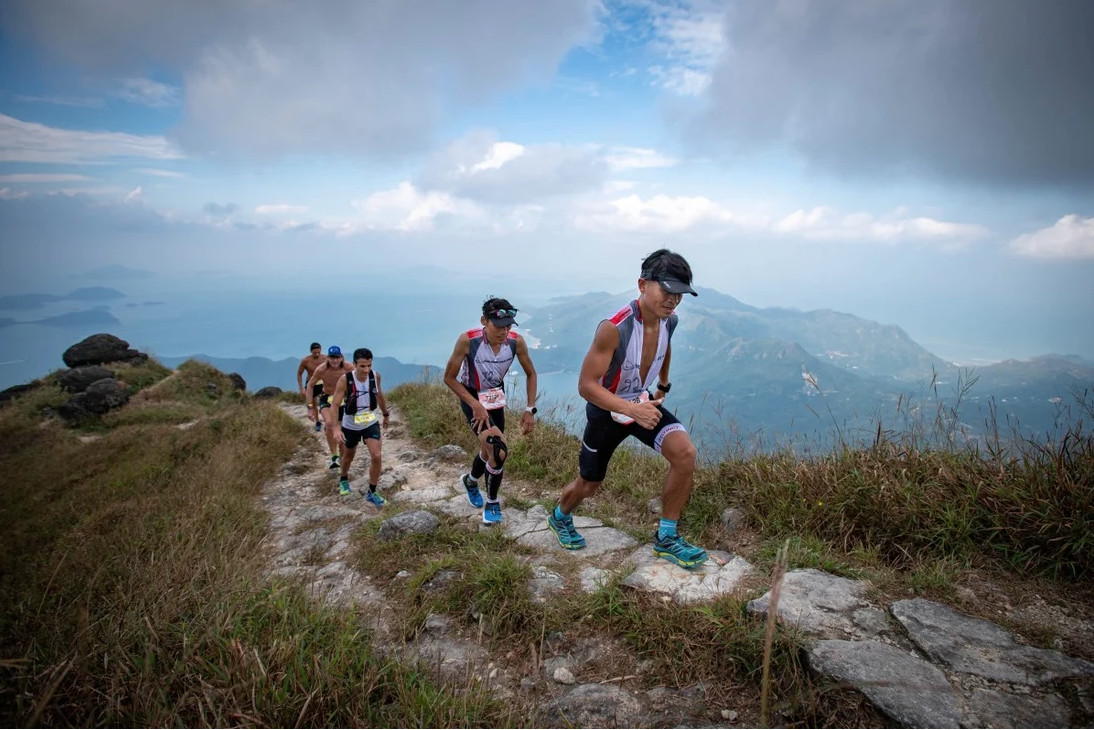
Trail races have been cancelled for most of 2020 because of Covid-19 Social distancing restrictions. The lack of income is taking a toll on trail race organizers’ bottom line, and as the Hong Kong government has said it will be “lucky” to get a citywide vaccination by 2022, there is a long road ahead.
“Many organizers and those supporting the sport are really struggling,” said Janet Ng, a founder of Trail Runners Association of Hong Kong (TRAHK) and organiser of the Vibram Hong Kong 100.
“Some organizers have now seen two years of their events being cancelled – last year because of the political unrest then followed by Covid-19. No organiser can afford to keep their staff and pay rent for this long without the ability to hold any events, big or small.
“There has been no indication from the government as to when events might be able to restart, adding to the financial uncertainty. I don’t think many events can survive another year of cancellations.”
She added that charities and NGOs that depend on an annual trail race to raise funds will also suffer.
There is the Employee Support Scheme (ESS) available for Hong Kong companies to cover salaries, but other than that there is no specific support for trail race organisers. Ng said TRAHK has proposed safety guidelines to the Home Affairs Bureau and the Food and Health Bureau but the responses have been negative. They include Social-distancing, masks and hand-sanitising.
“The guidelines follow those recommended by the International Trail Running Association (ITRA, the international trail running body). This contrasts with the approach in other territories, where events have been allowed to restart with safety protocols in place.
“The reasonableness and logic here is obviously questionable. Trail running is non-contact, doesn’t involve a ball which all the players touch, takes place outdoors and can easily embrace social-distancing. So it is much safer than many other sports from the perspective of transmission of disease. It makes no sense that riskier sports have been allowed to resume, but trail running has not,” Ng said.
he wider implication of another raceless year is a loss of status for Hong Kong. The area is a running mecca for trail lovers across Asia and it may cede its desirable status to another country in the region, costing much-needed tourism dollars, Ng said. Not to mention the affects on mental health when thousands of runners do not have goals to work towards.
Micheal Maddess, race director at Action Asia, is deeply frustrated by the government’s lack of action. He has a group of full-time staff and warehouses for kayaks, bikes, ropes and other equipment for his races. He has been rejected for the ESS and other grant applications and blames an insurance company mix up with their MPF. He continues to pursue action to rectify the issue. His warehouse landlords have refused to reduce rent.
“It’s frustrating that there are so many Covid-19 loopholes. There’s so many people who can come over the border untested, or walk in and out the hospital without being tested. The fitness community is asking, why should we suffer because of the government?,” he said.
Maddess pointed to Benjamin Cowling, an epidemiologist with the University of Hong Kong’s School of Public Health, who was recently quoted by RTHK saying evidence suggests the virus does not spread as quickly outdoors.
“Trail running relieves stress and improves mental well-being. I just wish our government can realise this as fitness is so beneficial to mental wellness, and in the tough times Hong Kong is facing now, what better industry to invest in?,” he said.
Steve Carr, a founder of RaceBase, is in a less tight spot. The company has little to no overheads and his income comes from teaching. But he is still frustrated. He has reached out to the government, and the only helpful responses he receives are from the police. Unfortunately, all they can say is that there will be no races for a while.
A lot of organisers have turned to virtual races, giving people a set window to run a course or distance and upload their time. Carr worries the government may even restrict this form of income.
“People are going to get annoyed before long. The sheer volume of virtual races that are appearing, and saying you have to complete it over a weekend, then you have 300 people running that weekend. It’s just 300 people running a race,” Carr said.
Martin Cai, founder of The Green Race, has gone from three to one employee over the course of the pandemic. However, he does give credit to the government.
“They haven’t just handed the money out, but if you’re paying attention they’ve put in opportunities to expand, improve and gain some capital,” he said.
Cai was given a Cyberport grant, designed for tech ideas. He pitched innovative ideas for timing and interactive running apps to a “Dragon’s Den” style panel. His business is in an incubation lab, with mentors and funding to help realise the plans.
“How long can we last? If we are just sitting waiting, then not long. The advice I’ve had from mentors in the programme is very quickly make your plan B your plan A,” Cai said.
“Our plan B is virtual events, which is a distant plan B. People want to meet up, race together and enjoy the community. Running virtually doesn’t compare, but this funding has given us an opportunity to make something that is as interactive and exciting as possible on a virtual scale.”
There is a danger that by the time it is ready, races will be back on and the work will have become redundant. But, it will lay foundations for other innovations.
“This pandemic has really shaken business models. Take timing – a lot of traditional timing methods are ’80s methods. It works so there hasn’t been a need to change. But this pandemic has turned the business models on their heads and we all hold the timing methods in our hands.
“I think there is going to be a quite a shake up in terms of how races are done with the technology available. I think for the better. Things stayed static, and the price too, but it should make races more affordable if we leverage technology,” Cai said.
An offshoot of the travel restrictions, and indoor venues being shut, is there are more hikers on the trails than ever before. Each of the race organisers said they were happy to see so many Hongkongers discovering the joys of the outdoors. But, there may be unintended frictions on the horizons.
Even before the pandemic, there were clashes between hikers and trail runners. Trail markers were tampered with or removed as hikers became annoyed with crowds of runners.
Cai worries the boom may limit race organisers’ creativity. They will be forced to run the same routes time and again in different directions, as the Agriculture, Fisheries and Conservation Department (AFCD) try and restrict clashes between popular races and popular hiking routes.
Maddess has been banging the drum for a while to be allowed on less busy routes. The AFCD only permit races on “named trails”.
“The AFCD need to look at ways to reduce the stress on some of the busier trails by either building new trails or encouraging use of lesser used “no name” trails by upgrading them or opening them up for events,” he said.
Racing is not the only aspect of trail running. You can run for free, any time, anywhere. There is a huge community of supportive runners and each trail organiser mentioned that it gives them hope.
“For me, it’s been really hard, because my thing is hanging out with people, it’s about mental health,” Carr said. “People recognise that race directors are being hit, so they want to support in whatever way that is possible, even if that is just running the course. It’s going to be a long slog, but the community will get around.”
Cai added: “It’s a really difficult time, and everyone is going through it in one shape or form. The community has stepped up, so many times people have offered their time. It really has helped and it has been amazing. I know we will get through this. It doesn’t mean it’s not difficult, but we will get through it together.”
Login to leave a comment
Former Ultra-Trail World Tour champion dies in training accident
The global ultra community is in mourning following the death of ultrarunner Andrea Huser
The international ultra-trail community was shocked to learn of the death of Swiss ultrarunner Andrea Huser, whose body was found near the small alpine village of Saas Fee, Switzerland, on Sunday. According to an article from Swiss news outlet 20 Minuten, Huser, 46, was reported missing on Saturday after she failed to return from a training run. The rescue party found her body at the bottom of a steep, 140m slope, and police from the nearby city of Valais determined it’s likely she slipped and fell while attempting to cross a stream blocking her route up above. Huser was well known among ultrarunners, and she had many impressive results to her name, including the 2017 Ultra-Trail World Tour (UTWT) overall female crown. She reportedly retired from the professional ultrarunning scene earlier this year.
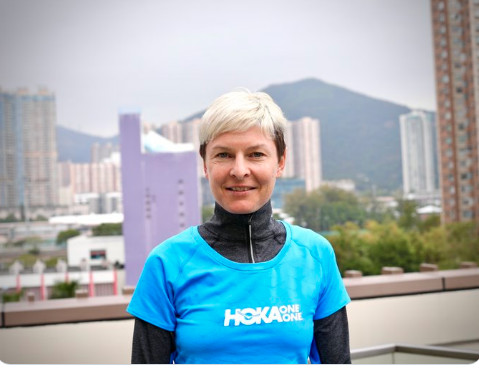
An incredible career
Huser entered the world of elite endurance sports in 2002, when she won the European mountain biking championship. In 2004, she finished fourth at the mountain biking world championships, and eight years later, she found her way to ultramarathons. She finished in second place at the famed UTMB in both 2016 and 2017, after placing seventh in 2014. Huser also recorded a 10th-place finish in her lone attempt at the Western States 100 in 2017, and she won the Grand Raid de La Réunion twice. Her last big win came in 2017 at the Ultra Trail Tai Mo Shan in Hong Kong, which helped her secure her UTWT series win.
Mourning a legend
Huser’s running club in Switzerland spoke with 20 Minuten following the news of her death. “It’s just amazing what she’s done,” said a board member from the club. “She was very popular and an amazing woman.” Big names in the ultra world have also spoken up to express their sadness upon hearing about Huser’s accident. “So sad to hear that Andrea Huser passed away,” tweeted Spanish ultrarunning phenom Kilian Jornet. “She was an extraordinary ultrarunner, [and] some seasons she [would] literally run everything, linking ultras every week.”
The UTWT tweeted in response to the news as well, writing a quote from tour director Marie Sammons, who said, “Many of us have had the privilege of meeting Andrea. … A bright and discreet woman leaves us too fast.”
by Running Magazine
Login to leave a comment
2021 Hong Kong Marathon postponed to October 24 due to the pandemic
The 2021 Standard Chartered Hong Kong Marathon, one of the city’s showpiece sports events, is postponed to October 24 because of the uncertainties surrounding the Covid-19 pandemic.
Organisers announced the decision on Friday, saying: “Public health and safety are our top priority. In light of the uncertain pandemic situation and to align with the government’s prevention measures, the organisers will continue to work with relevant government departments and stakeholders for appropriate preparation work.”

The event, which in February 2019 attracted 74,000 entrants in the 10K, half marathon and marathon categories, was originally scheduled to take place on January 24. But in August, the organisers announced a postponement without providing a date, although it is believed they were looking at April.

However, with Covid-19 still a major health threat in Hong Kong and around the world – with no sign of easing – organisers have decided to push it back to October to avoid the summer heat. They also wanted to avoid holding it too close to the following year’s marathon, which is scheduled for early 2022.
The 2020 event, originally set for February 9, was called off because of the outbreak of Covid-19 in Hong Kong.
The October date has gained support from relevant government authorities, including the police – who will provide the road permit – and Home Affairs Bureau, the de facto sports ministry.
The Hong Kong Association of Athletics Affiliates – the local governing body – needs five to six months to register runners, which means they do not have enough time to hold the race in early 2021 when the weather in Hong Kong is suitable for long distance running. Registration for the 2021 event is expected to open in the second quarter of next year.
by Chan Kin-wa
Login to leave a comment
HONG KONG MARATHON
The Hong Kong Marathon, sponsored by Standard Chartered Bank, is an annual marathon race held in January or February in Hong Kong. In addition to the full marathon, a 10 km run and a half marathon are also held. Around 70,000 runners take part each year across all events. High levels of humidity and a difficult course make finishing times...
more...General entries to the first virtual Virgin Money London Marathon have sold out
General entries to the first virtual Virgin Money London Marathon have sold out with 45,000 places taken up for this unique version of the world’s greatest marathon.
Following the announcement that the London Marathon could not take place in its usual format on Sunday 4 October, runners across the UK – and worldwide – were invited to complete The 40th Race – Your Way.
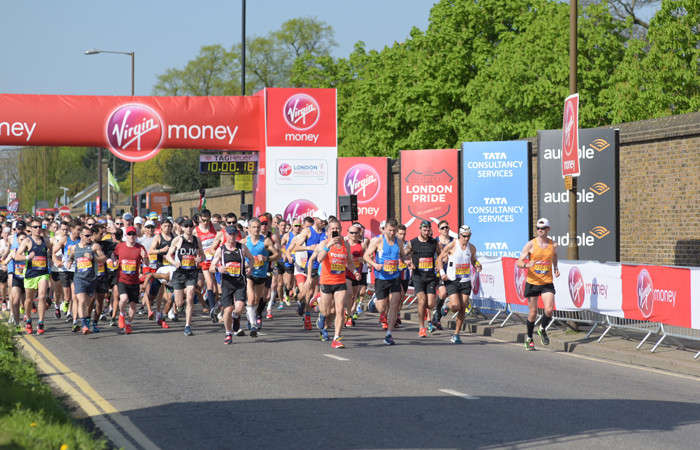
Participants have 23 hours 59 minutes and 59 seconds to run, jog or walk the 26.2 mile distance on the course of their choice, anytime from 00:00 to 23:59:59 BST on Sunday 4 October. A new app is being developed, powered by TCS, to enable participants to log their 26.2 miles and earn the unique finisher medal and New Balance finisher T-shirt.
Priority was given to runners and charities with places in the 2020 event and then general entries opened on Wednesday 26 August.
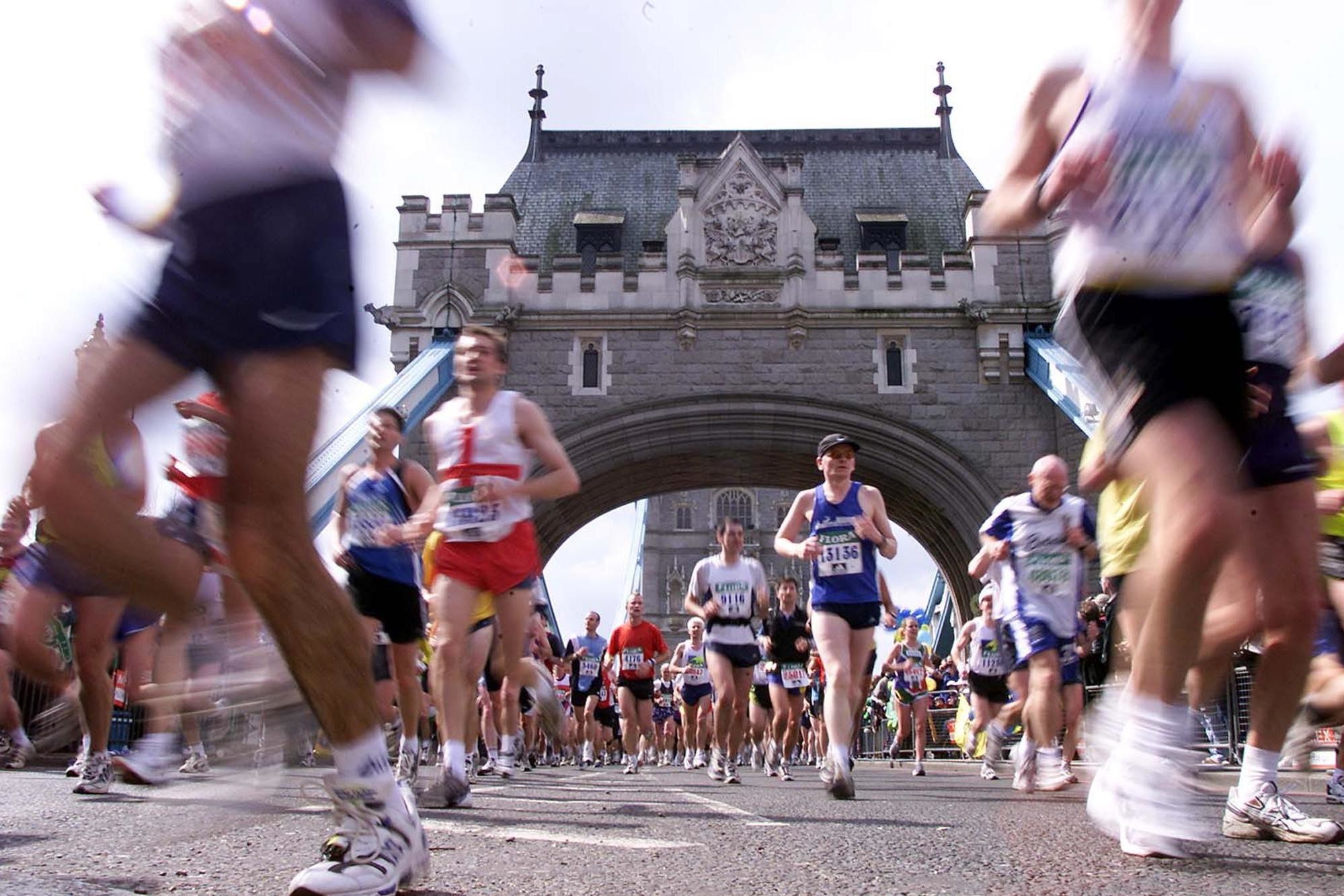
The 20,000 general entries were snapped up by runners from 81 different countries, 51 per cent women and 49% men. Outside the UK, the biggest number of entries came from Australia, Hong Kong and the USA.
Hugh Brasher, Event Director for the Virgin Money London Marathon, said: “The response has been amazing and the spirit of the London Marathon will shine brightly across the globe on Sunday 4 October.
“London is the most popular marathon on the planet with more than 457,000 people applying in the ballot for the 2020 Virgin Money London Marathon. This first virtual London Marathon, The 40th Race, has offered a unique chance for runners around the world to earn that coveted finisher medal and T-shirt and we believe it is the biggest virtual marathon ever staged. It is also the most inclusive race in our history with runners having 23 hours, 59 minutes and 59 seconds to complete the 26.2 miles.
“We hope that millions will be raised for charities by our participants and we look forward to sharing their stories.”
There are a limited number of charity places left for the virtual Virgin Money London Marathon.
Login to leave a comment
TCS London Marathon
The London Marathon was first run on March 29, 1981 and has been held in the spring of every year since 2010. It is sponsored by Virgin Money and was founded by the former Olympic champion and journalist Chris Brasher and Welsh athlete John Disley. It is organized by Hugh Brasher (son of Chris) as Race Director and Nick Bitel...
more...Kenya’s long distance runner, Mikel Kiprotich Mutai has been handed a four-year ban with compatriot Japhet Kipchirchir Kipkorir getting a provisional suspension for doping offences
World Athletics’ (WA) Athletes Integrity Unit (AIU) announced on Friday that it had found Mutai guilty of having tested positive to prohibited substance Norandrosterone.
Mutai’s suspension starts on March 20, 2020 for four years and his results dating back to December 15, 2019 will be nullified.
Mutai and another Kenyan long distance runner Alex Oloitiptip were flagged down on May 13 by AIU for separate violations of anti-doping rules. AIU is yet to determine on Oloitiptip’s case after the athlete was flagged down for his whereabouts violation.
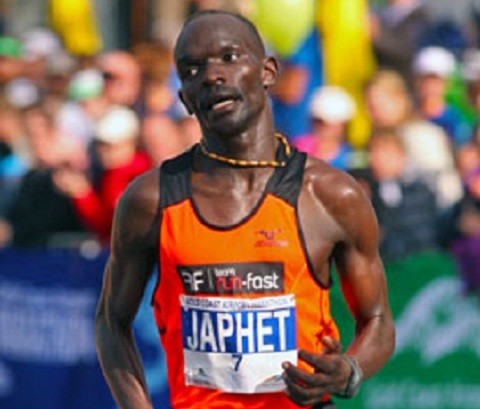
In his last race, Mutai finished third during the Taipei Marathon in 2:17:14 on December 15 last year in Taipei, almost a month after claiming an ninth place finish at Nanchang International Marathon in China in 2:19:06.
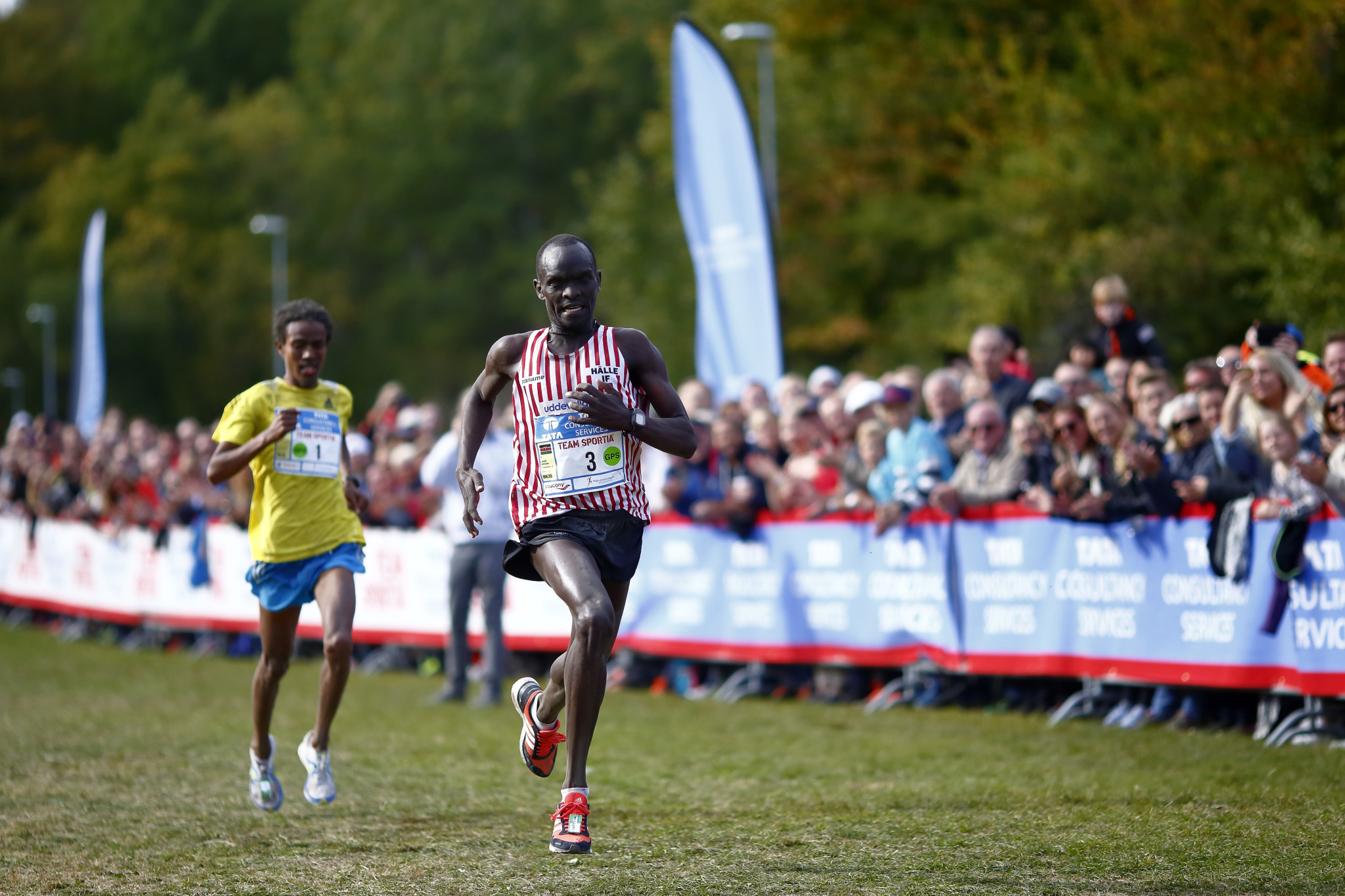
Mutai had started the year at the Standard Chartered Hong Kong Marathon where he finished eighth in 2:12:54 on February 17, having won the race for the first time in 2016 in 2:12:12.
Mutai, who has personal best 2:09:18 from 2012 Dubai Marathon, would then finish sixth at New Taipei City Marathon in 2:25:32 on March 1 last year.
Mutai started his road running career at the 2008 Nairobi Half Marathon where he finished eighth has a chance to appeal the decision.
Kipkorir, who finished third at 2011 Gold Coast Marathon in personal best 2:10:50, too has tested positive to prohibited substance Norandrosterone.
Mutai, Kipkorir and Oloitiptip join several other Kenyans who have either been banned or under provisional suspension for various doping offences this year by AIU.
They are the 2017 London Marathon champion Daniel Wanjiru, Kennth Kipkemoi, 2014 World Under-20 800m champion Alfred Kipketer and former world marathon record holder, Wilson Kipsang.
Others are Mercy Kibarus, Vincent Kipsegechi Yator and Peter Kwemoi.
by Bernard Rotich
Login to leave a comment
2020 Tokyo Olympic Games could be postponed to end of year
In a potentially seismic event postponement, Japan’s Olympic minister has said that the Tokyo 2020 Games could be moved from the summer until later in the year due to the coronavirus.
Speaking in Japan’s parliament, Seiko Hashimoto said Tokyo’s contract with the International Olympic Committee (IOC) “calls for the Games to be held within 2020… this could be interpreted as allowing a postponement.”
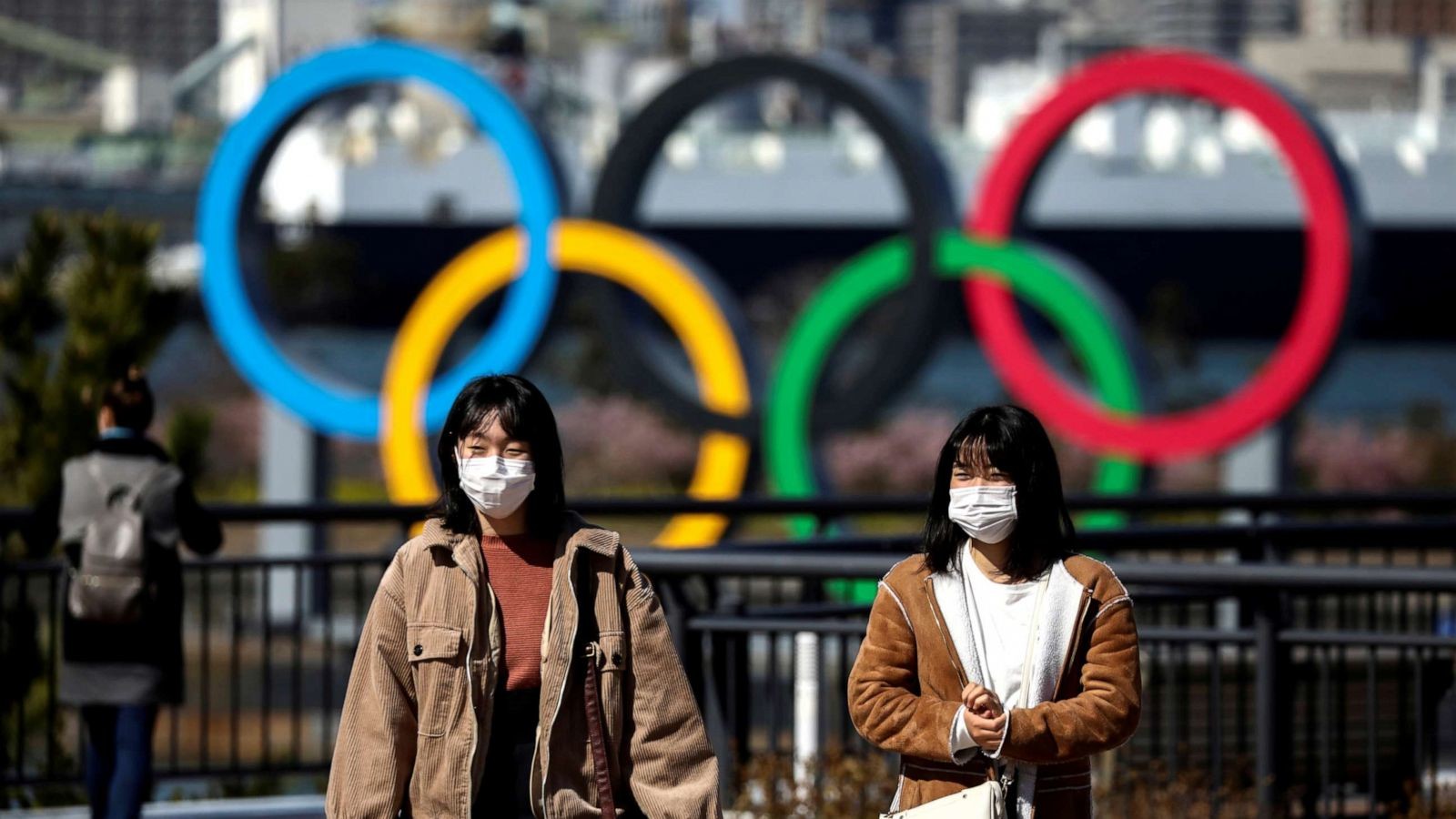
The Games are due to be held from July 24 to August 9.
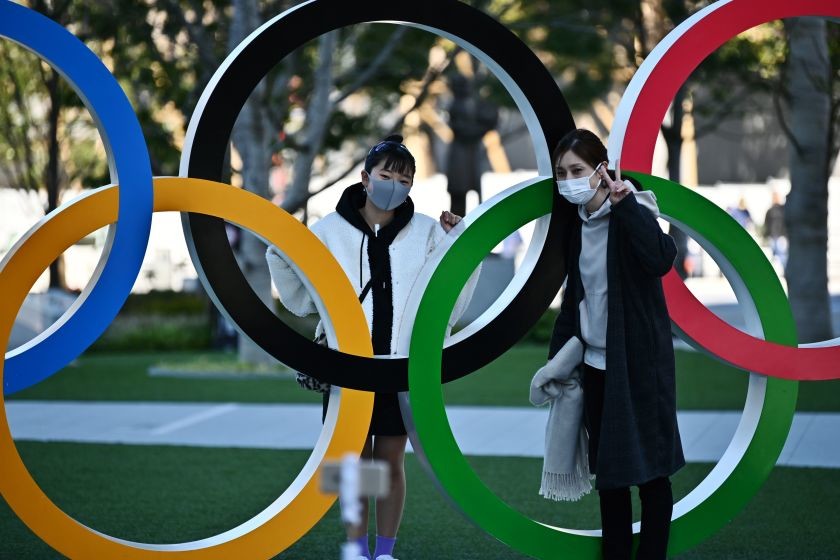
“We are doing all we can to ensure that the Games go ahead as planned,” Hashimoto added in a BBC report. IOC president Thomas Bach said last week that the organization is “fully committed” to hosting the event in the summer.
Any change of date for the Olympics would have a huge effect for broadcasters the world over.
Sporting events to be canceled or postponed due to the outbreak include the 2020 World Indoor Athletics Championships and the Chinese Grand Prix.
The film and TV industries have largely avoided cancelling major industry confabs to date though the Hong Kong Filmart was postponed. Cinemas in multiple European markets have been closed and the industry in China has been significantly impacted.
Globally, around 86,000 people have been infected by the virus, which has spread to more than 50 countries. More than 3,000 people have died – the vast majority in China’s Hubei region, where the outbreak began in December.
by Andreas Wiseman
Login to leave a comment
Tokyo 2020 Olympic Games
Fifty-six years after having organized the Olympic Games, the Japanese capital will be hosting a Summer edition for the second time, originally scheduled from July 24 to August 9, 2020, the games were postponed due to coronavirus outbreak, the postponed Tokyo Olympics will be held from July 23 to August 8 in 2021, according to the International Olympic Committee decision. ...
more...Ultrarunner Jim Walmsley runs 2:15:05 marathon debut at U.S. Olympic Trials
Jim Walmsley, one of the world’s best ultrarunners, ran his marathon debut at the 2020 U.S. Olympic Trials. On Saturday, Walmsley finished in 22nd and crossed the line in 2:15:05.
A year ago, we looked at Walmsley’s training as the Houston Half-Marathon approached. At Houston he nailed a 1:04:00, exactly the time he needed (down to the second) to qualify for the marathon trials. Following his 2019 Houston race, he went on to win a 50-mile race in Hong Kong and take 43 seconds off the 50-mile world record before shattering his own course record at Western States.
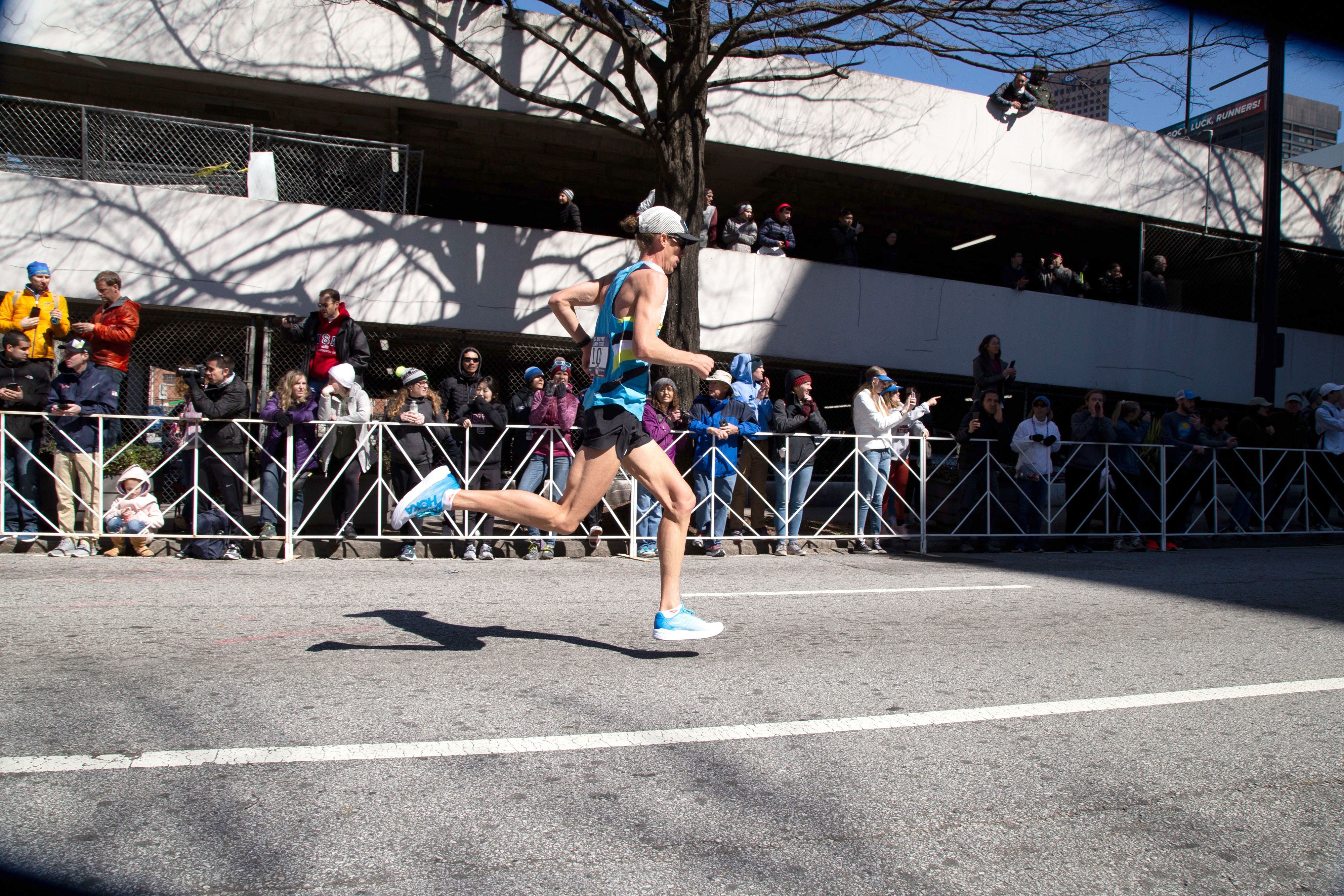
There’s no doubt Walmsley is a tough racer, but this was his first time racing a road marathon, and he didn’t quite have the chops to make the 2020 Olympic team. With that said, he ran an extremely impressive debut, on a windy day and on a hilly course.
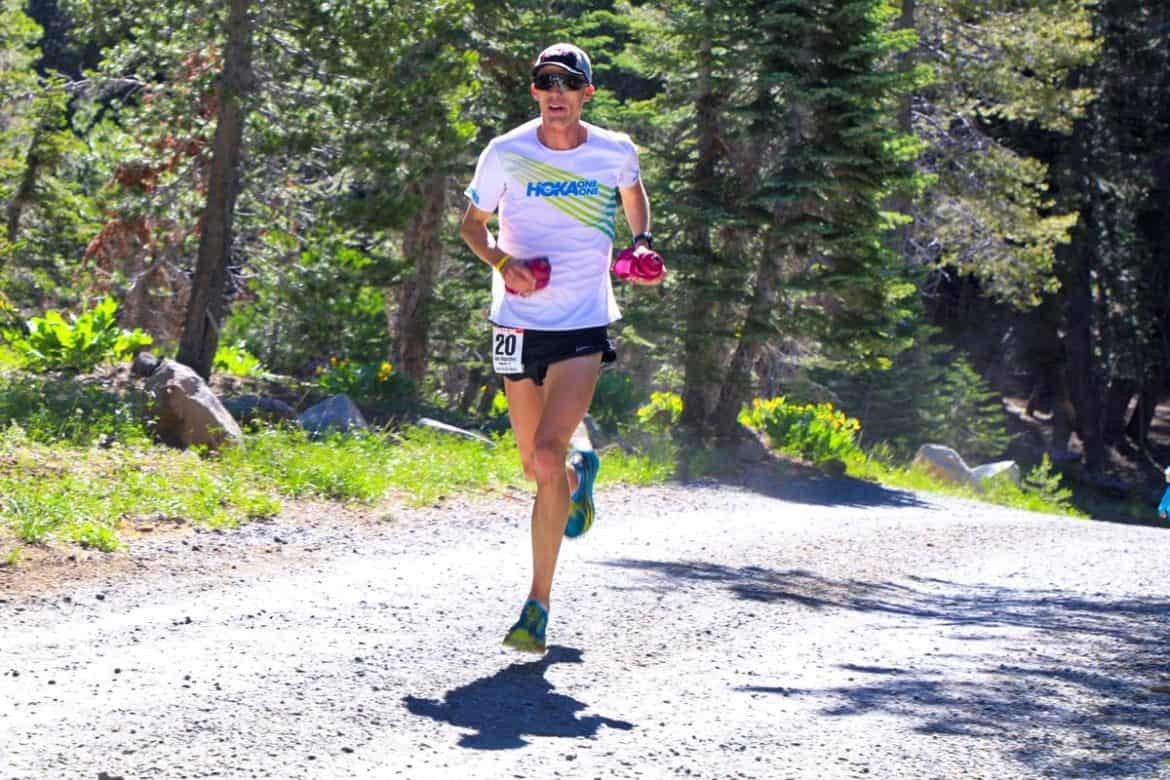
The runner sat in the chase group (which included Galen Rupp, the eventual winner) for the first half of the race. That group was on pace for a sub-2:10 marathon, am ambitious pace for most of the runners.
Walmsley would fade, but not too much, averaging 5:10 miles and closing in 5:17. He finished ahead of some very impressive names like Jared Ward and Connor McMillan.
On Saturday, Rupp has made his fourth Olympic team, winning the 2020 U.S. Olympic Marathon Trials in 2:09:20. Second place went to first-time Olympic qualifier Jake Riley, and third to five-time Olympic qualifier, masters runner Abdi Abdirahman. At 43, Abdirahman is also the oldest American ever to qualify for the Olympic marathon.
by Madeleine Kelly
Login to leave a comment
2028 US Olympic Trials Marathon
Most countries around the world use a selection committee to choose their Olympic Team Members, but not the USA. Prior to 1968, a series of races were used to select the USA Olympic Marathon team, but beginning in 1968 the format was changed to a single race on a single day with the top three finishers selected to be part...
more...Tokyo Marathon Canceled for General Runners
The Tokyo Marathon Foundation said it will cancel the running event for non-professional runners as the coronavirus outbreak pressures cities and institutions to scrap large events.
Some 38,000 runners have registered for the race scheduled on March 1, according to the Tokyo Shimbun, which reported on the cancellation earlier.
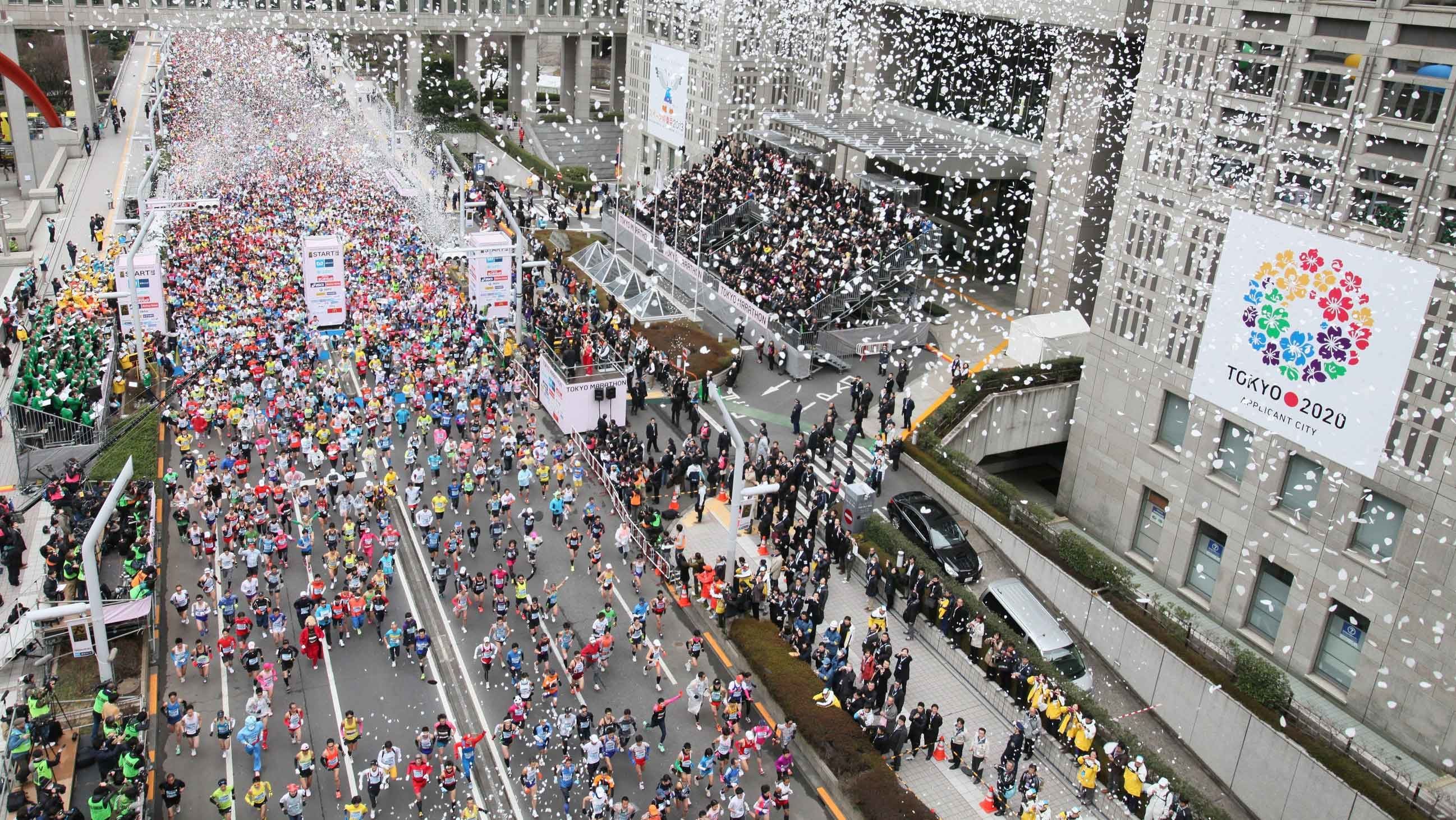
“The cancellation is disappointing,” said Akari Terrell, who was planning to compete on the day. “This time, it can’t be helped.”
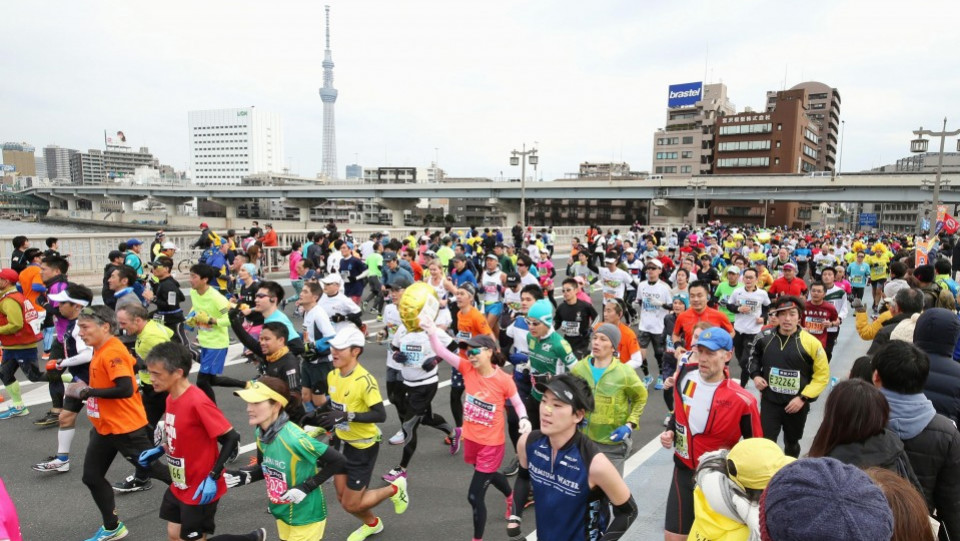
Competitive races will still be held, as the Tokyo marathon is an Olympic trial race for professional runners. Last week, residents from China were asked to refrain from running in the race.
Major events have been called off or postponed in recent months due to the virus, including the Hong Kong Sevens international rugby tournament, as well as the annual Singapore Yacht Show.
Japanese Prime Minister Shinzo Abe in February had repeatedly said the 2020 Olympics would not be canceled or postponed despite fears about the novel coronavirus that has infected tens of thousands and cast a shadow over travel and tourism in Asia.
by Shiho Takezawa
Login to leave a comment
Tokyo Marathon
The Tokyo Marathon is a world-renowned annual marathon held in Tokyo, Japan. As one of the prestigious Abbott World Marathon Majors, it attracts elite and amateur runners from around the globe. The race holds World Athletics Platinum Label status, recognizing its high competitive standards, top-tier organization, and international appeal. Sponsored by Tokyo Metro, the Tokyo Marathon has grown into one...
more...Chinese athletes forced to train in isolation due to coronavirus
Chinese athletes preparing for Tokyo 2020 have been forced to train in isolation due to the coronavirus crisis.
The Olympic hopefuls are being kept "behind closed doors" around the country, an official told Xinhua.

Coranavirus has killed more than 1000 people and spread to at least 27 countries since it originated in Chinese city Wuhan.
More than 40,000 people have been infected and the World Health Organization has declared a global emergency.
"Athletes are training behind closed doors in camps in various domestic and overseas cities in preparation for the Olympic Games and qualifying tournaments," said Liu Guoyong, the vice president of the Chinese Olympic Committee (COC).
"Up until now, no athlete from the national team has reported to be or is suspected of being infected with the virus.
"We will do our best to prevent all athletes from becoming infected."
The COC has been in contact with the International Olympic Committee (IOC) regarding the participation of Chinese athletes in Tokyo 2020 qualifiers, Liu said.
This comes after China's women's football team were kept in quarantine in Brisbane after arriving in Australia for an Olympic qualification tournament.
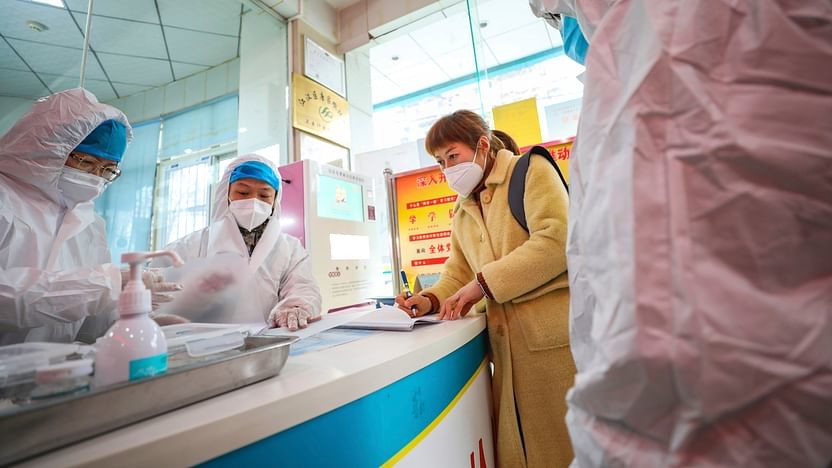
The squad had been in Wuhan, where the event was due to take place before the virus forced its move.
Four players were unable to leave China at all, including experienced midfielder Wang Shuang, with the tournament schedule this month re-jigged.
Liu added that Chinese athletes would have special arrangements for accommodation and transport.
"There will be over 100 Olympic qualifying tournaments around the world between February and April," he said.
"Hopefully the Chinese athletes can prepare well and claim more Olympic berths.
"The IOC has asked various international sports federations to provide all possible assistance and convenience to Chinese athletes."
The World Athletics Indoor Championships, initially scheduled for March in Nanjing, is the most high-profile sporting event to be postponed because of the virus so far. It has been delayed by a year until March 2021. The Hong Kong Marathon was also cancelled as well as many other events.
The opening test event for the Beijing 2022 Winter Olympics, an Alpine Skiing World Cup in Yanqing, was also cancelled.
Other sports affected include boxing, football, wrestling, basketball, tennis, hockey, badminton, diving, equestrian, golf and biathlon.
German Olympic Sports Confederation President Alfons Hörmann described the virus as the "greatest threat" to Tokyo 2020, with Japan one of the countries with confirmed cases.
This year's SportAccord World Sport and Business Summit in Beijing, scheduled for between April 19 and 24, is also at risk.
"We will keep a close eye on the development of the situation to decide when sporting events can be resumed," Liu said.
Login to leave a comment
Some reaction to the cancelling of the Standard Chartered Hong Kong Marathon due to the Coronavirus
Public health is our top priority. To support the government’s epidemic prevention efforts, the organiser cancelled the Standard Chartered Hong Kong Marathon originally scheduled for February 9. Entry fees will be fully refunded with details to be announced shortly.
Local and international racers offer their thoughts as some 70,000 people deal with the fallout and lost training time

Here was some of the reactions:
Gone Running’s Peter Hopper, who runs a local group which has been helping numerous runners prepare for the race, said this as the news reached those training for the marathon.
“It's of course really sad that it has been necessary to cancel the Standard Chartered,” said Hopper, who has been holding weekly training sessions for the race. “I know how people feel after training diligently leading up to this and it is a big disappointment. However, at this stage, not knowing how serious the coronavirus can be, it is better to err on the side of caution. I am sure it was not an easy decision to make.”
Mainland Chinese runners have already faced a wave of cancellations with the upcoming Wuhan and Wuxi marathons axed and others scheduled as far ahead as June provisionally suspended. The overall reaction has been that of understanding, despite many runners having already booked hotels and plane tickets.
“I was ready to run for my third year and did not think that [the race] would be cancelled not because of HK separatists making trouble, but because of an epidemic. I have just cancelled my flights and hotel,” wrote one.
A Weibo running account had similar comments, including one which stated, “I would never have thought this race would be cancelled because of this reason.”
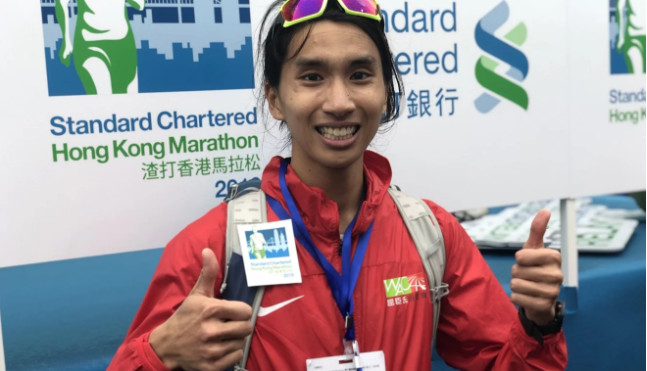
Bhoovarahan Desikan, 52, was planning on having the 2020 edition be his 100th marathon. His first marathon was in Hong Kong in 2005 and the 2020 race would have been his 15th. He ran marathons in Seoul, Moscow, Shenzhen and Taipei all last year. He said he “fully understands” the reason for cancellation and has no complaints, and will look to another race in the near future.
“We can’t control everything in life,” said Desikan, who was going to run with a number of friends from his running group, which is based out of Tung Chung. “As long as I am fit and alive to run, there will always be a marathon around.”
Hong Kong runner Christy Yiu Kit-ching, who was targeting a top five finish in hopes of qualifying for the 2020 Summer Olympics in Tokyo before she had to pull out due to an injury, said public health and safety are paramount to the race.
“Although I have an foot injury and decided not to participate few weeks before, as one of the Hong Kong runners, I still feel disappointed with the cancellation of (the marathon),” she said.
Yiu, 31, who competed in the 2016 Summer Olympics in Rio de Janeiro, said the race has been in question for multiple reasons since this summer.
“In fact, many of us has worried about the cancellation or the arrangement of (the marathon) since last year when the draw lots was launched. I’m sure everyone has noticed that lots of competitions have also already been cancelled due to the the social violence.”
Ireland’s Caitriona Jennings, who competed for her country in the marathon during the 2012 Olympics in London, and now lives in Hong Kong, was planning on running the race February. She echoed Yiu’s statement that this was the right decision by the government.
Amy Mumford, who is a mother of five and cancer survivor, said running and competing gives her a formidable sense of self and empowerment. She said she has been getting up at three or four in the morning out in Clearwater Bay as part of her training and regular running routine.
“The coronavirus is spreading rapidly and it seems unavoidable to have had to cancel the Standard Chartered Marathon,” said the 41-year old who recently won the China Coast Marathon. “There will be many people as devastated as I am. All the training, compromise, nutrition and emotion involved. I think the most important aspect is everyone’s safety and health ... running makes my heart sing and for all those other runners out there, see you next year.”
Hong Kong expat, Aaron Tennant who is originally from the UK and was hoping to break the four hour barrier in his race, said he is definitely dealing with mixed emotions given the amount of effort he had put into his preparation.
“It is frustrating to see the training go to a waste,” said the 30-year-old. “But I completely understand the decision to cancel the marathon. I will look for an alternative, and so will the 70,000 other runners.”
Login to leave a comment
HONG KONG MARATHON
The Hong Kong Marathon, sponsored by Standard Chartered Bank, is an annual marathon race held in January or February in Hong Kong. In addition to the full marathon, a 10 km run and a half marathon are also held. Around 70,000 runners take part each year across all events. High levels of humidity and a difficult course make finishing times...
more...With the 2020 Olympics approaching in less than six months, Tokyo officials are calling for action to contain the coronavirus
With the 2020 Olympics less than six months away, there is some speculation about the possible risk from the rapidly-spreading coronavirus that has already resulted in the postponement or cancellation of at least four major international competitions.
Though the possibility of the Olympics being cancelled seems unthinkable, Tokyo City Governor Yuriko Koike was quoted yesterday by an Associated Press reporter as commenting: “With only 177 days to go and our preparations accelerating, we must firmly tackle the new coronavirus to contain it, or we are going to regret it.”
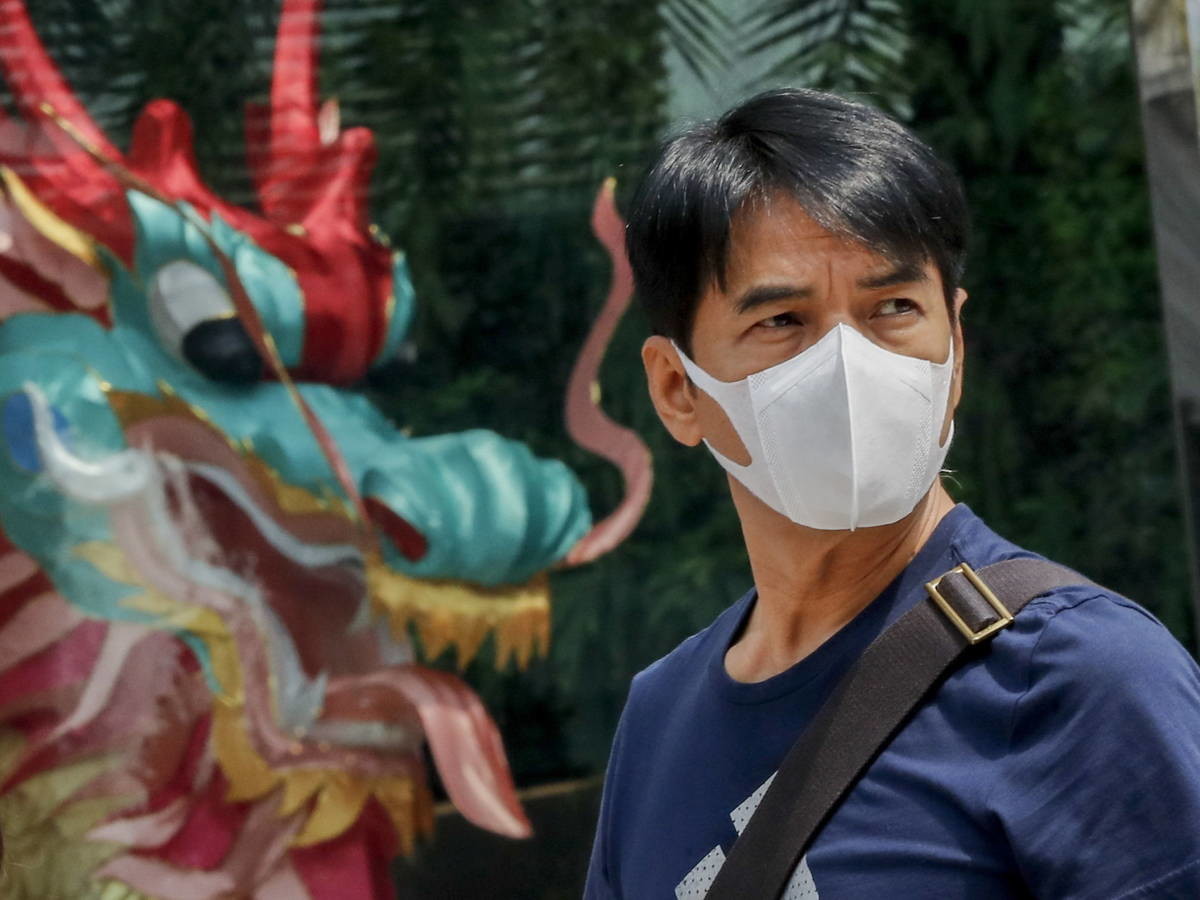
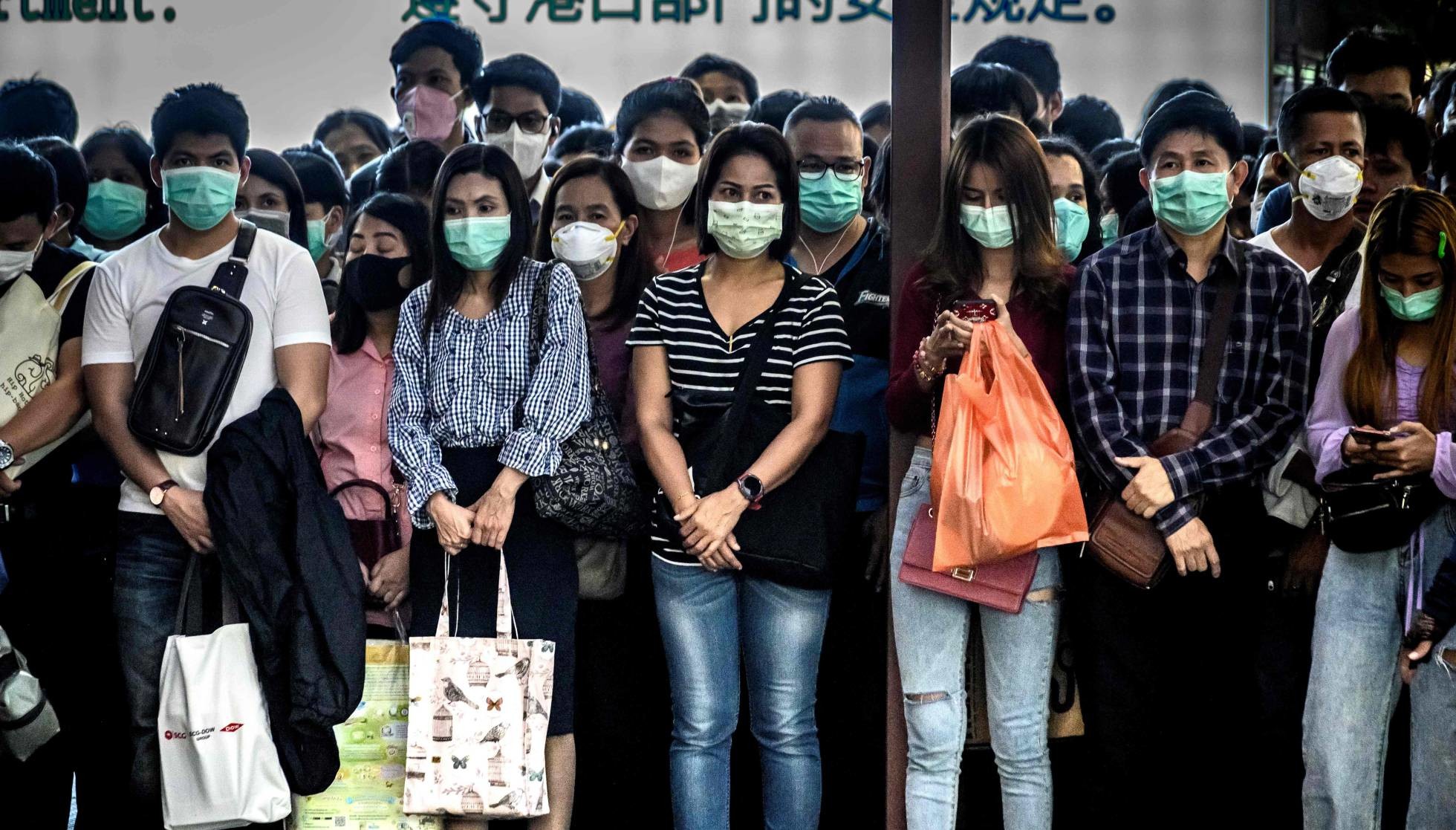
The Olympics are scheduled to take place in Tokyo and Sapporo from July 24 to August 9. The Asian Indoor Championships (previously scheduled for February 12 and 13 in Hangzhou, China), Hong Kong Marathon (February 8) and the Gaoligong UTMB ultra (March 21 to 23 in Yunnan, China) have all been cancelled, and the World Indoor Athletics Championships, previously scheduled for March 13 to 15 in Nanjing, China, have been postponed for one year to March, 2021.
According to the World Health Organization, as of yesterday there were 6,065 confirmed cases of coronavirus in 16 countries, almost 6,000 of them in China. Some sources claim there have been 170 deaths, and there have been no deaths outside of China. There are currently three confirmed cases in Canada. Each person infected with the virus could potentially transmit the infection to two or three other people.
Many international public health authorities are downplaying the risk of transmission so as not to induce panic, while discouraging non-essential travel to Wuhan. Meanwhile, sales of surgical masks to reduce the risk of transmission have skyrocketed in many countries.
The postponement of the World Indoor Championships has interesting implications for the Olympics. With the new World Rankings system, championship meets give athletes the chance to accrue points towards Olympic team qualification, giving those who compete at World Indoor Championships a leg up on their compatriots who do not. The one-year postponement means that opportunity is no longer available before the Olympics, so the effect of the postponement is to level the playing field somewhat (assuming the Olympics go ahead as planned).
by Anne Francis
Login to leave a comment
Tokyo 2020 Olympic Games
Fifty-six years after having organized the Olympic Games, the Japanese capital will be hosting a Summer edition for the second time, originally scheduled from July 24 to August 9, 2020, the games were postponed due to coronavirus outbreak, the postponed Tokyo Olympics will be held from July 23 to August 8 in 2021, according to the International Olympic Committee decision. ...
more...Boston marathon champion Lawrence Cherono said Tuesday that representing Kenya at the Tokyo Olympics will be a big achievement, winning gold will be dream come true
Lawrence Cherono, 31, said his main hurdle to securing a ticket to the Olympics will be in defending his title at the Boston Marathon in April.
However, he hopes to make the provisional team, set to be named in February for the Olympics.
For a country that has over 20 elite runners who have posted a faster time of 2:06.00, picking the best three will be a hard task for the coaches' selector panel.
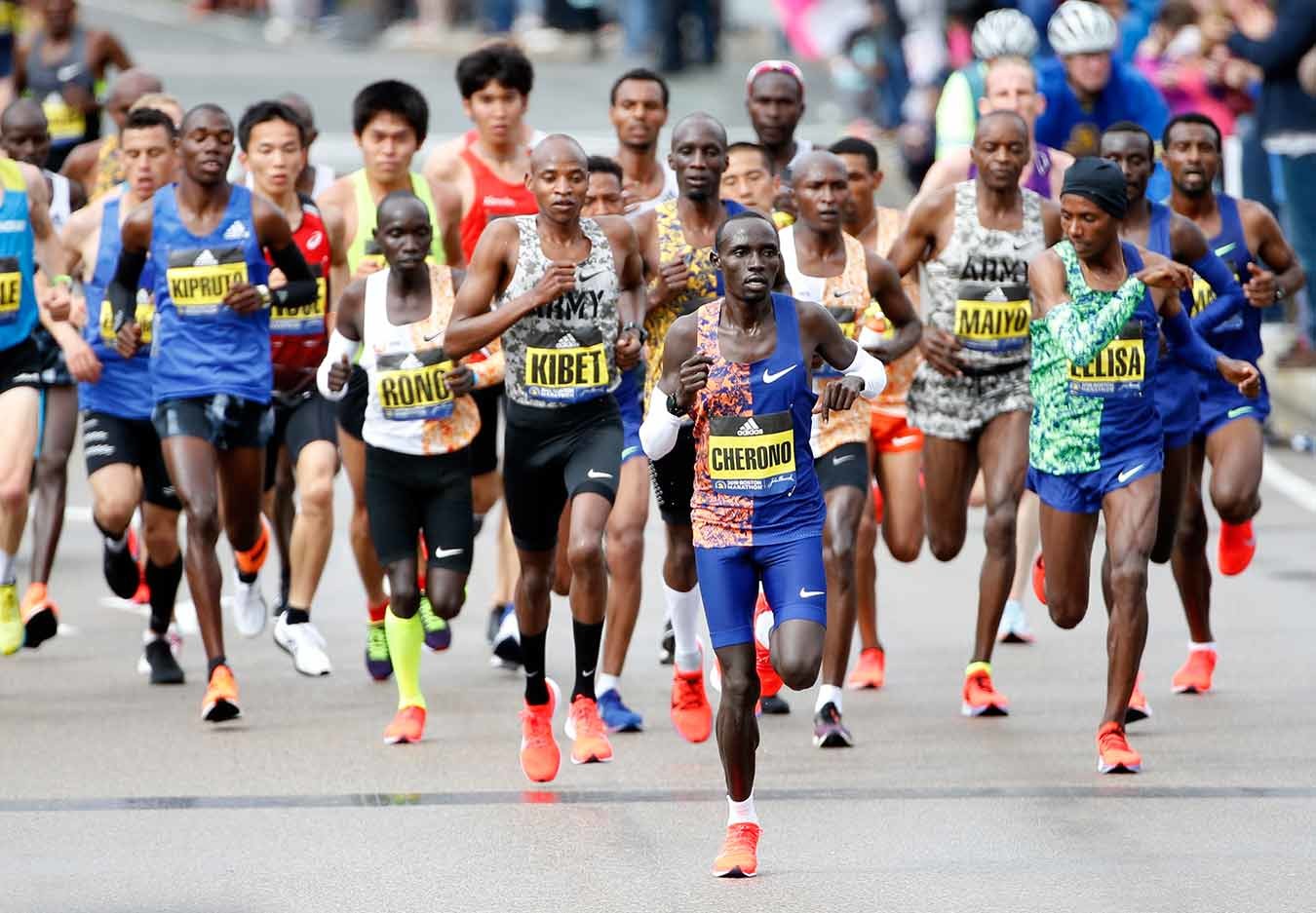
But Cherono has showed a strong desire to represent the country and believes his good performance in the last season will convince the coaches to offer him his maiden show for the country at the global championship.
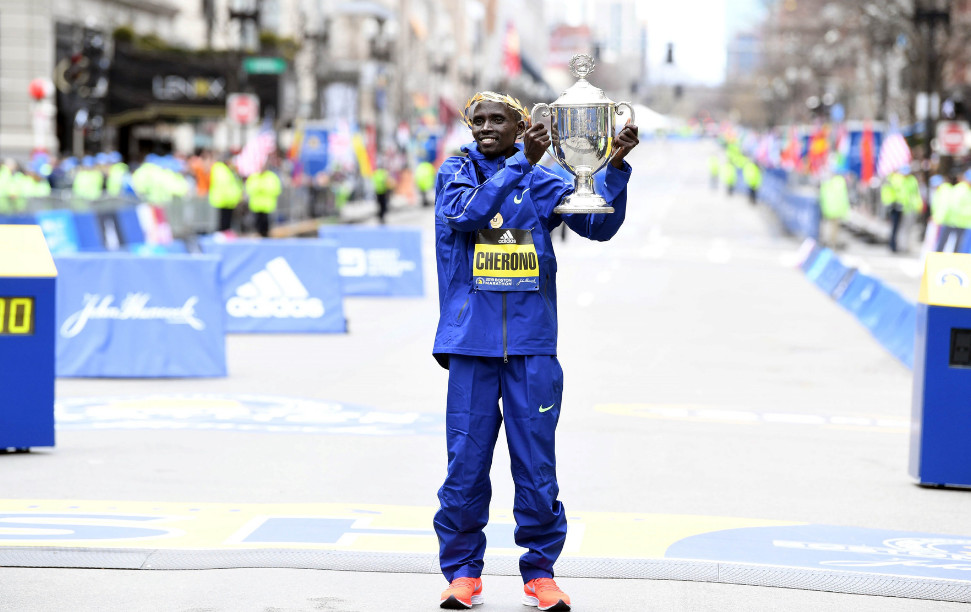
"The competition for position in the Kenya team is tough. With all my accomplishments, I have not been lucky to represent the country at the Olympics. It will be a great honor if I will be part of the team to Tokyo," Cherono said.
Cherono's debut in marathon was in Seville, Spain where he won in 2:09.39.
He then moved to China and was second at the Lanzhou marathon clocking 2:12.33 back in 2015. Later that year he finished seventh at the Shanghai marathon with a time of 2:14.22.
In 2016, he was second at the Hengshui Lake marathon, won in Prague marathon and claimed the silver medal at the Hong Kong city marathon. He has also finished first in Honolulu, Amsterdam, Rotterdam, Chicago and Boston.
If winning in Boston again, Cherono will secure his ticket to Tokyo to join defending champion Eliud Kipchoge, who has already been confirmed for the Olympics.
But it will not be a walk in the park for Cherono in Boston. He will be up against 2018 Boston winner Yuki Kawauchi of Japan, former World marathon champion Geoffrey Kirui who has a personal best of 2:06:27 he recorded at the 2016 Amsterdam marathon.
Also chasing the title in Boston is the 2012 Olympic champion Stephen Kiprotich of Uganda.
Login to leave a comment
Tokyo 2020 Olympic Games
Fifty-six years after having organized the Olympic Games, the Japanese capital will be hosting a Summer edition for the second time, originally scheduled from July 24 to August 9, 2020, the games were postponed due to coronavirus outbreak, the postponed Tokyo Olympics will be held from July 23 to August 8 in 2021, according to the International Olympic Committee decision. ...
more...Hong Kong canceled its largest marathon because of the coronavirus threat to the city
The Standard Chartered Hong Kong Marathon, originally scheduled for Feb. 8 and 9, will be scrapped for the first time since the bank began sponsoring it in 1997. The event involves 70,000 people this year and the government “believes it has to be canceled,” Lam said on Saturday as she raised the response level to “emergency.”
Hong Kong will face challenges on “multiple fronts” in 2020, Lam said, citing protests that have rocked the city since June and the spread of the coronavirus from China to at least 11 other countries.
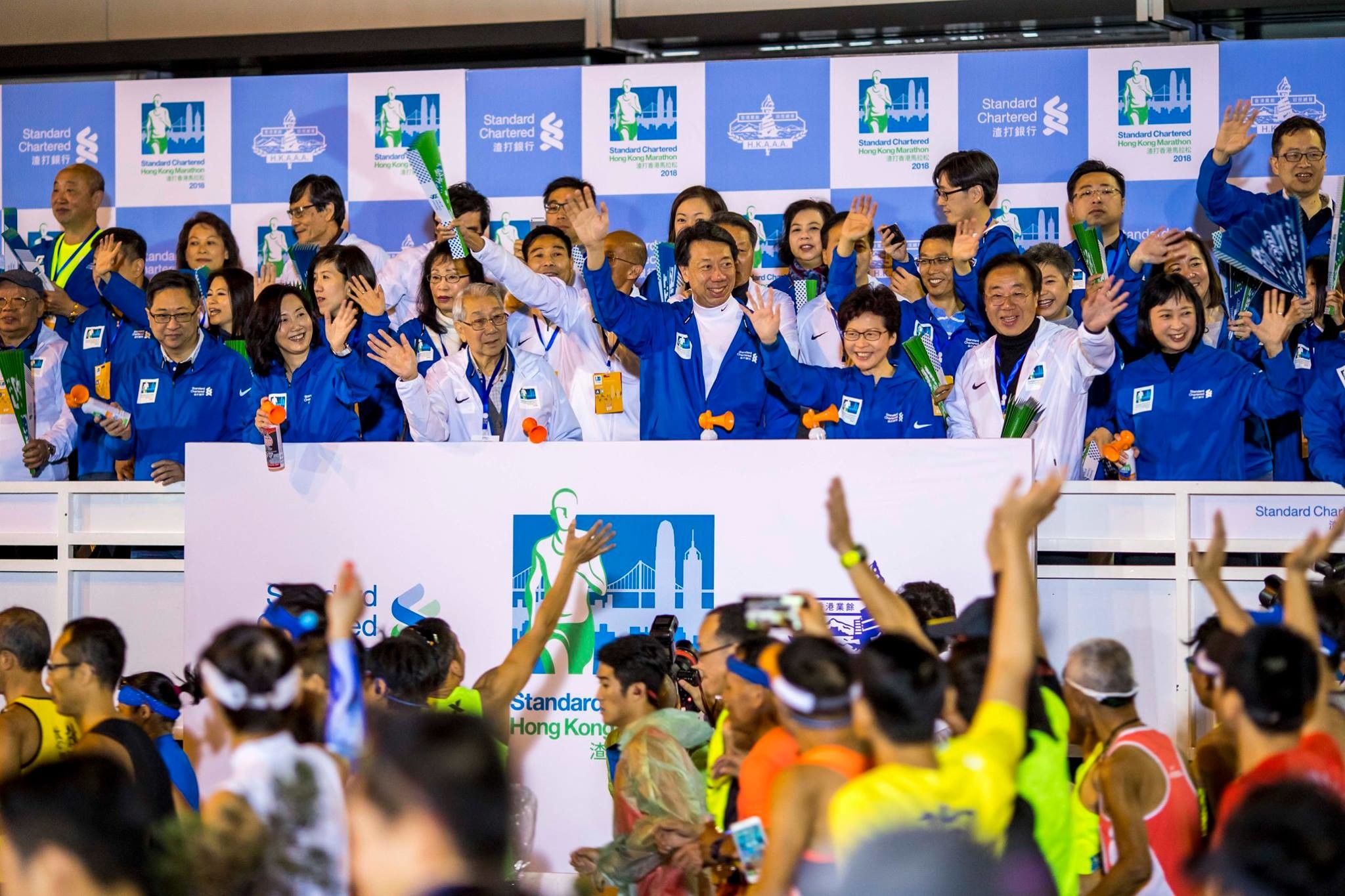
“More protests and violence may come,“ she said. “An economic recession may also be something we cannot avoid. The epidemic will make matters worse for many industries.”
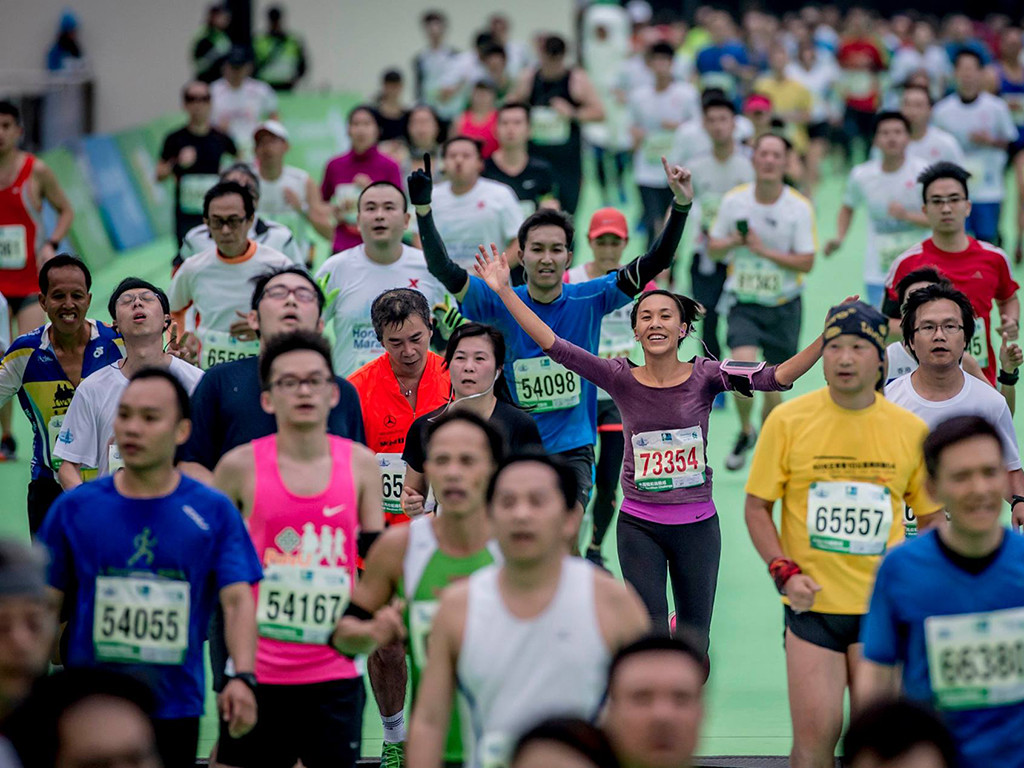
The government also extended school holidays for non-tertiary students to Feb. 17, and will indefinitely halt flights and rail services to the Chinese city of Wuhan, where the coronavirus originated, she said.
Lam’s comments came hours after she returned to Hong Kong from the World Economic Forum in Davos, Switzerland. She said she was in touch with advisers while traveling and denied criticism that her trip led to a delay in taking action against the virus.
“The government will continue monitoring the situation and be open to suggestions from various sectors,” Lam said. “The Chief Executive and Financial Secretary will roll out relief measures for industries when necessary.”
Lam also said Hong Kong will source masks and seek help from China’s State Council to increase the local supply, after pharmacies across the city sold out the stocks. In contrast, her government had enacted a rare emergency rule several months ago to impose a ban on face masks as part of a crackdown on protesters.
The virus, which started in December in a seafood and poultry market in Wuhan, poses a threat to Hong Kong’s economy, which is particularly vulnerable after seven months of protest that tipped the economy into recession in the third quarter. Lam has withdrawn a proposal that would’ve allowed for extraditions to China and triggered millions to rally against it, but protests have continued against abusive police tactics and eroding democratic freedoms.
by Blake Schmidt, Natalie Lung, and Fion Li
Login to leave a comment
HONG KONG MARATHON
The Hong Kong Marathon, sponsored by Standard Chartered Bank, is an annual marathon race held in January or February in Hong Kong. In addition to the full marathon, a 10 km run and a half marathon are also held. Around 70,000 runners take part each year across all events. High levels of humidity and a difficult course make finishing times...
more...The Hong Kong Marathon prize money competes with major world marathons
The men’s and women’s winners of next month’s Standard Chartered Hong Kong Marathon will each receive a cash award of US$65,000 (HK$507,000) from the organizers, a figure which does not lag far behind other major races around the world.
Although the amount remains the same as last year, the annual Hong Kong showpiece, to be held on Sunday, February 9, is still attractive to many distance runners from marathon powerhouses such as Kenya and Ethiopia, with all top 10 finishers to be rewarded.
The runner-up will receive US$30,000 with US$15,000 going to the third-placed finisher, down to US$1,000 to the runner who finishes 10th.
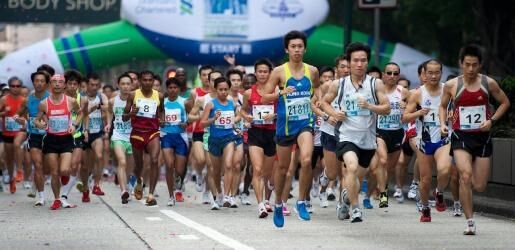
There will be an additional bonus for runners who can break the 42.195-kilometer course record starting from Nathan Road in Tsim Sha Tsui to the finish in Victoria Park on the Island side. But after Barnabus Kiptum, of Kenya, set an impressive time of two hours, nine minutes and 20 seconds for the men’s in 2019 and Volha Mazuronak of Belarus’s 2:26:13, which was also set last year, it would be a touch challenge to collect that extra US$12,000 (HK$93,600) cash bonus.
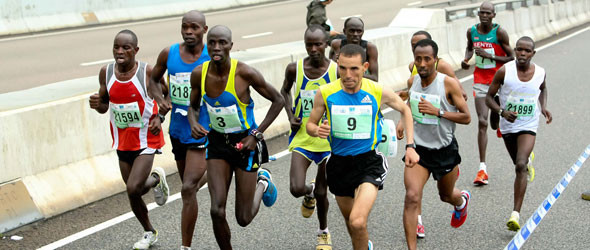
But if they can’t beat the course record, there is still be a consolation prize of US$10,000 if a runner can finish below 2:10 in the men’s and 2:28 in the women’s.
Local runners may struggle to beat the overseas legions to collect the cash awards, but the best Hong Kong runner is still rewarded with a cash prize of US$3,400 (HK$26,500), down to US$200 for the 15th place finisher.
Hong Kong runners may also find it difficult to set personal bests because of the difficult course, which involves running up to the top of Stonecutters Bridge from the 10km mark before going through the Western Harbour Tunnel when they reach the Island side. But it serves as a good opportunity to secure some prize money.
In Asia, the 2020 Tokyo Marathon, which will be held a month after the Hong Kong event, offers US$98,000 to the men’s and women’s champions as one of the six marathon majors in the world. The Seoul International Marathon, also in March, rewards each winner US$80,000, provided they can finish below 2:10 for the men’s and 2:24 for the women’s. If not, the two winners receive US$40,000 each.
The Dubai Marathon in UAE once offered a stunning cash prize of US$200,000 for the winners, but the 2020 event only sees a top prize of US$100,000, which is the same amount offered by the two Majors in the United States – the Chicago and New York City Marathons. The Boston Marathon, which began in 1897 and usually takes place on the third Monday of April, hands out the biggest cheque of US$150,000 to the 2020 champions.
At least 4,000 marathon runners have entered the IAAF “Gold Label” event in Hong Kong, including home favorite Christy Yiu Kit-ching who aims to get into the top five in the women’s category to secure her berth for the 2020 Tokyo Games.
by Chan Kin-wa
Login to leave a comment
HONG KONG MARATHON
The Hong Kong Marathon, sponsored by Standard Chartered Bank, is an annual marathon race held in January or February in Hong Kong. In addition to the full marathon, a 10 km run and a half marathon are also held. Around 70,000 runners take part each year across all events. High levels of humidity and a difficult course make finishing times...
more...China dominates as You Peiquan and Xiang Fuzhao take titles at the Vibram Hong Kong 100
Mainland Chinese runners dominate the field on both the men’s and women’s side
China’s top trail runners were certainly not deterred from coming to Hong Kong given the city’s ongoing political protest scene, as the top spots was claimed by a mainland runner in the men’s and women’s categories at the HK100, a 103 km course that is based around the city’s famous MacLehose Trail.
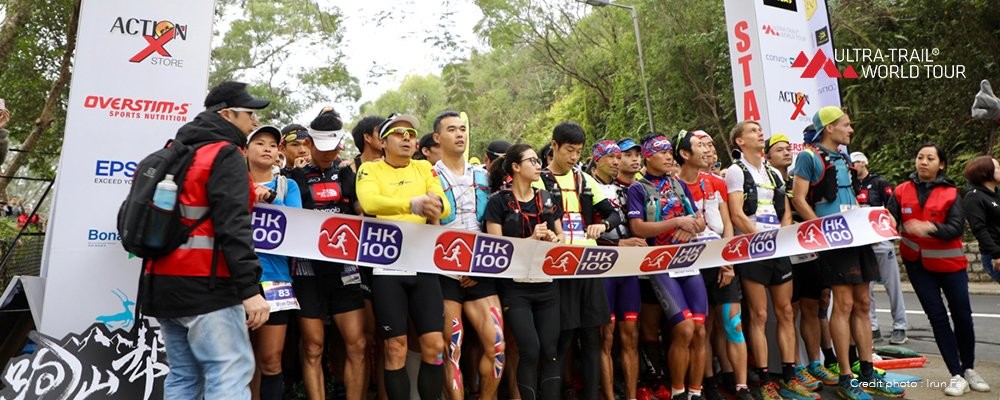
You Peiquan won the men’s division with a time of 10:00:17, while Xiang Fuzhao won the women’s division with a time of 11:28:59. Yo led for most of the race in his attempt and set a new course record. He said he has only been competing for two years and has only now figured out how to master his nutrition for races. Yo also said he doesn’t have a coach, runs a lot on his own and mostly does laps on an empty stomach on a track to train.
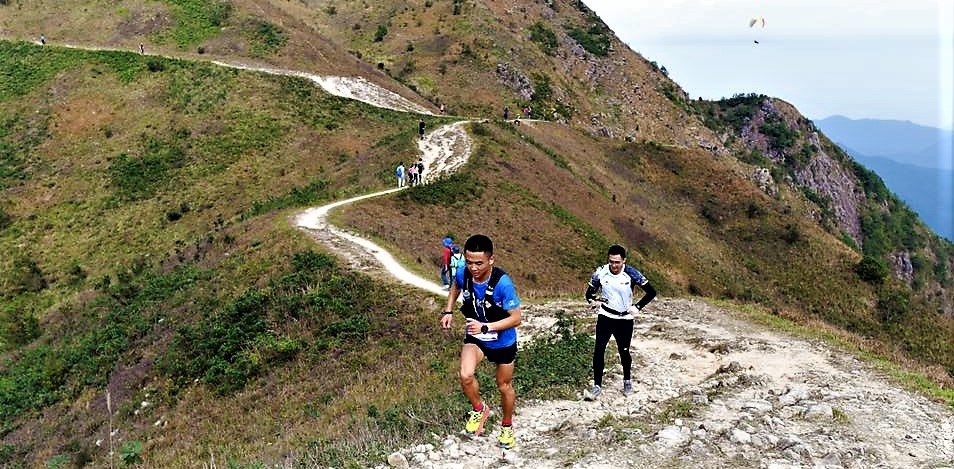
“I started off very excited and might have overdone it,” said Yo through translation, who came first in the Captsone 60K and the Devil’s Ridge 60K last year. “For the last two hills I basically had to walk.”
China’s Jing Liang came second with a time of 10:33:10, and compatriot Deng Guomin with a time of 10:39:28, came third for the men. The race features less than 100 racers over two divisions.
Xiang, who finished second last year in the HK100 in more than 12 hours, said she felt good at the halfway point and then kept building from there.
“I said at the press conference that I would like to win in my third year,” said Xiang, who beat her time from 2019 by around 58 minutes. “This year I wanted to take it a bit more aggressively and at the midpoint I was already 20 minutes ahead. A lot of running is a mathematical game I think, looking, assessing and adding your times, and after that it was all about catching more time as I went on.”
She said this year came down to having more people help her prepare for the race.
“A lot of it was having a sponsor and a lot of support from everyone around me, and accommodation and training. And most importantly today I really wanted to be the champion.”
by Patrick Blennerhassett
Login to leave a comment
Vibram Hong Kong 100 Ultra trail
The Vibram® Hong Kong 100 is an ultra endurance race that takes place in Hong Kong. The 103km course starts in Pak Tam Chung on the Sai Kung Peninsula and covers some of the most beautiful scenery in Hong Kong, including remote and unspoilt beaches, ancient forests, nature trails, reservoirs and steep hills. The course is based around Hong Kong's...
more...Ultra runner Jared Hazen, is focused on winning the Vibram Hong Kong 100km ultramarathon
Jared Hazen is focused on winning the Vibram Hong Kong 100km ultramarathon, starting at 8am on Saturday, by leading the race as early as possible. The American speedster believes that although it is possible to podium by running conservatively, runners need to push from the start to come first.
“I’ve moved up, late in races, to a podium a spot. But trying to win is playing a whole other game, you have to be at the front of race the whole time,” Hazen, 25, said. “You're not going to luckily sneak your way into first place.”
The HK100 is the first race of the Ultra-Trail World Tour (UTWT). It is one of five UTWT races in Asia, including the Ultra-Trail Mount Fuji. It starts in Sai Kung and snakes across the New Territories to Tai Mo Shan.
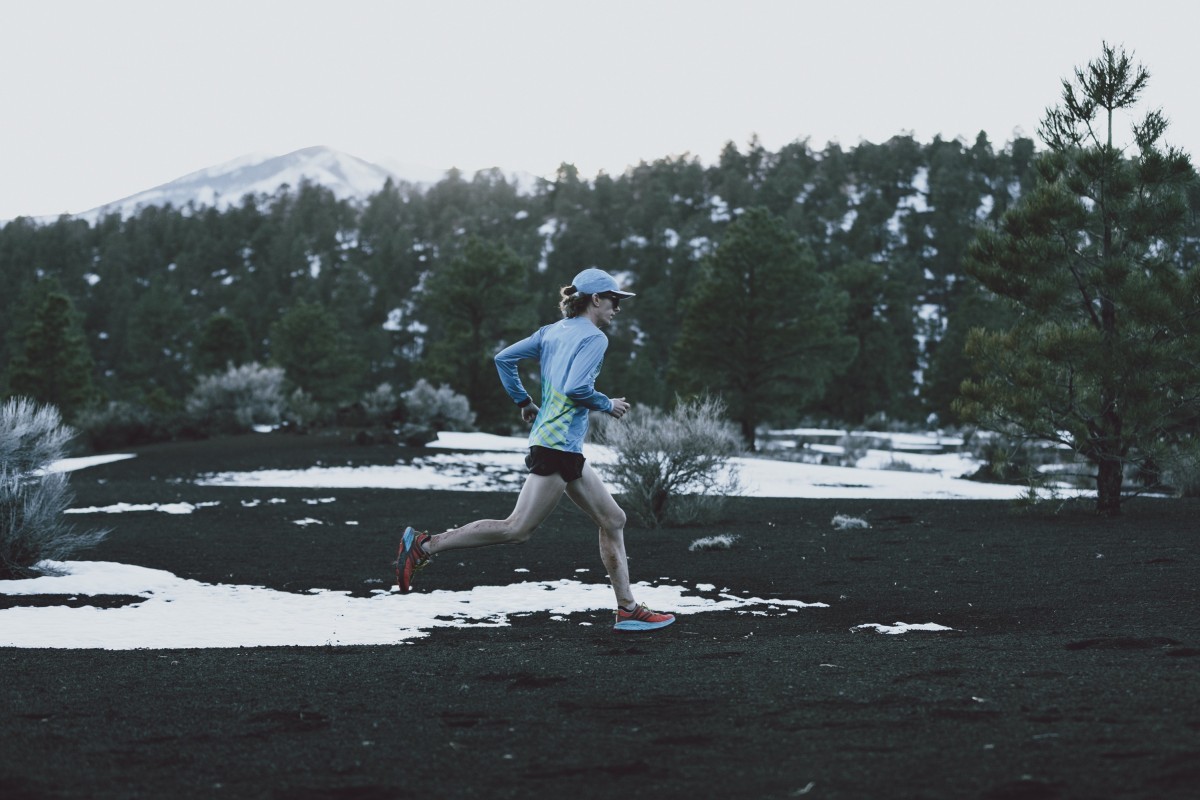
Hazen said in any race, the reports you get in checkpoints about how far other runners are ahead of you can be inaccurate, making it hard to overtake them: “It's better to manage yourself while in the lead.”
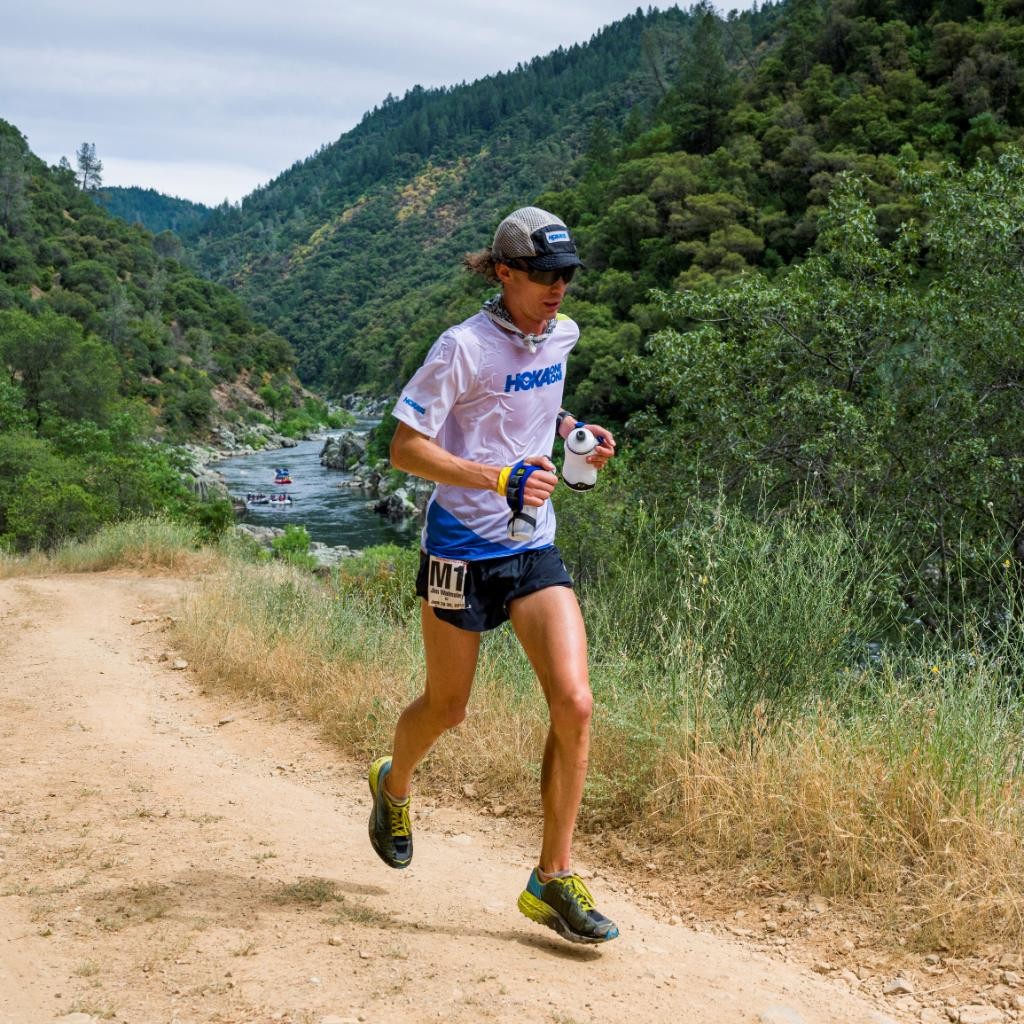
However, pushing from the start is a risk as it is all or nothing, and you can blow up.
“I think it's OK for it to be nothing on some days,” he said. “But you have to hold yourself accountable to a certain extent. Sometimes it was stupid and you blew a chance. But you've got to give yourself a chance. Can you walk away with your head held high?”
Hazen added that although American runners have the reputation for going out hard, with an all or nothing attitude, it was only recently that the Europeans earned the same reputation: “I feel like it’s flip-flopped. But it’s because some faster American athletes have got into the sport recently.”
Owing to the HK100’s UTWT status, the start line is packed with talent. Foreigners, like Hazen, travel to Hong Kong and many unknown but equally talented mainland Chinese runners also attend. The past two editions have been won by mainland Chinese men and women.
Hazen said he knew the Chinese runners by name only. Usually, he is familiar with the field because he races the same events in the US so often. He knows his competitors’ styles, strengths and weaknesses.
“So this will be new. But that is what this year is about a little bit, stretching myself and racing new runners,” he said.
“I've been doing the same races for too long. There are some really cool races on the UTWT and I just want to participate in that more. I want to be more of an international runner and not a US runner,” he said. He is also targeting the Transvulcania in La Palma, Spain, in May and the CCC in Chamonix, France, in August.
Hazen is also returning to the Western States 100 mile (161) this summer, where last year he ran the second-fastest time ever. It would have been the course record had his training mate Jim Walmsley not beaten him that day and set the record.
by Mark Agnew
Login to leave a comment
Vibram Hong Kong 100 Ultra trail
The Vibram® Hong Kong 100 is an ultra endurance race that takes place in Hong Kong. The 103km course starts in Pak Tam Chung on the Sai Kung Peninsula and covers some of the most beautiful scenery in Hong Kong, including remote and unspoilt beaches, ancient forests, nature trails, reservoirs and steep hills. The course is based around Hong Kong's...
more...

